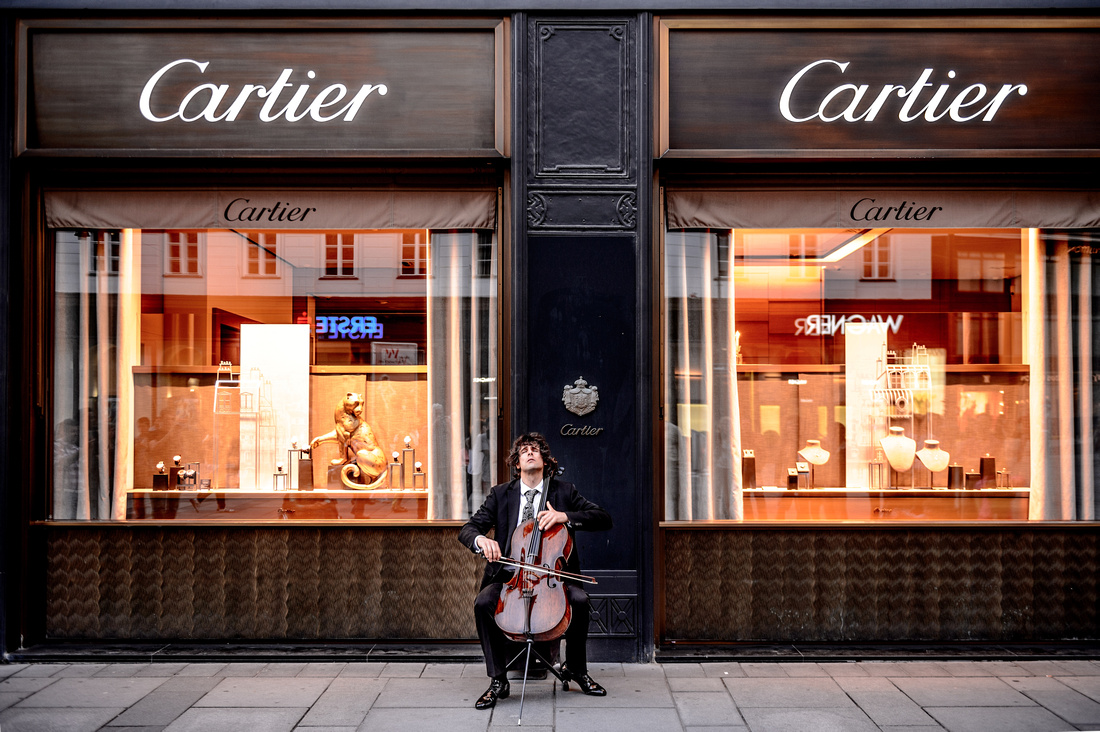
(Above: A street musician performs Beethoven's Cello Sonata No. 3 in downtown Vienna.)
VIENNA — It was Tuesday date-night at the Vienna Museum of Applied Arts, or MAK, and the seduction was underway. A saxophonist in a corner of the lobby was diving deep inside his bebop groove that was accompanying the silent film short playing on the large monitor overhead, as a college-aged trio of modern-dance artists performed for a gathering crowd.
A sucker for living art, I fell easily under its spell.
Next evening a trio of classical musicians performed a concert of avant-garde music, which I almost comprehended, at Reaktor, a dilapidated, turn-of-the-20th-century ballroom reborn as a multidisciplinary stage for cutting-edge art, music, film, literature and dance. During musical interludes I half-expected to hear a frog shower of hipsters cooing in ecstasy. But then I remembered. I was in Vienna.
Little compared, though, to the futuristic creation by the late Iraqi-born British architect Zaha Hadid, who shattered glass ceilings (no pun intended) to become the first woman to win her profession's acclaimed Pritzker Prize. To gaze at night at Hadid's Vienna University of Economics is to better understand what Architectural Digest described as her "explosion of fearless, impolite and aggressive talent."
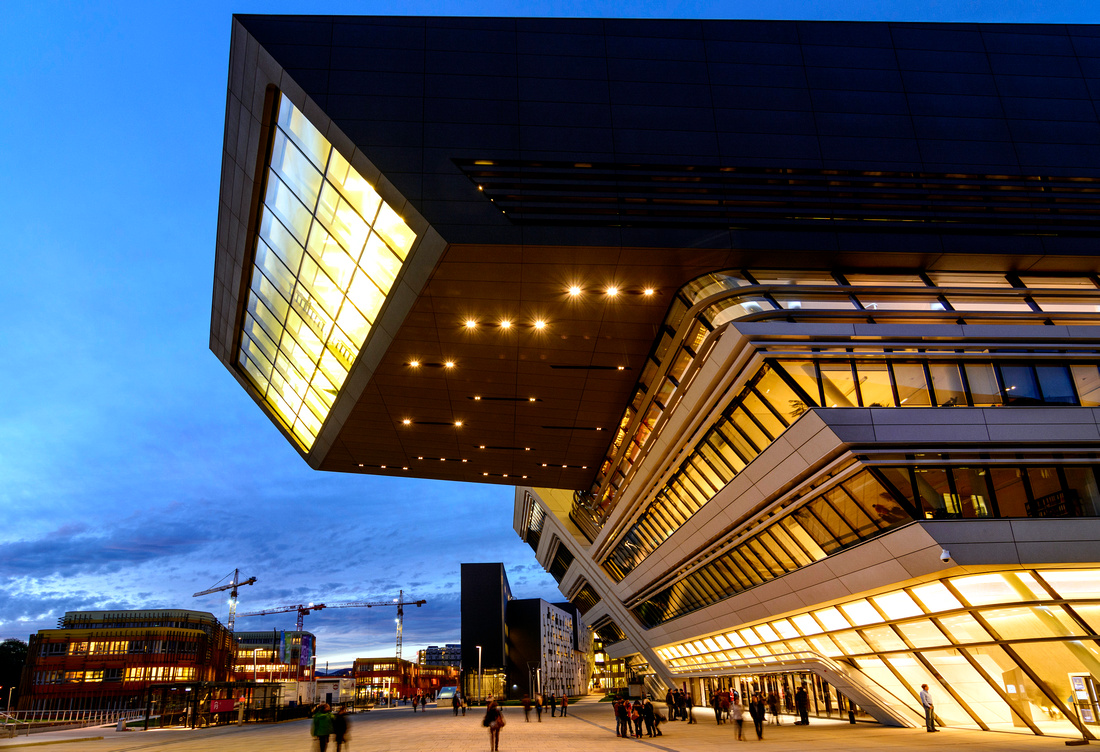
(Above: Pritzker Prize-winning architect Zaha Hadid's Vienna University of Economics. Austrian Tourism photo/Volker Preusser)
These experiences left me feeling young and invigorated. And keenly cognizant that I was not only in Europe but in one of the world's truly international, culture-defining cities. Equally important, they were a far cry from a city occasionally (and unfairly) perceived as too content to rest on its laurels. Specifically its mélange of first-in-class Baroque and Rococo palaces, as well as a musical heritage that boasts a handful of Western civilization's most ballyhooed classical composers.
The retired Australian couple I met the day before during the four-hour train from Prague to Vienna nodded in agreement when the subject came up. The amicable white-haired husband unfolded a map and pointed to the well-trod tourist attractions that helped make this bastion of waltzes the bee’s knees of Europe during the 18th and 19th centuries.
“Palace, palace, palace … cathedral, cathedral, cathedral,” he said rolling his eyes.
Considering the only palace in Australia is the Palace Cinema in Melbourne, a more insightful comment might have opined how Vienna — then and now — personifies the truly grand European capital. To feel this viscerally I had only to stand in the late-afternoon shadows of majestic Schönbrunn Palace. The Hapsburg family’s 640-year rule over half of Europe bit the dust in 1918 at the end of World War I. They left behind this 1,440-room Rococo refuge as Allied Powers began dismantling what remained of Europe’s biggest royal houses (plus the Ottoman Empire). The dual monarchy better known as Austro-Hungarian Empire, which had fought alongside Germany, was julienned like a carrot. Auf wiedersehen.
Ditto when gazing up at the imposing 13th-century Hofburg Winter Palace, formerly the Hapsburgs’ principal digs and today the workplace of the President of Austria. It was here from the palace's sweeping central bay that Austrian-born Adolph Hitler gave his conciliatory speech in 1938 in front of cheering Viennese crowds after Germany invaded and proclaimed its annexation of Austria.
Far gentler times are reflected in the eye-catching art nouveau facades that flatter the pleasant, upscale shopping districts of Kohlmart, Graben and Rotentum. Called Succession or jugenstihl (German for “young style”) in Austria, art nouveau decorates this carefully manicured cityscape with dignity, purpose and curvilinear beauty.
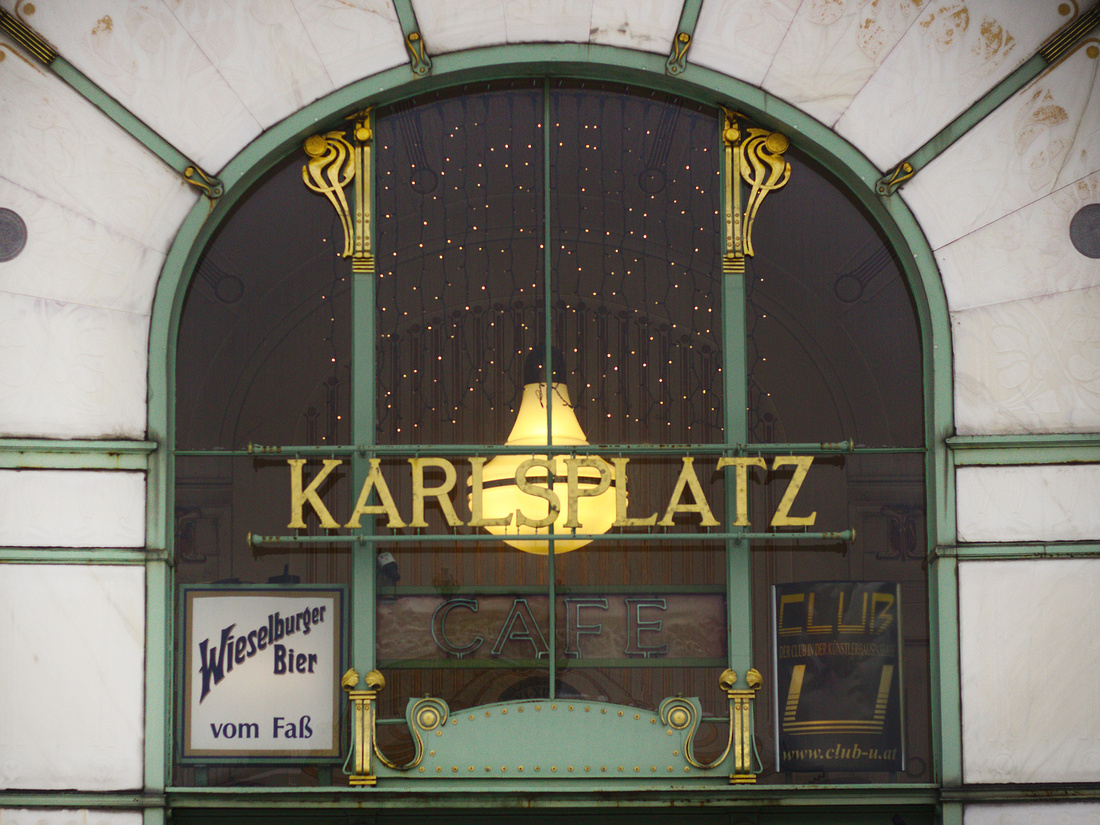
(Above: The Karlsplatz U-Bahn station was designed by Otto Wagner, the pioneering architect of Vienna's art nouveau era.)
II. 'NUDING UP'
On a human level Vienna offers a delightfully quixotic, mixed bag of observations. A surprising number of men, for example, sport '70s-style porn-staches, which might be some weird Freudian compensation for the fact that many Austrian males prefer to pee sitting down. Conversely, nowhere did I spy any adult female wearing ironically oversized sunglasses. Apparently grown-up Viennese women, unlike those in big-city America, do not dress as though they're starring in a romantic comedy for teens.
Five minutes spent inside any nightclub is sufficient proof that no one in this city can dance.
And if you think Vienna makes your butt look big, you're probably right. Fitness for Austrians, as a rule, begins in childhood — not with gym memberships but rather family treks on the national stair climber better known as the Alps. Perhaps this is why no one blinks an eye when "nuding up," local parlance for when people of all ages, including families and grandparents, sunbathe au naturel in public parks.
Guide/translator: "Do you wish for a little nuding up after lunch?"
Me: "Er, no."
High culture is literally everywhere — especially if you're keen on stepping back in time and stepping up in class. Bucket-list tourists eager to sample this city’s centuries-old devotion to artistic precision, for instance, typically flock like pigeons to witness the mad skills of the Vienna Boys’ Choir and the Spanish Riding School’s prancing Lipizzaners.
Day or night my preference for unpracticed hashtag truth instead found me leaning on this city’s legendary coffeehouses. Namely because it's near impossible to spend time in these lively, atmospheric venues without bumping into ghosts of Vienna’s — and, indeed, some of the world’s — most famous artists and intellectuals.
One evening at Café Frauenhuber, while enjoying artisanal cocktails and the Viennese-born chocolate heaven known as Sachertorte, it was fun imagining this mannered establishment as Mozart and Beethoven's nightspot of choice for performing new compositions in front of a live audience. No one would ever mistake this buzzing java den for its American counterpart — and not just because Vienna is among the last European cities that still permits smoking indoors. First, the waiters all wear tuxedos, a long-time tradition and required by Austrian law. Second, no one sits quietly alone in the corner with his nose buried in a tablet or laptop.
“A coffeehouse in Vienna — it’s life,” says Diane Naar, an English-born writer who has called this city home for nearly 40 years. “It’s where Viennese come for dinner, meet friends, have intellectual conversations. Look around — people are actually talking to one another; people who have only just met while sharing a table.”

(Clockwise from top-left: a coffeehouse worker prepares a cup of java; the near-sacred Sachertorte served alongside a dollop of crème fraiche at the Hotel Sacher; the buzz of a Viennese coffeehouse is palpably different than its counterparts in Europe and in the United States.)
A hunt for far more recent phantoms found us chowing down on Germknödel (fluffy, poppy-seed dumplings filled with warmed plum jam) at Café Central, whose turn-of-the-20th-century, guest-list notables runs the gamut from Sigmund Freud and Gustav Klimt to Vladimir Lenin and Leon Trotsky. Little in this world beats stuffing your piehole with sweets while remembering that workers control the means of production.
When it comes to the main course, though, Austrian fare borrows heavily from its Slavic neighbors and former imperial territories including Hungary and the Czech Republic: cheese-stuffed bratwurst, leberkase (meatloaf), potato dumplings, curd cheese crepes and weiner schnitzel. This discovery was made following an evening bus ride to Grinzing, located inside Vienna, to a charming heurigen (pronounced HOY-rig-en), a cozy, rustic wine tavern where owners are allowed by law to sell young wines produced in their own vineyards. Despite the festive vibe of live oompah music, some local wines and cuisine may not surpass everyone’s threshold for excellence.
All of which is why a refreshing afternoon repast of freshly baked olive bread and creamy gazpacho at a local Spanish restaurant seemed heaven sent. Adding to the Iberian gastronomy was the location of the restaurant itself: tucked on the third-floor, wrap-around balcony of the postmodern, mirror-and-stone commercial building called Haas Haus. Here the best view in the house — er, haus — was from any balcony table of the 800-year-old St. Stephan’s Cathedral, or Stephansdom as it’s affectionately dubbed by locals. Topping off the Gothic-on-steroids masterwork is a sky-piercing, 450-foot-tall spire visible throughout the city, which explains why this beloved 12th-century landmark is considered the spiritual heart of Vienna.
Says Naar, “Anyone who wants to lay it on thick has their wedding there.”
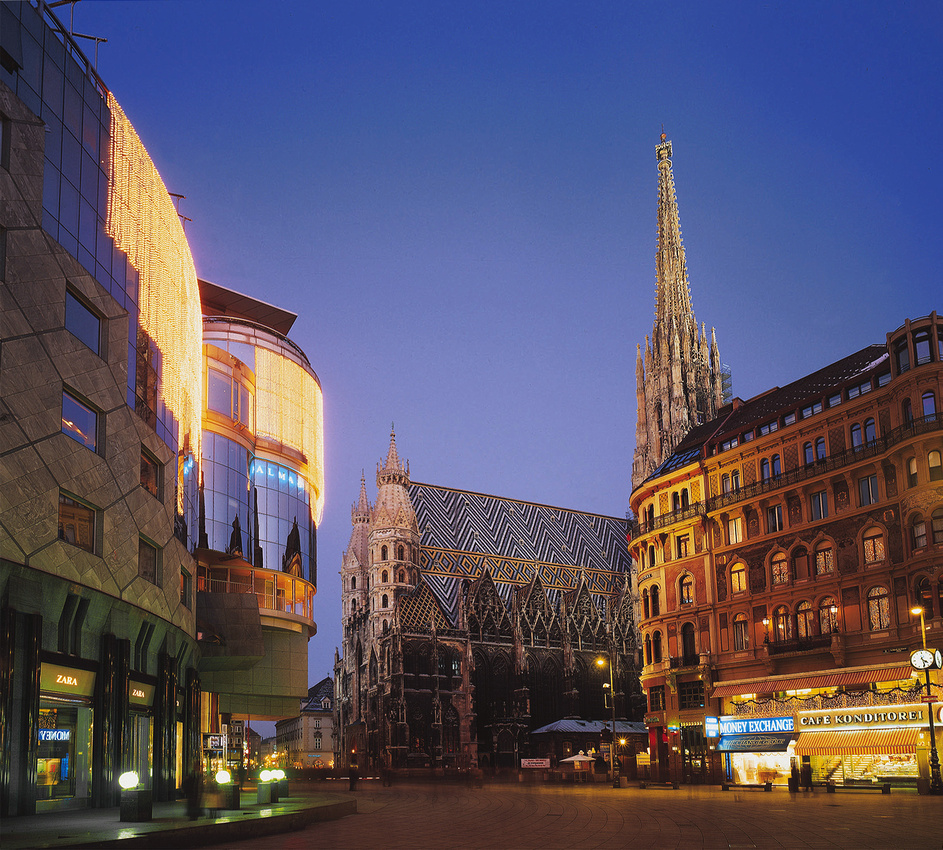
(Above: The postmodern, mirror-and-stone commercial building known as Haas Haus, left, designed by star architect Hans Hollein, sits catty-corner from the 12th-century St. Stephan's Cathedral, or Stephansdom, and its landmark 450-foot-tall spire. Vienna Tourism photo/Georg Popp.)
Culturally sophisticated with deeply ingrained artistic values, Vienna is like the college crush I never had the nerve to talk to because she was clearly out of my league. Yet at night this irretrievably romantic and beautifully illuminated metropolis inspired me to stop thinking of what could go wrong and instead think of what could go right. Almost made me want to drunk-dial her 40 years after the fact. Almost.
To be sure this gateway to Eastern Europe never fails to trigger a favorite travel fantasy: prowling its streetlamp-lit backstreets in a Burberry trench coat, speaking a dozen languages to a dozen dangerous women. Adding to this fancy are fleeting scenes from two favorite movies that were shot here: the 1949 British film noir classic, "The Third Man" (yes, you can still ride the Riesenrad, or giant Ferris wheel); and the oddly charming 1995 flick, "Before Sunrise," featuring young, soon-to-be-lovers who spend the night walking around the city while only talking as they get to know each other.
Gracious, understated and effortlessly charming, with just a whisper of intrigue to keep things interesting, Vienna truly is the perfect date.
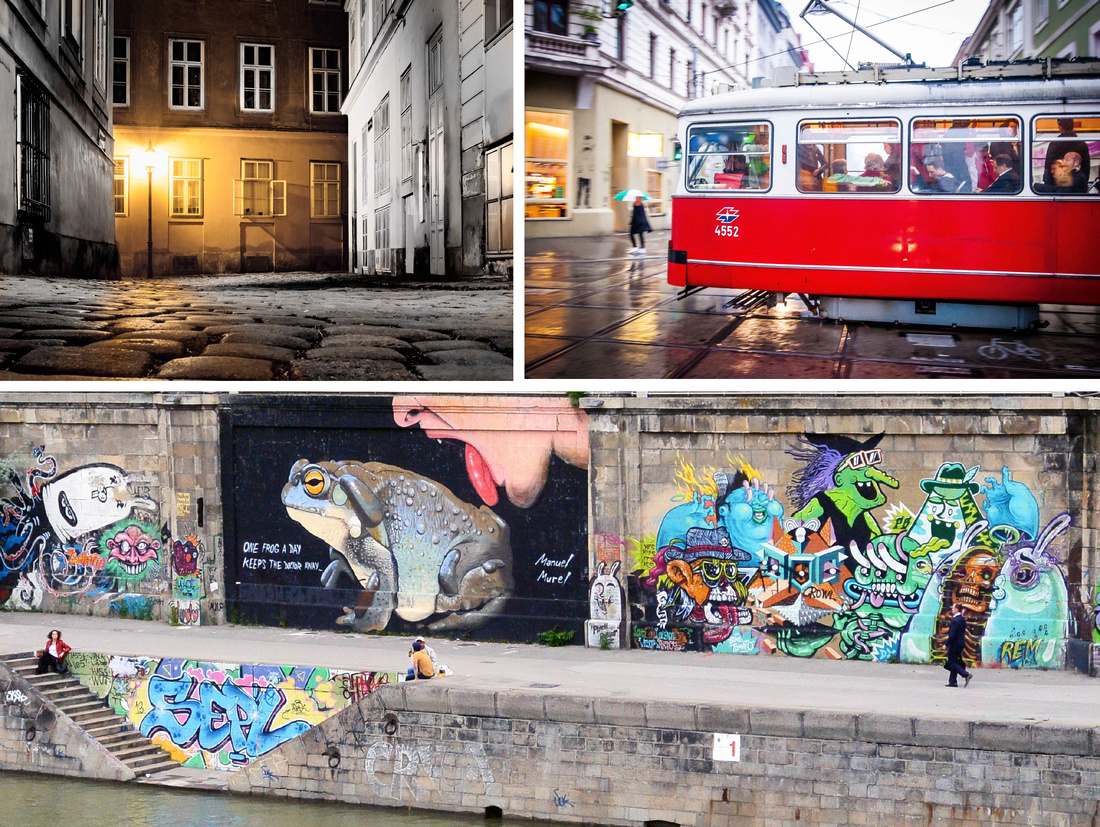
(Clockwise from top-left: A cobblestone street in Old Vienna; the city's ubiquitous red trolleys are a popular and inexpensive mode of transportation; graffiti in Vienna is an elevated urban artform.)
III. BOLD PUNCTUATION MARKS
Even if you’re not a millennial urbanaut or world-weary traveler, punching through the membrane of the reassuringly familiar reveals that this multicultural oasis of 1.8 million is undergoing a new age of artistic experimentation. Today nothing could be further from the white-powdered wigs of Mozart’s drawing-room audiences of the 1780s than the oh-so-hip Museums Quartier, a 500,000-square-foot tour de force of 10 art museums, which opened in 2001 to critical acclaim and international praise.
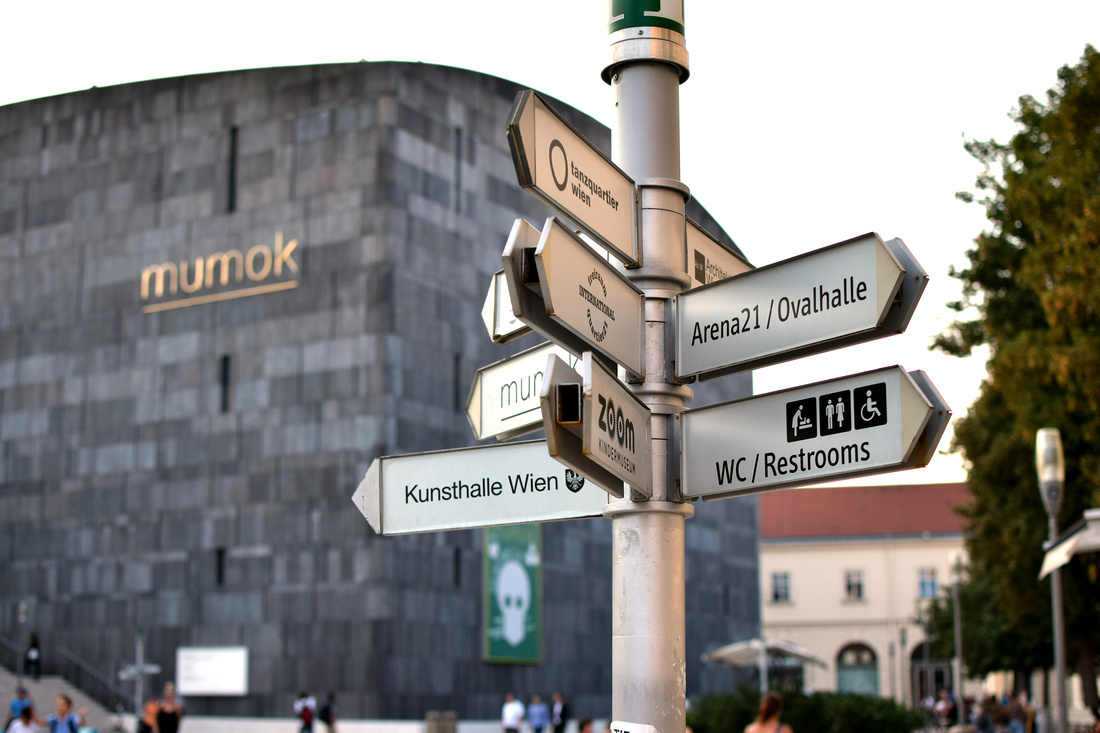
(Above: Signage directs visitors to the 10 art museums housed within the 500,000-square-foot Museums Quartier, which includes the Leopold Museum and its collection of artwork by Vienna's groundbreaking rebel painters Egon Schiele and Gustav Klimt.)
But the icing on the cake is unquestionably the MQ’s Leopold Museum, home to the world’s largest collection of Expressionist paintings by renowned Austrian bad-boy Egon Schiele. Adding artistic gravitas are the highly stylistic works of Schiele’s mentor, Gustav Klimt, the turn-of-the-century rebel behind those golden-hued, art nouveau paintings of barely-clad femme fatales of high society casting their Victorian cares to the Freudian wind.
Timing for the MQ couldn’t be better in an era when museums themselves have become destinations: for instance, the Guggenheim Museum in Bilbao, Spain, and London’s Tate Modern.
Austria, it seems, has thrown its Tyrolean hat into the ring.

(Above: This iconic and beloved downtown fixture helps promote Vienna's largest magic shop.)
My quest for other bold punctuation marks of urban innovation found me hopping the U-Bahn, or subway, for a 15-minute ride to the Gasometer. Affectionately dubbed G-Town, this multi-use retail and residential experiment has been turning the heads of sustainability architects and millions of annual international visitors alike since it opened in 2001. Imagine a totally renovated quartet of former gas tanks — each measuring 200 feet in diameter and 270 feet tall (20 feet higher than the Mercedes-Benz Superdome), sitting side by side and connected by glass skybridges. Ground level includes retail shopping, music halls, cinemas, nightclubs, grocery stores, etc. Second and third floors are reserved for business and commercial offices. From the fourth floor to the top of each Gasometer’s glass-covered dome, which allows for year-round outdoor living, are 800 apartments inhabited by regular tenants, as well as 70 college dormitories for about 250 students in residence.
Yet even futuristic G-Town looks like a plain Jane compared to the hallucinogenic vision of architectural Expressionism called Hundertwasser Haus, an apartment building that looks like what Salvador Dali might have created on LSD had he relied solely on crayons for his color palette. Designed in the 1980s by Vienna’s late artist Friedensreich Hundertwasser, the structure dominates half a city block with its sinuous, multicolored exterior walls, onion-domed cupolas, irregular leaning columns of broken tiles, and a multi-tiered “roof forest.”
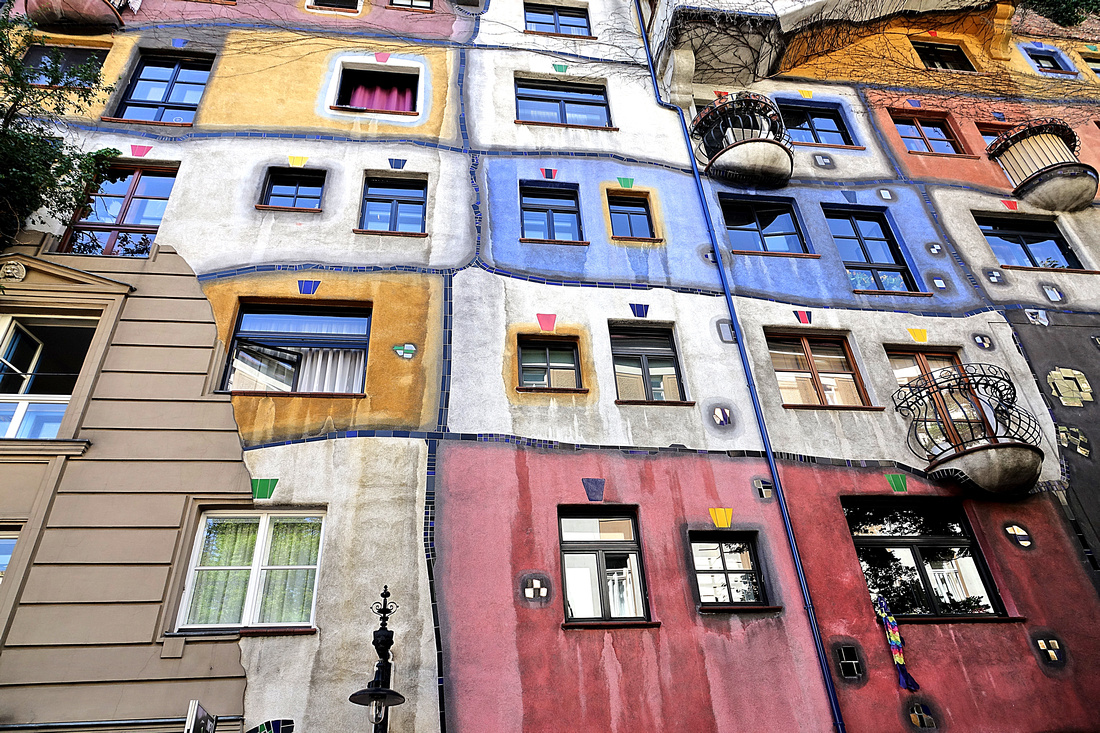
(Above: The multicolored Hundertwasser Haus.)
Design-wise the Hundertwasser Haus would mesh perfectly with the surrounding urban landscape — that is, if Vienna were Tunetown, the fictional cartoon city in the 1988 film, “Who Framed Roger Rabbit.” But it’s not. And therein lies the building’s outlandish — and, let’s be honest, disorienting — beauty.
The man standing beside me wearing a bright-pink “Wish You Were Beer” T-shirt shook his head. “Have you ever seen anything more ridiculous?” he asked.
“Actually, yes,” I said.
IV. RAISING THE BATON
On my last day I made a beeline for the Haus der Musik. Opened in 2000, the four-story “sound museum” and multimedia interactive showcase not only salutes Vienna’s A-team of classical composers — Beethoven, Mozart, Hayden, Mahler, Schubert, Brahams and the Strausses — but enables visitors to experience some of the greatest music ever written in new and unconventional ways. Here at the original home of the Vienna Philharmonic Orchestra, I listened to a recreation of the orchestra’s acclaimed New Year’s Eve concerts, composed my own waltz, and relived what my first experience of music might have sounded like inside the womb.
In another room I got to pretend I was a studio engineer, listening through headphones to a multi-track recording of a Mozart string quartet, isolating each instrument track by track before gradually mixing them together and glimpsing the young composer’s unmatched genius for creating and blending harmonies.
This place made me feel like I was 12 years old.
Little compared, though, to the Virtual Conductor, where I stood before a super-sized screen of an interactive Vienna Philharmonic Orchestra and, with baton in hand, conducted one of the world's greatest musical ensembles in Johann Strauss’ “Blue Danube” waltz.

(Above: A "guest conductor" leads a virtual Vienna Philharmonic Orchestra during a performance at the House of Music's Virtual Conductor exhibit.)
Here the orchestra obeys the “guest conductor,” following the tempo and rhythm of the infrared beam inside the maestro's baton. At first I forced the orchestra to play too fast, then too slow. Finally they stopped playing altogether and grumbled among themselves. Apparently the philharmonic's patience is not without its limits. A man at the back of the virtual orchestra stood up and said something in German which caused the other musicians to break into raucous laughter.
Not understanding German, I asked the school-aged kid, who was waiting in line, to translate.
“The man said, ‘You are hopeless — have you even heard this piece before?’” the kid said chuckling.
It was a weird rush being humiliated by the Vienna Philharmonic Orchestra.
Raising the baton once more, I led the ensemble for a second time through Strauss’ famous waltz. This time successfully. And this time the orchestra applauded.
Perhaps it’s precisely because this city is ushering in a new era of artistic expression that it felt so good to finally nail the rhythm of Vienna’s old familiar ways.
I stepped off the maestro's platform like a rock star — head bowed, clenched fists thrust into the air — and bid farewell: "Good night, Vienna!"
The little Austrian kid gave me a thumbs up.
]]>
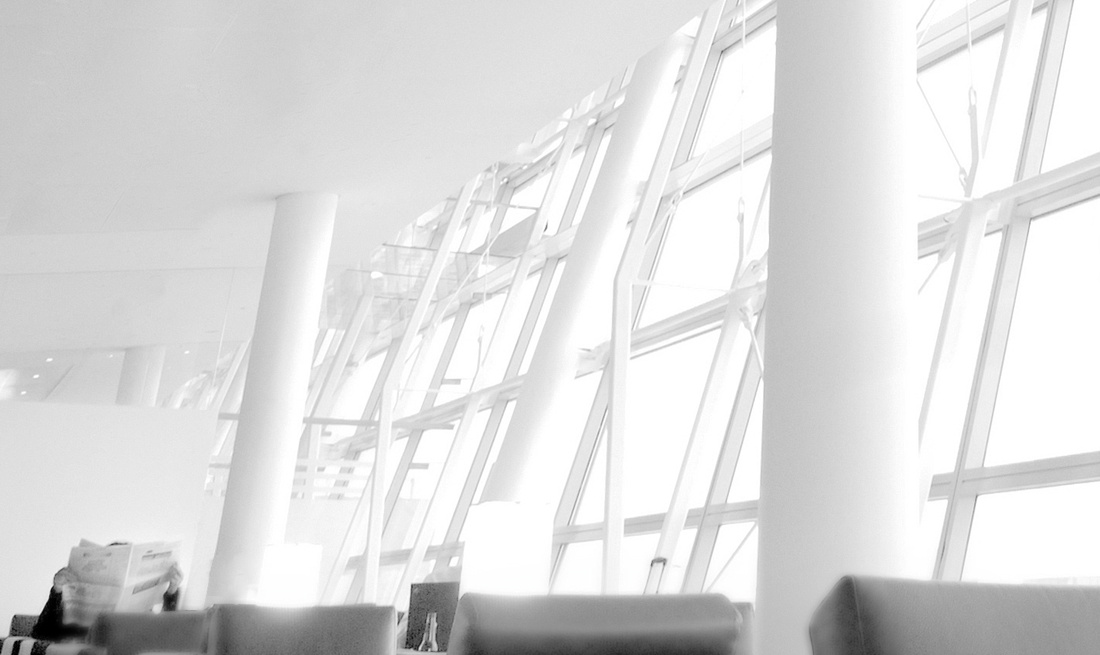 PEOPLE OVER THE YEARS HAVE ASKED ME to pen a blog with tips for taking better vacation and travel photos. And for years I declined, figuring most of this stuff is available on the internet (and probably from NatGeo photographers). What changed my mind was a recent email from a young photographer who follows me on Facebook. It stopped me in my tracks. "Your photographs, especially of travel, always make me ‘feel’ something — your stuff is emotional,” the shooter said. “I want to be able to do the same thing — make people ‘feel’ when they look at my work. If you have any suggestions, it would be greatly appreciated."
PEOPLE OVER THE YEARS HAVE ASKED ME to pen a blog with tips for taking better vacation and travel photos. And for years I declined, figuring most of this stuff is available on the internet (and probably from NatGeo photographers). What changed my mind was a recent email from a young photographer who follows me on Facebook. It stopped me in my tracks. "Your photographs, especially of travel, always make me ‘feel’ something — your stuff is emotional,” the shooter said. “I want to be able to do the same thing — make people ‘feel’ when they look at my work. If you have any suggestions, it would be greatly appreciated."
The follower definitely pushed one of my buttons — specifically the one labeled pay it forward. Hard work and lucky breaks resulted in a 30-year career as a freelance travel photojournalist and full-time gig at the local daily newspaper. Jotting down a few notes on what I've figured out along the way seemed the very least I owed the up-and-coming photographer, as well as anyone else interested in better capturing their own road less traveled. Please, read on ...
1. THINK LIKE A STORYTELLER
Good pictures tell good stories. Period. And you don’t have to be a professional photographer to think like a storyteller — just a more sensitive, astute observer of the world around you and the human experience. Isn’t that why we travel in the first place? Yet photographic storytelling actually begins before you look through the viewfinder of your DSLR, pocket camera or smartphone. It starts when you ask yourself what you hope to capture and convey about a particular moment or scene that will make for an interesting and compelling image, as opposed to merely a postcard souvenir or selfie of you standing in front of the Taj Mahal.
Good storytelling and thus good travel photography also requires capturing the smaller story in a way that ignites the viewer’s imagination of the larger unseen story. Following are a few examples:
Poking around wineries in Bordeaux, France, I came across a vineyard that I half-heartedly contemplated photographing. I say half-heartedly because I knew before I pressed the shutter that it would have made at best a mediocre image and at worst a self-serving Instagram humblebrag (I mean, really, who hasn't visited a vineyard somewhere at this point?). Twenty yards away I spied a pair of bicycles leaning together against the fence and already my imagination was spinning storylines. Did a cyclist couple decide to take a romantic stroll? Were winery workers tending to the vines? Soon I was front and center before the bikes and framing my shot with the vineyard in the background because I knew the bicycles would help make the photograph tell a better story. Not necessarily great, just better. See below:
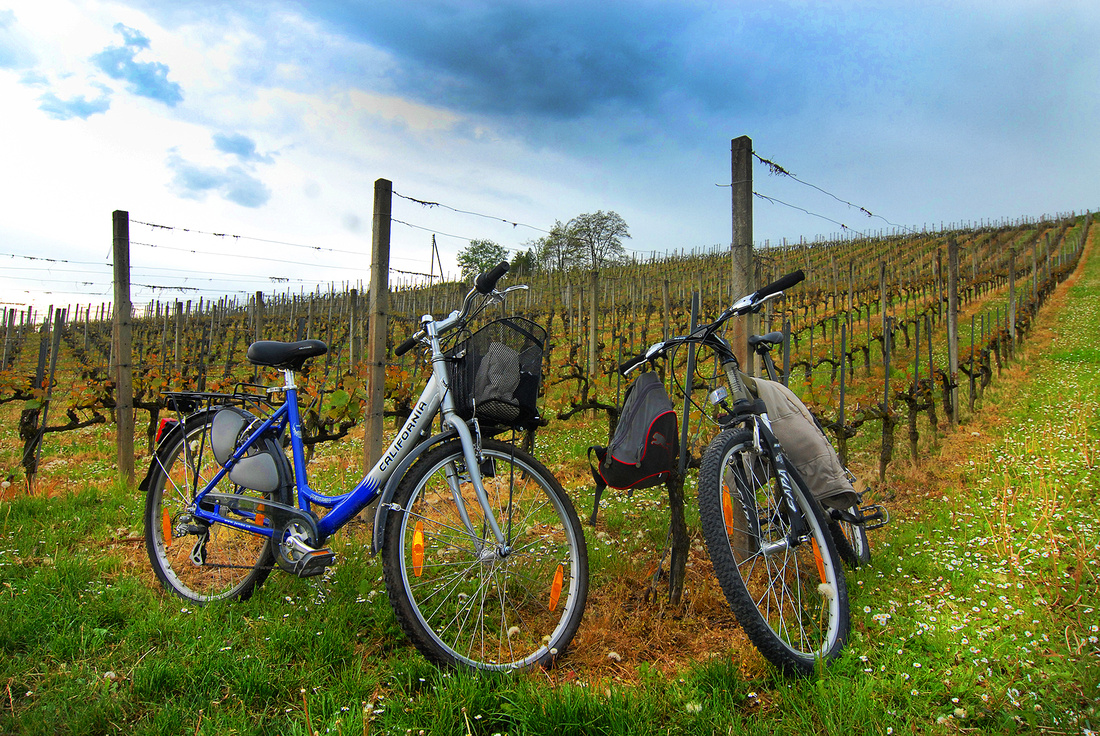
Years ago I found myself in the village of Schwyz at the Eichhorn Schwyzerorgelfabrik and Musikhaus, the oldest continuously operating accordion shop in Switzerland. Instead of lollygagging in the front showroom full of drop-dead gorgeous accordions, I stepped around the counter (with permission) and walked down a long hallway until I found the beating heart of this 200-year-old, family-owned enterprise: Namely, a dusky, ramshackle workshop full of drill presses, leather swatches, little metal parts, air compressors, half-completed accordions, you name it. Christian Greuter was hard at work in quiet solitude and hadn't heard me enter the workshop, so I grabbed my camera and began photographing the sixth-generation accordion maker. Here is a perfect scenario where the smaller story, Christian working alone in the workshop, tells the larger unseen story — the centuries-old, time-honored craftsmanship that goes into creating this near-sacred Swiss musical instrument. See below:
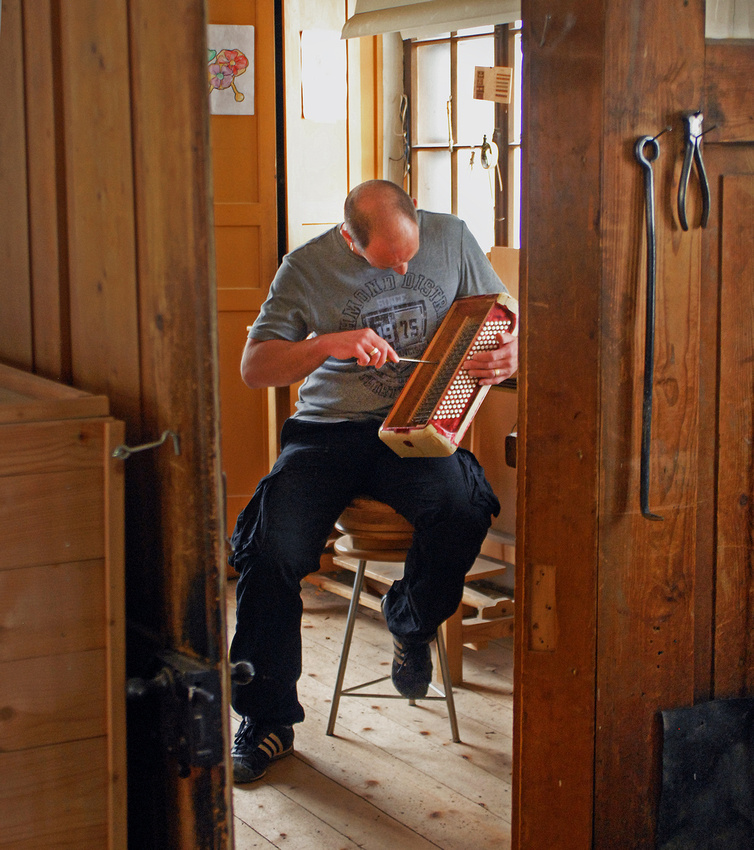
In the next photo there was literally nothing required of me other than the presence of mind to turn around with my camera in time to capture the quartet of older men conversing on a park bench in Avignon, France. This image is a photographic storyteller's dream, as we imagine the conversation among these aging lions.
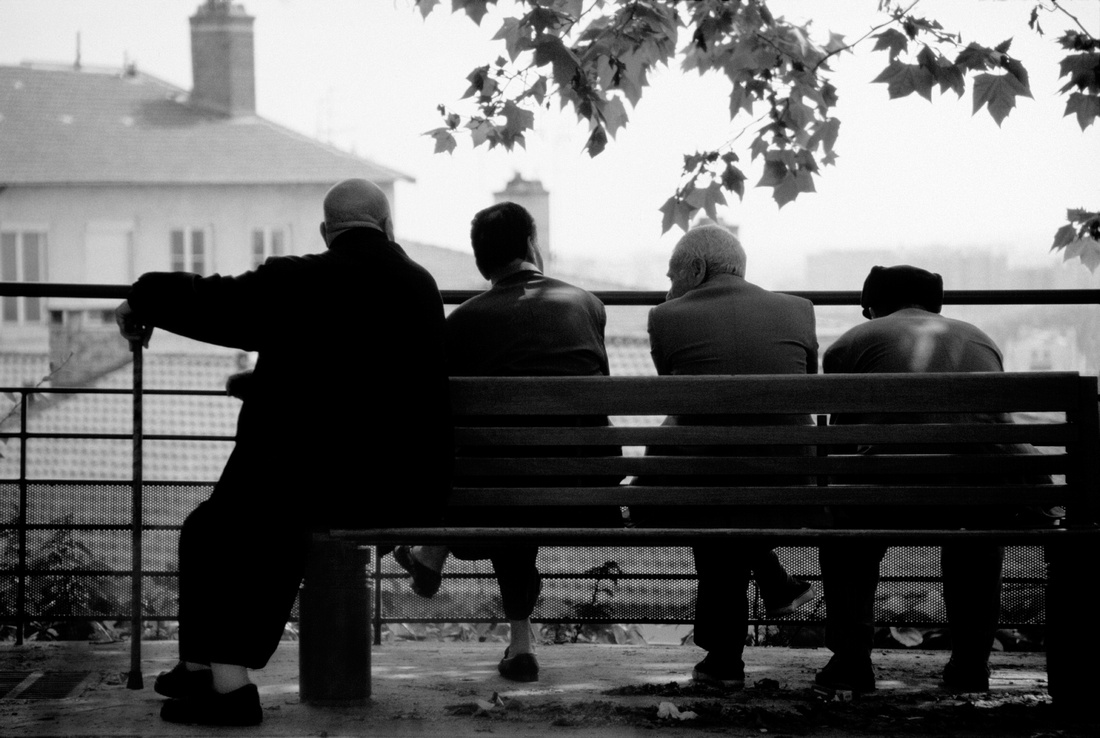
Occasionally we stumble upon something so seemingly trivial that it almost escapes our camera lens. Yet, as storytellers, what we find irresistible in the following image is the defining signage and the silhouette of a wide, sweeping staircase (the smaller story) that presumably leads to an exclusive and glamorous world reserved for the privileged few (the larger unseen story).
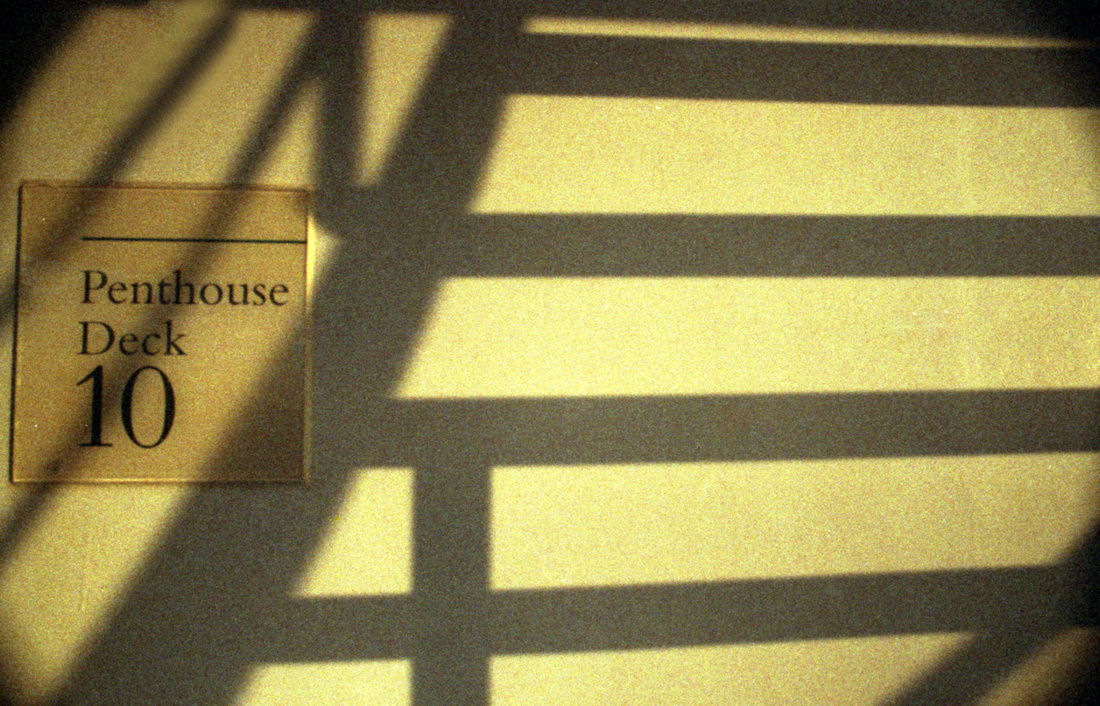
2. SHOOT OFF-CENTER
Literally nothing is more tiresome than endless images where the subject of interest is always smack-dab in the middle of the photograph. Don't be afraid to be creative — put your key subject anywhere but the center. This will help create more tension and drama in your image, as well as (hopefully) empower you to become more innovative with your compositions. Case in point is the following photo I took of a young couple at the Roman Forum:
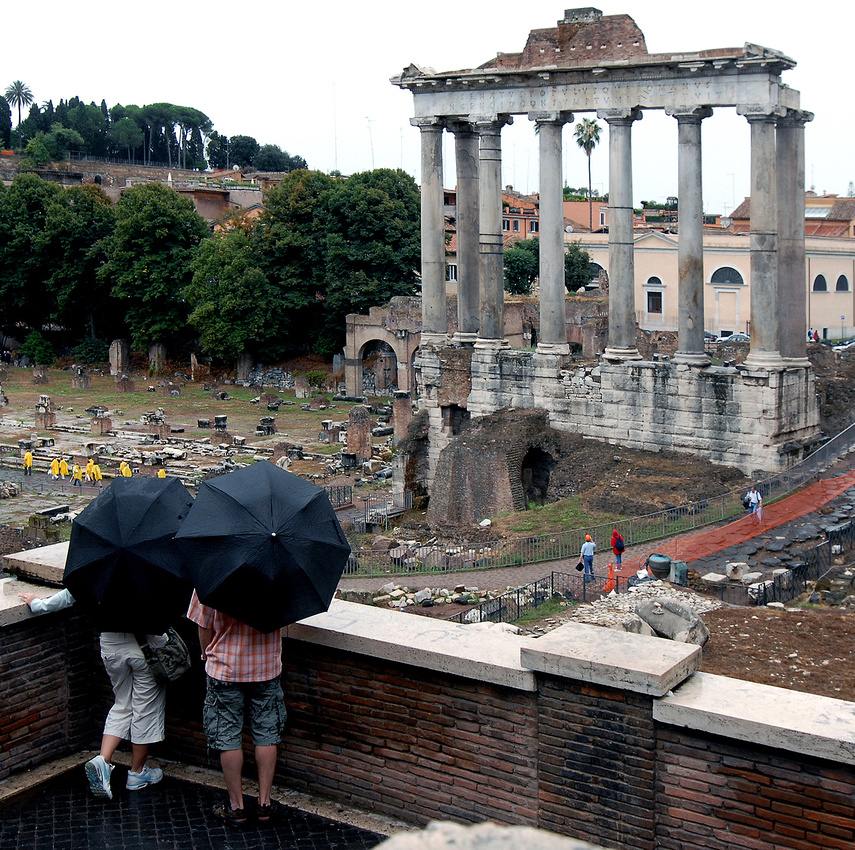
By shooting at an elevated level (which we will cover shortly) and placing the couple extremely off-center in the above photo, I created ample room in my camera frame to pull in the awe-inspiring ruins of ancient Rome. That said, notice how the couple huddled beneath their umbrellas still steal the show. Why? Because the only thing that trumps amazing architecture is a photograph of people admiring amazing architecture.
Is there any doubt in the next image that the correct call was placing the large industrial fan in the far upper-right of the frame in order to capture the diagonal streams of sunlit warehouse dust?

For the next image the concept of off-center composition seems taken to the uber-extreme. But, by doing so, what have I accomplished? Namely, force the eye to first notice the person reading the newspaper before the viewer grazes the fascinating architecture of this Finnair VIP Lounge — a good example of how off-center composition truly has the power to direct the viewer's eye while also creating energy and tension in an image.

3. USE THE RULE OF THIRDS
The rule of thirds is an imaginary “tic-tac-toe” board and rule of thumb, or guideline, for photographic composition that makes use of a natural tendency for the human eye to be drawn toward certain parts of an image. See below:

For photography, the rule of thirds is designed to help you take well-balanced photos while making sure viewers focus on what you want them to see. The rule of thirds is applied by aligning a subject with the guidelines and their intersectional points, placing the horizon on the top or bottom line, or allowing linear features in the image to flow from section to section.
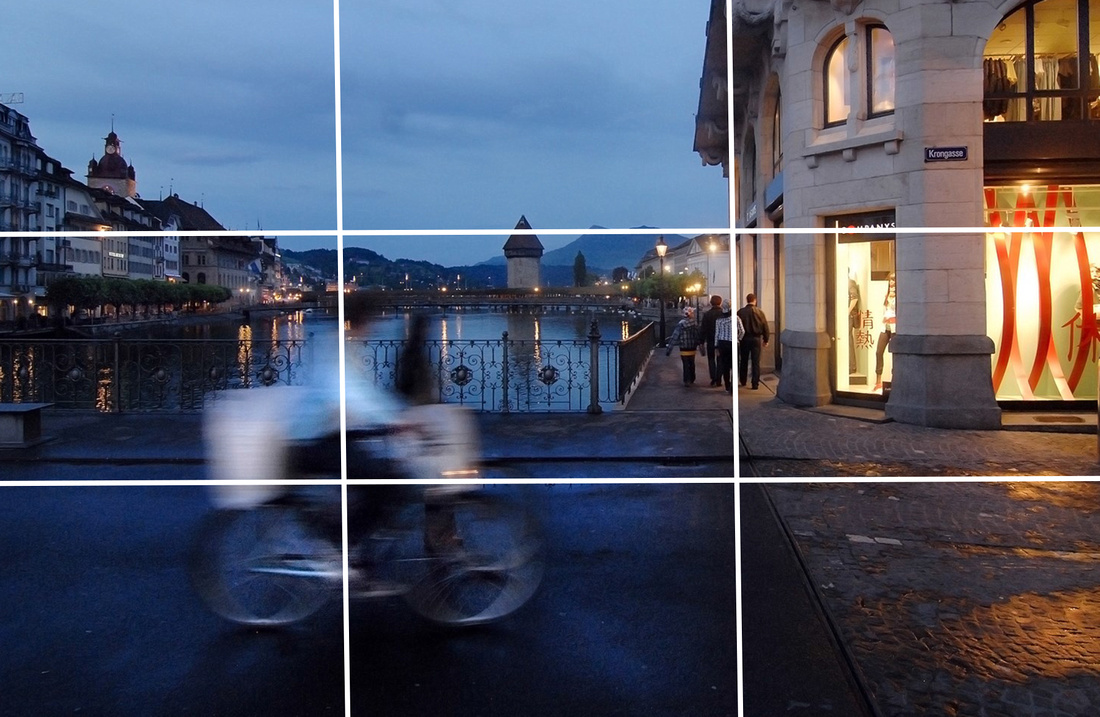
In the above nighttime photo of Lucerne, Switzerland the mid-center of the cyclist is positioned precisely at the intersection of the first vertical and first horizontal lines; the quartet of people strolling in the distance is positioned at the second vertical line; and the hilly horizon in the far distance is positioned pretty close to the second horizontal line. Making matters even better is that the cyclist is moving from left to right into the other squares in your rule of thirds.
Let's look at another photograph:
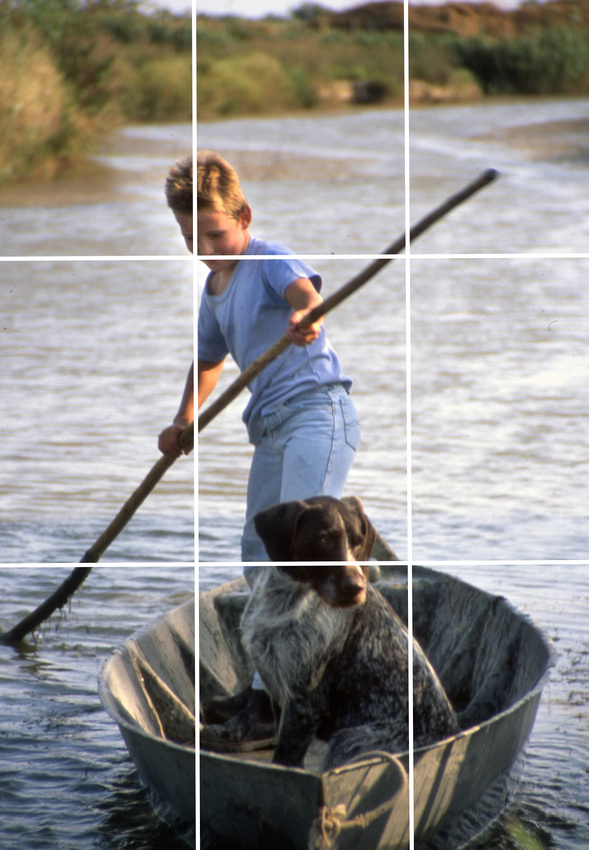
In the above image taken in Les-Saintes-Maries-de-la-Mer in France's "cowboy country," the face of our French Huckleberry Finn falls precisely at the intersection of the first vertical and top horizontal lines (perfect!), while the face of his faithful canine friend intersects with the first horizontal line.
(TIP: If you have an autofocus camera you can use the autofocus points as references to help you visualize the rule-of-thirds grid. If you use an LCD screen to compose your images, you can make a rule-of-thirds grid out of a clear sheet of window cling material.)
The following final example ...
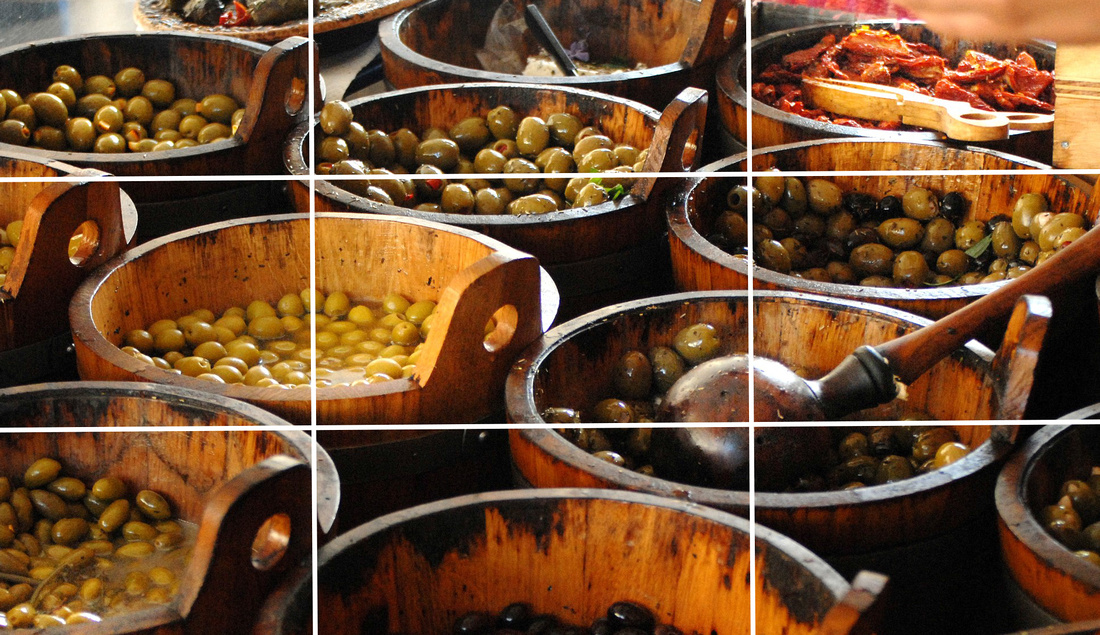
... should almost seem second nature by now when it comes to understanding the rule of thirds. Without question the metal scooper is the "hero" of this image taken in Corsica. Look where the scooper falls in the rule-of-thirds grid. Could it get any more perfect?
(TIP: You can always crop your images after the fact in your favorite photo editing software in order to make them fit the rule of thirds.)
4. GET BOLD WITH CAMERA ANGLES
Most people unknowingly take the sum total of their vacation pictures (nowadays we’re talking hundreds if not thousands of images) from basically a single angle: their height. With few exceptions (for instance, selfies) this means essentially all of your travel photos are snapped from a height of 5’4” or 5’10” — depending on whether you’re an average American woman or man, respectively. All of which partially explains the mind-numbing sameness of many (but by no means all) vacation photos posted on Flickr, Instagram, Facebook, Snapchat and elsewhere.
If you're truly serious about taking your travel photography to the next level, eventually you're going to have to squat, kneel, lie on your stomach and occasionally your back. Why? Because employing unusual, creative and unexpected angles is what separates the good from the ordinary in travel photos.
Following are two examples of how altering the angle and height of your camera can improve your photos and create greater viewer interest:
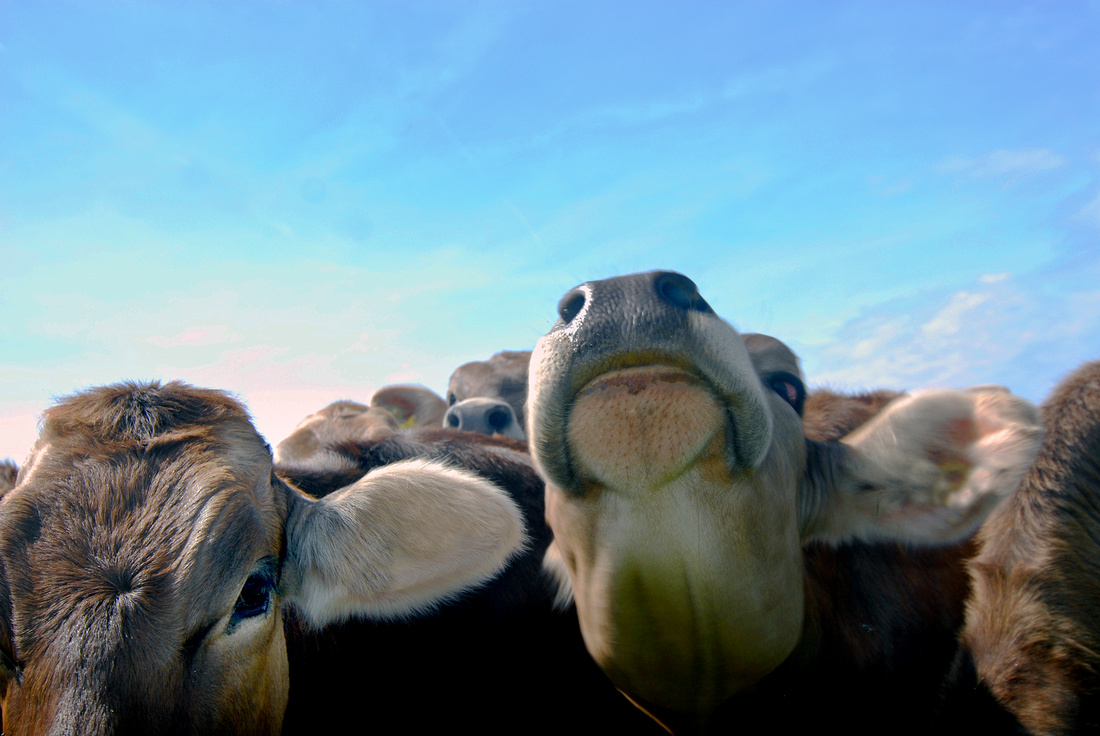
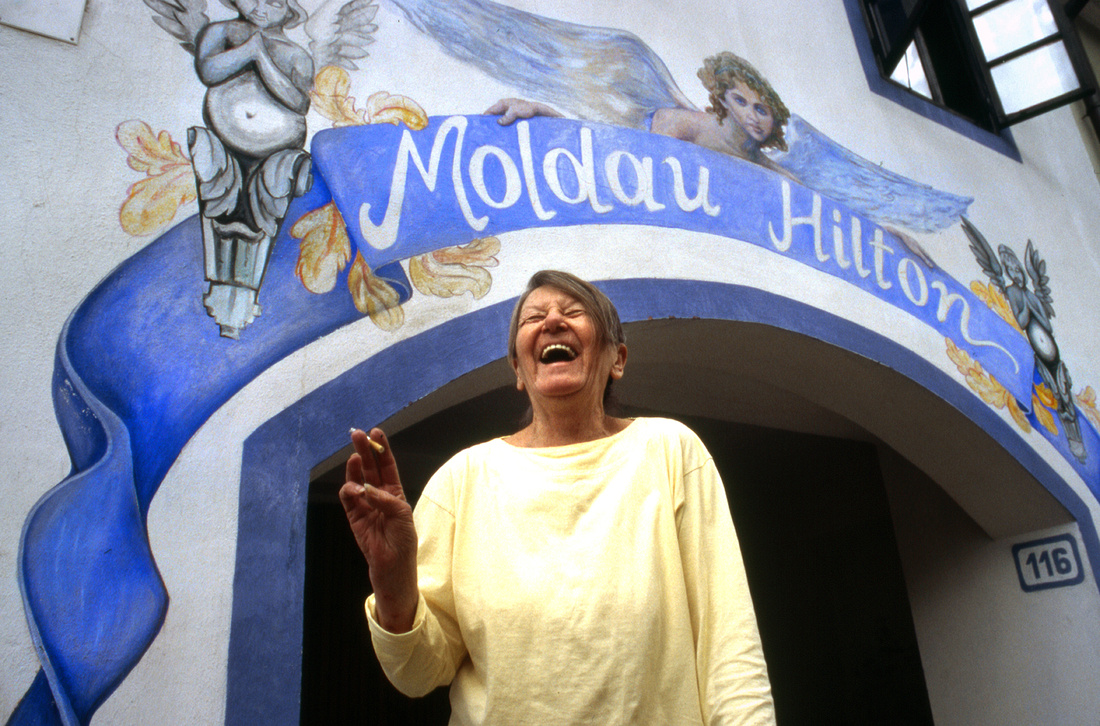
The top photo was made possible because I had accidentally slipped on a patch of wet grass while hiking in the rolling farmlands of Lucerne, Switzerland and suddenly found myself staring up at a small herd of the country's notorious gangsta cows — at least that's how they appeared to me from this vulnerable angle. Instead of attempting a quick retreat, though, I took advantage of my unique position — literally flat on my back — to snap off as many photos as possible.
For the above photo, I sat on the ground in order to squeeze into frame the mural of this youth hostel, located in the Bohemian town of Český Krumlov, and its animated, chain-smoking owner, Jana Peřinová. The mural was painted as a joke by a backpacker guest from Australia. For the record the modestly appointed albeit homey Moldau Hilton is not a Hilton property and its moniker refers merely to the fact that the storied Moldau River wends its way around this teardrop-shaped "island village" in the Czech Republic. "Every year the town council asks me to paint over it," Peřinová said laughing uproariously about her mural, "and every year I tell them to shove it."
Exploring different angles can also mean discovering unique physical positions from which to take a photo. Consider the image below taken on the streets of Naples, Italy:

Instead of shooting the street violinists from directly in front of them (as might be expected if I were aiming merely for a souvenir photo), I stepped behind the musicians to better capture the world of Naples from their perspective while performing Prokofiev’s sonata for two violins in C. Shooting from this position also enabled me to pull in frame the couples walking on opposite sides of the street and in opposite directions. (FYI: I waited nearly 20 minutes to get this composition — I really lucked out.) Not only does the photo have energy but also great movement thanks to the strolling couple (notice the gentleman's blurred right foot and the woman's billowing dress), as well as the musicians drawing their violin bows (notice the slight blur of the bow at left). This is how we become better storytellers.
5. LEARN HOW LIGHT MATTERS
Professional travel photographers literally live by the “golden hour” light of early morning (shortly after sunrise) and late afternoon (shortly before sunset) when daylight is softer than when the sun is higher in the sky. Why? Sunlight during these two time windows caresses virtually everything it touches — architecture, faces, landscapes, even yapping dogs. So much so that most professional photographers avoid shooting outdoors during midday hours (11 a.m. to 1 p.m.) because overhead sunlight this time of day creates harsh and unwanted, aesthetically unpleasing highlights and shadows.
Below are three examples of golden-hour morning light photographed in New Orleans' storied French Quarter. Notice the warmish, yellow hues and the soft wrap of light on the subjects:
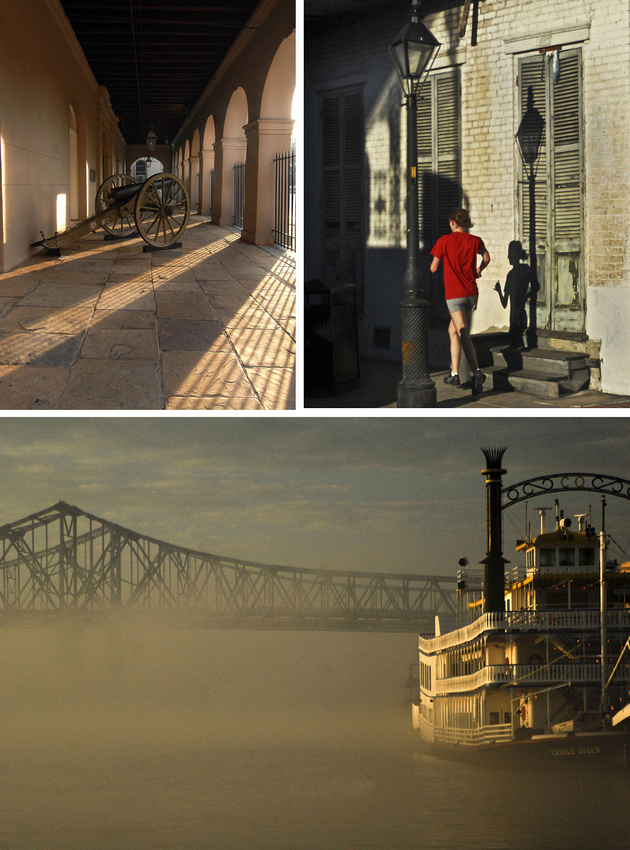
Following are two examples of golden-hour afternoon light taken in Les-Saintes-Maries-de-la-Mer, France (below) and Calella de Palafrugell, Spain (bottom). Notice how the afternoon light is "cooler" and more bluish as compared to morning light:
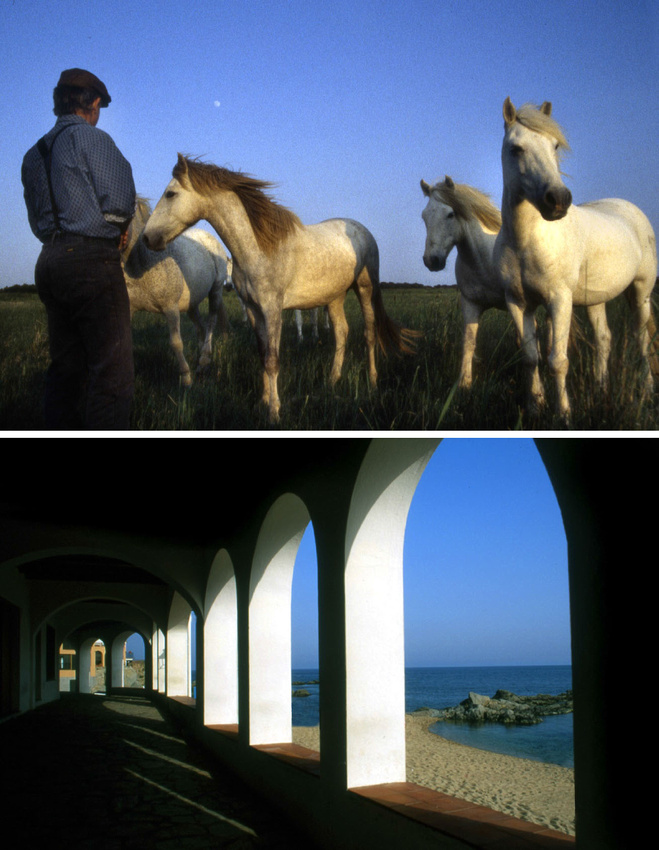
In addition to the morning and afternoon golden hours, many photographers are also interested in the “blue hour” — that brief period in the morning and the evening when the sun is still below the horizon but its indirect sunlight makes the sky take on a predominantly blue shade. The so-called blue “hour” is really a misnomer because in reality you have 10 minutes — at most — before the sun rises and after the sun sets to take advantage of the deep, rich blue color in the sky. But trust me it’s well worth arranging your shooting schedule around. For best results you’ll need a tripod to stabilize your DSLR camera or smartphone since blue-hour photography requires longer exposures (typically 1 to 5 seconds). Following are examples of blue-hour photography, both taken in New Orleans. The top image (of the Hurricane Katrina Memorial in Shell Beach) was taken early in the morning just before sunrise; the bottom image (of the city photographed from a penthouse condo) was taken just after sunset:
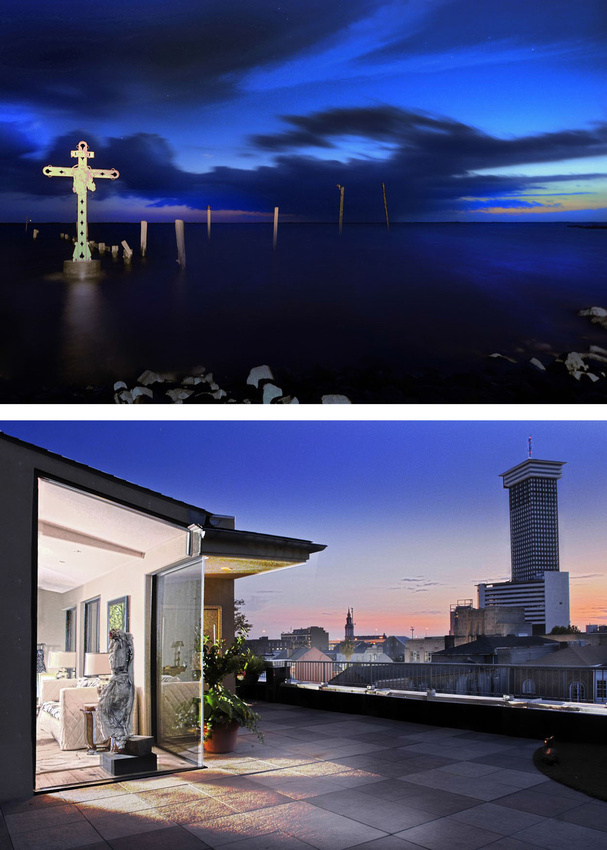
6. SHOOT THE LOCALS
If you ask me, there is little that compares to the rare image that captures the amazing beauty of people who belong to cultures and countries and continents different from our own. For instance, in the following image I took in London’s Covent Garden, I managed to capture a vignette of typical English life ranging from the Rolls-Royce and the young woman (at left) flipping her hair to the fellow leaning against the white-stone wall (at right) who is talking on his cell phone. Make no mistake, though, the star of this picture is the little boy kneeling on the bench who seems intensely engaged with the elderly gentleman whom we might presume to be the boy's grandfather.
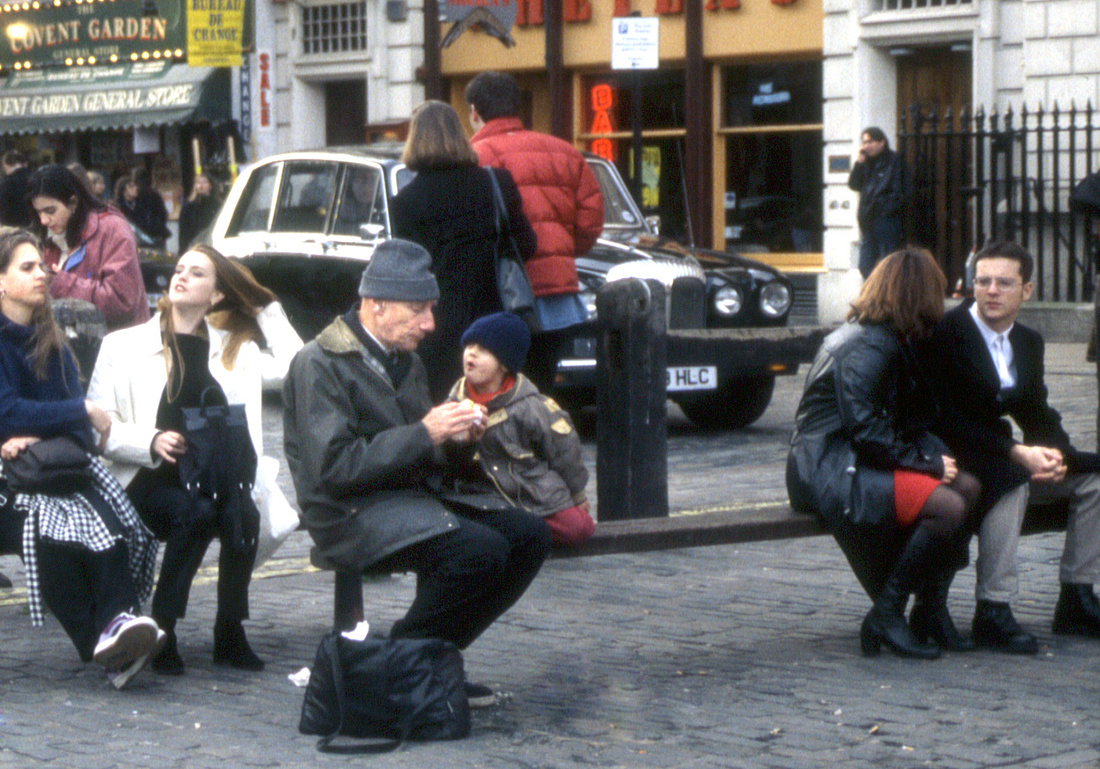
In the image below, street life in Istanbul, Turkey bustles just like that in any other metropolis around the world. But unlike, say, New York City where pretzel vendors have kiosks, those in Istanbul are mobile entrepreneurs who push their oven-baked inventory on rickety carts through the streets of the city’s Beyoğlu business district to better serve locals on their way to work in the morning.
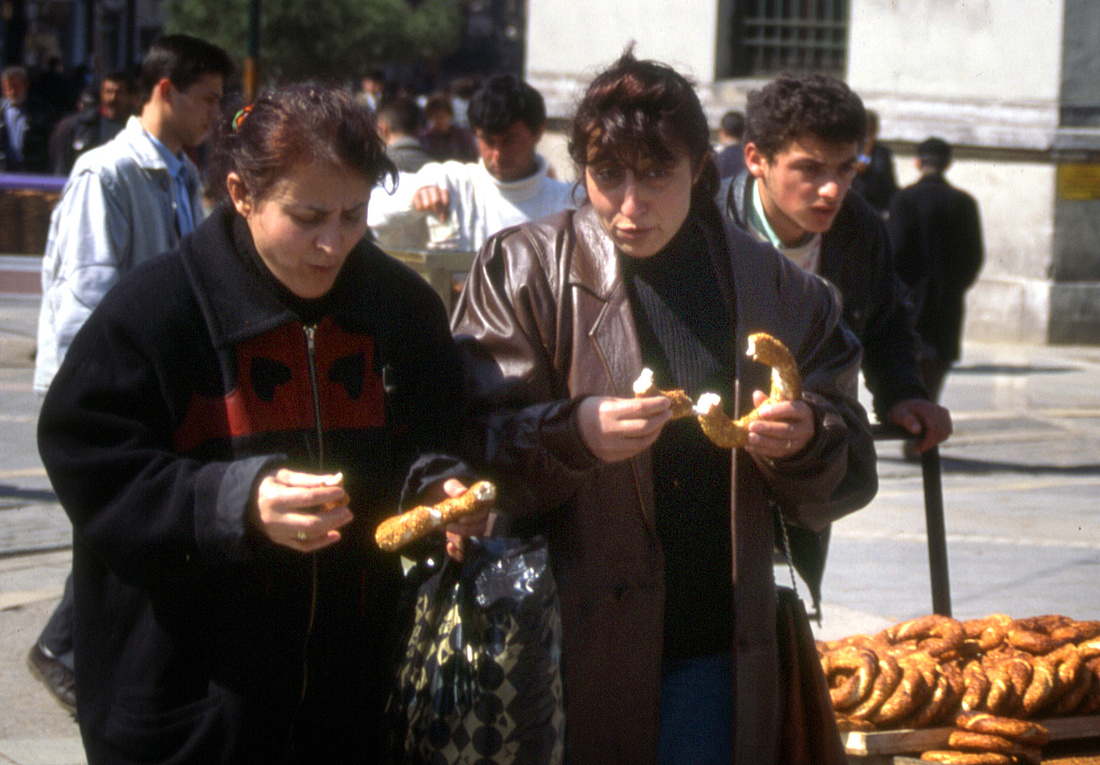
Among my favorite portraits is the one below that I created during one of my morning visits with Ferdinand Moya, the 75-year-old patriarch of a large extended family in the rural Honduran town of Catacamas. I was there on assignment writing a story on the "cave of the glowing skulls," a newly discovered Mayan ossuary tucked a mile inside a massive cave on the Talgua River. Mr. Moya, on whose property the cave is located, had given U.S. archeologists and a CBS documentary film crew full access to the cave. For me the daily trip to the cave was just a good excuse to drop by for a cup of coffee with the retired schoolteacher, who was always in a good mood when one of his nine grandchildren came to visit.
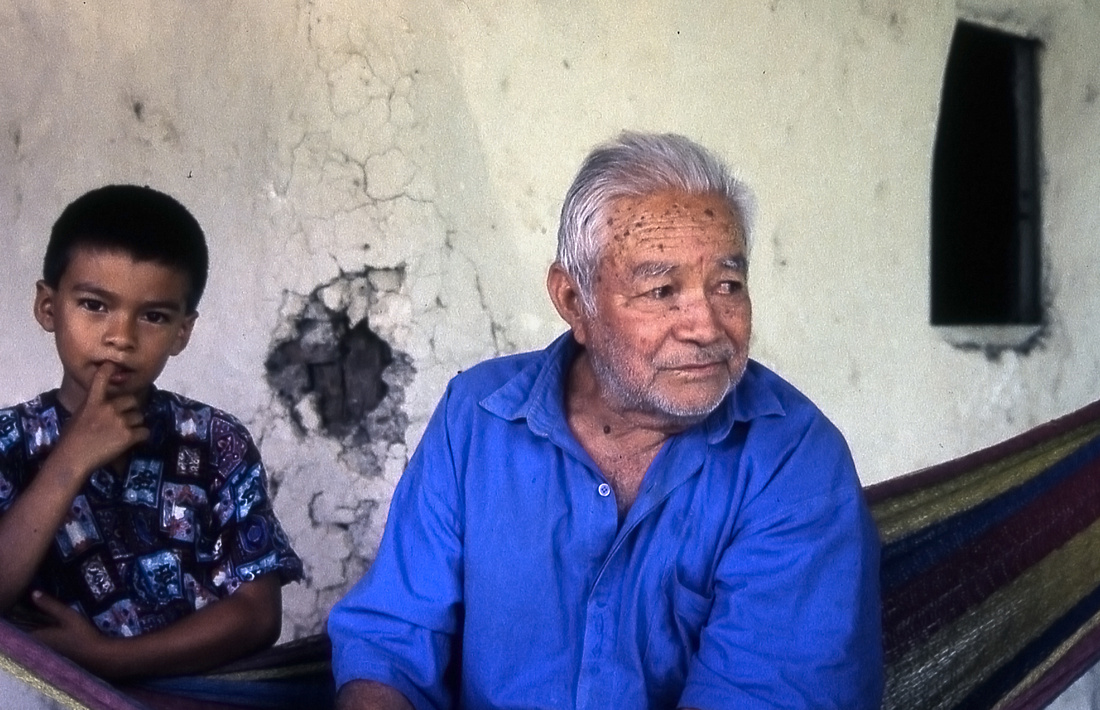
As for photographing locals the next image has always been my personal favorite: a group of Caribbean schoolkids eating limes while walking home under a light West Indies rain. I've photographed countless landmarks and landscapes on six continents during my years as a travel writer, but it will be the faces of people I've met during my journeys that I'll cherish the most come that day when I'm too hobbled to board a plane or hold my camera.
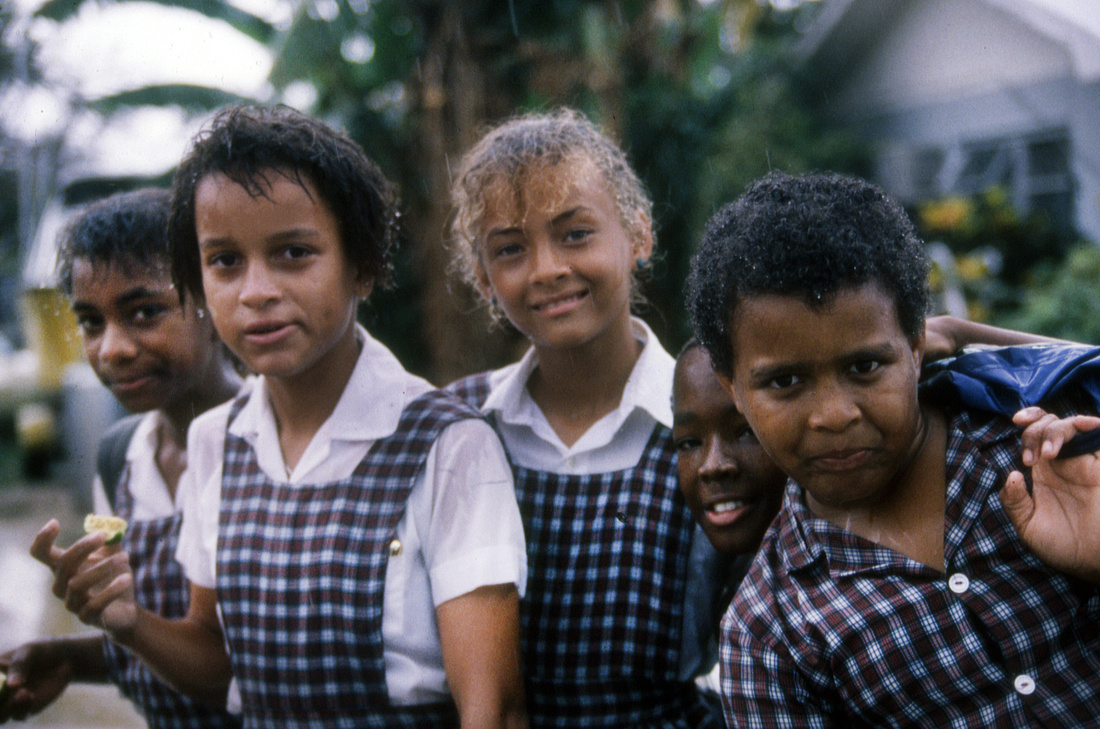
7. SHOOT FOOD
In the social media age of Facebook and Instagram brag-a-thons, few people need to be told to take food pictures. But, let’s be honest, the lion’s share are ghastly. Most of them are poorly lighted and badly composed mementos of quickly forgotten meals, all seemingly designed to tell people: “Hey, look, I have food!”
The key is composing and capturing interesting food (the key word being interesting) in a way that makes the dish actually look appetizing. Here are some tips:
— DO shoot the plate as soon as it comes to your table, especially if it’s a hot dish because the color and texture begins to change within five minutes of plating. Sauces start to congeal; the bright colors of steamed vegetables start to fade; fish begins to dry out, etc.
— DON’T shoot the dish surrounded by clutter. Silverware and a wine glass are OK — not so much the mustard and catsup bottles, napkin holders, salt and pepper shakers, etc. This is “visual noise” that detracts from your beautifully presented cassoulet with duck confit (or whatever).

— DO move the plate, if necessary, to an empty table near a window (to utilize available light) or even to the bar to better isolate the dish. (Restaurant managers won’t mind because they know it’s great — and free — publicity if it winds up tagged on Facebook or Instagram.)
— DON’T shoot the dish only from the angle from where you are sitting in your chair holding the camera. Boring. Instead shoot the dish from several different angles.
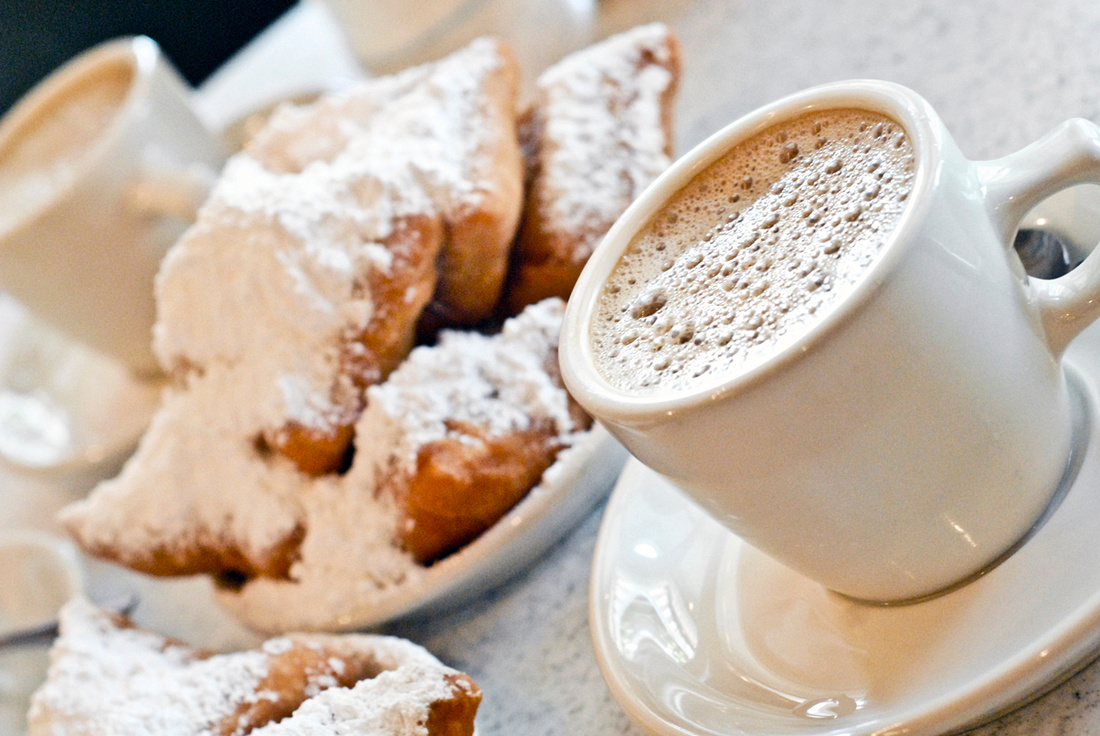
— DO zoom in on the main dish because that succulent filet mignon matters far more than the baked potato or broccoli on the back of the plate. Remember: Not everything on the plate deserves equal billing.
— DO occasionally crop the dish (either when you shoot it or later before posting on social media) to give it additional punch and energy.
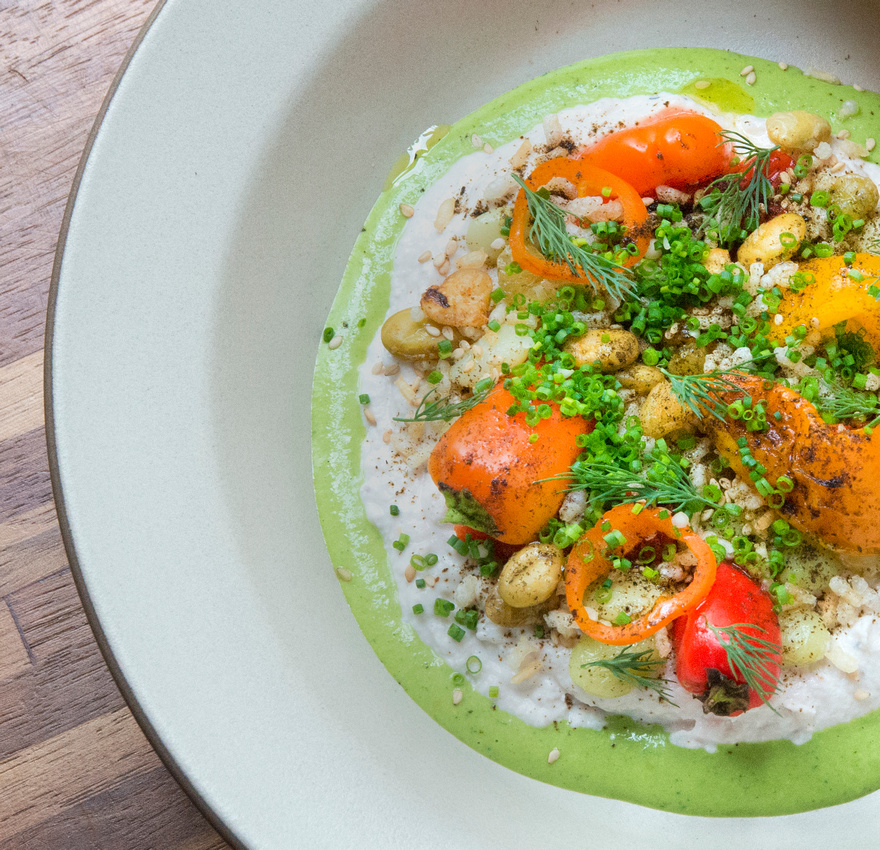
8. GET CLOSER ... CLOSER
It's been said that the devil is in the detail, but often times it's the detail that makes for outstanding travel and vacation photos whether you're photographing faces, food (as we covered above), an architectural landmark — you name it. Learn to use the zoom or telephoto lens on your DSLR (or consider buying one) as well as the zoom feature of your pocket camera and smartphone.
Why? A tight or close-up shot of your subject enables you to better direct what you wish the viewer to see — and where.
Examples below (from top to bottom) include tight shots that direct the eye to see: the curvaceous, titanium-clad panels of architect Frank Gehry's Disney Concert Hall in Los Angeles; the wrought-iron details of the bannister in Antoni Gaudi's Casa Batlló in Barcelona; and the hands, forks and food of a fondue lunch in the Swiss village of Gruyère.

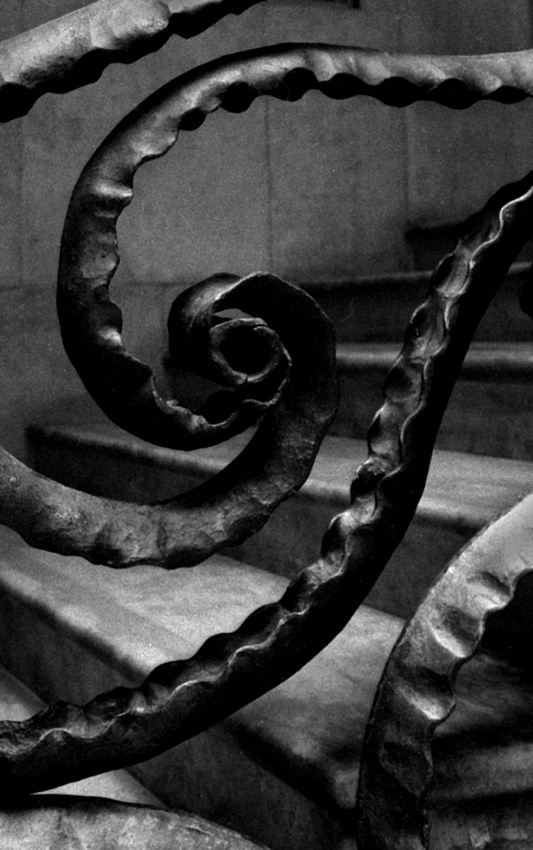
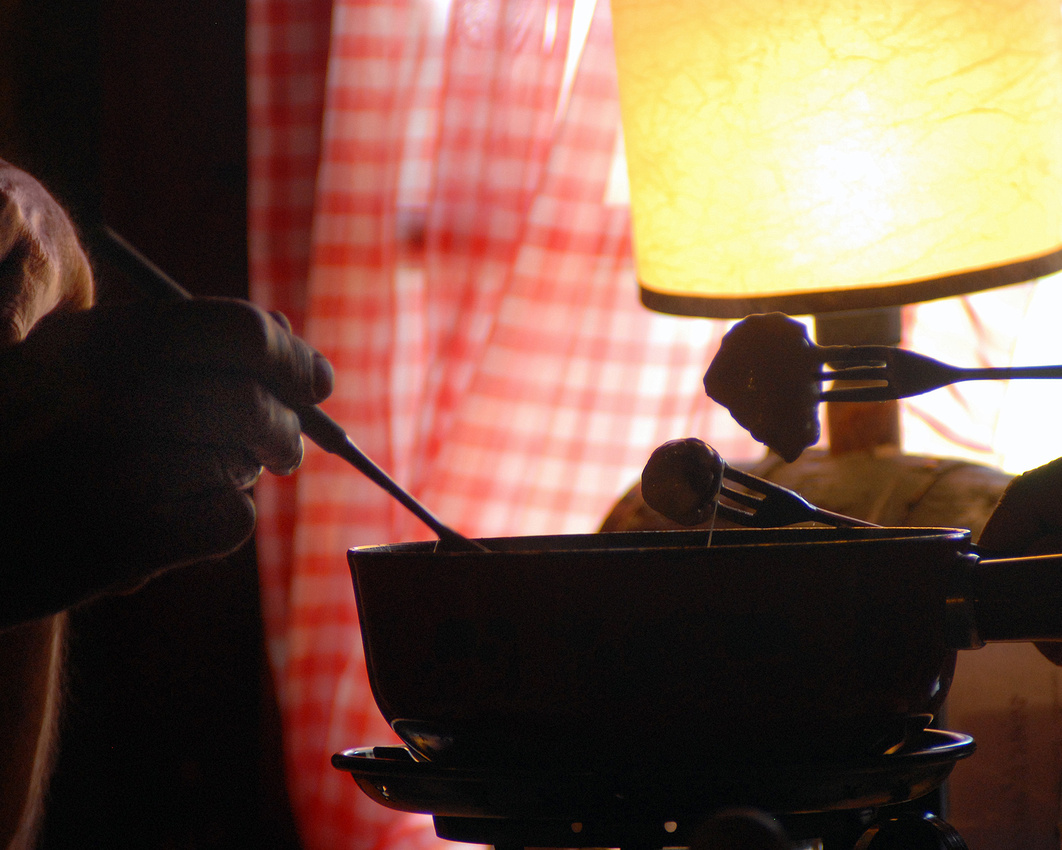
9. THINK OUTSIDE THE POSTCARD
If you incorporate these strategies and techniques for taking better vacation and travel photographs, you will over time (I promise you) begin to notice something quite extraordinary: a quiet revolution of how you see and experience the world around you.
It happened to me decades ago the afternoon I was reading the afternoon newspaper at a café table in La Plaza de la Reina in Valencia, Spain. A group of schoolkids walking home had stopped to feed the doves. First, I first imagined what it was I wanted to capture in the image: the story of how there are still places in this world where youngsters take time to smell the roses — or, more precisely, enjoy the simple beauty of feeding doves in the town square. Instead of shooting them from the café table, I created the best possible photographic angle by moving closer (without being intrusive) and sitting on the ground. Following is the result and one of my all-time favorite travel images:
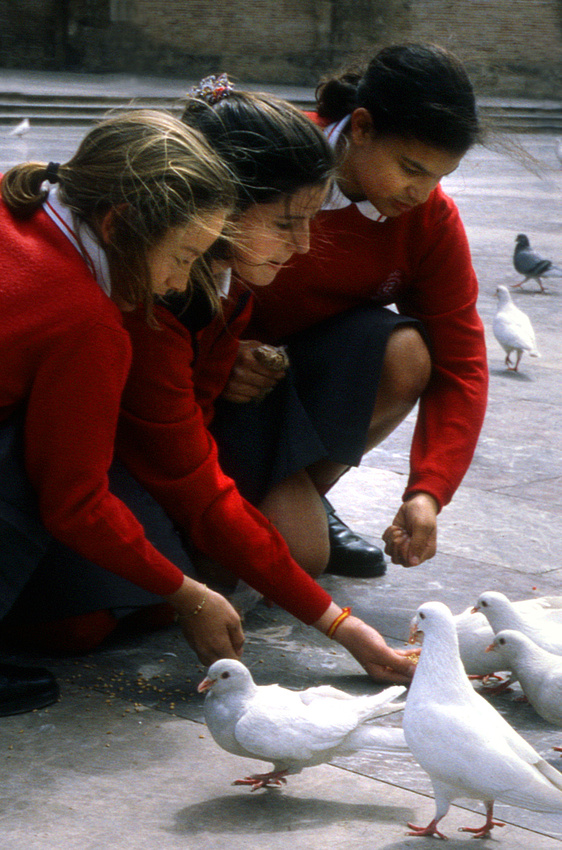
To the young photographer who wrote me, as well as anyone else who wants to make people feel something when they look at your images, I hope the above tips prove useful. Equally important, I wish you a lifetime of travel adventures and amazing photographs that capture and reveal your own quiet revolution of how you have come to see the world. Cheers!
]]>
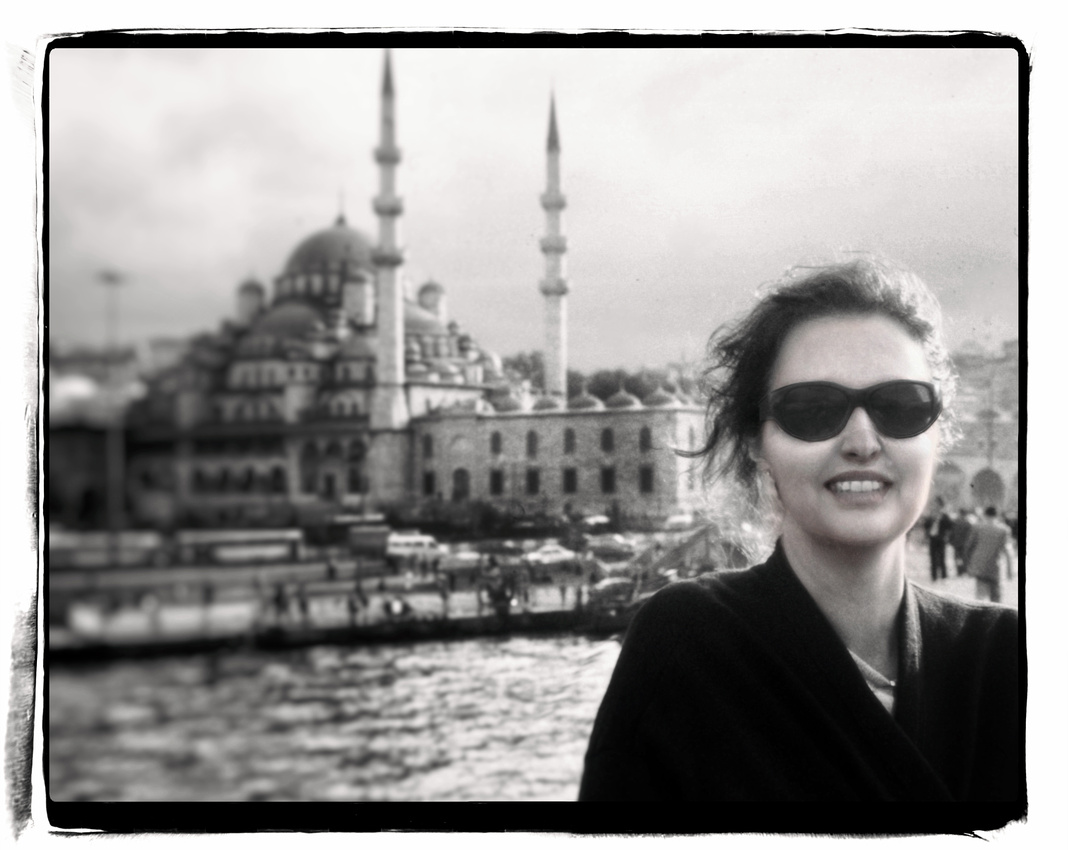
EARLY IN OUR MARRIAGE MY BETTER HALF never once complained when frequent travel-writing gigs took me away for long weekends whether it was Bardstown to cover the Kentucky Bourbon Festival or West Palm Beach for a story on greyhound racing. Ditto when weeks-long foreign assignments meant calls at all hours from remote destinations like Australia's Cape York Peninsula and the rural backcountry of El Salvador. There were, of course, the expected disconnects:
Me: “I ate witchetty grubs with my Aboriginal hosts tonight.”
Her: “Sal’s Snowball Stand opened yesterday.”
Everything changed when opportunities arose to travel with my best mate and Huckleberry friend. For us the destination didn’t matter though as a rule we enjoy the road less traveled, preferably abroad because the welcomed unfamiliarity of different cultures never fails to awaken and liberate us from our sardine-tin comfort zones.
Among the first things I notice during our shared journeys is that my innamorata looks even more beautiful in foreign countries (I’m convinced most women do). The reason is simple: Instead of the plumbing aisle at Home Depot, I'm instead glimpsing my Bae against the ruins of Pompeii, the vistas of Santorini, a medieval underground passageway in Southern France. One afternoon in Mykonos, for instance, sitting at a sidewalk café table sipping espresso while Cathy is running errands nearby, I look up to observe a tall, youngish woman exiting the farmacia across the street.
“Shazam,” I say to myself, “who’s that smoke-show Jackie O. rocking the jetsetter shades and Capri pants?” A split-second later, I gasp: “Yikes, it’s the wife!”
Another lesson is that nothing compares to seeing the world through the eyes of the person you love most in this world, such as watching her gaze through the taxi window in downtown Athens while speeding past iconic structures she remembers from high school history books.
“Oh my god,” she whispers. “It’s the Temple of Zeus.”

When in Greece we linger over slow Mediterranean dinners at candlelit sidewalk cafés scattered throughout the Plaka, the oldest neighborhood in Athens. At night the trees twinkle with lights and the air is punctuated with the distant sound of an organ grinder playing “Never on Sunday,” as the illuminated Parthenon glimmers from atop the Acropolis nearby. Occasionally the bliss is interrupted by the rattle and hum of a moped buzzing past with a Domino’s sign and stack of pizza boxes strapped to the seat rack. Go figure.
Another assignment to Greece finds us hunkered down on the legendary island of Lesbos, working up stories for my always grumbling editors. An early-morning stroll through the beach village of Eresos leads to a tidy bungalow fronted by an exquisite, overflowing garden. The elderly woman living there spies Cathy admiring her roses and beckons from the doorway for us to come inside, pointing to her wedding band as we walk past the white-haired gentleman snoring on the wrought-iron bench by the turquoise colored front door.
During the next two hours Anna prepares traditional Greek coffee as we sit in her homey kitchen framed by white-lace window curtains — her not speaking a word of English; us not a syllable of Greek — communicating best we can our respective lives through gestures and expressions. Anna is in her 80s and worked as a school teacher before she retired and began a second career as an artist. Gracious and kind, she tours us through her well-kept, modestly appointed home, gesturing proudly to her artwork hanging on the walls.
“If this were a Monty Python skit,” I whisper to Cathy, “we're about to be shoved into a room with all the other tourists Anna has taken prisoner over the years.” Cathy shoots me that all-too-familiar smile, the really sweet one she flashes in public when she can’t say, “You’re an idiot.”
Anna motions for Cathy to join her in the garden. The spry octogenarian snips off a couple of roses and gently places them in Cathy’s hands, my wife blinking back tears as they hug goodbye. For the next few minutes we walk the cobblestone streets of Eresos in silence, keenly aware that this island’s trove of breathtaking overlooks and ancient statues are little match for the unexpected cultural exchange and outpouring of hospitality we have just experienced.
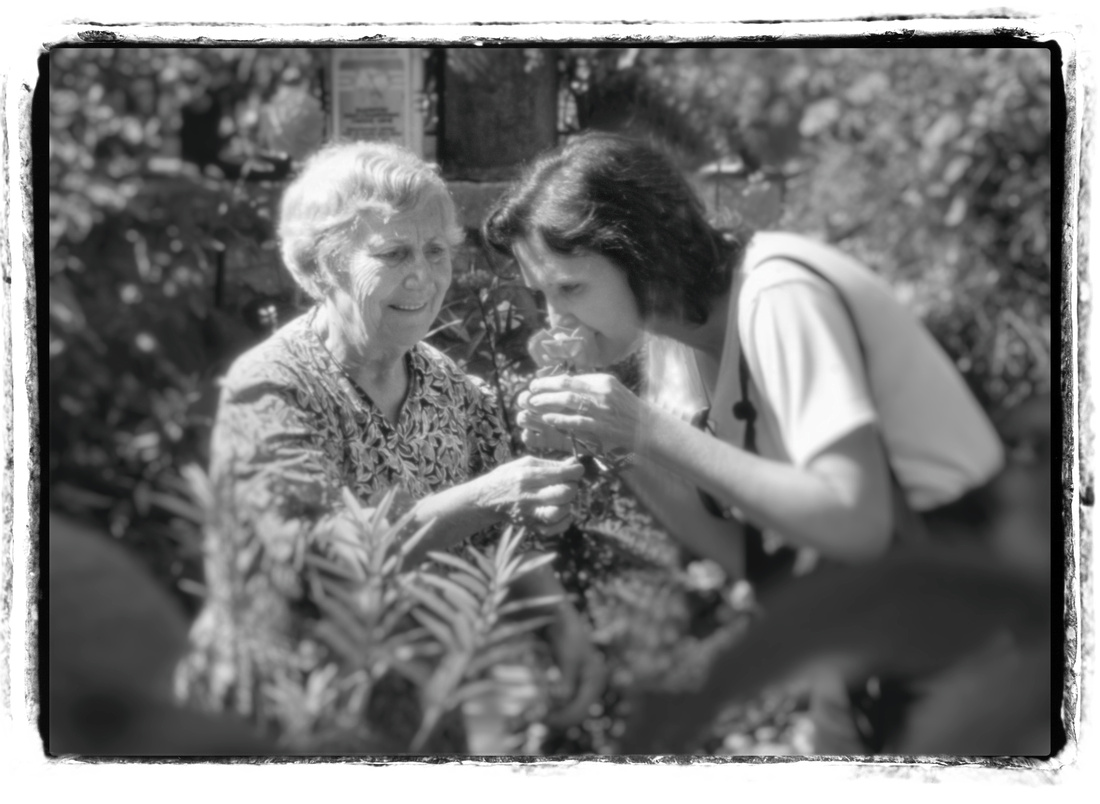
The silence, however, proves short-lived the moment it occurs to me that everything and everyone on the island of Lesbos is technically, well, Lesbian. I keep my wisecracks to myself. After all, locals have heard it all before especially from the estimated thousands of lesbian tourists who flock annually to this stunning Aegean isle for its International Women’s Festival and to soak up the vibe of Lesbos' ancient Sapphic lore. None of which stops me, of course, from snapping a photo of the hand-painted wooden sign hanging on the dockside restaurant: “Try our Lesbian sauce on fish and seafood."
BATHHOUSE BLUES

Our first joint trip to Istanbul finds me eager to introduce Cathy to a classic hammam, or Turkish bath, since I have masochistically enjoyed the experience during previous solo visits to this ancient metropolis once known as Constantinople and the only city in the world that straddles two continents: Europe and Asia. We head to Aga Hamami, built in 1494, the oldest in Istanbul and my long-time favorite, to enjoy the sexually segregated Turkish tradition.
What I deliberately do not tell my wife is that true Turkish baths are not the coddling, spa-like mini-vacations found stateside but rather Anatolian torture zones apparently sanctioned by The Hague’s International Criminal Court. The centuries-old ritual, which dates to the Ottoman Empire, requires guests to first recline and relax on large circular marble slabs heated by the continuous flow of soothing hot water. Without warning the beefy masseur unceremoniously heaves a large bucket of hot soapy water in your face — a real WTF moment for any first-time hammam-goer. Soon he sets to work scrubbing — nay, scouring — your entire body with industrial-strength loofah pads prior to the Ottoman version of a happy ending: cracking your back for the sheer fun of it.
On the women’s side, smoking is permitted — not by customers, but rather the masseuses. For Cathy the sight of a Marlboro dangling from the lips of her corpulent, half-naked Turkish masseuse is no doubt making this time-honored Istanbul experience nothing short of spectacular.
My bath massage finishes early so I wait in the lobby. Minutes later Cathy bursts through the door of the women’s side with a steely-eyed look I have never seen before. I hide my face behind a copy of Fanatik, the popular Turkish sports magazine, as my uncontrollable laughter is echoed by chuckles from a group of elderly men standing nearby who look on with amusement.
“You,” says Cathy, “are sooo dead to me.”
OH, MY GAUDI!
Truth be told the sum total of my solo assignments to the Iberian peninsula pale when compared to the first time I get to show Cathy my all-time favorite city in the world, Barcelona, during our first visit together to the capital of Catalonia, the politically autonomous and independence-seeking province tucked on the northeasternmost edge of Spain.
She falls hopelessly in love with the city. This as we hold hands like teenagers while exploring modernista architect Antoni Gaudi’s whimsical confections, such as his otherworldly Sagrada Familia and Casa Mila, getting lost amid the cobblestone rabbit warrens of the medieval Barrio Gothic, and strolling Las Ramblas, the city's famous tree-shaded promenade that stretches to the Mediterranean shore.
Adventurous days and romantic nights also find us prowling near-secreted tapas bars and browsing museums dedicated to the pre-Paris works of then-youthful Barcelona residents Pablo Picasso and Joan Miró, reveling in the Spanish tradition of lengthy late-night dinners (not unlike New Orleans), and exploring the solemn grace of 13th-century Gothic cathedrals illuminated solely by candlelight.
Eventually calamity strikes. My shoulder bag containing my camera, passport and money is stolen at a sidewalk café on the heavily pedestrianized Rambla Catalunya. Cathy experiences a bona-fide meltdown until a 30s-ish Dutch woman sitting nearby comes to our rescue. The woman excuses herself from her tablemates in Dutch, speaks Spanish to the police officer so he can file his report, and then in English offers to let us stay at her apartment if we are without lodging or money to afford a place. Talk about the dual blessings of multilingualism and the kindness of strangers.
All I know for certain is that we are scheduled to fly home from Barcelona the next day and I have no passport. It is 3 a.m. before we return to our hotel. I jump on the phone to the U.S. Consul for Barcelona whom I awaken out of a dead sleep.
Consul: “Where were you robbed?”
Me: “Rambla Cataluyna — we didn’t even see them, they were so fast.”
Consul (mildly chuckling): “Oh, I had my purse stolen there just last week. Come in tomorrow as soon as we open and we’ll get you a new passport. I promise, you won’t miss your flight.”
We didn’t.
FOR THE BIRDS
The gold-tile mosaics of St. Mark’s Basilica in Venice glitter in the background as a pair of tuxedo-clad café orchestras, dueling from opposite sides of Piazza San Marco, slide into sunset serenade mode. Few couples sitting at the half-empty tables this lazy October afternoon seem to give a sole mio that cappuccinos here cost $12 a pop and cocktails nearly three times that amount.
The group of school girls kneeling to feed the pigeons might look like angels, but the curly-haired little boy running through the square definitely has the devil in him. He leaps into the air and lands with both feet stomping terra firma. Hundreds of the startled birds take flight like a massive, fluttering gray blanket.
“Roberto!” several girls squeal in protest.
I had photographed my wife feeding the pigeons, this city’s unofficial mascots, during our first visit years ago to this time-warped tiara of frescoed cathedrals and leaning campaniles. What should have been a magical moment, however, turned into terror the moment Cathy opened the small plastic bag of dried corn we had purchased from the piazza vendor. The pigeons showed no mercy as the wildly flapping, over-gorged bastardi descended en masse, perching everywhere — her head, arms and shoulders, and then some.
“Get ’em off!” Cathy shrieked, her arms flailing in the air. “They’re dis-GUST-ing!”
My camera clicked away. “Don’t move — this is epic!” I shouted.
In Venice, apparently, boys and girls regardless of age never see eye to eye when it comes to pigeons.

HANGOVER CURE
Thirty-one years ago my bride and I honeymooned like rock stars on St. John in the U.S. Virgin Islands. Since then we’ve returned countless times like homing pigeons to our favorite West Indies paradise. Here we party like college kids.
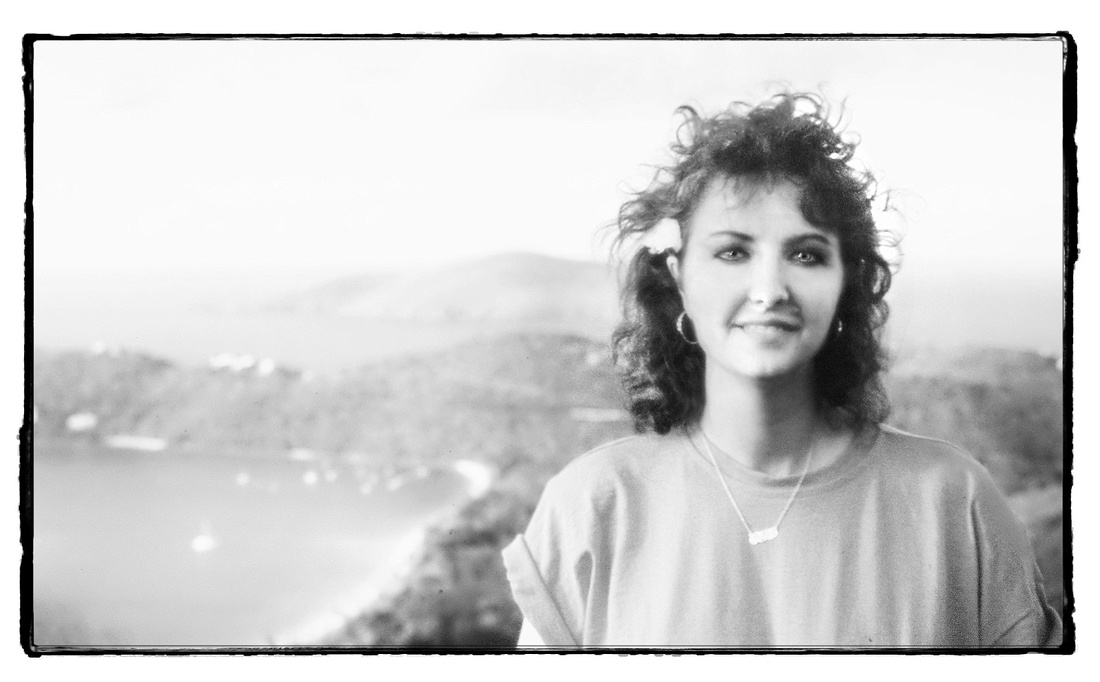
When the sun goes down, our favorite place to drop anchor is Sosa’s. Proprietor and Dominican Republic native Maria Sosa’s cozy Cruz Bay eatery caters to down-island Dominicans who’ve come to St. John looking for construction work. It’s not difficult to party deep into the blue Caribbean night thanks to the rustic venue's hearty West Indian fare which is served up alongside a sexy blend of rhythmic merengue music and Dominican-distilled Barceló Añejo rum. Four hours and twice as many cocktails later, I spy Cathy and the beautiful “Madam Sosa” (our nickname for her) at a nearby table, laughing and hugging all over each other like sozzled sorority sisters.
At Madam Sosa’s insistence, Cathy and I venture into the tumbledown restaurant’s dimly lighted, secret-ish looking back room. Here we find a few likewise inebriated couples slow dancing amid a seedy décor of mirrored walls, pulsing disco lights, and ratty red-leather banquettes occupied by skinny single guys slouching in sweaty work shirts unbuttoned to the waist. We take to the dance floor to see just how much sleazy fun we can handle before the room’s overwhelming pungency of quiet desperation forces us to bid adieu mid-merengue.
Staggering back to our accommodations, we trudge up steep Bay Street arm-in-arm like war buddies leaving a battlefield, past the Cruz Bay Cemetery. “Did we pay our tab?” Cathy asks laughing.

Next morning the alarm clock jolts me awake at 7:30 a.m. My plans call for a solo outing to shoot the island’s postcard-pretty beaches, but my hangover demands more shuteye. Cathy reminds me there is no guarantee the good weather will last all week and that I had better shoot while the shooting is good. She bolts out of bed.
“I’ll go with you,” she says, still groggy. “We’ll make a morning of it.” Her words are music to my ears.
First stop is Sosa’s. Cathy ventures inside to inquire if we had paid our tab from the previous night, as I keep our rental Jeep idling on the street, and soon returns. “According to Madam Sosa we not only paid our tab,” says Cathy, “but we’re a charming couple and we should come back tonight.” As soon as my new liver arrives.
Next up is Hercules for a take-away breakfast of coffee and traditional West Indian curry-meat pies called pates. This for our drive along Northline Road — home to St. John’s world-renowned pearl necklace of drop-dead gorgeous white-sand beaches of coral reefs and tropical Windex-colored waters. The day’s adventures later finds us ignoring a “No Trespassing” sign and jumping a chain-link fence like middle-aged hooligans to photograph the interior of a long-abandoned, gorgeously dilapidated building and its glorious vistas of this near-magical island’s stunning hill-framed shoreline.
Together we nail the shot and later celebrate with a sumptuous meal of enoki mushroom samosas and pan-seared mahi at Asolare, a romantic fine-dining den perched on a hillside overlooking the twinkling lights of Cruz Bay.
Our restless spirits ache for the next adventure.
Say what you will about marriage. Best I can tell, I hooked up for life — 31 years ago and counting — with the coolest travel babe and partner-in-crime on the planet. Lucky me.
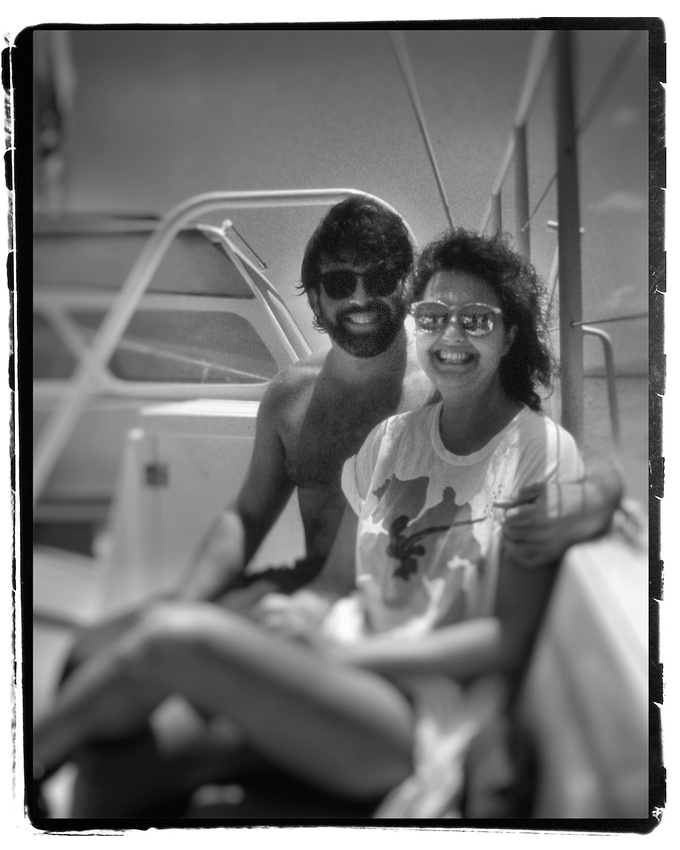
]]>
1. 'KICK' IN THE PANTS
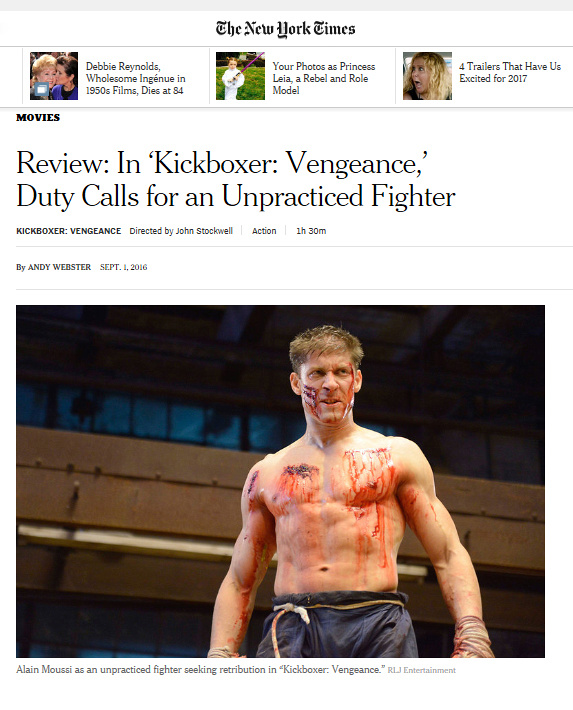
For a photographer it doesn’t get much cooler than when your stuff appears in the freakin' New York Times (see top photo). This was the case with unit stills I shot on the set during production of the mixed martial arts movie "Kickboxer: Vengeance" (released this year and starring Jean-Claude Van Damme), which were used in the NYT's review of the film. Ditto for Variety and the Los Angeles Times (see images below) plus a dozen other notable publications. Yeah.
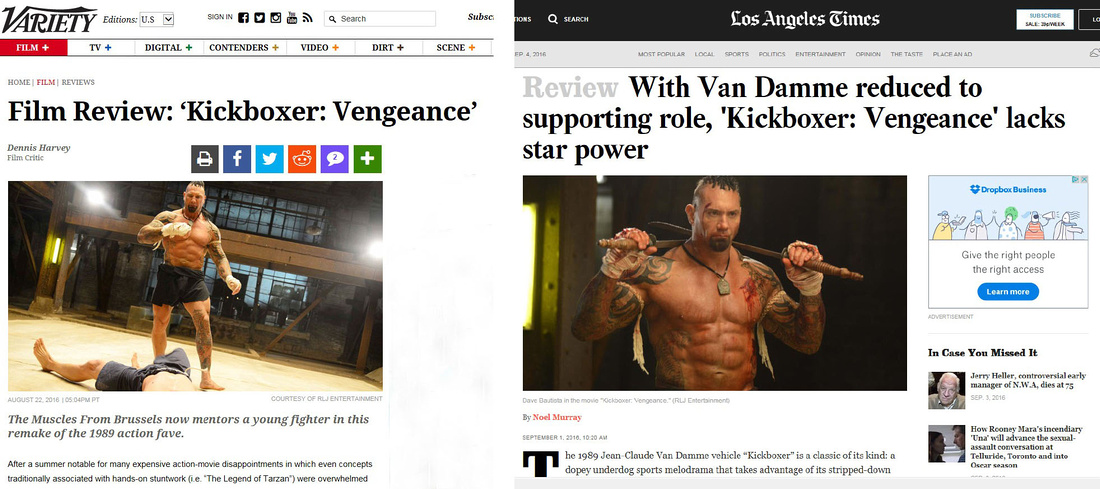
2. SCORE FOR ADORE
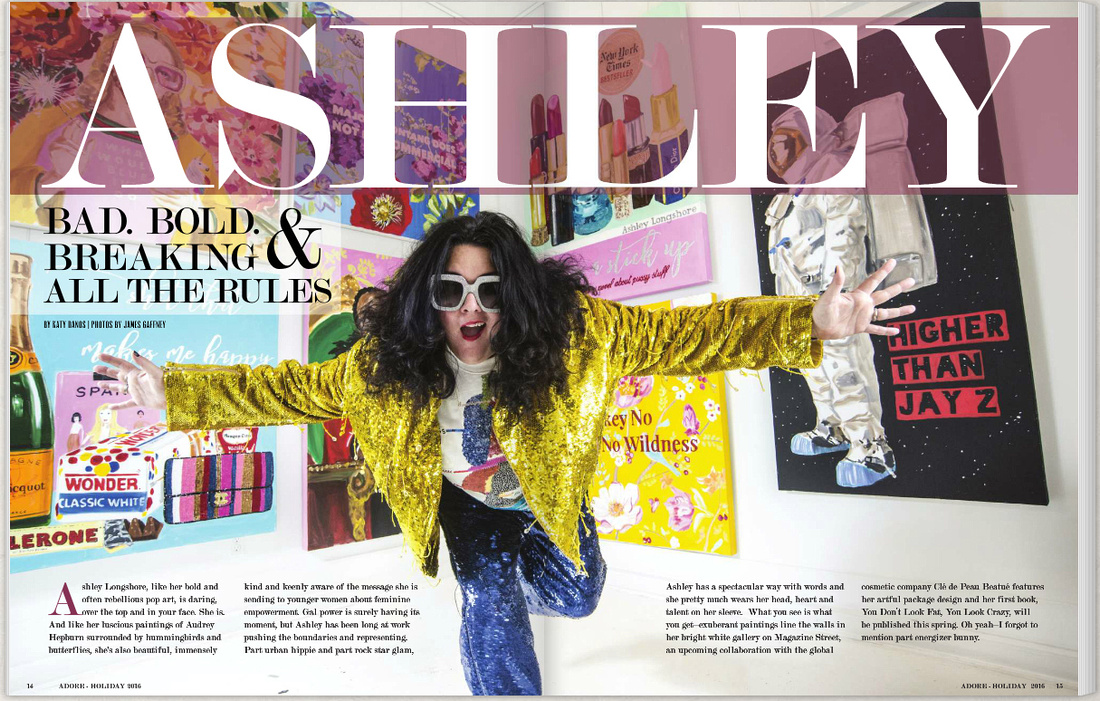
It was a professional thrill when former Times-Picayune colleagues Sara Barnard and Victor Andrews, who today ply their brilliance at the city’s other daily newspaper, the New Orleans Advocate, tapped me to help photograph the premiere issue of Adore, the Advocate’s new cool-’n-chic style and décor zine. Several issues later Adore is going gangbusters and the assignments have provided the opportunity to flex my creative wings for magazine editorial while working alongside cutting-edge writer Katy Danos. This was definitely the case during my photo shoot with acclaimed New Orleans-based pop artist Ashley Longshore (see magazine spread above) whose kinetic glitter-punk cool exploded my lens.
3. SOMETHING TO DECLARE
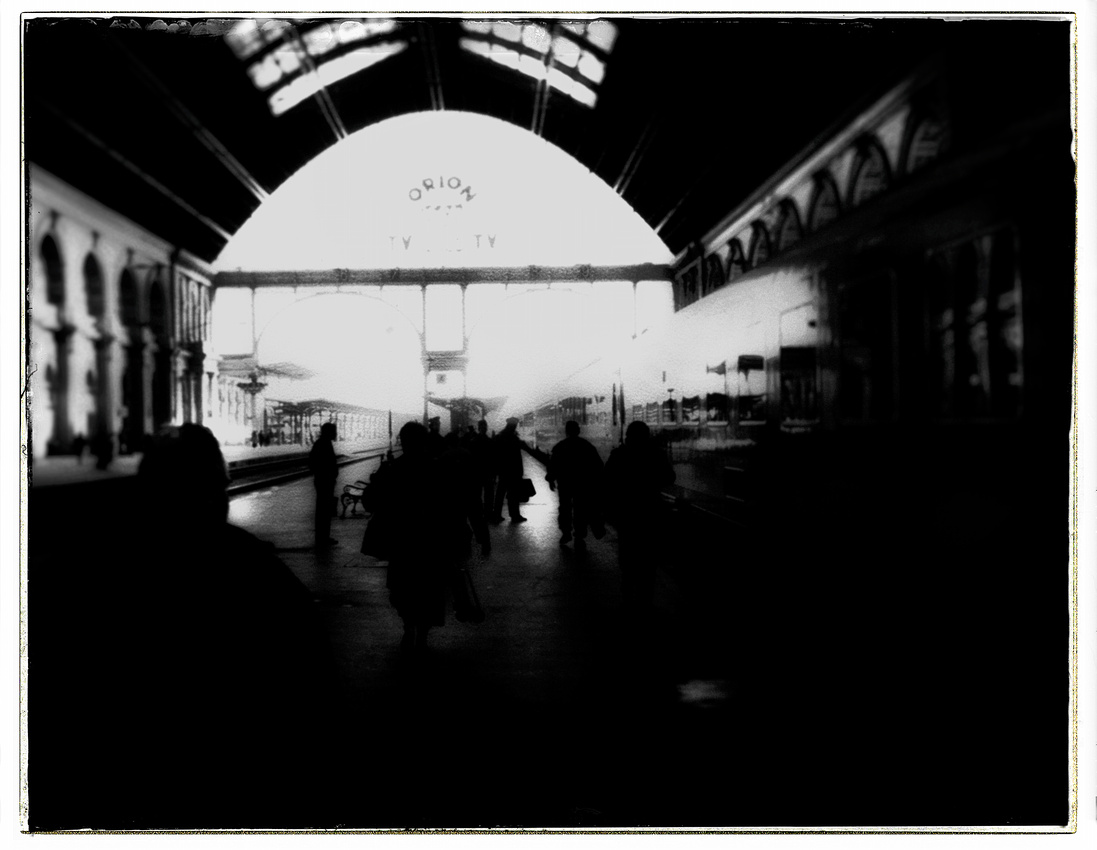
This year I debuted at my online store a 33-image series of fine-art travel photography titled “Obscura.” Described by a colleague as “ephemeral black-and-white dreamscapes of ambiguous worlds captured in the cinematic style,” the photographs span a quarter-century spent tramping around the globe as an infinitely curious freelance travel photojournalist. The photograph above is of the Kerleti Train Station in Budapest. Check out the collection here http://bit.ly/1jWTEPN. All images are available as prints and canvas wraps.
4. REAL WHIRLED
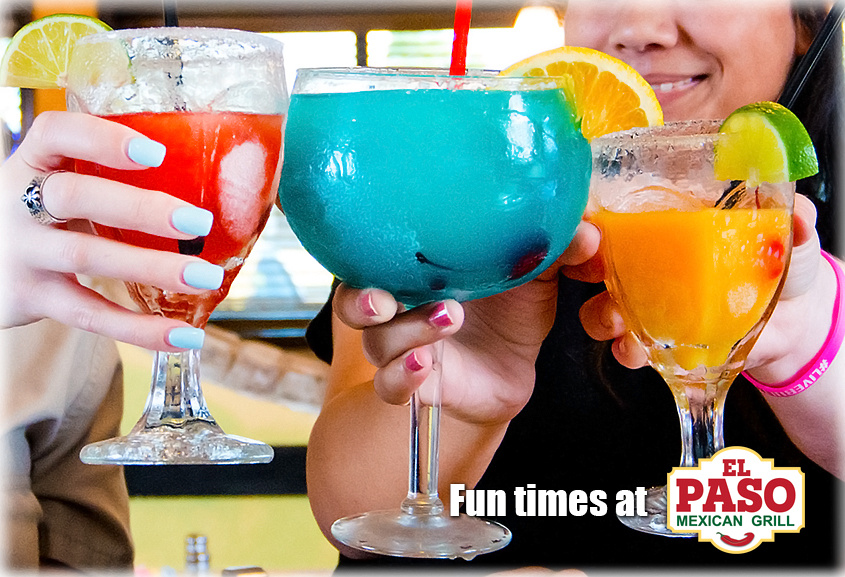
Nothing makes me happier than when painstakingly executed photo shoots finally meet the bright lights of the real world of advertising and marketing. In 2016 this included roll-outs for French Press Coffee House (above photo) and El Paso Mexican Grill (below). Both are clients of James Haik, one of the brightest New Marketing whiz kids in New Orleans, who today oversees his successful multimedia agency Yee-Haw Media Co. It's always a privilege to work with Yee-Haw Media to provide eye-catching photographic content for the company's clients.
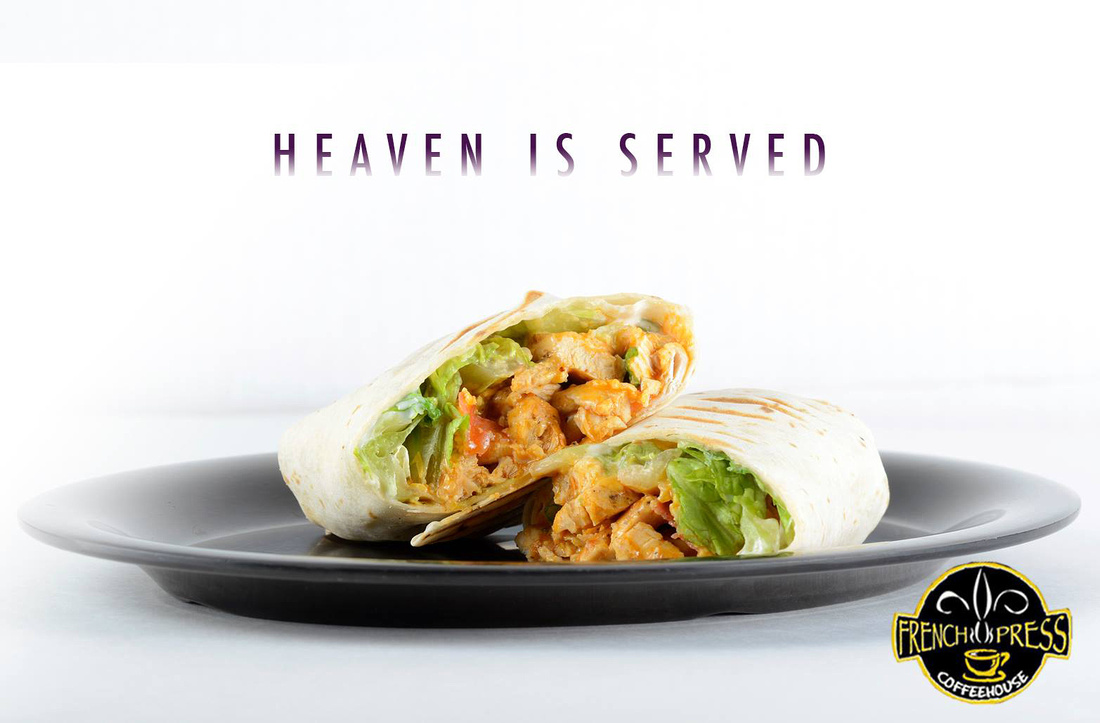
5. INTO THE DARK
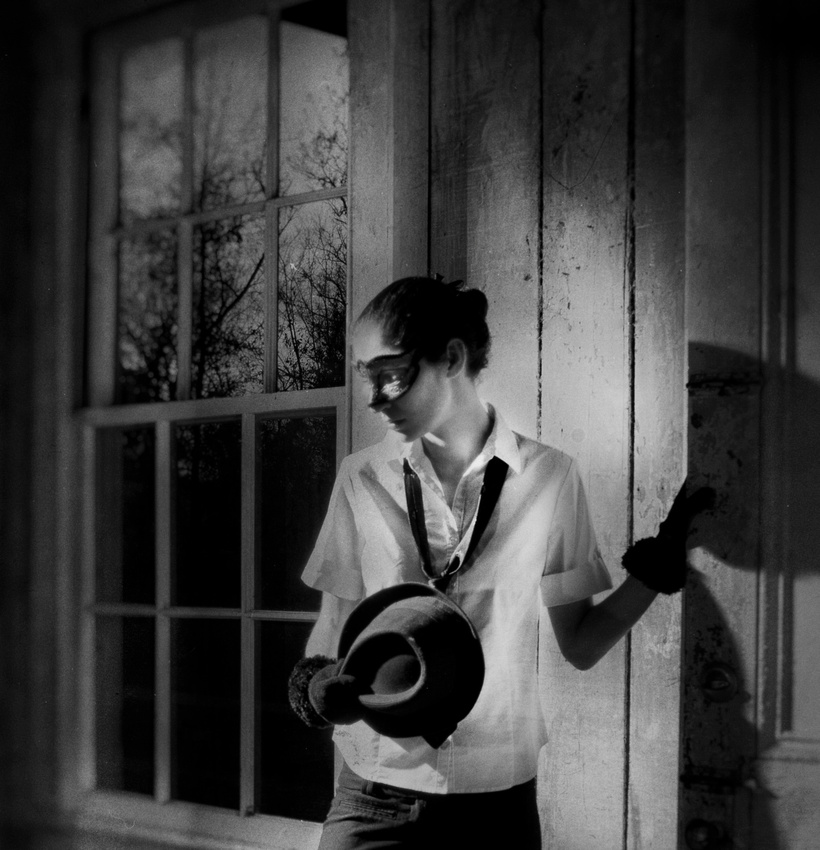
This year saw me team with Larry Cataldo, my lifelong best friend from high school, for a project to pair my black-and-white, fine-art images to songs he's composed and recorded for YouTube-bound videos. Larry is an enormously talented musician and songwriter since the days our band The Reporters was showcasing original songs at West Hollywood clubs back in the late '70s/early '80s. The photograph (see above) selected for “Darkly, Darkly,” a song about lost love composed in the Celtic folksong tradition and sung by Kathy Coe, was one I created inside a century-old Islenos home with my amazing model and creative collaborator Rachel Jacob. More to come …
6. FACE TIME

Typically a headshot session at a law firm is a relative breeze because the photographer has one major element going in his favor: Lawyers, as a rule, are sharp dressers. A far more tricky challenge comes during the ubiquitous group shot if the photographer's goal is to create a natural looking image that is imbued with a dignity and stature befitting this time-honored profession. Fortunately, the barristers at the third-generation Charbonnet Law Firm helped make this portion of our afternoon shoot a dream, as I carefully configured them around the large conference table in such a way as to put the focus on co-founder and managing partner Robert P. Charbonnet.
7. BON VOYAGE
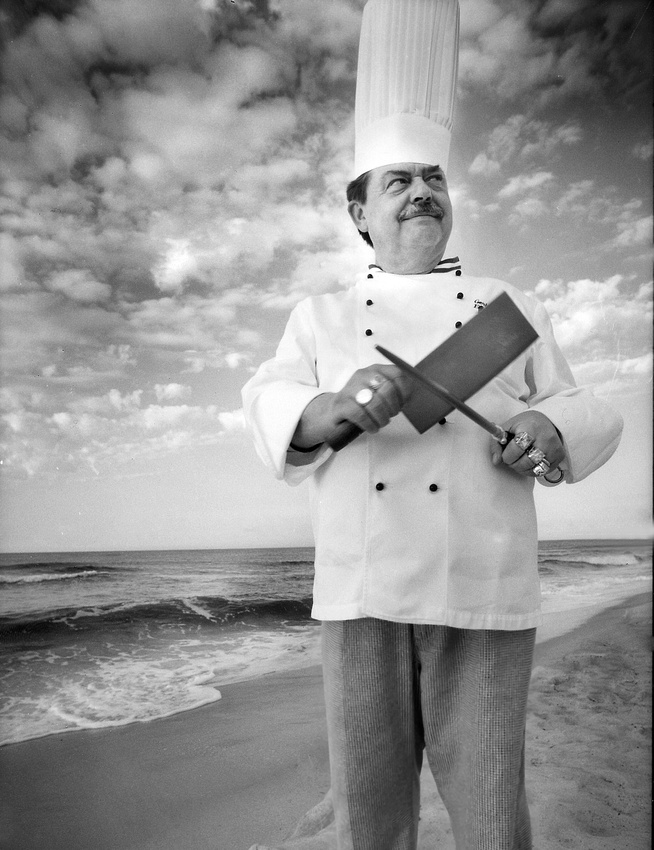
This year the Gulf Coast and New Orleans lost one of its culinary lions and tireless innovators: Chef Gerhard Brill. This image (see above) of Brill is special to me because it was the first-ever photograph I created for The Times-Picayune (back in 1989, no less!), as well as my first food-related image in a photography career spanning a quarter century and counting. RIP Chef Gerhard.
8. SHELL SHOCKED
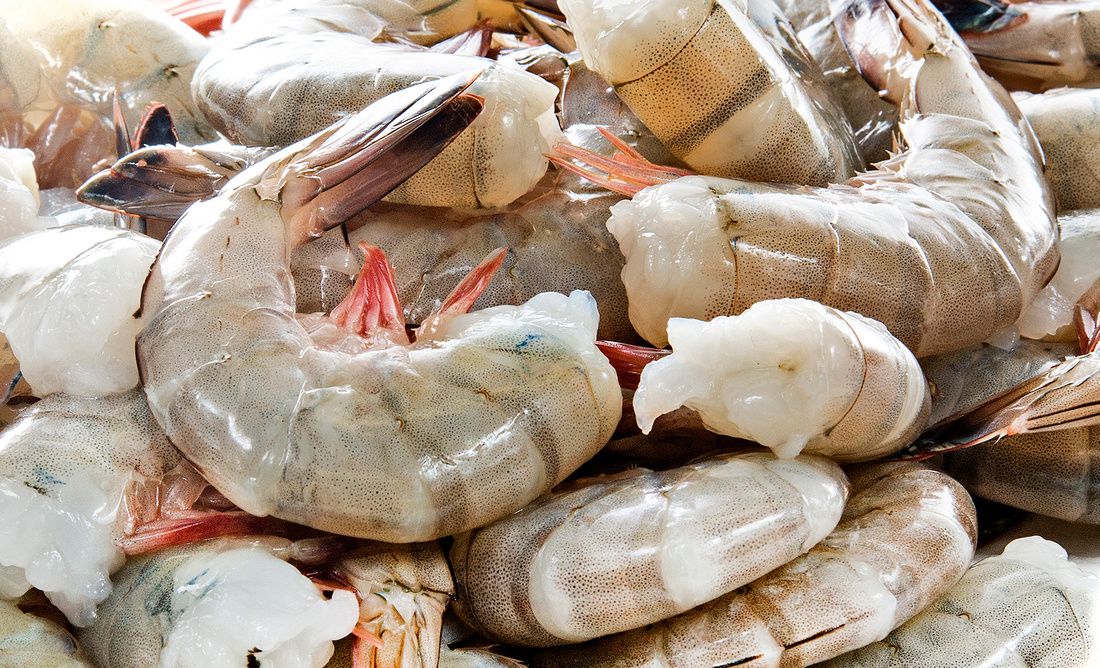
I’ve spent the past 35 years living in New Orleans surrounded by Gulf Coast shrimp because it literally sets the table for so many locally popular foodstuffs: shrimp étouffée, shrimp remoulade, shrimp po-boys, shrimp stew – the list goes on, trust me. But the first time I ever photographed the crustacean raw and in the shell was this year when the good people at Gollott Seafood in Biloxi, Miss., hired me to work my magic for the company’s special marketing project. Once you've been this intimate with shrimp you'll never look at it -- or eat it -- the same way again.
Ciao, kittens, and mega-thanks for reading and being a part of the journey. It wouldn't be the same without you. See you in 2017!
]]>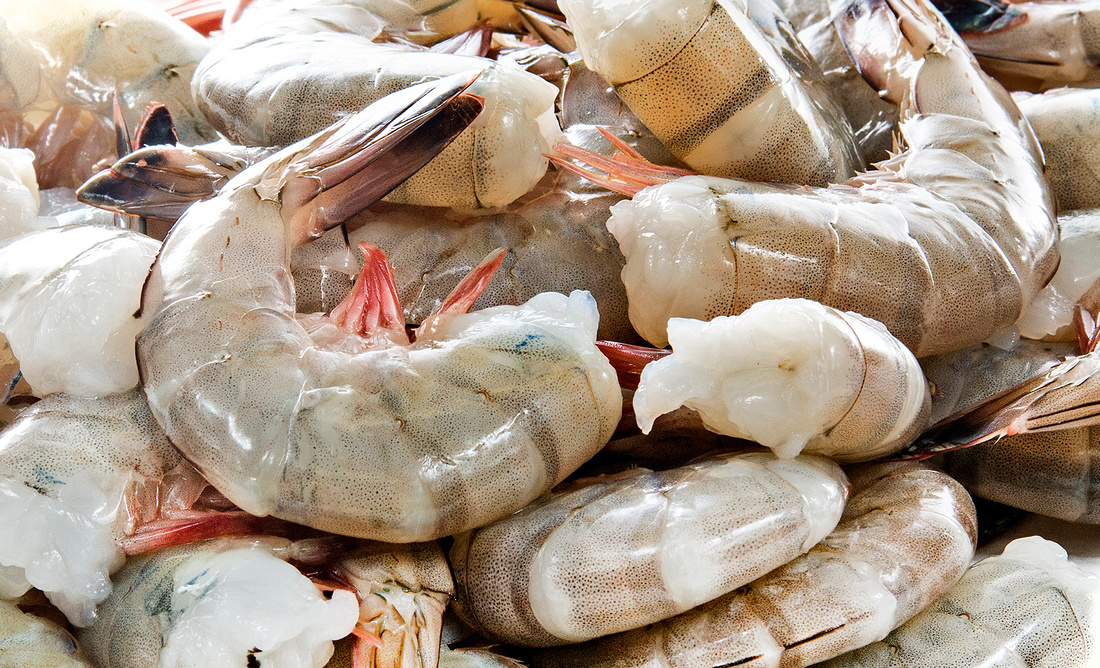
Ask any well-rounded, professional shooter and they'll tell you that food photography is a whole different beast from photographing models, automobiles, jewelry, corporate headshots, and the like. Part of the reason lies in the behind-the-scenes essentials of planning and organization, especially for big shoots, absent from most how-to tutorials which I will cover in this blog post. Granted, "organization" is not a particularly glamorous subject compared to shop talk about camera gear, composition and angles for food photography, but with 20 years experience working for newspapers, magazines and commercial clients, I’ve picked up a few gems that all but guarantee smooth sailing when the day of the shoot parts the clouds to let the fun shine in. Yes, it should be fun. Read on ... (All photos by James Gaffney Photography.)
I. PRE-SHOOT CONSULTATION
If I'm shooting for a commercial client, as opposed to an editorial shoot for a newspaper, magazine or blog, the pre-shoot consultation (or production meeting) is second in importance only to the photo shoot itself. The pre-shoot consultation is when I meet with the restaurant owner and/or executive chef to discuss in detail not just what we are going to shoot but also how they want the food to look.
1. The final look of the food will be determined by several factors not the least of which is lighting. Food photography lighting can range from what I call “brighty-white” (where high-key lighting is used to create a minimum of shadows and maximum of midtones and highlights), to the opposite end of the spectrum which I call “Euro-moody” (which relies on shadows and darker midtones to create a sultry, quasi-romantic look), as seen in the images below. In the middle are all manner of variations.

2. The pre-shoot consultation is also where I work alongside restaurant staff to develop how the food is to be set and styled. Options include photographing the food against a white background such as inside a light tent or against seamless white paper. This is advantageous if my client likes a super-clean look or has a graphic artist who is going to need a clean clip-path in Photoshop during post-processing. Another option is shooting in a natural setting and/or with textural backgrounds. Here you'll need to discuss the kind of backgrounds -- for example, faux stressed wood, blue or earth-tone Mediterranean tile, etc., which you'll need to buy ahead of time or order online. (I always check first with the client as to their budget for these expenditures.)
Discuss, too, the color and style of table napkins, plates, types of silverware, etc. Typically you’re not going to want each and every single dish styled exactly the same way. Take an inventory of what the restaurant already has on hand and determine if you will need to purchase additional styling props. Ask to inspect the silverware because if the knives, forks and spoons look old, weatherworn or scratched, it will detract from the photograph. Upscale or antique silverware will need to be polished ahead of the shoot.
Below are examples of food set and styled utilizing different backgrounds, bases and utensils.
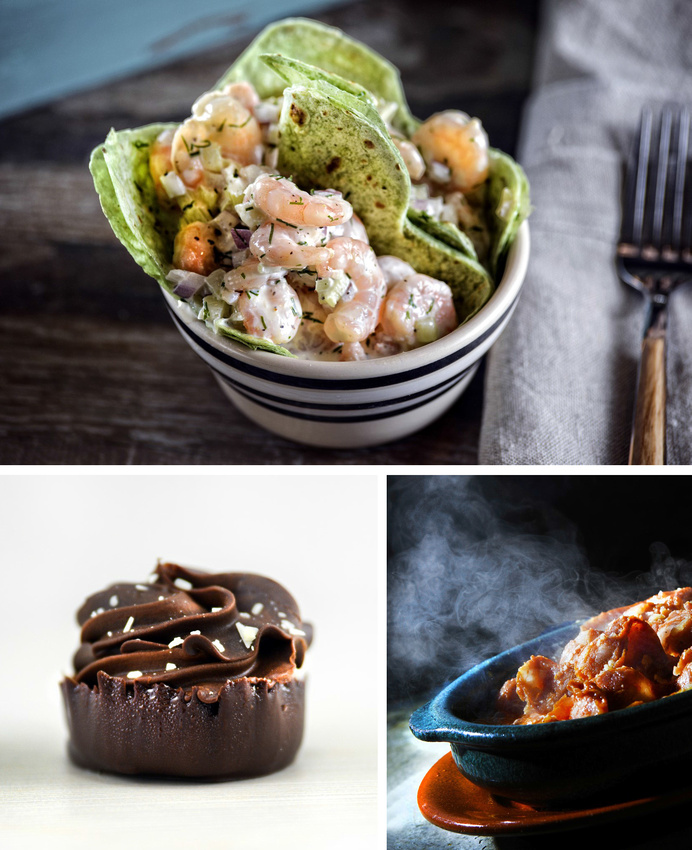
3. Create a shot list. This will include every dish to be photographed during the shoot, which will likely feature a mix of starters, main courses, plus a few salads, soups and desserts. Maybe a couple of cocktails. For the photographer it's always helpful to know what's coming out of the kitchen before it actually does. Also, review the menu and work with the chef to determine those dishes that will be most photogenic. Not every dish is worthy of being photographed. Salads and anything sculptural like soft-shell crab, for instance, are always winners; less so those dishes laden in heavy sauces because the sauce typically covers up the food. Below are examples of beautifully sculptural, photogenic dishes:
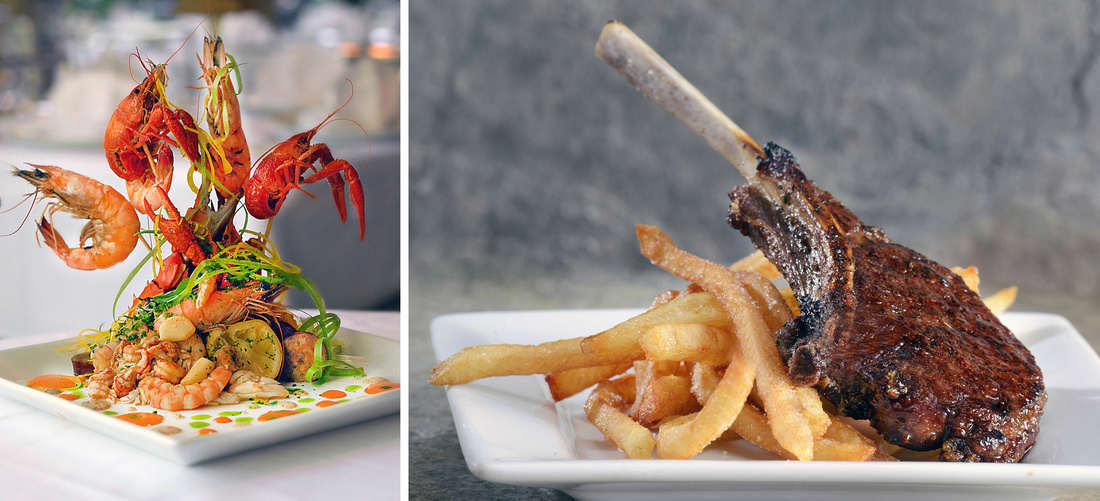
Also, look for ways to style the dish so that items on the plate are differentiated creating clear space between food items. A dinner plate completely covered with food without spaces or differentiation makes for a less visually interesting/attractive image. Here the chef will be your best ally because they want only their most eye-appealing dishes represented on the restaurant’s menu, website, marketing roll-outs and advertisements, etc.
4. Group dishes into two categories – hot and cold. Why? Hot dishes need to be photographed no more than five minutes after they are plated. After five minutes the food begins to cool and the rapidly dropping temperature changes not only the colors but also the textures. For instance, meat fats dry out and lose their glistening quality; steamed veggies lose color and start to look flat; sauces congeal, losing their savory appearance, and begin to look oily. Cold dishes, on the other hand, allow longer times to photograph. Perhaps you and the chef agree to shoot all of the cold dishes first and push the hot dishes toward the end of the session if only because they need more time to cook. Or vice versa. Either way, take the lead and make a decision.

5. Remind the chef not to the “slam the table” by preparing hot foods too quickly ahead of time because the longer these dishes are waiting in a holding pattern the greater the chances the dish will have to be re-cooked from scratch. Why re-cook? Simple: reheated dishes don't photograph well. So, don’t do it – ever.
6. Determine ahead of time which dishes need to be undercooked for optimal image outcome. As a rule of thumb almost everything that gets cooked should be undercooked for food photography – this way vegetable colors are brighter, the textures more firm; meats have more fat and thus more glistening qualities; fish looks more pink and flaky; etc.
II. SHOOT DAY
7. Talk, talk, talk: Ongoing communication with the chef is essential because there will be (or at least should be) no small amount of back and forth between the photographer and the person in the kitchen taking lead responsibility for how the dish appears on the set when being photographed. Yet, no matter how well you’ve planned there is bound to be a wee bit of chaos – sorry but it goes with the territory. Perhaps it’s something as simple as a miscommunication that results in the barbecue shrimp flying out of the kitchen earlier than expected when your photographic backdrop/styling was custom created for the beef Wellington. Don’t panic -- shrimp happens. Simply regroup, refocus (literally and figuratively) and get your game back.
8. Safety, please: Depending on the number of people on hand the day of the shoot, a food photography set can become easily congested and has the potential to become a hazard considering the amount of expensive lighting gear, large light modifiers, light stands and tripods all in close proximity. You’re going to be less than overjoyed when someone accidentally trips over a light stand and injures themselves or crashes your $600 Einstein monolight. My rule of thumb is simple: keep everyone off the set other than the photographer (me), my assistant (if applicable) and the chef and/or their assistant. What you don't need are unnecessary hangers-on cluttering your set and disrupting your working environment and workflow. Remember, as the photographer the set is your domain. So respect and attend to your set with a keen eye on protecting everyone’s safety as well as your valuable equipment.
9. For my eyes only: I specifically spell out in my contract that I am the only person allowed to take photographs during the shoot. Period. This means no cell phone or camera photography by “assistants” and/or marketing or agency personnel, etc. This is how I protect my photography, my client, my reputation and lighting configurations that have taken years to perfect. This ironclad rule holds no matter if the person wielding the smartphone or point-and-shoot is the chef’s spouse or the mother of the ad agency owner. Images resulting from the shoot are my intellectual property until that time when I contractually waive my ownership rights.
In an era where the ever-exploding abundance of stock images available for free reproduction rights or low-cost licensing fees has devaluated the market for individualized food photography, there will always be a need for commercial and editorial shooters to deliver something no one else can: professionally rendered, high-quality images of a restaurant’s unique and signature dishes for which it has earned its hard-won reputation. Cheers!
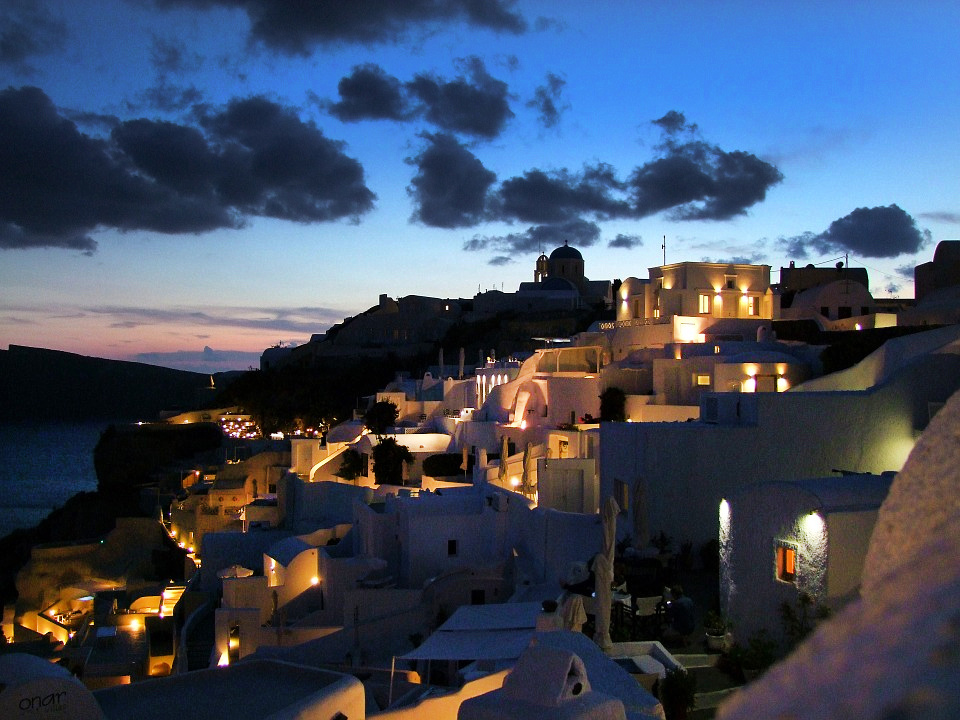
OIA, Greece – The scorching Mediterranean heat and my flirtatious sciatica are beginning to make our half-hearted quest to find this island town’s old fortress short-lived at best. Especially when we spy the English-language sign for a potentially far more interesting amusement: the Santorini Observatory. A little sky-gazing in the afternoon? And for only four euro? Too good to pass up.
“How much is that in U.S. dollars?” I ask my traveling companion who is already punching numbers into her cell phone's currency converter.
“Four-and-a-half bucks -- the dollar is strong with this one,” she says.
The signage points down a narrow, stepped walkway. Before long we arrive at a cerulean-tiled terrace with potted geraniums and, aimed toward the heavens, a trio of research-grade telescopes that includes a German-engineered Meade 20-inch MAX2. In the opposite direction, nearly 1,000 feet directly below us and the observatory's cliff-top verandah, half a dozen mega-yachts moored in the harbor dot the sweeping view of the cobalt-blue Aegean Sea. Surrounding us is a pleasant jumble of dazzling white "sugar-cube" cave bungalows, or skafta, and blue-domed Orthodox churches for which Santorini is best known. The identical blue hue accents everything on the island – door frames, window boxes, tavern tables, you name it.
Way too much pretty on this island. Time to stare into the sun through a $36,000 telescope.
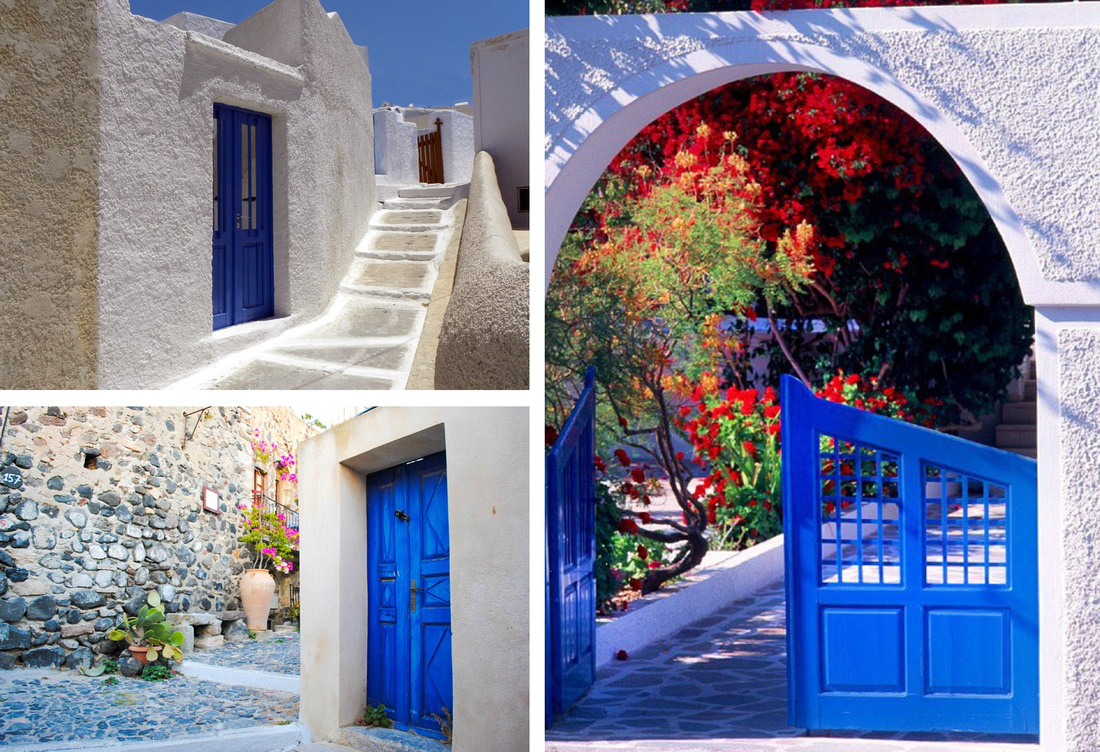
Astronomers and German expats Cornelia Haertelt and Werner Popp focus their broad smiles on the visitors. “This is our grand opening and you’re our very first customers!” Haertelt says excitedly.
Haertelt and Popp, both from Stuttgart, pour cold water for their thirsty guests who are only too happy to huddle beneath the patio table's large umbrella on a sizzling June afternoon.
“We’re trying to bring together philosophy and science,” Haertelt says. “We are all made of stardust – we are all like little stars on Earth."
More than 2,000 years after the Greeks Pythagoras and Ptolemy invented mathematics-based astronomy, the observatory’s first official customers are soon taking turns ascending wooden step-stools to gaze at the sun with ultraviolet safety filters. Any fears I have that our German hosts are determined to literally blind us with science evaporate as we watch swirls of dark sunspots inch across the surface of our solar system’s blazing star.
“OK, this is awesome,” says my traveling companion.
The white-bearded Popp smiles. “The clear skies and low ambient light of Santorini,” he explains, “makes the island ideally suited for gazing at stars by night and the sun by day.”
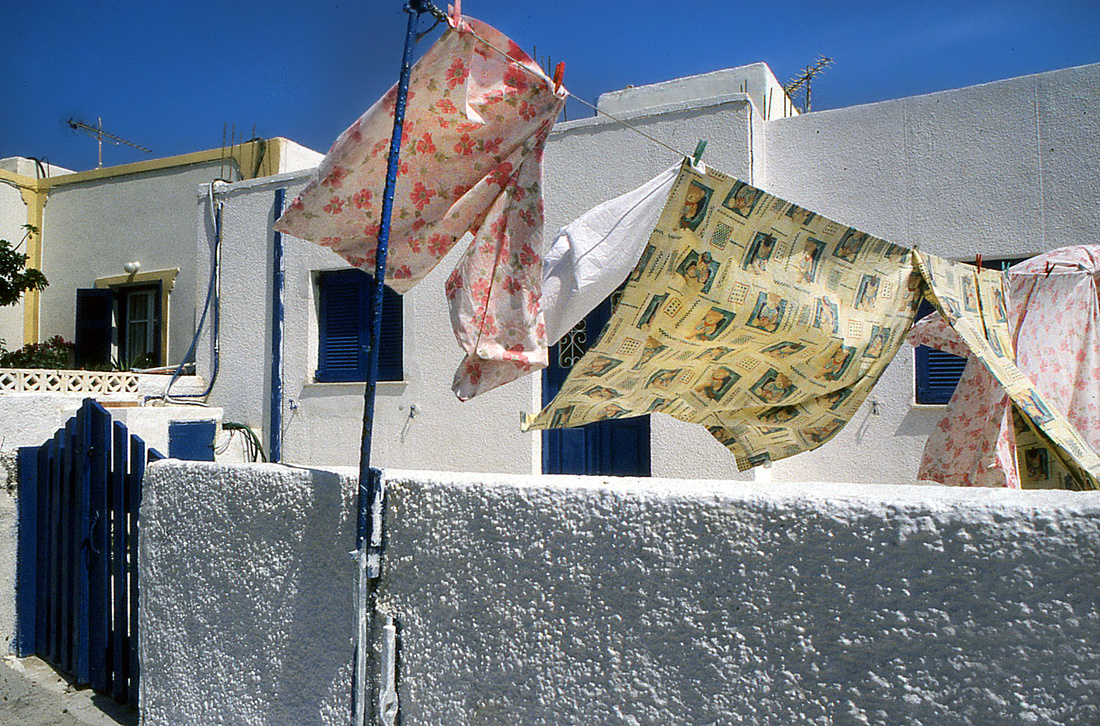
Day or night the atmospheric village of Oia (pronounced EE-yah), perched high above the sea, is surely the little star of Santorini, Greece’s island of 7,000 residents located in the southwestern edge of the Aegean. Quiet mornings find elderly, white-haired women in black housedresses toting small grocery bags of bread and colorful fresh vegetables up winding flagstone alleyways. Cats nap in cracked doorways which offer rare peeks inside sundrenched Mediterranean courtyards, where clothes and pillow cases hanging from laundry lines catch the sultry winds blowing off the coasts of Turkey and North Africa.
Sunlight warms the village’s homey art-gallery terraces and the patios of little shops of tchotchkes. Couples and youngish singles yawn awake at sidewalk tavernas. Some are busy reading Ekathimerini, the English-language Greek newspaper. Others tend to their hangovers with eye-opening gulps of thick Greek coffee or sips of anise-flavored ouzo. And so the day begins.
Then it’s time for a nap.
FIRA NOT, PLATO
Santorini might lack the architectural drama of Rhodes’ acropolis or the Sapphic lore of Lesbos, but the island is at once simple, sensual. And mercilessly photogenic. Over the decades Greek islands have stolen the show in dozens of movies ranging from “Zorba the Greek” (filmed on Rhodes) and “Captain Morelli’s Mandolin" (Cephallonia) to the Mykonos-based “Shirley Valentine,” the tale of a Liverpool homemaker’s midlife self-renewal after battling marital ennui and the empty nest.

But it was the menagé à trois-themed flick “Summer Lovers” in 1982 that gave many Americans their first glimpse of Santorini. Today the near-flawless weather of this stunning Aegean jewel keeps the island’s international airport hopping with European and U.S. travelers during the May-October tourist season. This poster-perfect isle of volcanic black-sand beaches is also a favorite among daytrippers and weekenders who arrive at the port of Skala by cruise ship or overnight ferry from Athens.
To reach the capital of Fira, travelers arriving by sea take the three-minute Swiss funicular or opt to ride a donkey up a 2,000-foot high zigzag of switchbacks. A few hearty souls even choose to walk the 580 steps. Either way, skip the donkey ride on the way down in the late afternoon. Weekend warriors have been known to break into cold sweats when their peckish beast of burden, lured by daily feed time at the waterfront dock, begins scrambling downhill. Not for the feint of heart, sir.
Well-pedestrianized Fira buzzes with the rattle and hum of tourists and mopeds. Peaceful outlying neighborhoods line Fira’s Agiou Mina Street, which runs south along the raised lip of the caldera, or sunken volcanic rim. Here open-air tavernas serve up a little quietude alongside such local staples as fava bean soup, melitinia (cheese and honey pies) and tomatokeftedes (fried “tomatoballs” mixed with bread and onions).
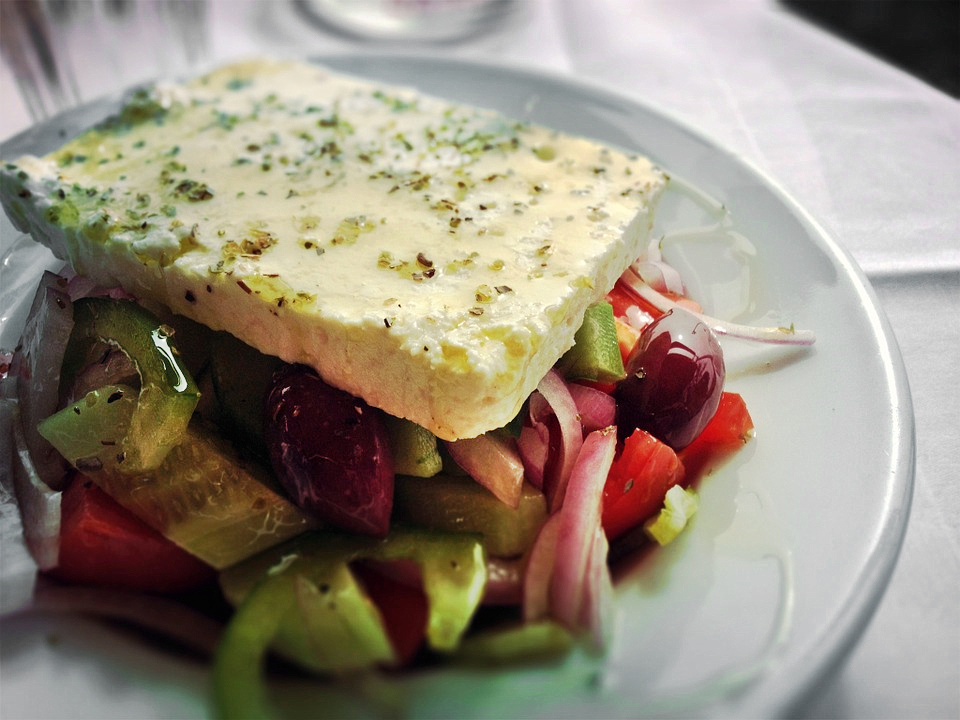
A daily special not on the menu are the free panoramic views of the Aegean Sea and Santorini’s outlying sister islets, Thirasia and Aspronisi – all that remains of the caldera. As history reminds us, one of the most catastrophic volcanic eruptions in the past 10,000 years occurred here in 1450 BC. When the volcano collapsed, wiping out half of the island, all that was left behind was the crescent-shaped Santorini – and endless speculation that there beneath the sea lie’s Plato’s mythological Atlantis.
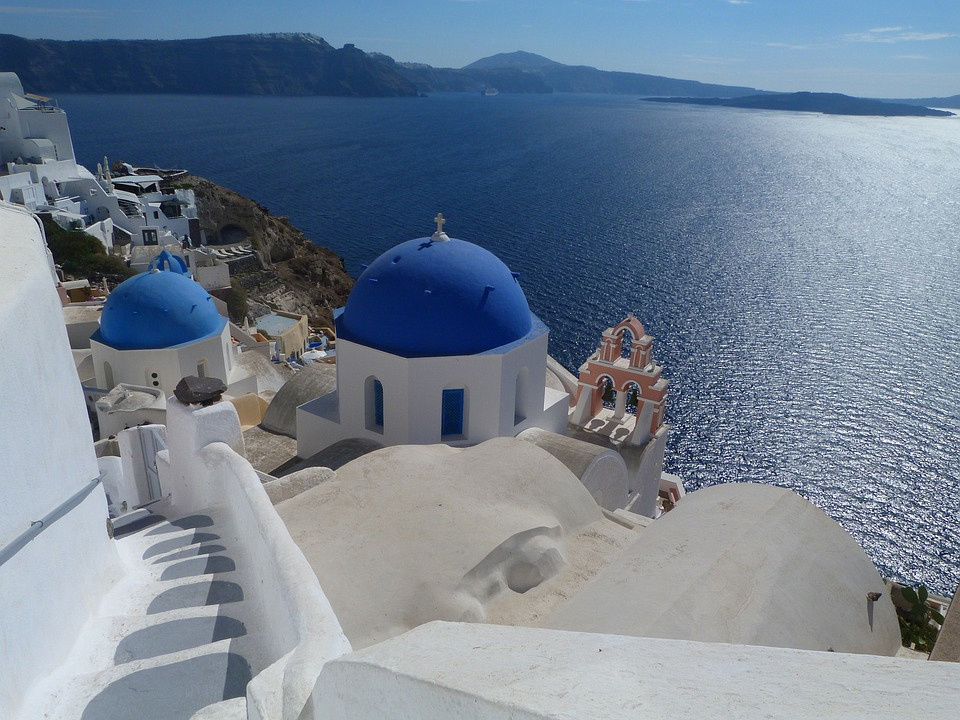
Nearly as legendary are the sunsets. Locals and tourists alike flock like homing pigeons from all over the island to Oia village, nine miles north of Fira, to enjoy a bird’s-eye view of the remains of the day: a purple Mediterranean sky slowly downshifting into heavenly crimson behind the Aegean horizon. Gathered this evening on the rooftop of Franco’s Bar is a sunset-savvy international crowd of mostly Brazilian, French and Australian travelers watching the transition to dusk as a Chopin etude plays on a stereo in the background.
By 11 o’clock the bar revs to life with boinky-dink-a-doink bouzouki music and, later, Euro-disco and its hypnotic rhythm tracks reminiscent of the sound of midnight metros. “When the fun gets going,” Swiss expat Johann Kunzler says grinning, “it doesn’t let up until five in the morning.”
Fortunately, Oia’s maze of narrow, donkey-wide walkways with eight-foot-high walls helps protect party animals tumbling home at sunrise from veering too far off course. And sometimes not. But the worst that happens to us one early morning is we mistakenly descend the hillside of flagstone steps that leads from Oia down to the water’s edge and the fishing village of Ammoundi and its romantic outdoor taverns. Tucked like a lover’s whisper at the bottom of the cliff, this Greek comma of sleepy shoreline bliss has been luring travelers on unchartered journeys for thousands of years.
Just ask Ulysses. Or Shirley Valentine.

SCULPTURE ON HOLIDAY
Heading south leads deep into the rural heart of Santorini’s wine country. During August harvest visitors to the Buttari vineyards in Messaria roll up their pants for a little grape-stomping fun to help produce some of the island’s well-regarded white and red wines. Nearby, Akrotiri, a prehistoric Pompeii buried beneath volcanic ash and first discovered in 1967, is still under excavation and open to the public. History buffs short on time should instead hit Fira’s Archaeological Museum to explore a far superior collection of Bronze Age jugs, amphorae and ochre frescos culled from this 3000 BC Minoan colony.
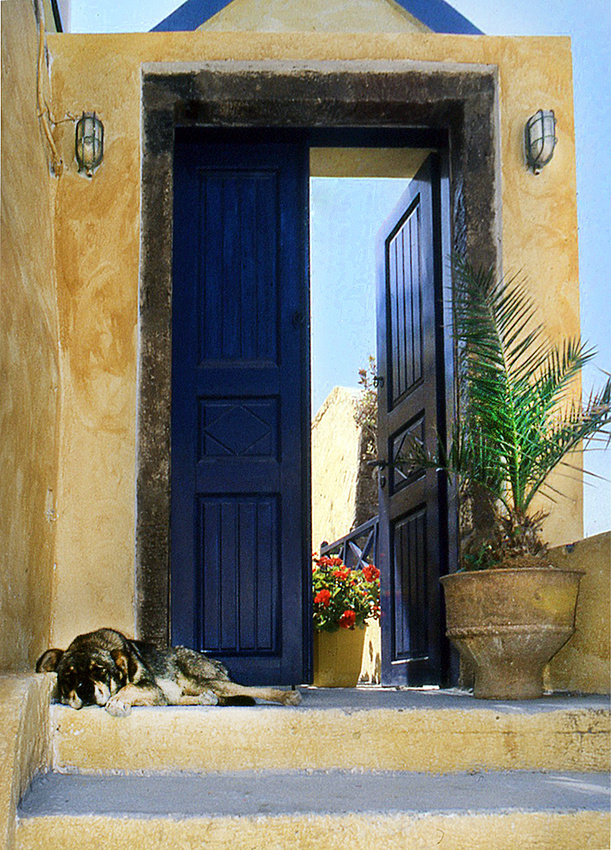
Eventually the two-lane road ends at the bucolic seaside resort of Perissa and its clothing-optional black-sand beaches adorned with stunning reminders of Greek culture’s millennia-old devotion to the human form.
“They look like sculpture on holiday,” my traveling companion says surveying a beachscape of virtually perfect au natural physiques.
Midnight in Perissa offers up a far less artful shoreline moment: Turns out “secluded romantic beach” may refer to the absence of other beachgoers after dark but not the stealthy, late-night lobster hunter, with catch in hand, who unbeknownst to us casually walks directly past our little beach blanket bingo.
“Kalispera!” he says merrily in Greek for “good evening.”
Friendly people.
Next morning the quiet drive back to Fira to drop off the open-air rental Jeep leads past now-familiar homes and churches trimmed with the identical cobalt tint of the sea. It is agreed that despite this island’s wondrously raucous bouzouki bars, delicious tomatokeftedes and ancient history, it is the color of this Aegean paradise that will likely linger long after journey’s end.
“It’s like everyone on the island passed around the same bucket of blue paint,” my passenger says grinning.
Wistfully, the color is dubbed “Santorini blue.” And, no, Home Depot doesn’t carry it.
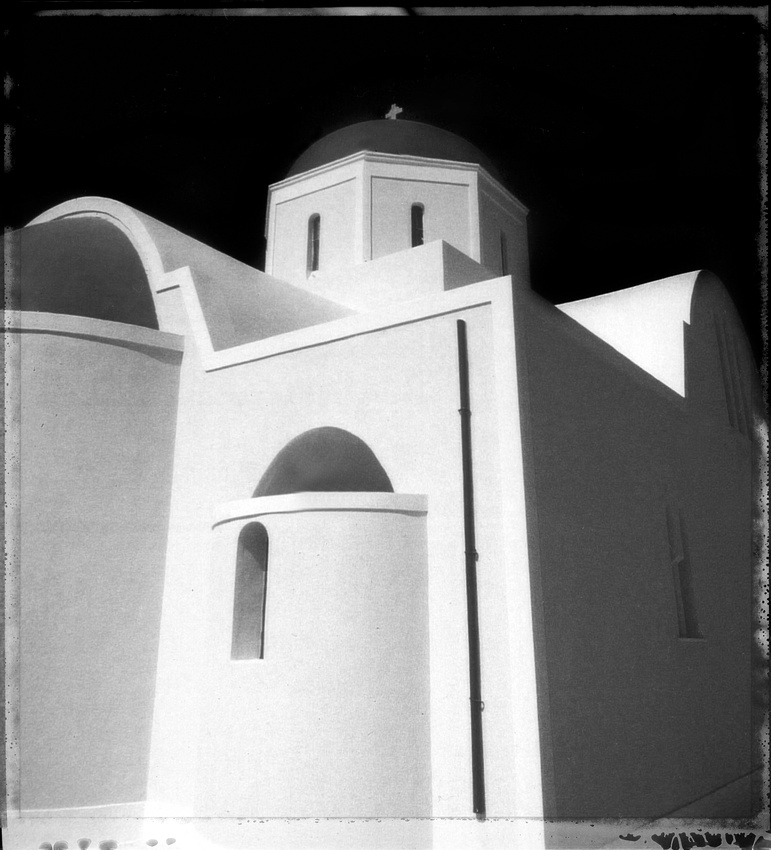
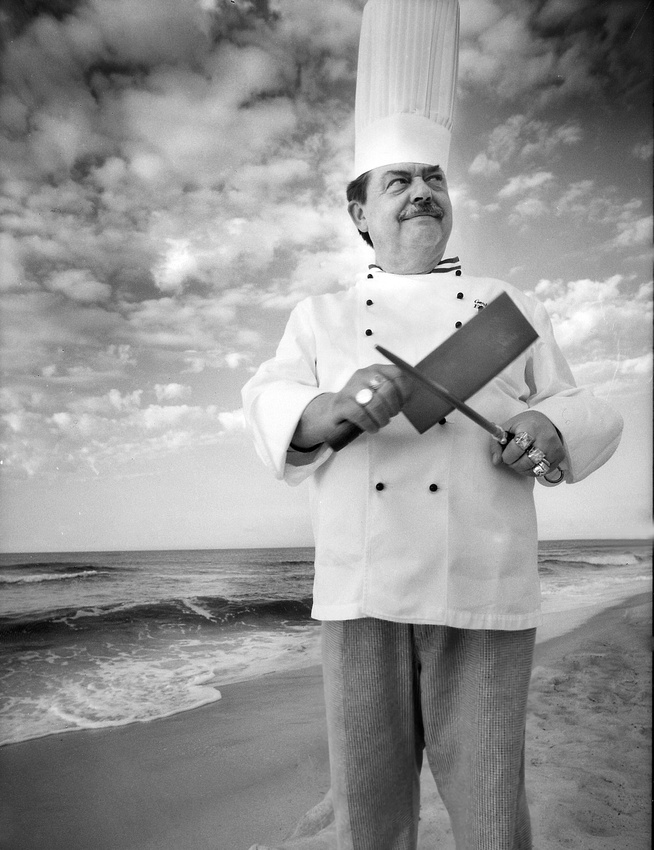
This image of long-time chef Gerhard Brill is special for several reasons. It was the first-ever photograph I took that appeared in The Times-Picayune (in 1989, no less – gasp!), as well as my first culinary-related image in a photography career spanning a quarter century and counting.
I was staying at the Perdido Beach Resort while on assignment for a syndicated news service to write a story on Orange Beach, Ala., when I learned that Brill was working as executive chef at the hotel's fine-dining restaurant Voyagers. Brill was a household name to many if not most New Orleanians. He had made a name for himself in the Big Easy at the city’s legendary Commander’s Palace where he worked for six years under the equally legendary Paul Prudhomme, retooling and modernizing the Creole dining den’s time-honored menu to feature more indigenous seafood and lighter sauces.
Around the time Emeril Lagasse had stepped in to oversee the kitchen (it seems every famous New Orleans chef has spent time at Commander's), the German-born and classically European-trained Brill left to open his nouvelle-Creole bistro, Gambrill’s, which never failed to garner rave reviews. According to long-time New Orleans food and restaurant critic Tom Fitzmorris, “Chef Gerhardt was the creator of blackened redfish (a take on the way Commander’s had always cooked its steaks).”
For our photo session I wanted something – anything – other than the standard-issue chef-in-the-kitchen kind of shot. So, I asked Chef Gerhard if he would mind standing on the beach (“Closer to the seafood you love to put on your menus,” I joked at the time) in his toque while sharpening his cutlery. He was not only willing to accommodate the young photographer and travel writer from New Orleans, but even hammed it up just a bit for the occasion.
If there is a reason my photo of Gerhard Brill means more to me today it’s because I just learned he passed away last January at age 76.
RIP Chef Gerhard. Thank you for helping to inspire my career-long passion for photographing all things related to the culinary arts. You will not be forgotten.
I promise.
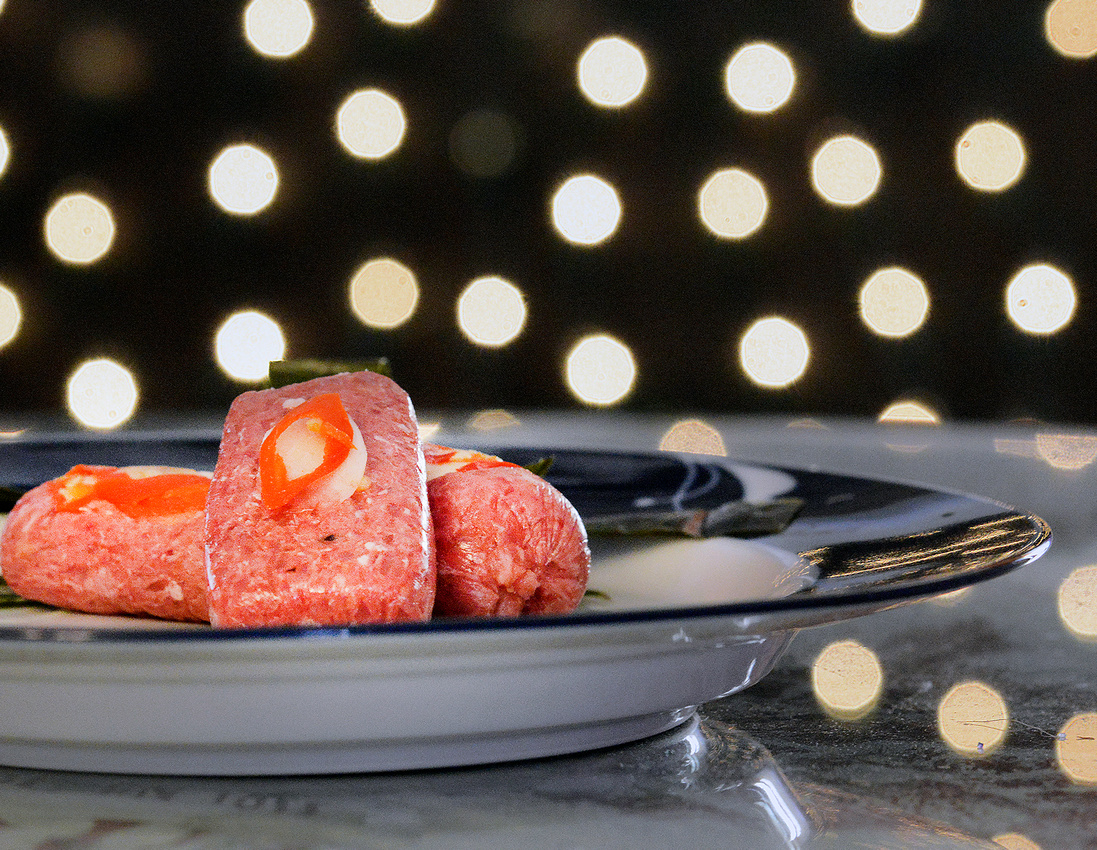
Typically when I shoot food it’s always the finished dish – the meticulously pretty, stylishly arranged and beautifully lighted endgame of unseen and rarely photographed kitchen labors. Sort of like the photograph at the top. So I jumped at the chance to photograph my dear friend Tootie preparing virtually from scratch a traditional dish of her native Vietnam known as nem (pronounced nahm), a flavorful cured-meat finger food. Tootie prepares nem alongside other traditional food for her large family's annual celebration of Tết, the Vietnamese New Year, which this year is Monday, Feb. 8. I first tasted Tootie's nem during a road trip with her husband (and my likewise dear friend) Tommy. The addiction was immediate. Below is an image I created of Tootie and Tommy during a photo shoot I did with them last year. They're as adorable as Facebook puppies. OK, almost.

A brilliant home cook acquainted with my globetrotter's passion for exploring foods of the world, Tootie has taken me to school on Vietnamese cuisine and that country’s time-honored foodways during glorious meals at her cozy home as well as over dinner at various Vietnamese restaurants. Our grocery-shopping “tours” at local Asian markets find me walking alongside my culinary teacher like an eager undergraduate as she narrates the relative freshness -- and overall worthiness -- of the daily selection of, say, pig feet and exotic imported fish. She points to a refrigerated bin of durian, a spiny-skinned fruit found throughout Southeast Asia and whose pungent smell was once described by travel and food writer Richard Sterling as a mix of “pigs**t, turpentine and onions, garnished with gym socks.”
“Everybody has an opinion about durian,” says Tootie, a corporate executive and mother of two.
In Vietnamese culture the balance of food, family, work and life is inextricably connected. As might be expected, Tootie’s kitchen creations reflect the distinctly rich flavors and a deep respect for the unique gastronomic traditions of her 1,000-year-old native homeland. This holds true whether she is preparing popular staples like phở, bánh mì (Vietnamese sandwiches or “po-boys”) and gỏi cuốn (spring rolls), or fish porridge and the richly complex bún bò Huế (rice vermicelli and beef soup), the latter born in the former royal courts of central Vietnam.
Now for the nem ...
First, sirloin beef is run through the grinder.
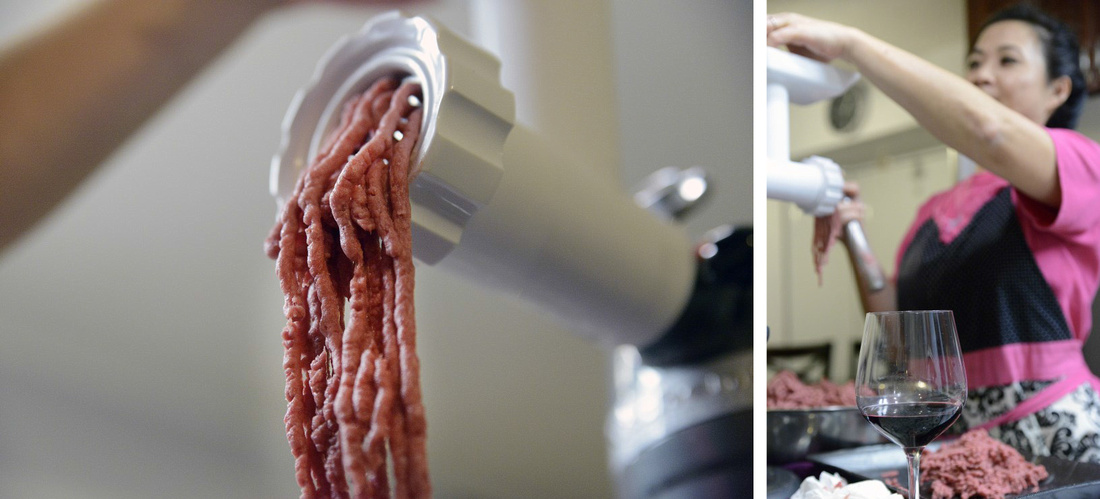
Next, Vietnamese-style shredded pork skin is washed, chopped and minced.
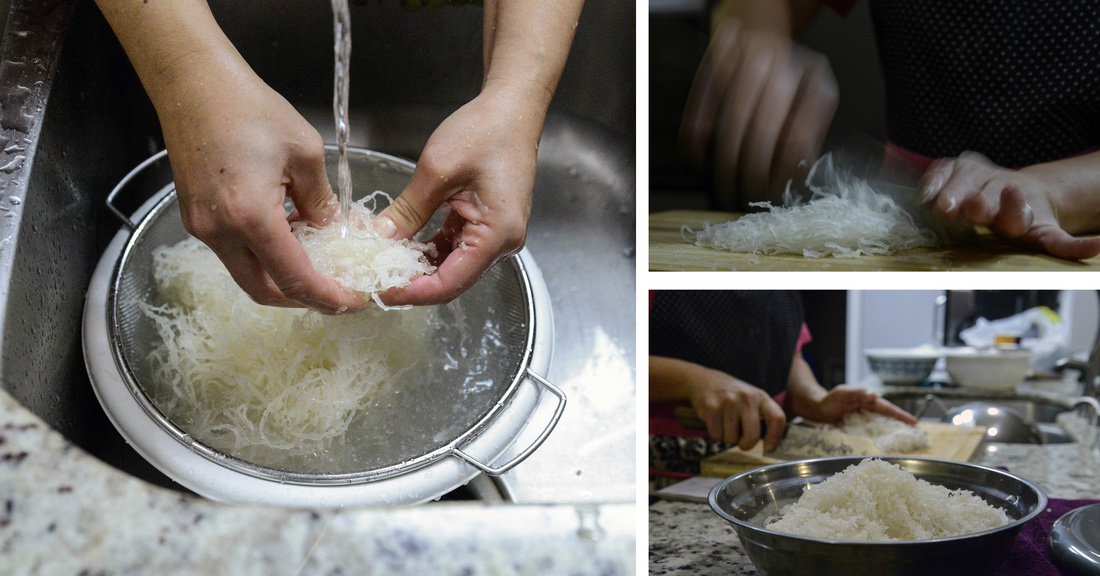
The diced pork skin is spooned into the mixing bowl of ground sirloin beef along with salt and pepper, sugar, peppercorn, garlic, seasonings, plus a curing and hardening ingredient. (FYI: I slowed my shutter speed to 1/15 of a second to create the appearance of a veritable kitchen-mixer meat bomb spinning at 2,000 rpms ... just because I can.)
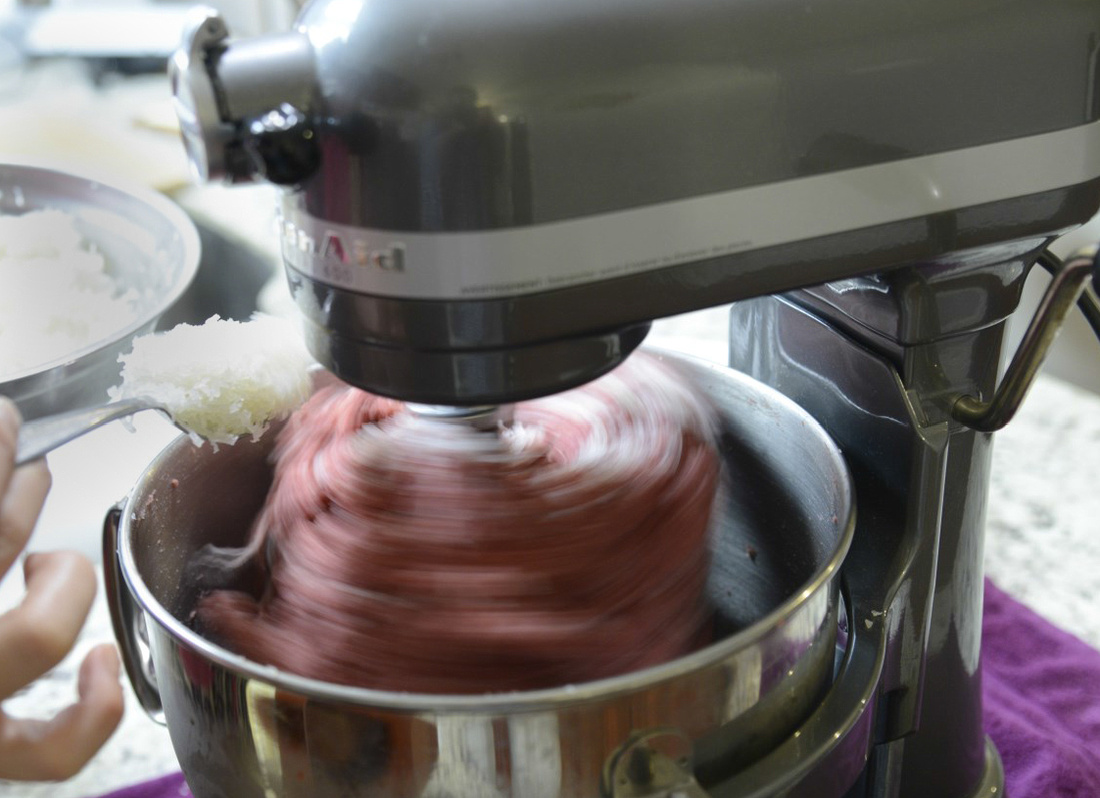
Next step is mushing and flattening the mixture of sirloin, diced pork skin and spices into a flat tray before putting it into the refrigerator for at least one hour to allow the mixture to ferment and harden.

When the trays of spiced, fermented beef are pulled from the fridge they’re ready to be sliced into small cubes and (literally) pressed into service.
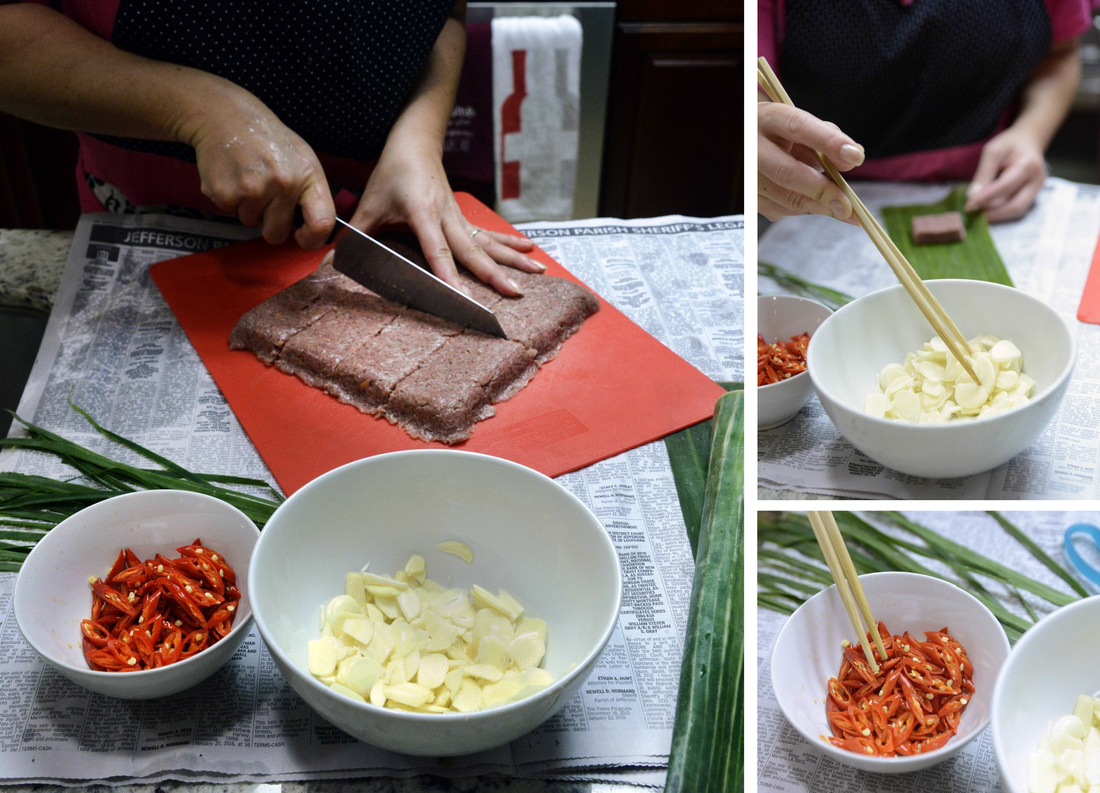
To dress up the nem for Vietnamese New Year, Tootie places each meat cube on a banana leaf, tops it with a thin sliver of garlic and hot pepper, and slowly rolls it up. Then she uses a thin strip of banana leaf to tie each square as though it were a tiny gift.
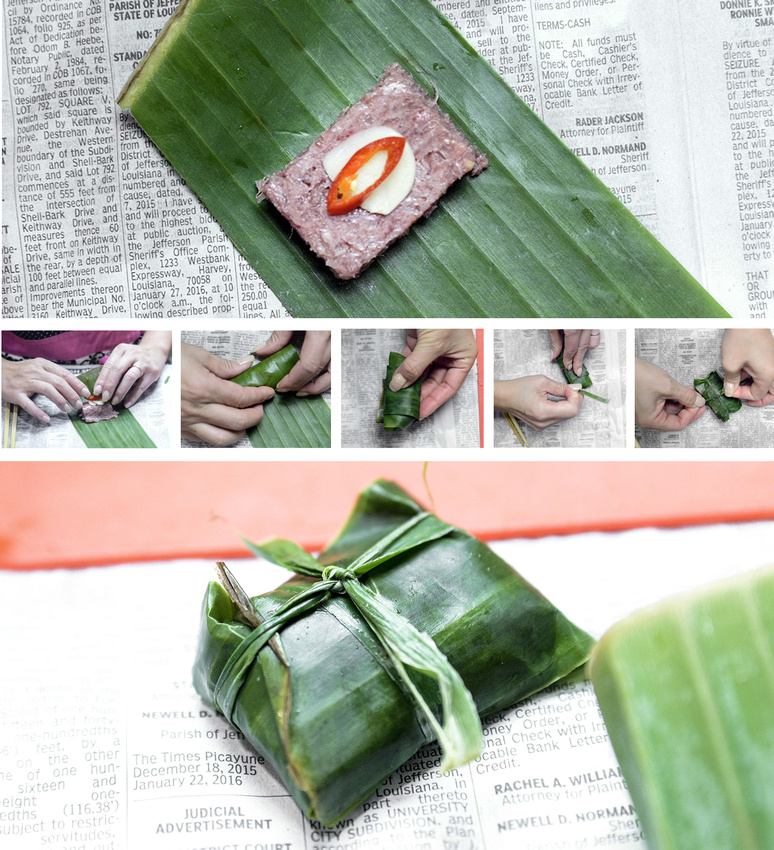
Finally the nem is refrigerated 1-3 days. This helps tame the garlic (not so much the hot pepper) and enables the flavors and spices to mingle. Once unwrapped the food is transformed into bite-size morsels of Vietnamese paradise. Don't say I didn't warn you.
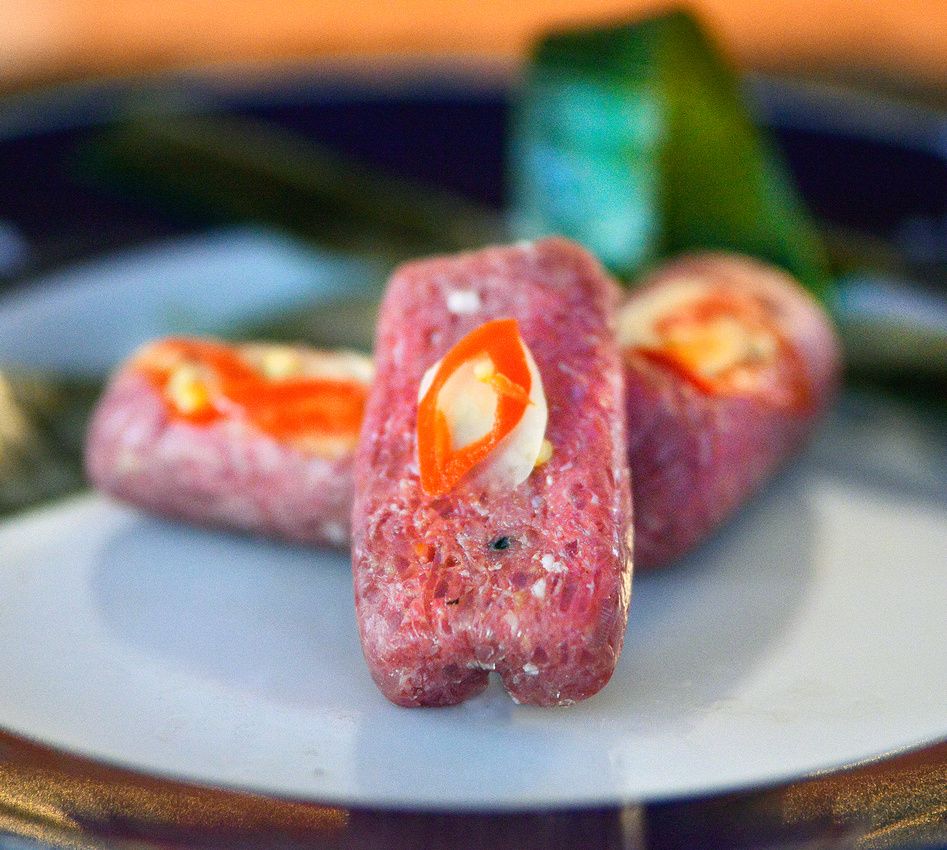
10. OLE!
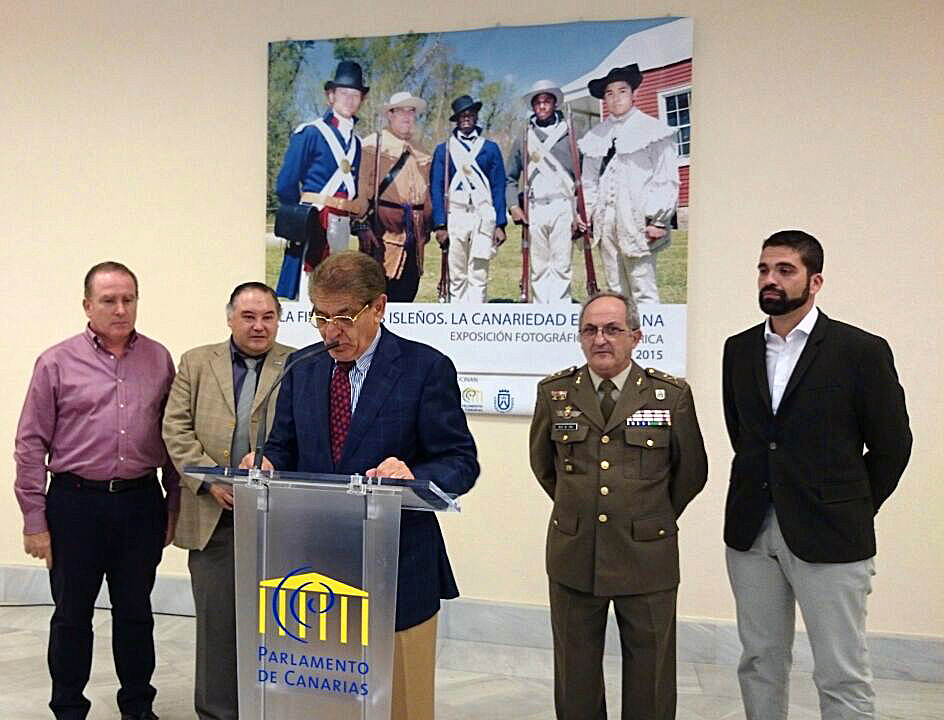
My first-ever international photo exhibit, featuring the Islenos people and culture of St. Bernard Parish in Southeast Louisiana, opened in November 2014 on the Canary island of Tenerife, Spain, and was attended by government and military officials (see above). But the reason this footnote wound up on this year's list is because in mid-2015 the exhibit began touring the other Canary Islands with tentative plans for the photo collection to hit the Iberian mainland in the not-too-distant future. (Yes, yours truly took the oversized photo hanging on the wall behind the dignitaries. Hey, just sayin'.)
9. REEL WORLD

Despite all odds I cobbled together my first sizzle reel -- a best-of collection of my photographic work in various genres, designed ideally for potential clients with ADD or who are otherwise too busy to peruse my website. Check out the reel here: http://bit.ly/1JhPnlI. (Spoiler alert: It doesn’t totally suck. Honest.)
8. GOOD ENERGY

It's a blast teaming with new corporate clients to help translate their branding and marketing goals into visual realities for the company’s website, social media platforms, advertising programs, brochures, you name it. No more so than the day I staged a day-long photo shoot with the "green team" of Diversified Energy to shine the spotlight on the company’s friendly and knowledgeable staff utilizing state-of-the-art diagnostic tools and technologies needed to turn homes into energy-efficient abodes. Go team!
7. ABOUT FACE
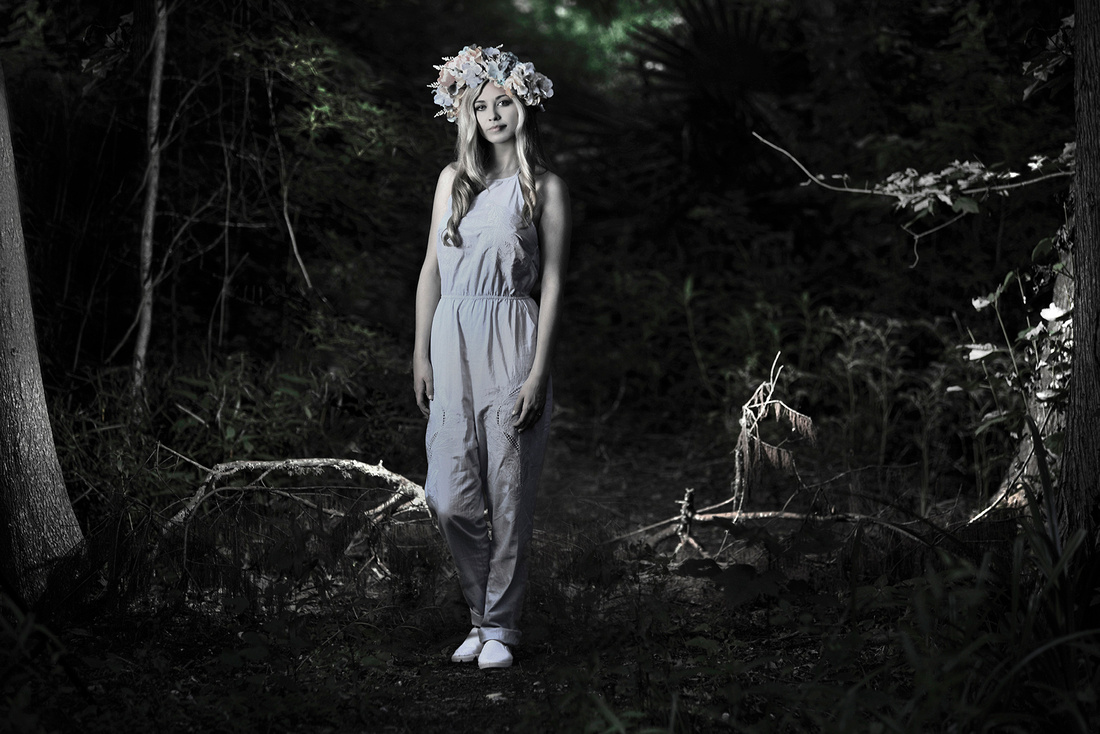
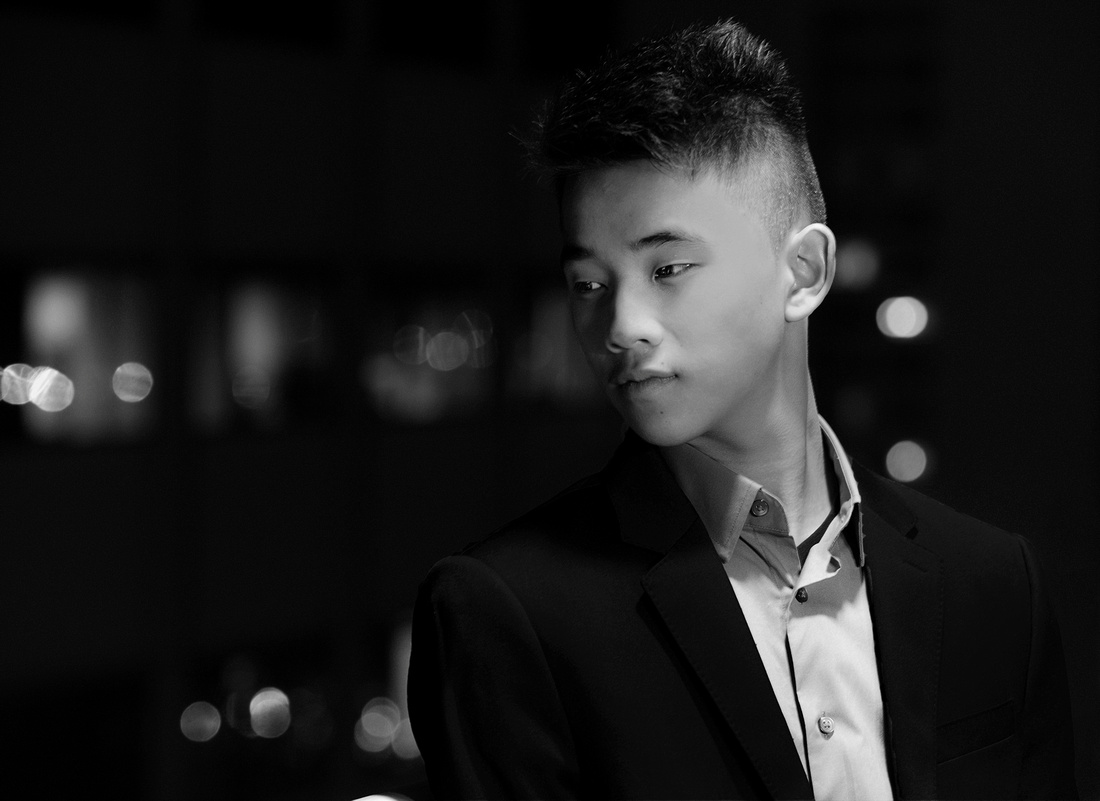
Senior portraits are always fun when my subjects are willing to experiment with the cinematic approach I bring to the genre. For instance, Michaela (top) had zero interest in cliché senior photographs of her sitting in a grassy field and staring at a handful of dandelions. Instead she was keen to explore her "inner-swamp princess." Lighting the swamp scene was tricky but I had my buddy Tommy along to help me achieve my goal of creating the look of a circa-1930s hand-tinted photograph. Michaela looked "like a storybook swamp fairy," said a friend. My half-day session with Duy (above) included cruising around New Orleans, employing urban grit and downtown cool as backdrops. But we also made time for an evening shoot at a New Orleans hotel rooftop because I wanted to create the look of an emerging, young man-about-town at his dapper, sophisticated best.
6. THE 'JAMES' GANG

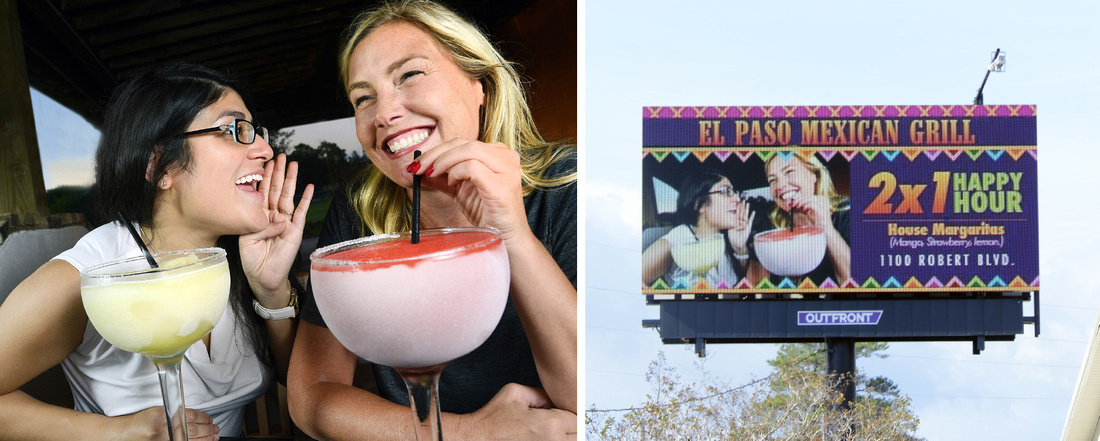
I love food/restaurant photography. Fortunately, I had the pleasure twice this year of being hired to shoot food-related projects -- French Press Coffeehouse (top) and El Paso Mexican Grill (above) -- for my friend and former Times-Picayune colleague James Haik, who oversees his multimedia advertising/marketing/public relations company Yee-Haw Media Productions. James also has a crackerjack graphics team that makes my work look amazing as his artists did with this billboard (above right). Working with the top-notch crew at Yee-Haw Media never gets old.
5. 'KICK' IN THE PANTS
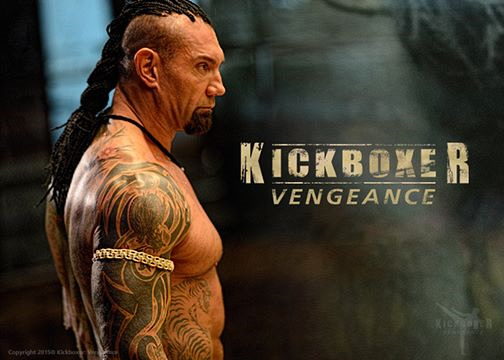
It was a thrill last year shooting unit stills for the multimillion-dollar movie "Kickboxer: Vengeance," starring Jean-Claude Van Damme, scheduled for release in 2016. But even that paled by comparison when Radar Pictures this year began releasing promotional images I shot during film production in New Orleans. Damn it's nice when your hard work finally sees the light of day.
4. TURKISH DELIGHT? ER, NO
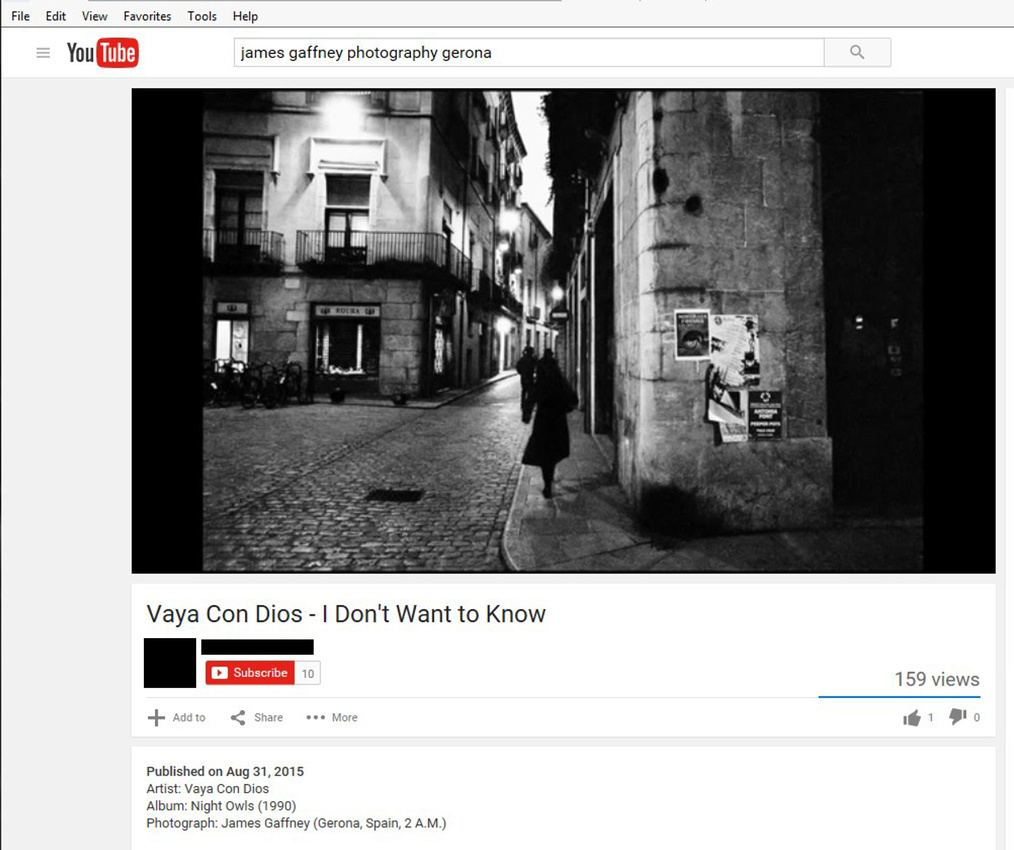
This year for the first time I had one of my copyrighted photographs appropriated without my knowledge, permission and/or payment -- a Bozo no-no. (Friend: "Does this mean you've finally made it?" Me: "I'll have my people call your people.") The image, “Gerona, Spain, 2 A.M.” (see above) was used as the sole photograph in a YouTube video featuring the classic song, “Vaya Con Dios.” Turns out the person was a scarf-wearing hipster (whose photo and name I have blackened out) living in Turkey. Fortunately the British-style civility of my friendly cease-and-desist request made the matter disappear immediately. To which I say to Mr. Scarf, "Teşekkür ederiz!" (that's Turkish for thank you).
3. COPY THAT!

One of this year's highlights was being hired as editor at TravelHost New Orleans (a quarterly print and online magazine, distributed throughout the city’s newsstands, hotels, tourism-related venues and digital social-media platforms), to oversee a savvy staff of well-tuned beat writers covering the Big Easy’s multifaceted entertainment, food, historic architecture, music, recreation and tourist attraction scenes. Click http://bit.ly/1joayqc to check out first issue I had the pleasure to edit.
2. HOUSE RULES

Photographing upscale architecture and real estate is a passion I developed early during my days as staff photographer at The Times-Picayune. So I cherish every professional opportunity to create and deliver to clients exceptional images that capture the equally noteworthy environmental spaces I shoot. One of my favorites was this one-of-a-kind, Contemporary Mediterranean masterwork featuring Venetian- and Spanish-Revival accents, Italian marble floors, brilliantly articulated tray (or recessed) ceilings, and a kitchen whose domed ceiling soars to 20 feet. Simply irresistible!
1. NEW WEBSITE, NEW LOOK
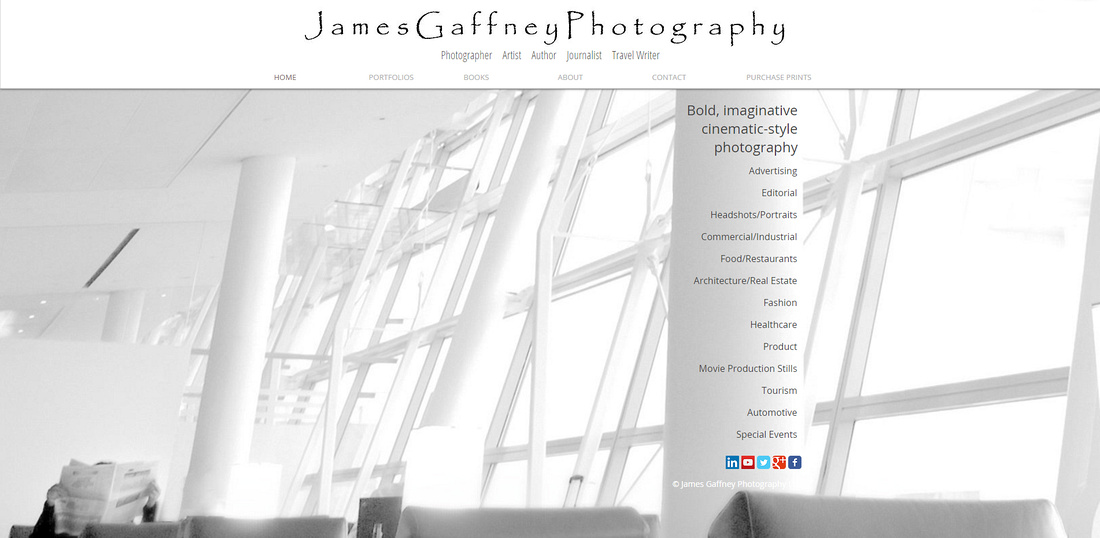
It is a great pleasure to announce my completely redesigned-for-2016 website featuring a new and bold, sophisticated look that includes larger full-screen layouts and easier-to-scroll photo galleries. Check it out at www.jamesgaffneyphotography.com and let me know what you think -- comments are always welcome!
Meantime, Happy New Year everyone, everywhere …
]]>
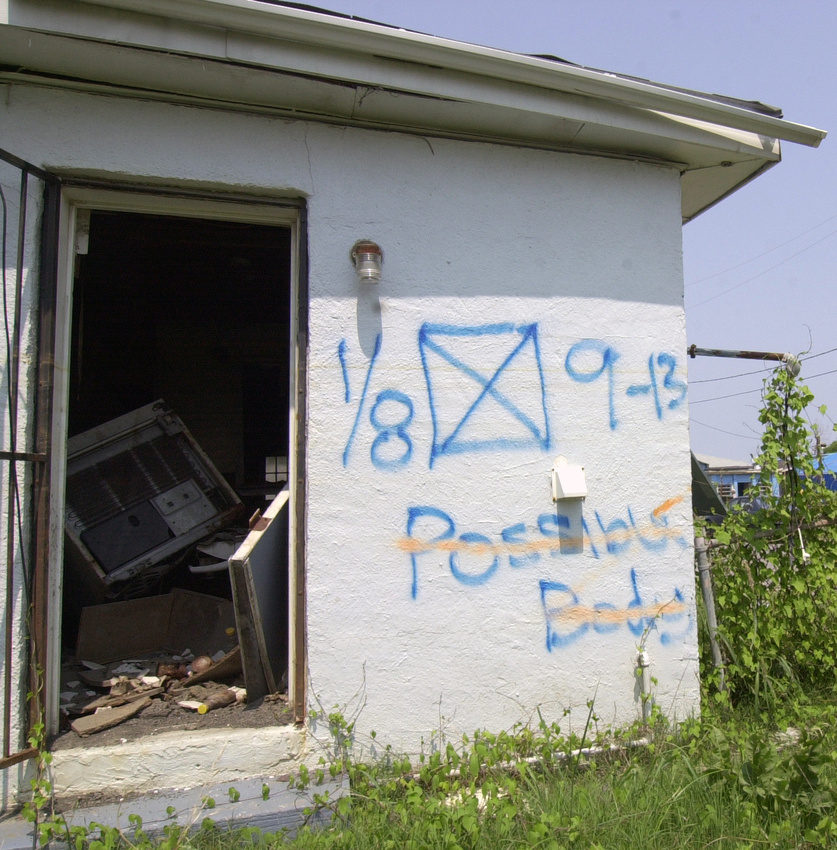 (Spray-painted signage from a search and rescue team suggests the worst possible outcome at this home in the Lower Ninth Ward, a New Orleans neighborhood all but literally destroyed by up to 20-foot floodwaters that resulted when levees failed in the aftermath of Hurricane Katrina, which hit New Orleans 10 years ago on Aug. 29, 2005. Photo by James Gaffney)
(Spray-painted signage from a search and rescue team suggests the worst possible outcome at this home in the Lower Ninth Ward, a New Orleans neighborhood all but literally destroyed by up to 20-foot floodwaters that resulted when levees failed in the aftermath of Hurricane Katrina, which hit New Orleans 10 years ago on Aug. 29, 2005. Photo by James Gaffney)
NO MATTER WHAT CALAMITIES THROUGHOUT HISTORY have befallen this mysterious Creole child of the moonlit swamp, from hurricanes and yellow fever epidemics to citywide conflagrations, New Orleans has always landed on its feet. One way or another. But 10 years ago we had our doubts as we took stock of the aftermath of Katrina, a Category 5 hurricane, which had weakened to a 3 by the time it hit New Orleans on Aug. 29, 2005. The storm would go down as one of the five deadliest and most costly hurricanes in U.S. history due to the catastrophic flooding that occurred over 80 percent of the metropolitan area when the city’s levees breached, collapsed or were overtopped. An estimated 1,836 people would lose their lives.
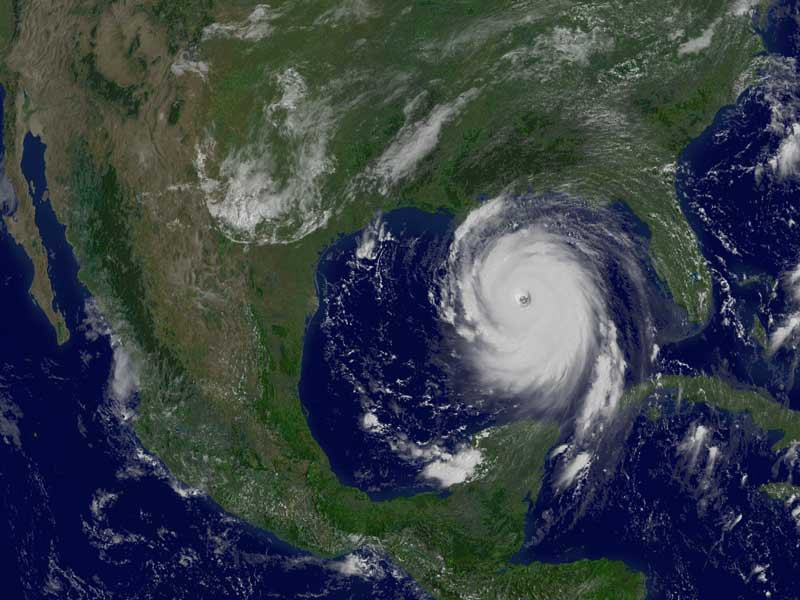
When I awakened early on the morning of Aug. 28, my wife Cathy was standing in the living room in front of the TV watching the now round-the-clock coverage of Hurricane Katrina on local stations. "This is bad," she said matter of factly. "We have to evacuate."
Hours later after packing our car with essentials for what we thought would be at best a two-day evacuation, we joined other New Orleanians in worm-inching bumper-to-bumper evacuation traffic, an anxiety-ridden, moveable feast of despair. Our destination was Opelousas, La., population 16,000, a city 135 miles northwest of New Orleans, which would put us sufficiently out of harm’s way. The normally two-hour drive took 10 hours.
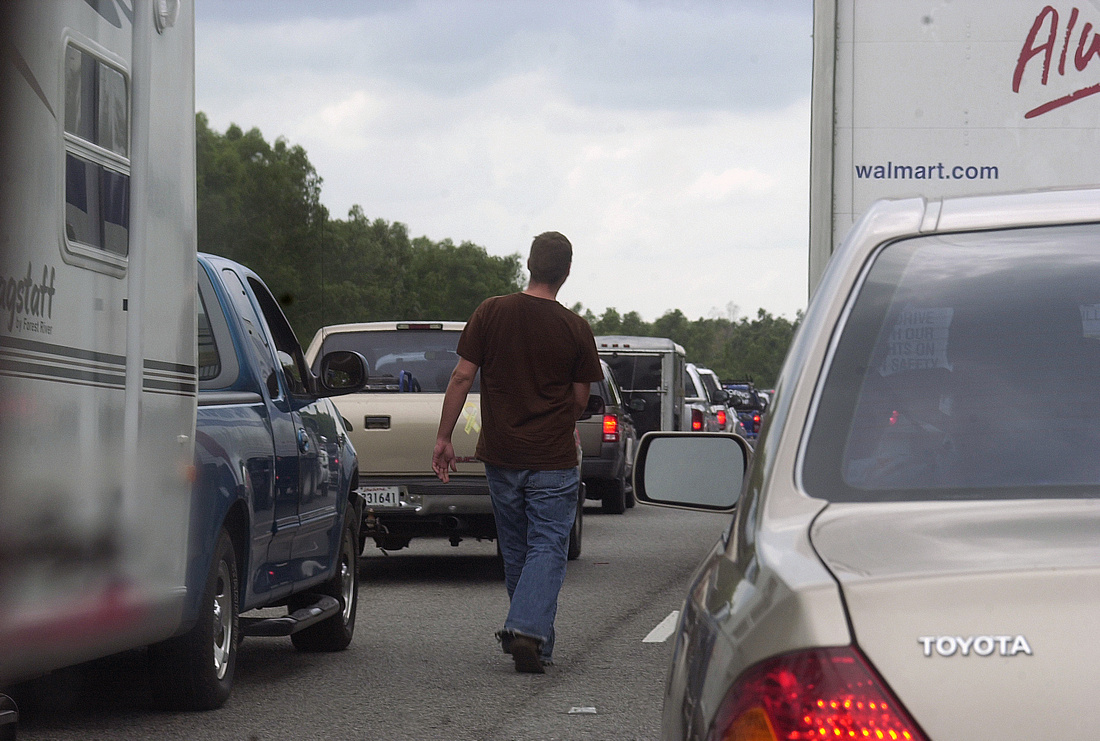 (A pickup truck passenger steps out to survey the bumper-to-bumper gridlock that characterized the evacuation from New Orleans the day before Hurricane Katrina hit the city on Aug. 29, 2005. Photo by James Gaffney)
(A pickup truck passenger steps out to survey the bumper-to-bumper gridlock that characterized the evacuation from New Orleans the day before Hurricane Katrina hit the city on Aug. 29, 2005. Photo by James Gaffney)
We spent the first few days and nights mostly sitting on the couch in Cathy's brother's house biting our nails or crying as we watched news reports showing the unprecedented flooding occurring throughout New Orleans and the utter destruction of parts of the city including the Lower Ninth Ward and neighboring St. Bernard Parish. Friends and other New Orleans family meantime had evacuated to other parts of the country. We kept in touch constantly as best we could in lieu of spotty cell phone coverage.
All I knew for certain was this: My little sweet-pea life as I had lived it with my wife had evaporated overnight -- poof. I began remembering all of the horrid stories my parents had told me as a youth about the grinding poverty and breadlines of the Great Depression and the entirely different kind of horrors that followed during World War II. I realized for the first time that they weren't so much bragging about their hardships as they were preparing me for that day in life when the s**t totally hits the fan. And when it does you can and will survive by putting one foot in front of the other because you quite simply have no other choice.
Stories and images of rampant looting as well as the dire conditions at the Superdome and New Orleans Convention Center for thousands of people who had evacuated to these venues before the storm hit would become the more nightmarish memories of the days that immediately followed Aug. 29. Equally nightmarish if not wholly surreal were aerial images revealing the sheer magnitude of to-the-roofline flooding throughout the metropolitan New Orleans area that remained days and weeks after Hurricane Katrina.
 (Images of widespread flooding throughout most New Orleans neighborhoods in the aftermath of Hurricane Katrina shocked even residents old enough to remember the devastation of Hurricane Betsy, which hit New Orleans in 1965. Photo courtesy U.S. Navy)
(Images of widespread flooding throughout most New Orleans neighborhoods in the aftermath of Hurricane Katrina shocked even residents old enough to remember the devastation of Hurricane Betsy, which hit New Orleans in 1965. Photo courtesy U.S. Navy)
Soon but not soon enough for the majority of residents the National Guard was deployed to New Orleans to restore order, provide emergency relief and conduct door-to-door search-and-rescue operations. Before long – and for the first time in U.S. history – a major American city was under a mandatory evacuation. The metropolitan-wide population of nearly 1.5 million people was ordered to leave until the flooding had receded, many with little more than the clothes on their backs.
Compared to them we were living large.
For nearly six weeks we lived in a 30-foot Prowler trailer (loaned to us from a generous Opelousas couple who had heard of our plight) in the driveway of the home of my wife’s niece Claire and her husband Larry. Cathy’s brother Francis and his wife Sandie lived directly across the street. Within days Larry had rigged our new abode with cable and Internet. Claire and Larry made us part of their family (which included their three children) and soon we began finding our terra firma amid trips to local Red Cross locations to sign up for disaster relief.
 (Our cocker spaniel Cava checks out the surroundings of our evacuation digs in Opelousas, La., our loaned 30-foot Prowler trailer in the background. Photo by James Gaffney)
(Our cocker spaniel Cava checks out the surroundings of our evacuation digs in Opelousas, La., our loaned 30-foot Prowler trailer in the background. Photo by James Gaffney)
Meantime we didn’t know if we had jobs or a home – hell, even a city to return to. Yet in some strange way life seemed good. Really good. Days and nights were suddenly uncomplicated. Wake up. Drink coffee with my brother-in-law Francis. Watch the news. Eat lunch. Do stuff. Buy cheap shirts at Walmart (after all we weren’t going home any time soon). Hug the kids when they got home from school. Fix dinner. Watch the news.
Because crazy circumstances often lead to crazy thinking, I began to contemplate the future: writing a new guidebook – something Cathy and I would do together as we embarked upon our post-apocalyptic, post-Katrina life on the road. The working title was "America Da’ Beautiful: 100 National Parks You Simply Must Visit After Your City Has Been Destroyed." Or something like that. Like I said, my mind was as warped as a Uri Geller spoon though I didn’t realize it at the time.
We volunteered at a local Opelousas church that had taken in nearly 100 New Orleanians and their families during the mandatory evacuation. "What do you need done that isn’t getting done?" I asked the Sister who was staffing the check-in desk. She pointed to the pile of overstuffed black lawn bags piled up in the corner. "We need clothes washed – every day," she said.
So began our morning ritual of swinging by the church to pick up bags of clothes before heading to local washerteria. Funny what you learn about families you’ve never met when you wash and dry their clothes – particularly when you’re folding the mechanic’s blue jumpsuit, the nurse’s green scrubs and a small child’s Star Wars T-shirt before neatly arranging the garments back inside the large black lawn bags, just so they’ll know that someone they’ve likewise never met actually gave a damn. When the washerteria manager caught wind from regulars about the out-of-town couple arriving daily to wash large amounts of clothes, he would discretely leave a roll of quarters for us atop the extra-large dryers we used, even though we never once met the guy or had the chance to thank him.
Those mornings helped us keep our sanity.
Meantime we bonded with our Opelousas relations in ways we never thought possible. My wife and I grew closer to their three children -- Jacob, Laurel and Tyler -- who seemed to delight in having their aunt and uncle living in a trailer in their driveway. We cooked and enjoyed dinners together and generally tried to make ourselves as useful as possible while watching and waiting along with tens of thousands of other New Orleanians, many of whom had been evacuated to cities far, far from home. Some of them wound up never coming back.
RETURNING HOME TO NEW ORLEANS FOUND US DRIVING THROUGH A MAJOR U.S. CITY at night in total darkness thanks to the complete absense of streetlights (or any lights for that matter), this due to the fact New Orleans' electrical power grid had been destroyed. Nothing was open save for two small grocery stores and a trio of restaurants. When our neighborhood grocer finally reopened we celebrated those rare days when it stocked both milk and bread. On the day it permanently extended store hours to 6 p.m., we thought about holding a celebration in the parking lot. Too soon.
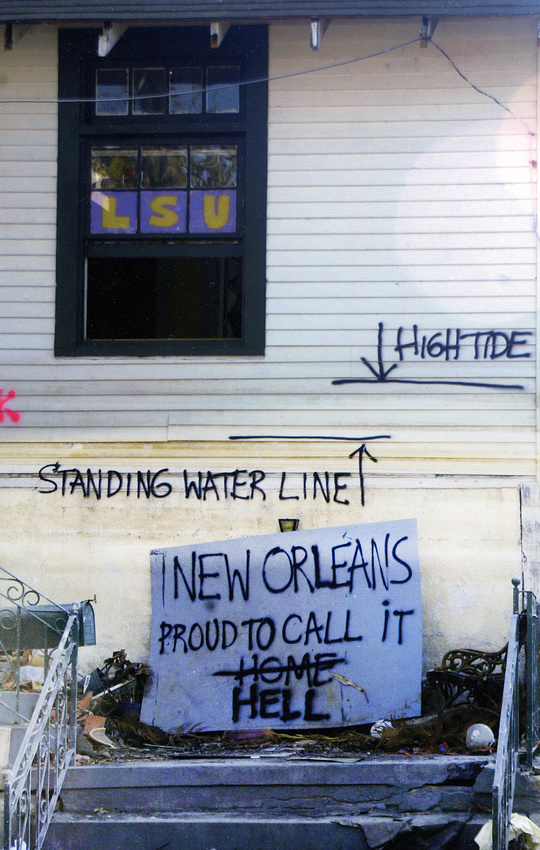
 (Top: For many residents returning home humor was a way in which to grapple and make sense of the harsh realities of what locals called "the New New." Above: People returning home often faced difficulties in finding friends and family members who had been evacuated to different areas of the state or, occasionally, the country. Photos by James Gaffney)
(Top: For many residents returning home humor was a way in which to grapple and make sense of the harsh realities of what locals called "the New New." Above: People returning home often faced difficulties in finding friends and family members who had been evacuated to different areas of the state or, occasionally, the country. Photos by James Gaffney)
Restaurants coming back on the grid became nighttime gathering places to eat (since many residents still didn’t have electricity or gas), swap war stories, inquire as to the safety and well-being of family members, and catch up on post-Katrina news as filtered through the emotionally devastated hearts of people whose love for this city is unlike anything I have ever known.
"All of the West End restaurants are gone," an elderly man said softly, referring to a popular New Orleans neighborhood and long-time dining destination, tucked on the southern lip of Lake Pontchartrain. "The Lighthouse and Southern Yacht Club -- gone, too."
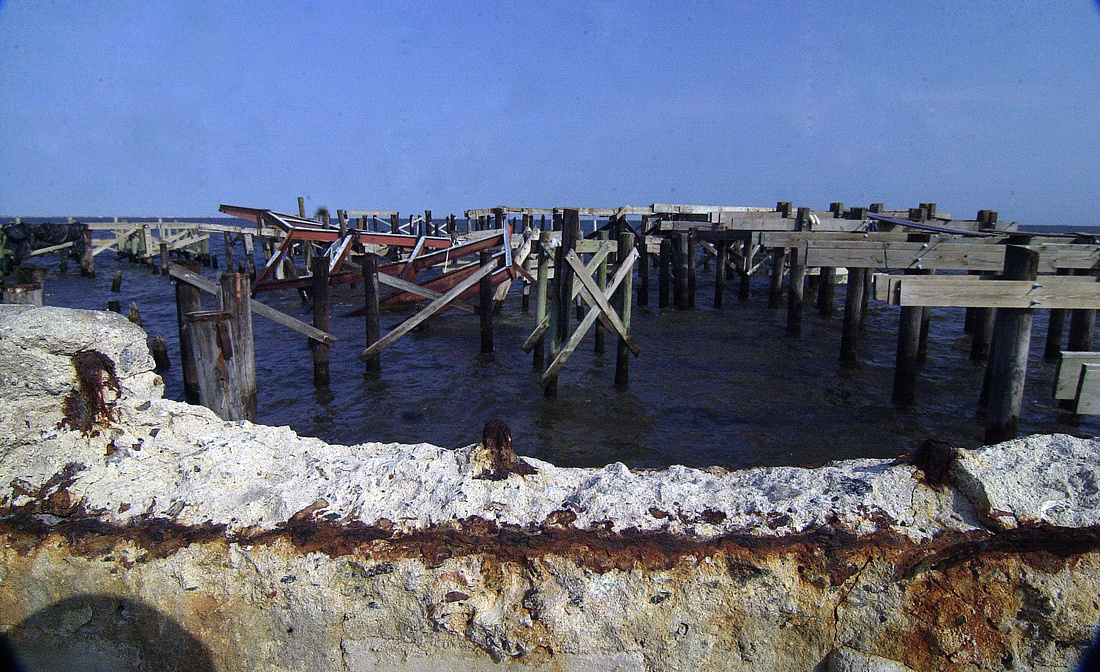 (Pylons that once supported a multitude of generations-old seafood restaurants are all that remain of New Orleans' once popular dining destination known as the West End. Photo by James Gaffney)
(Pylons that once supported a multitude of generations-old seafood restaurants are all that remain of New Orleans' once popular dining destination known as the West End. Photo by James Gaffney)
Because the metropolitan area had been off the grid for weeks, the lack of electricity in summertime New Orleans homes had turned refrigerators into putrid tombs of rotted food. To open one without a protective odor mask was to do so at your own peril. It still makes me gag to remember how the supermarket-sealed quartet of formerly frozen Cornish game hens in my freezer had so decomposed that they felt like water balloons when I picked them up – that is, before the seal burst causing the fetid juices and disintegrated meat to cover my bare hands. I shrieked like a drag queen and then summarily puked into my mask. Unfortunately Larry Dejean, who had come to help us this day, was an eyewitness, which is why I’m fessing up about this event and thus taking control of the narrative.
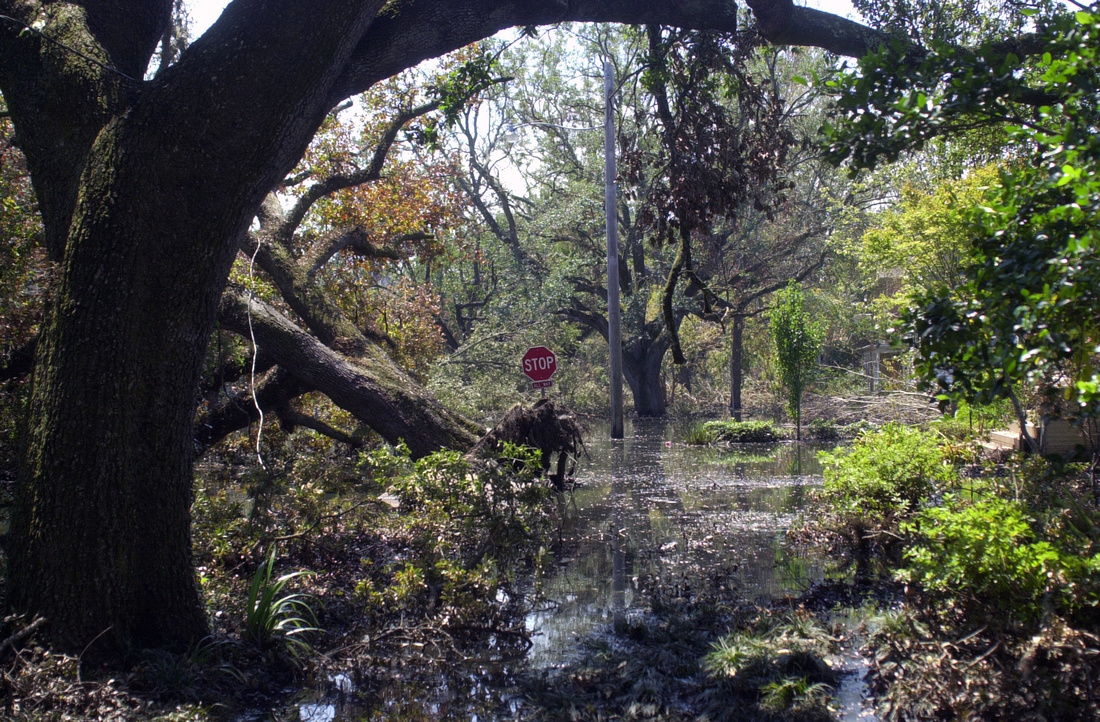
 (Top: The view down our street and its century-old oak trees, including one toppled by Hurricane Katrina, the day we returned home. Above: A man paddles his canoe down our still-flooded street in a photograph taken from my front porch. Photos by James Gaffney)
(Top: The view down our street and its century-old oak trees, including one toppled by Hurricane Katrina, the day we returned home. Above: A man paddles his canoe down our still-flooded street in a photograph taken from my front porch. Photos by James Gaffney)
Surrealism was everywhere. But no more than the strange sight of a city whose curbs were lined with discarded refrigerators rendered unusable because of the smell. Since trash pickup was spotty and took days or even weeks at best, the ubiquitous refrigerators became not only a citywide fixture but also a weird sort of curb art which people adorned with spray-painted humor: "Free Gumbo Inside!" "Wife Inside – Don’t Open." "Lunch for Orleans Levee Board." You get the picture. Stranger still was the new soundtrack being created by the whirring motor blades of ubiquitous military helicopters flying overhead in a city otherwise eerily silent due to the lack of running air conditioners and car traffic. Among the first residents on our street to return home, we watched one afternoon as a Chinook helicopter hovered directly over our house, a person in military uniform sitting in the open bay door with a pair of binoculars watching to make sure we weren't looters. We waved. They waved. This was The New New.
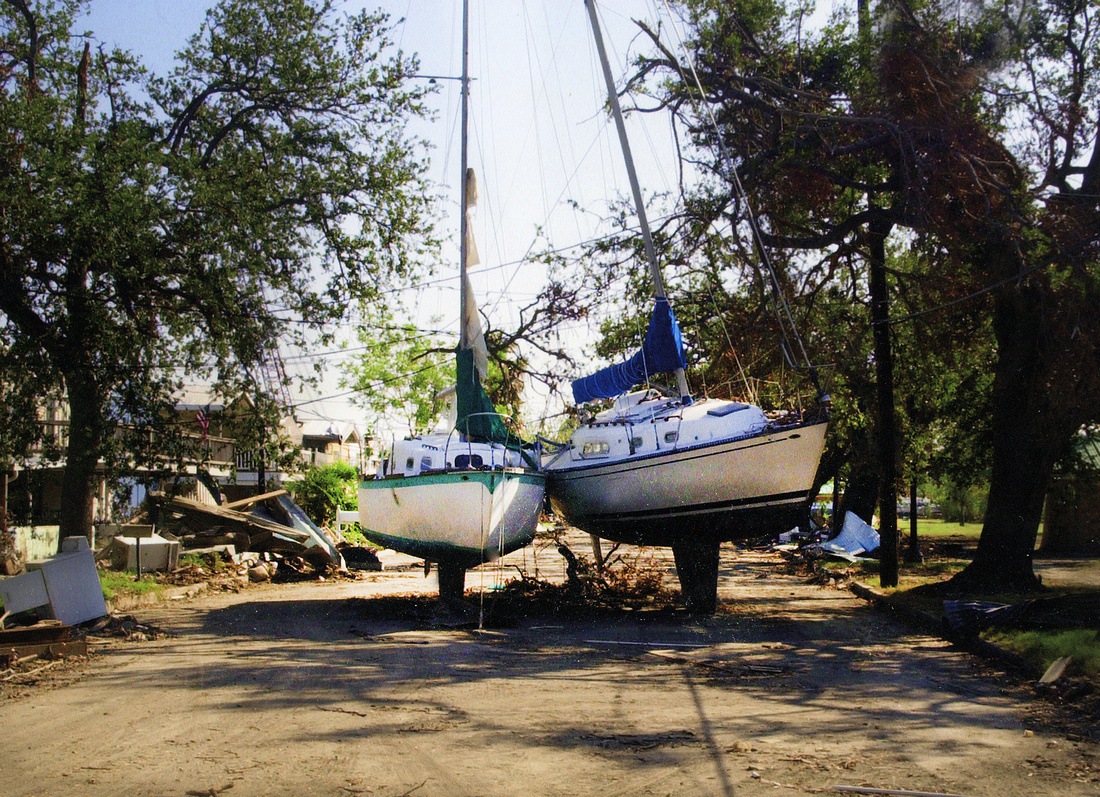 (During the 125+ mph winds of Hurricane Katrina that hit New Orleans on Aug. 29, 2005, a pair of sailboats at West End Marina were torn from their moorings, lifted into the air and dropped side by side virtually undamaged in the middle of a nearby street where they remained weeks after the storm. Photo by James Gaffney)
(During the 125+ mph winds of Hurricane Katrina that hit New Orleans on Aug. 29, 2005, a pair of sailboats at West End Marina were torn from their moorings, lifted into the air and dropped side by side virtually undamaged in the middle of a nearby street where they remained weeks after the storm. Photo by James Gaffney)
Our dear friend Judy, who had lost her Gentilly home to Katrina flooding, moved back from her evacuation digs in Arkansas and into our garage apartment, where she lived for a year as the three of us returned to work and began in tandem with our city the slow process of healing and recovery. Our new little family was a sort of post-Katrina version of the Three Musketeers.
My sister’s husband Michael, a construction tradesman in San Clemente, Calif., spent a week with us repairing damage to our home. This despite the fact our underground sewage lines had ruptured forcing all of us – Michael, Cathy, Judy and me – to temporarily "evacuate" anew to a friend’s house. As evidence of the country’s outpouring of sympathy for New Orleans and its beleaguered residents, Michael’s then-employer, a San Clemente hospital, not only gave him time off of work but the staff also bought him a round-trip plane ticket as well as gift cards from Big Box hardware stores to use when he arrived in the Big Easy. We took Michael for a post-Katrina tour that stretched from New Orleans’ virtually flattened Lower Ninth Ward south to what little remained of the tiny fishing village of Shell Beach in lower St. Bernard Parish.
So many people lost so much. Nothing was a pretty sight.
"Is that really a recliner up in that tree?" Michael asked in disbelief, as we snaked along the two-lane blacktop that twisted through Shell Beach.
Later that evening we found ourselves at Pat O’ Brien’s huddled under an outdoor cocktail-table umbrella, which was barely sheltering us from the rain, drinking the tourist-popular bar’s rum-fueled Category 5 drink. Nothing including alcohol seemed to quiet our memories of what we had witnessed earlier that day.
Ten years after, the City That Care Forgot has recovered and rebounded to a greater or lesser degree than probably anyone had a right to expect. Certainly more work remains to be done. But, speaking only for myself, the legacy of the near-apocalyptic event known as Hurricane Katrina has been a renewed appreciation that New Orleans, warts and all, will always be a city whose heart beats in time with the angels. Amen.
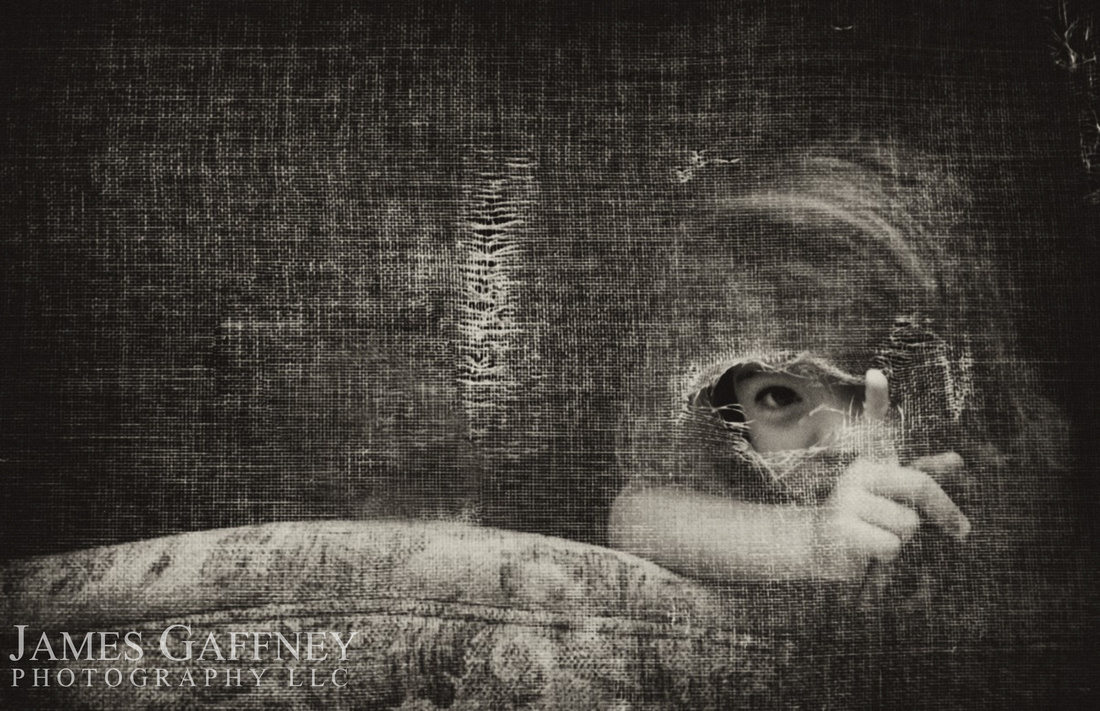 (I took this photograph of my niece Laurel in Opelousas, La., from outside her family home the morning after my wife Cathy and I arrived following our evacuation from New Orleans on Aug. 28, 2005. Months later I saw the symbolism in this image and titled it, "Katrina: Eye of the Storm.")
(I took this photograph of my niece Laurel in Opelousas, La., from outside her family home the morning after my wife Cathy and I arrived following our evacuation from New Orleans on Aug. 28, 2005. Months later I saw the symbolism in this image and titled it, "Katrina: Eye of the Storm.")
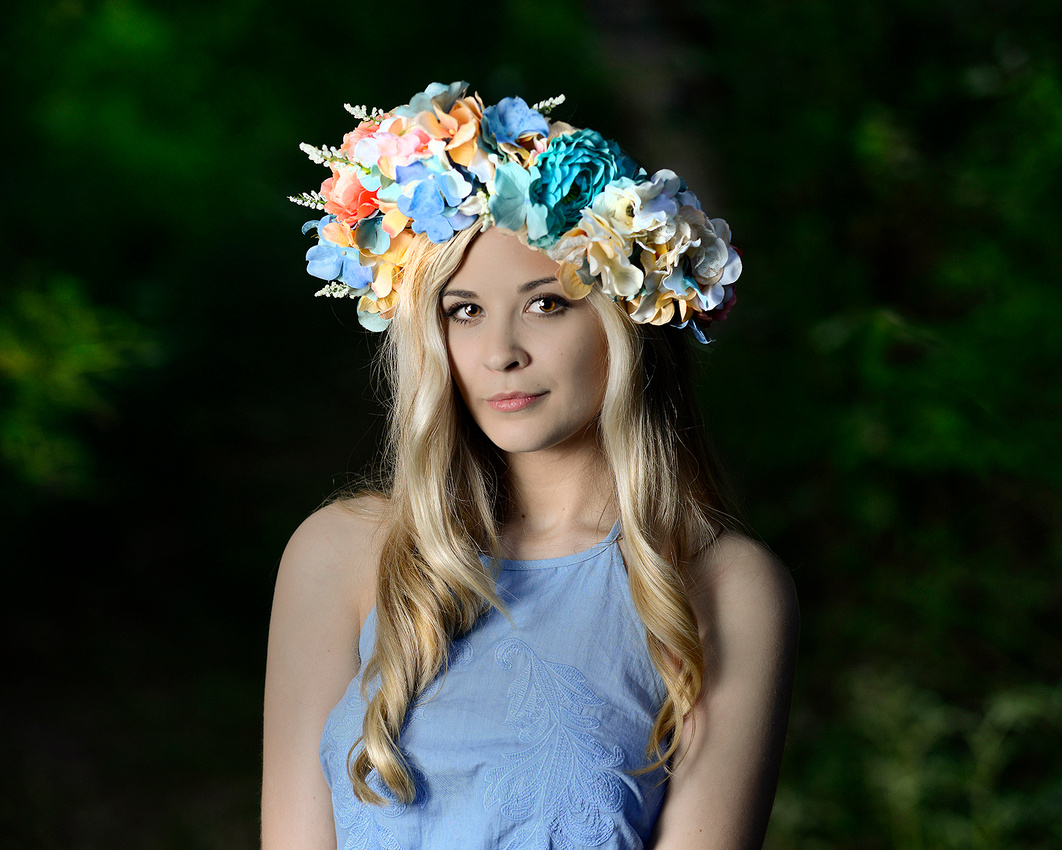
During my recent senior portrait session with Michaela, the LSU-bound pre-med major half-jokingly expressed interest in exploring her inner "swamp princess." Fortunately for those of us who live virtually surrounded by the postcard-pretty delta marshes of Southeast Louisiana (especially in lower St. Bernard Parish located 30 miles from New Orleans), you can barely throw an oyster shell without hitting a swamp or bayou.
We didn’t need to travel any further afield than Los Islenos Museum (www.losislenos.org), where we had already planned to shoot a few interior portraits in one of the historic and beautifully restored, former Isleno homes that have been relocated to the museum grounds to preserve and promote the unique culture of Louisiana’s first Spanish-colonial immigrants, who began arriving here in the mid-1700s. At the tail end of the museum’s bucolic nature trail was a slice of unadulterated Louisiana swamp complete with palmettos and tangled vines. To my good fortune I had at my side my dear friend and partner-in-crime Tommy Arcement, who had graciously agreed to assist on the shoot -- and, at this location, help create the swamp-at-dusk vibe I was seeking. Following is a quick snap of the swamp as we found it:

OK, for people living outside Louisiana and the Delta South, this is how swamps (as opposed to bayous -- there's a difference) actually look in real life as opposed to Hollywood movies. Fairly murky and humdrum affairs, for the most part, especially in the late afternoon when the ambient light is flat and beginning to fade. And this is where yours truly gets busy.
To remedy and light this scene I used a pair of off-camera Nikon Speedlights, both triggered remotely. One Speedlight was tucked inside a 60-inch Octobox (used with both the diffusion panel and eggcrate insert to soften the light as much as possible). The second Speedlight was affixed to a tripod placed immediately behind Michaela and aimed bare-knuckled (without any diffusion or modifier) into the swampscape directly behind her -- this to illuminate and create visual depth in the background. The following image shows the scene using only the Speedlight behind Michaela (you can see the tripod legs down around her feet):
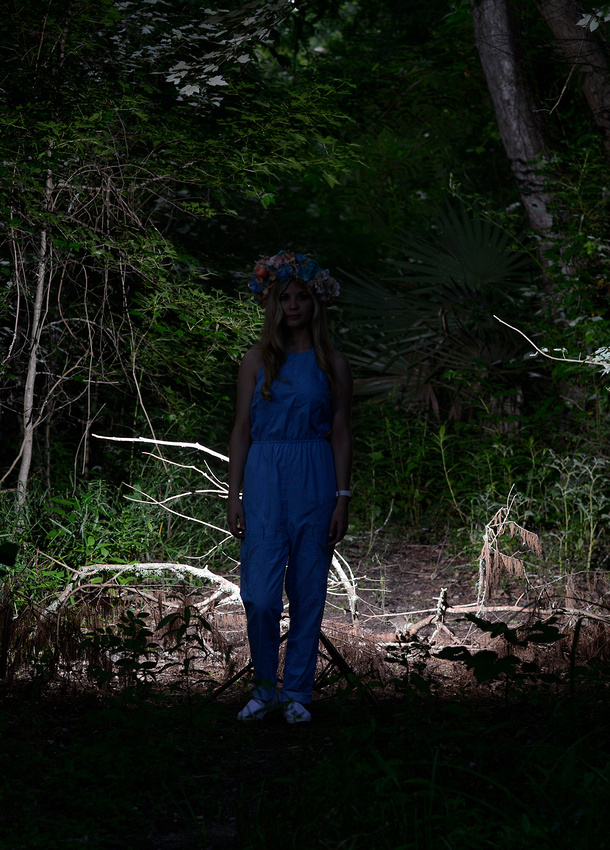
The light is crude and harsh but remember I still haven't adjusted my camera settings for ambient light yet because we're still "light building." Next I added the Octobox, visible at camera left along with Tommy who was preventing it from falling into the swamp. See below:
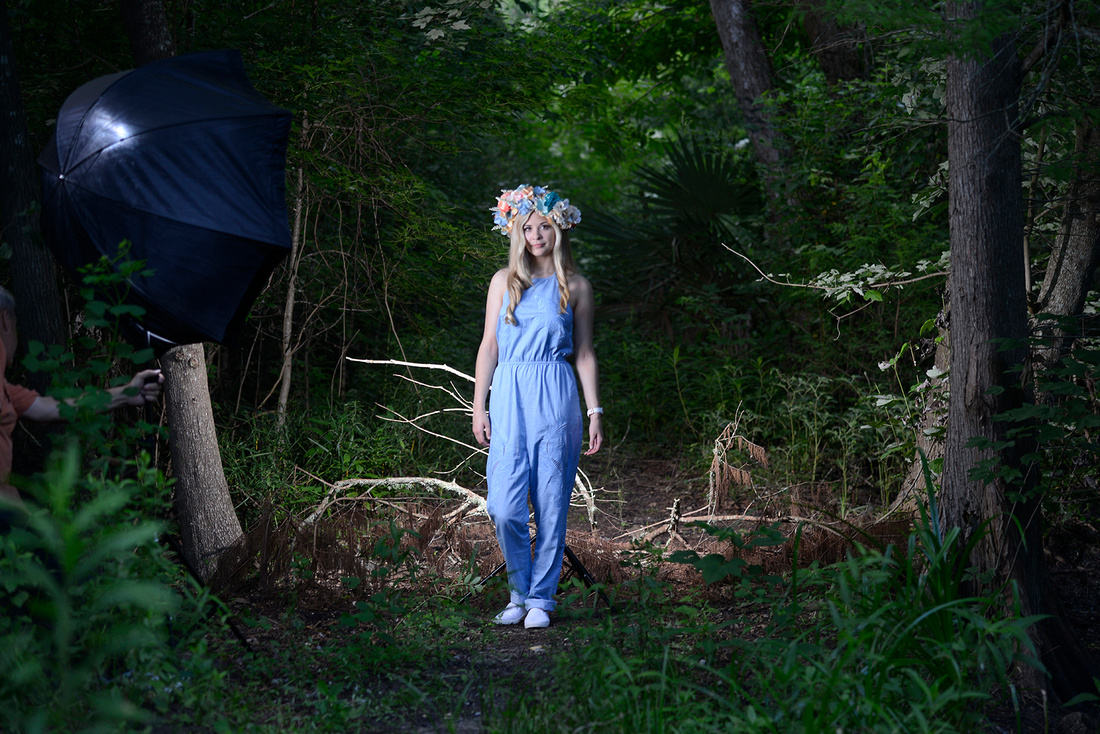
Not too terribly bad -- after multiple trials and errors. After tweaking the power on the Speedlights and fiddling with the camera aperture to better blend available natural light, we seem to have achieved a decent balance of illumination that complements Michaela's inner swamp princess right down to her Renaissance-goddess flower headdress.Ultimately I wound wind up selecting an alternate version of this image.
But my real work was cut out for me in post-processing in order to create the 1930s-era hand-tinted image I saw in my mind's eye. In Photoshop I removed the tripod legs visible near Michaela's feet, the spindly tree branches "growing" out of her right side, and her watch (didn't match the outfit, but I didn't realize this until after the fact -- my bad). I also ramped up the swamp's natural shadows, dampened highlights on Michaela's outfit and removed a few face shadows. Finally, I adjusted the vibrance in Bridge until I achieved just the right hand-tinted look. Following is the final version of the final image:
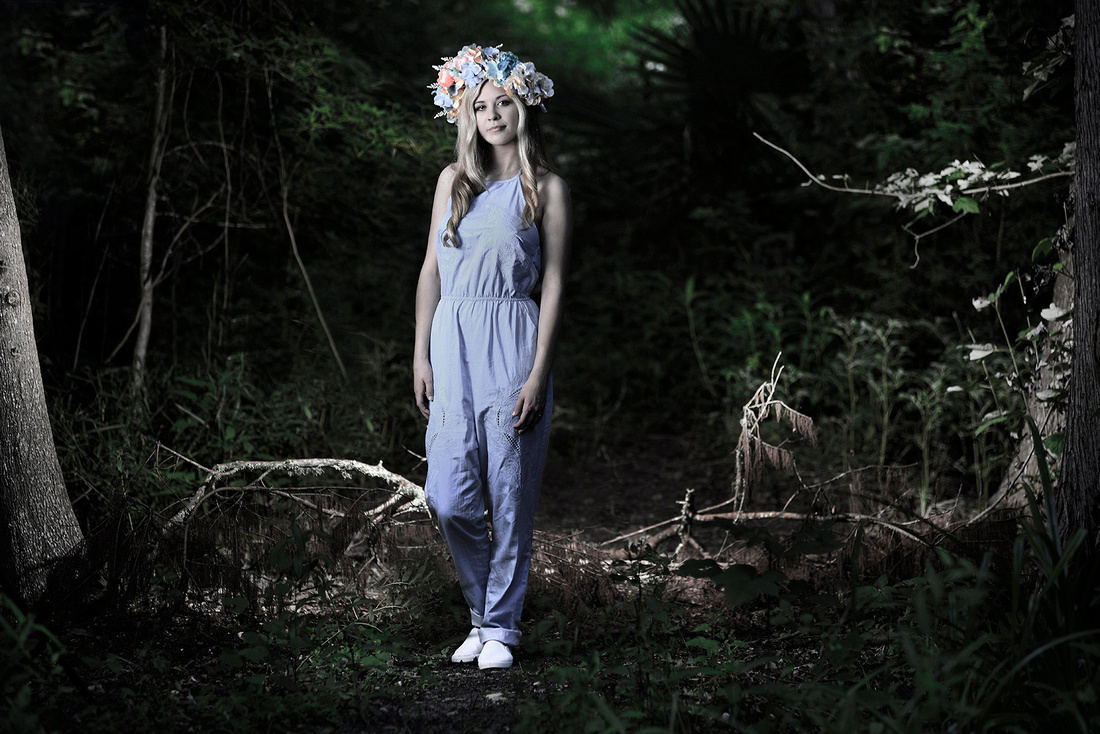
It was a fun and exciting professional challenge going off-grid to make Michaela's swamp-princess personae a reality. Shoots like this remind me why I love being a photographer.
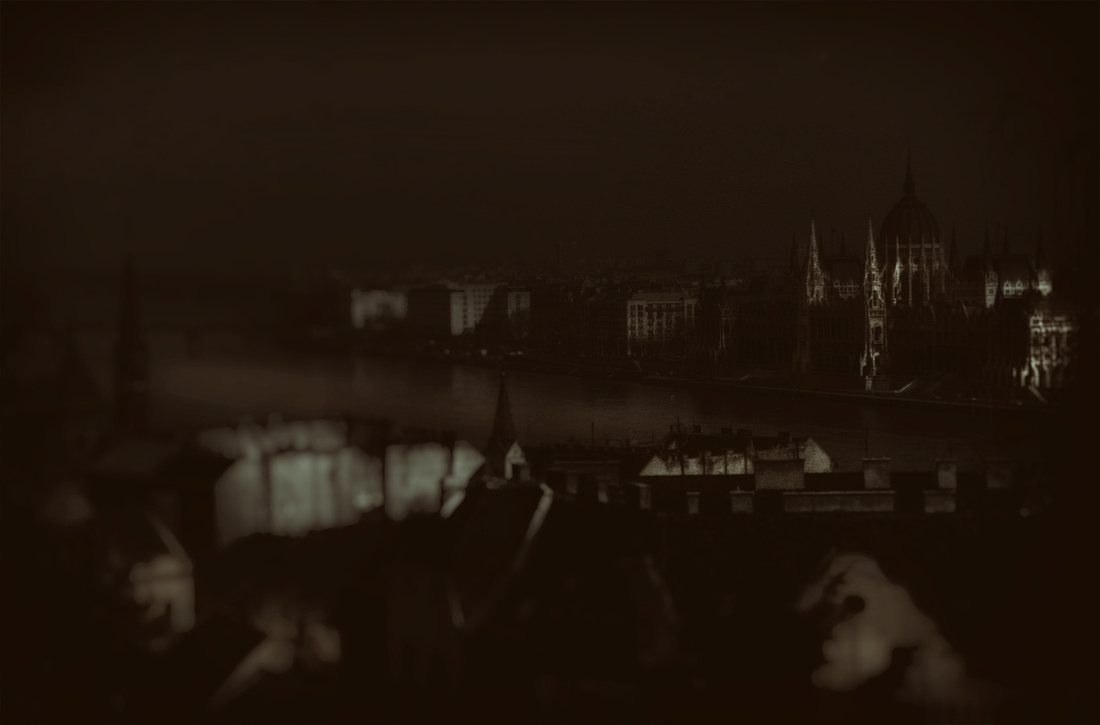
BUDAPEST, Hungary – It is Tuesday night at the shadowy rathskeller called The Irish Cat Pub. The laughter of canoodling couples echoes like secrets from dimly lighted dining nooks while after-five mates roost over rounds of Guinness. At the bar a smartly dressed woman tries to talk into her cell phone over the blare of music. Maybe she is one of the American expats the guidebook said frequent this Irish-themed hangout du jour in “the Paris of the East.”
One thing is certain: the bland menu of salads and pastas is a godsend after a couple of days of high-fat Hungarian fare eaten on the run – mostly goulash, pork, and little pinched dumplings called galuska, all typically laced with rich red paprika, the national spice.
As for the expats? Zip. More disappointing, not a single Hibernian within earshot.
“It’s not like I was expecting to find a reunion of all my Irish cousins,” Robert, an Irish-American and fellow journalist, says wistfully. "But, still ..."
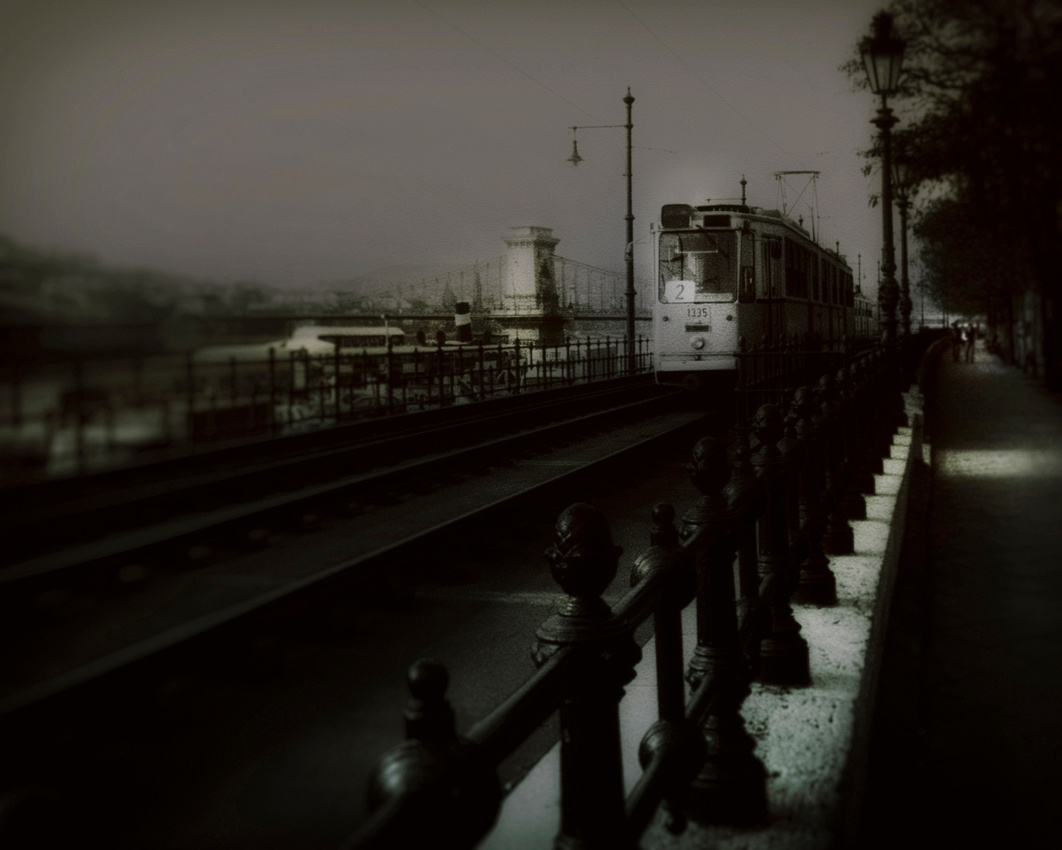
A two-mile walk for after-dinner drinks and a film screening at the hipster “ruin bar” Kuplung, formerly a car-repair shop (hence kuplung, which means “clutch”), further dims the night’s prospects – the joint is braced by scaffolding and closed for renovations. Unique to Budapest, ruin bars have been the rage for the past 10 years and are named so because they’re found in the ruins of abandoned buildings and stores in the city’s old Jewish Quarter.
My guidebook’s pages flutter once more in the March wind, chilled by the nearby waters of the Danube River whose seven bridges of architectural splendor link hilly, fast-paced Buda on the west bank and historic Pest on the east. Soon there is another bridge – this one mental: It dawns on this third-time visitor that keeping up with this city of 2 million people might not be easy. Locals say it’s been that way since 1989, when the bloodless Velvet Revolution swept out communism and flung open the windows for a breath of fresh democracy.
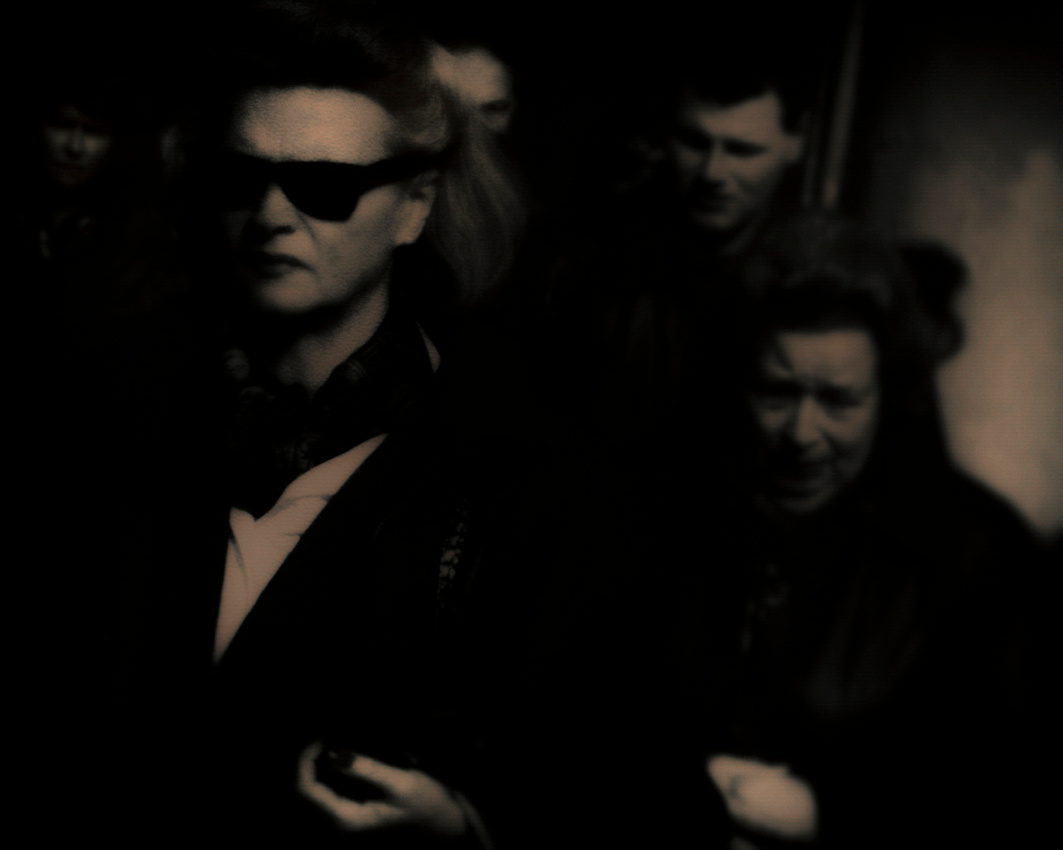
SIGNS OF THE TIME
Few Hungarians argue that for the past quarter century they have been feasting on newfound capitalist-fueled freedoms. Today locals with forints, the national currency, to burn happily do so in the city’s fashionable high-rent shopping districts like Stefania Road, with its art nouveau facades, and Boulevard Andrassy. A quick glance at this city's Westernized milieu reveals the contemporary Hungarian's unabashed appetite for bekasmeg (breakfast) at McDonalds, BMWs and Mercedes-Benz, Pizza Hut and posh strip clubs like the popular Dolce Vita. Eager to lay it on thick for your upcoming nuptials? Nowadays the cat’s meow for hifalutin wedding receptions is the former summer palace of the Hungarian army.
Models in lingerie billboards wink at international travelers cozied up at nearby al-fresco café tables, as well as tourists browsing outdoor vegetable stands with names like Ha-Ha (no joke). Lady Luck keeps slot machines at Budapest casinos clanging till the wee hours inside sparkling new Eurodollar-built hotels. Tourists, understandably, look exhausted. After all, it’s yeoman’s work for American and European trophy wives to shoulder behemoth tote bags bulging with bubble-wrapped Herend china.
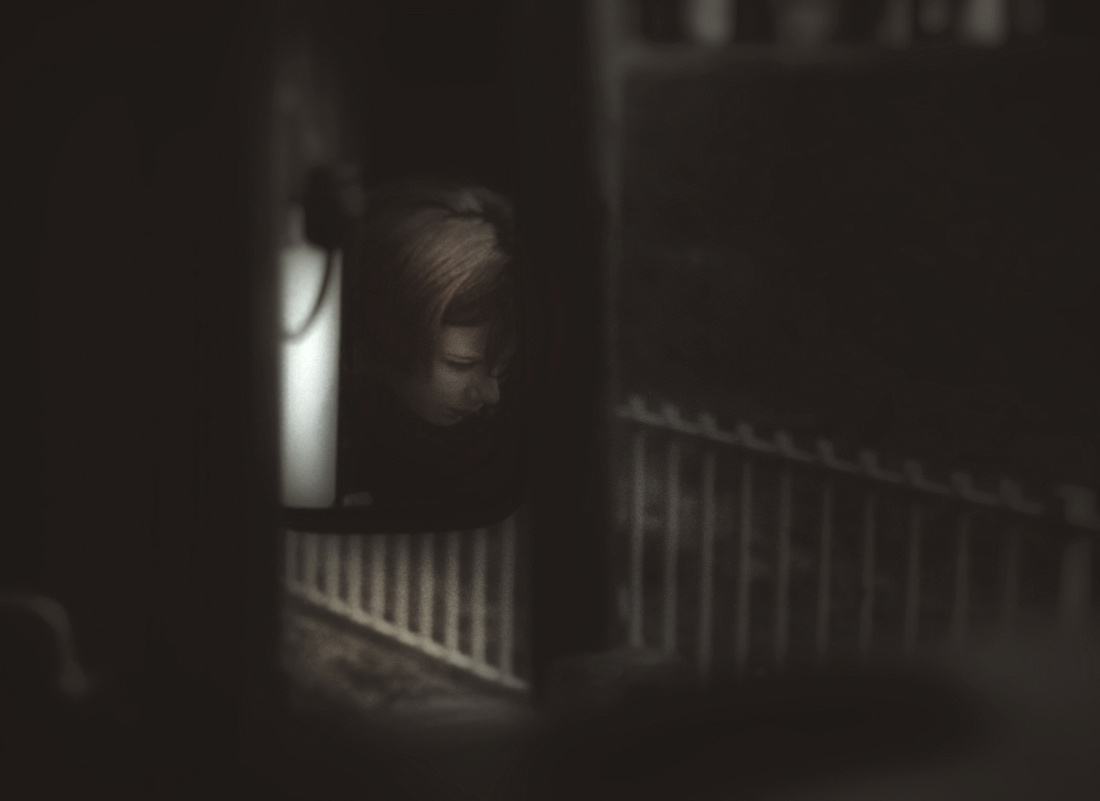
Granted your college-aged backpacker from the states might find it hard to fathom how virtually none of this world existed only a quarter century ago. Back then border guards were paid an extra day of vacation for killing anyone who tried to leave or enter the country illegally. It was Stalin statues and two-story red stars representing iron-fisted Soviet rule -- not billboards plastered with hot chicks in racy bras -- that glared down upon your workaday proletariat. Yet these symbols of oppression, long since toppled, imbued generations of Hungarians with a fear and perennial paranoia few millennial Westerners can comprehend, according to Budapest resident and retired university professor Dr. Juliana Ramotsa.
All that remains from this era, she says, are Budapest's dreary and monochromatic, high-rise housing complexes built in the last half of the 20th century, plus the occasional pockmarked building facade, the result of Soviet artillery during the 1956 revolt.
Ramotsa remembers as a young girl that October morning in 1956 when the Soviet and Eastern bloc military invaded, brutally crushing Hungary’s anticommunist uprising. Budapest’s lovely cobbled squares were turned into killing fields. Within days the secret police headquarters became known as “the torturing building.” She recalls the tank that pulled up in front of her family home and the soldiers banging on the front door. They had come to arrest her parents, college professors who were on the Soviet’s long list of academic intellectuals to detain. She watched through the window as her mother and father were handcuffed and shoved down the walkway to an awaiting car, where they were whisked away to be interrogated. They did not return home until a month later.

Ramotsa takes in stride the dizzying changes she has witnessed in her country over the decades.
“I survived World War Two, I survived the revolution of 1956, I survived communist rule,” she says quietly on a sunny afternoon at Heroes Square, surrounded by the Romanesque statues of Archangel Gabriel, Magyar chieftains and Hungary’s kings and leaders from the past 1,000 years. “Now I can say I don’t like the prime minister without fear.”
Downtown’s sprawling Central Market Hall underscores another sign of the times: English is replacing French and German as the second language of choice on everything from menus to marquees. Hunglish, a mix of Hungarian and English words, is widely spoken. This is extraordinarily helpful considering Magyar (the Hungarian name for their unusual language and themselves) is tricky at best. U.S. currency is welcomed everywhere.
“Dollars,” says Budapest resident Andrea Szeifert, “are like gold to us.”
Yet some things never change. Here amid the Central Market’s century-old ironwork, elder Hungarians still dress in traditional dark-wool topcoats, gray caps and drab scarves, as they chat over Kobanyai beers and spicy sausage or while browsing with traditional stoic dignity for freshly made strudel and Zsolnay porcelain.
CSIKOS KID
If the Central Market Hall is the heart of Budapest, the city’s Old World soul definitely belongs to Castle Hill, or Verhegy, rising from the Buda hills since the 13th century when the sky-tapping structure was built by Dominican friars. The castle complex encompasses a large village of winding cobblestone streets crammed with preserved Gothic, baroque and Renaissance homes and mansions, churches and bric-a-brac shops. All of which is topped by Kiralyi Palota, the royal palace. Best of all this castle-top perch offers a near-breathtaking panorama of sprawling, spired Pest in the distance just across the Danube, which from this vantage point at night looks like a 19th-century engraved Christmas card. As luck would have it, the palace’s strolling Roma violinists are all too happy to play “Jiggle Bells” on request.
Fourteenth-century Turkish rule left behind something a wee bit more practical than strolling musicians: namely, a quartet of hot-spring baths. At the Gellert baths the owners literally throw in the towel (basically a Native American-style lap flap with waist cord) with the $5 admission. Modestly behind, one hour spent neck-deep in the steamy, sexually-segregated, Roman thermal pool proved an elixir worthy of Saint Stephen, this country’s first king.
Saint Stephen would likely also nod his approval at how his countryside still has powers to sooth the savage photojournalist eager to escape Budapest’s big-city cosmopolitan crush. Bright sunflower fields and thatched-roof cottages, all clustered around carefully tended vineyards, punctuate my 25-mile drive from Budapest into the Danube Bend region. Cradled between the rolling Borzsony and Visegrad hills are bare volcanic mountains, as well as ancient battlefields dating to the early Middle Ages – all that remain of the Roman Empire’s frontier in modern-day Hungary.
In Tok is the far more modern – and, yes, touristy -- Patko Csardo horse ranch. No sooner do our shoe heels hit the ground when the ranch house doors fly open and, as if on cue, a small group of Hungarian musicians emerge and launch into a cheerful serenade. Later the Hungarian-style rodeo fares well, particularly among a group of middle-aged American women hypnotized by the young quartet of whip-cracking, galloping csikos. Making matters worse is the goulash and stewed chicken lunch.
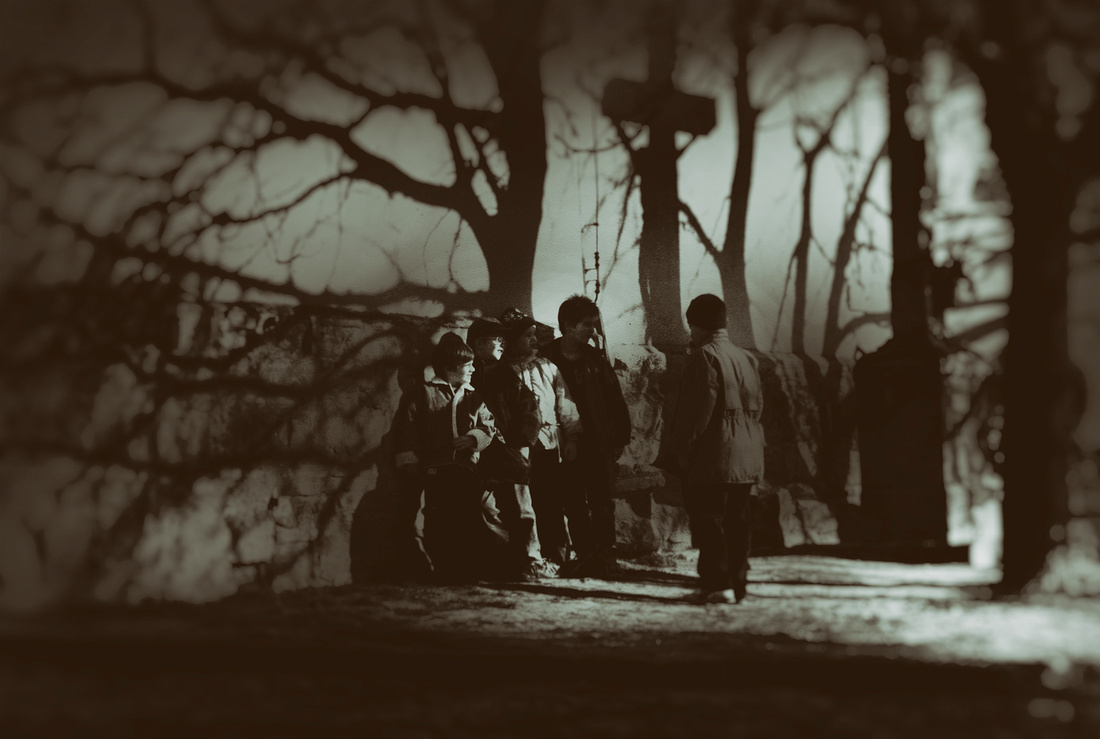
Up the road, Szentendre turns out to be a near-storybook Hungarian village thanks to its amalgam of sun-dappled Serbian church steeples, fresh-scrubbed shopfronts, winding cobblestone streets, and well-tended baroque homes painted in bright blues and reds. Equally artful are master confectioner Karoly Szabo's colorful, handmade marzipan creations. On the shelves of his Marcipan Museum and Sweet Shop are everything from tiny frogs to an intricate model of Budapest’s neo-Gothic Parliament Building, all made from -- yep -- marzipan. Szabo, not unlike Budapest and the rest of Hungary, is indulging his sweet tooth for change a quarter century after the collapse of communism.
My last night in Hungary finds me wandering the city’s cobbled riverfronts and crisscrossing its ancient bridges. But no matter how much time I spend peering like a vagabond through the frosted glass of its oldest taverns, or mesmerized by the exotic allure of its bewitching Romani women, this mysterious, Central European country's thousand-year-old soul always seems just beyond my grasp. Perhaps that's par for the course in a place where change continues to occur faster than the speed of now.
]]>
9. WIND IN MY SALES
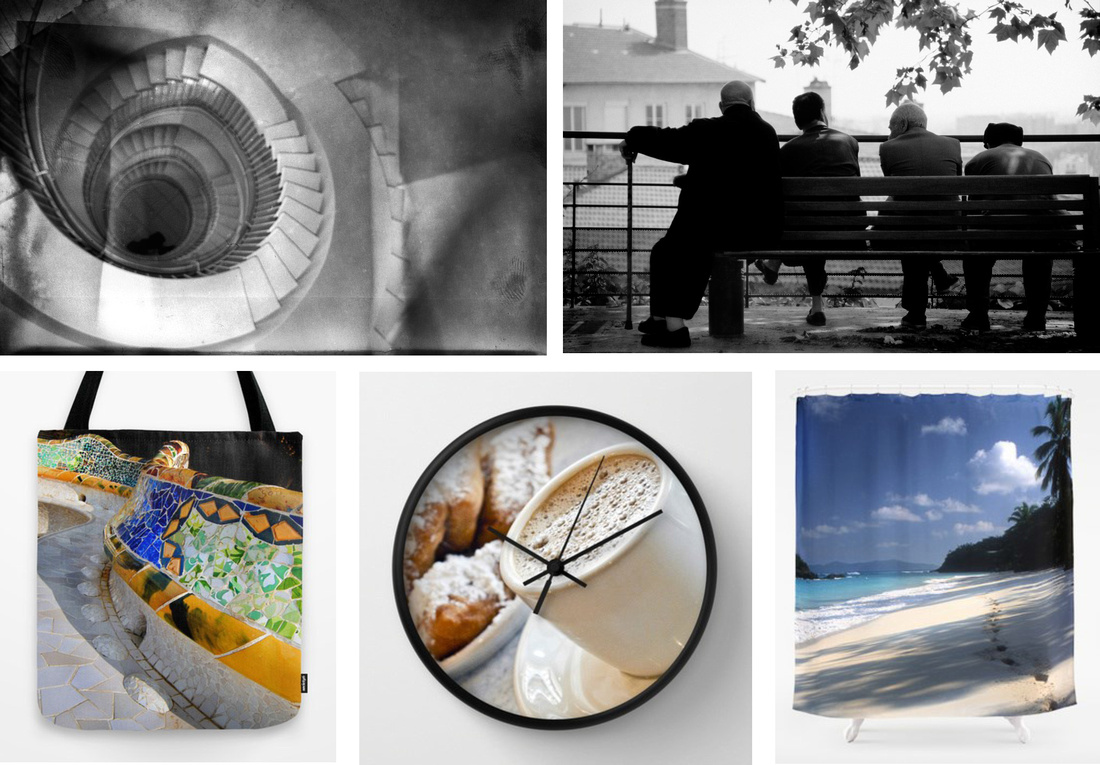
Because I’m crazy-Irish naturally I had to start selling my artwork on not one but two online stores. And, yes, my artwork is selling -- not quite flying out the door just yet but wings are indeed flapping. Society6 (http://bit.ly/13G18yq) allows me to offer my New Orleans-, Caribbean- and Gaudi-themed color images not only on prints and canvas but also emblazoned on everything from wall clocks, coffee mugs and throw pillows to notecards, smartphone cases, tote bags and shower curtains. At first I struggled with this type of unbridled commercialism, thinking, "Umm, shower curtains – really?" But when I received my first notification that a customer had ordered a shower curtain featuring an image from my Gaudi architecture series, I knew to turn off my brain and shut my piehole. Elsewhere at Fine Art America (http://bit.ly/1r0Qeub), I'm offering a hand-curated collection of 24 fine-art black-and-white photographs from my travels throughout the world. The company does an outstanding job of printing images on the finest European etching rag-paper stock and also enables customers to custom matte and frame the photos online (and see in real time how the finished product looks, as well as the final cost). Both companies offer 30-day money-back guarantees. Check out the sites when you get a chance.
8. GENDER SPLENDORS
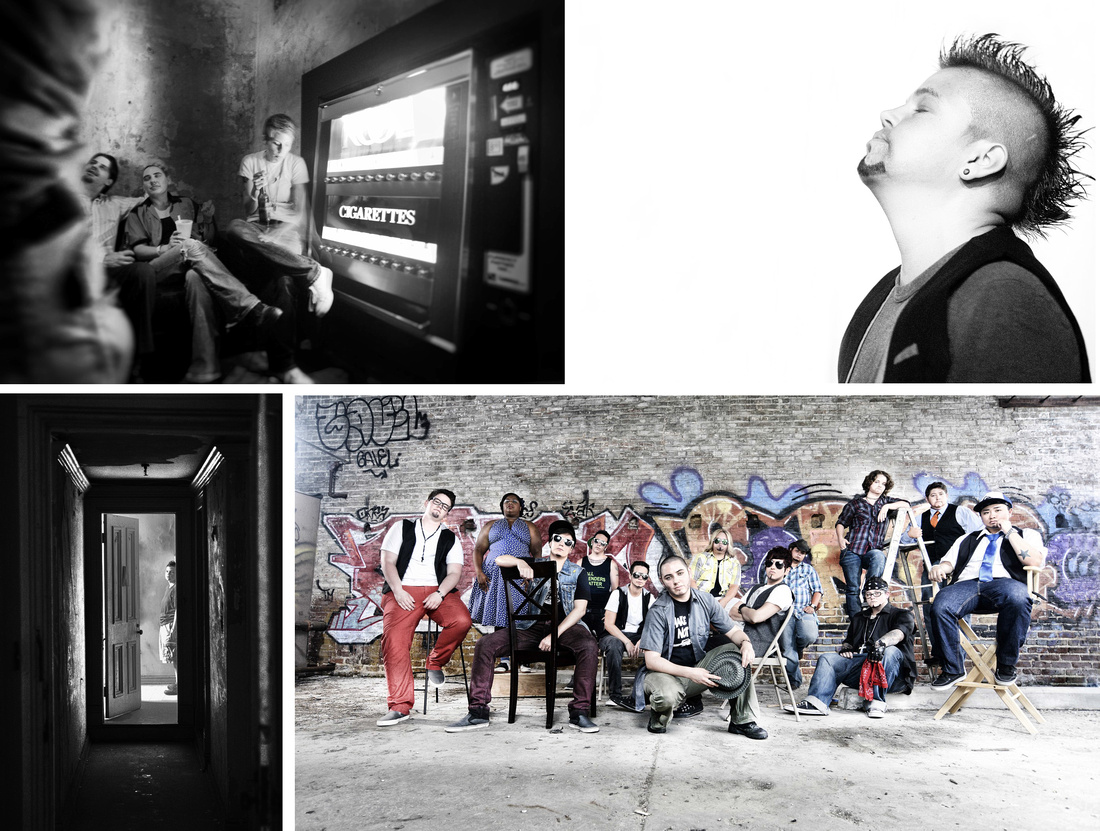
This story has its origins with a series of photo shoots I did in May for transgender filmmaker James Husband’s documentary about the New Orleans Carnival Kings, a group of mostly cisgender women from the Big Easy’s LGBTQ and straight communities who perform at local nightclubs in male drag. When I submitted these and related images for the second annual True Colors’ (http://on.fb.me/1rwjSvx) call for entries and later had six of them accepted for the nonprofit group's art exhibition in New Orleans, I was over the moon. Not only was I honored to have my photographs exhibited alongside work from some of the biggest names in the LGBTQ art world from around the country, but the heavily attended event was also the first time images from James’ documentary saw the light of day. I’ll never forget the opening reception when he and I stood together looking over my photographs (several of which included images of James), and shared the realization that you never know when yesterday’s photo shoot might turn up in tomorrow’s art exhibit.
7. FORKS 'N SMILES

In the mercurial world of commercial photography, especially in a city like New Orleans, you have to be a jack of all trades because you never know who’s going to call next – or what they’re going to want from you. For me 2014 turned out to be a year partially dominated by actor’s headshots and food photography. This trend proved exciting and challenging if only because these two types of photography are as different as night and day when it comes to skill sets, technique and equipment required to deliver the goods. Since my business swims or sinks based on meeting (and surpassing) clients’ expectations, I am happy to report that I’m actually floating on my back with a big-a** grin on my face.
6. KNEEL DOWN IN THE STORM, BEYATCH
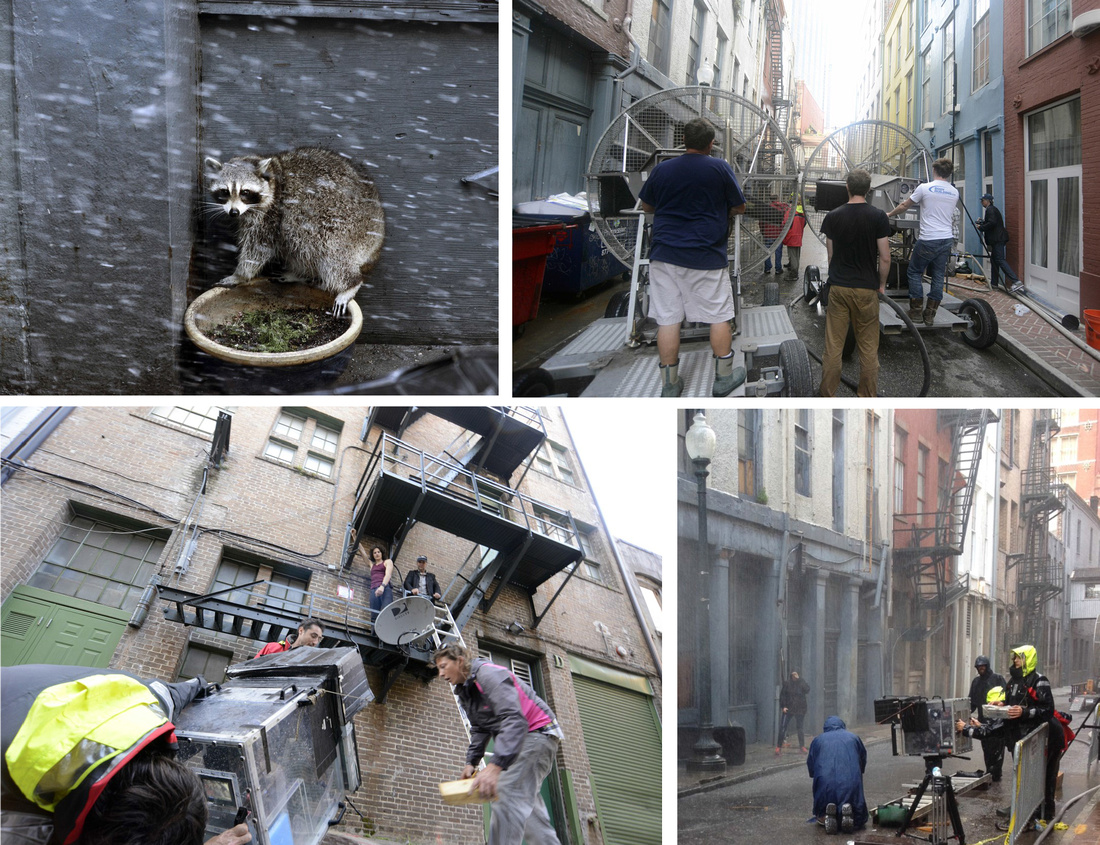
Shooting unit stills on a movie set is difficult enough without having to don a raincoat and secure your expensive cameras and lenses inside protective waterproof gear while shooting in hurricane-like conditions, including 120 mph rain and winds, all designed to reenact one of the deadliest storms in recent Louisiana history for a French documentary. Although I had never in my life been more miserable for so long (10 hours), it proved one of those do-or-die gigs when you can wimp out or embrace the suck and tell yourself, "Kneel down in the storm, beyatch!" For obvious reasons I chose the latter for the documentary on Hurricane Isaac. Good news is my camera and gear survived. [Above, the lower-right photo shows yours truly in a blue parka paying his dues.]
5. TIME OF THE SEASON
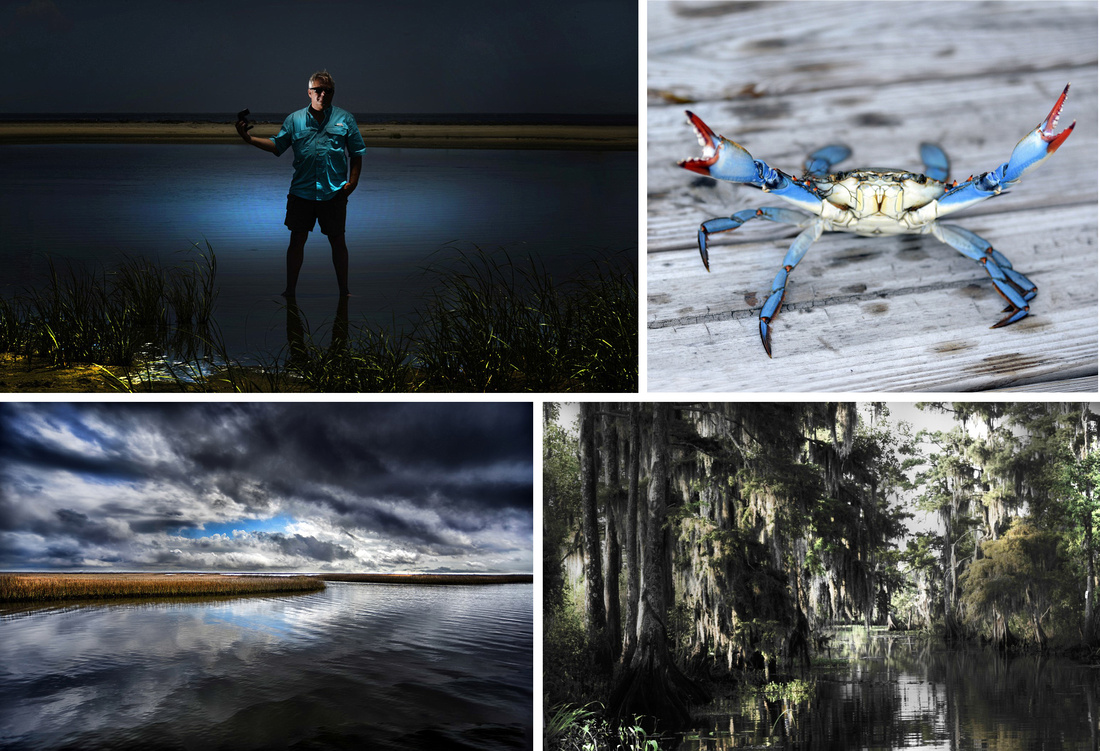
It's been two years since my wage-slave ties were cut with the 9-to-5 world and I joined the ranks of nail-biting freelancers. In addition to working like a dog not only as a commercial shooter (and mostly photography marketer), I also promised to push myself out of my comfort zone and genuinely explore (at least to me) new avenues and genres of photography. This year that included the marshes and swamps of Louisiana. Funny, I've traveled to dozens of countries over the years and shot the hell out of all of them, but I have never really turned my lens on my adopted state. Until now. [Above, the fellow in the upper-left photo is my dear friend and roadtrip co-warrior Tommy Arcement, posing with a hand-held off-camera strobe to help me make a point.]
4. SHIFT WORK
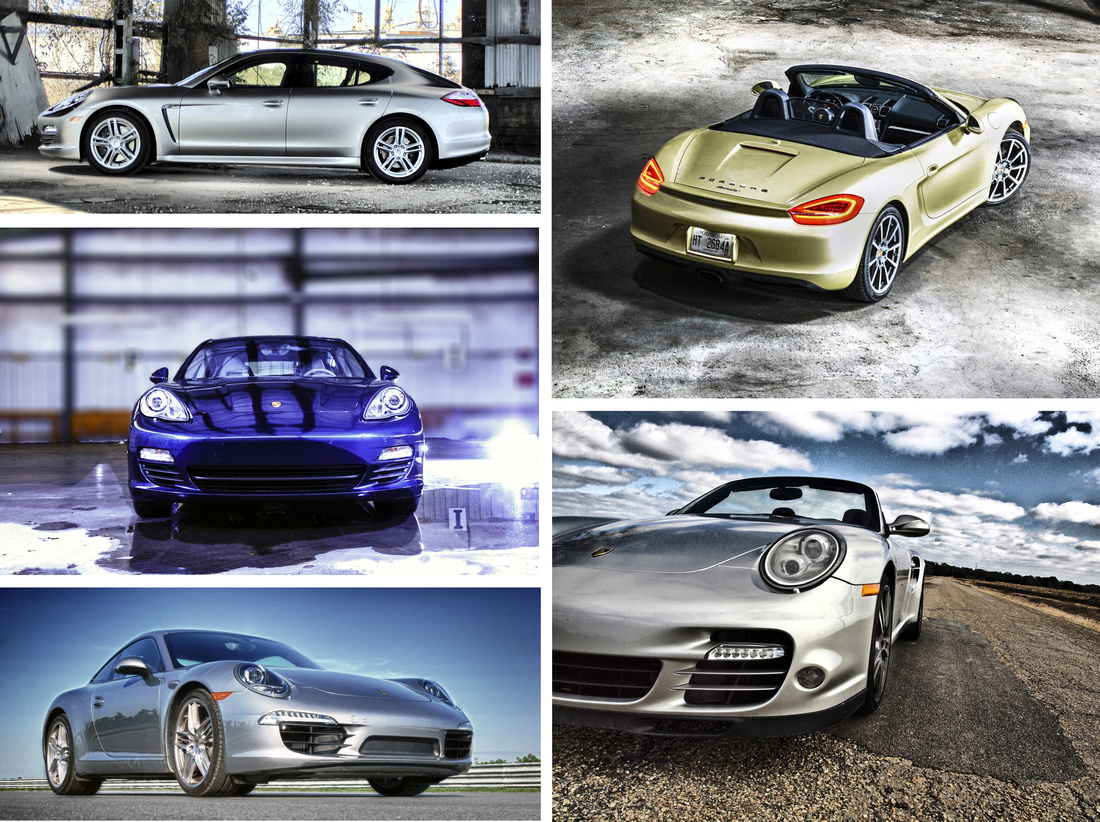
Unfortunately this year my love of automotive photography had to take a backseat (no pun intended), as bottom-line realities pushed more profitable business activities front and center. When it comes to Porsches, though, yeah I've got this ...
3. QUE PASA, ISLENOS?
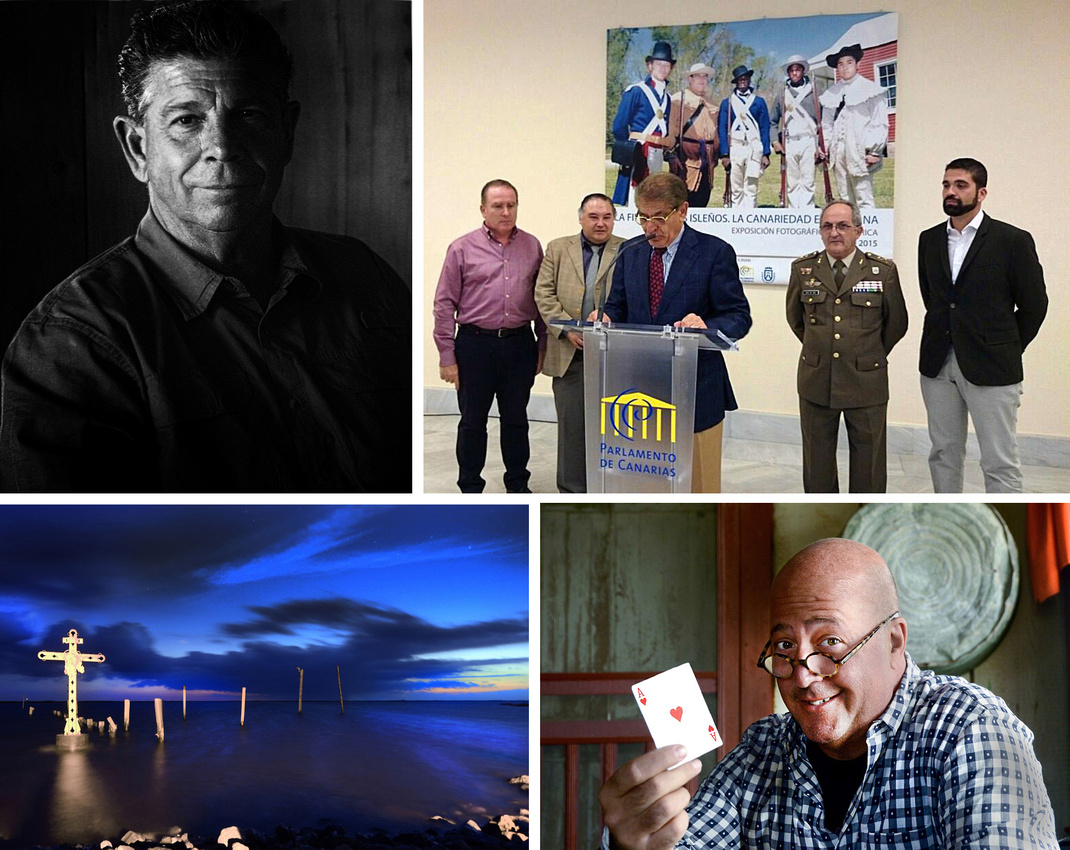
I was honored in November when the Spanish government hosted in Tenerife my first-ever solo photography exhibit, featuring the Islenos culture and celebrations of lower St. Bernard Parish, located 20 miles from New Orleans. The exhibit took several months of planning, plus curating more than 120 images I had taken over the years of a community of modern-day descendants of the first Spanish settlers who immigrated to Spanish-colonial Louisiana beginning in the mid-1700s. The exhibit, made possible by Bill Hyland, manager of Los Isleños Museum (http://bit.ly/1JYQ5lj), was a professional milestone but equally important a welcomed opportunity to exhibit a collection of images of a people close to my heart. [The top-right photo (not taken by me) is of government officials and dignitaries of the Canary Islands in Tenerife during the opening reception. The photo behind them is mine.]
2. WHERE 'ART' THOU?
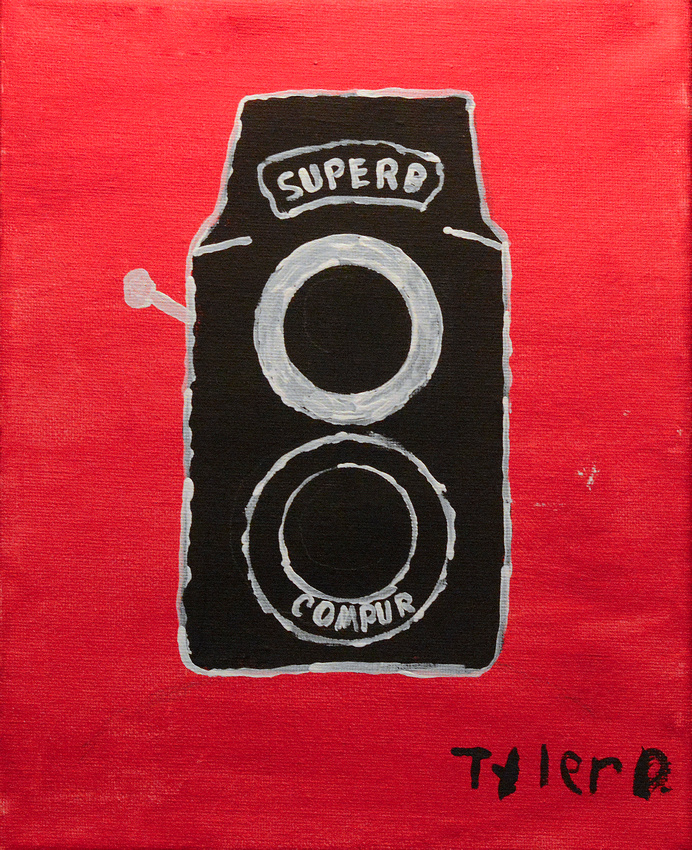
You could have knocked me over with a feather when I unwrapped the Christmas present my godchild/nephew Tyler James (yes, his middle name was taken from mine) gave me during the holidays. It was a canvas painting the bright, energetic 10-year-old Cajun boy from Opelsousas did himself of an old and classic Superb Compur camera (which were first introduced in 1933). He said he painted the black camera specifically against a red background because he wanted it to -- ready for this? -- match the black-and-red rug in my office. O-M-G. I scouped him into my arms and gave him the biggest uncle-hug ever. "Where are you going to hang it?" he asked. "On the wall right above my desk," I said, "so I can see it every minute of the day." <blink>
1. 'KICK' IN DA PANTS

Getting the chance in December to shoot unit stills for the 2015 reboot of the acclaimed 1989 mixed martial-arts movie "Kickboxer," starring Jean-Claude Van Damme, was a dream come true. Without question this multimillion-dollar production (IMDb: http://imdb.to/1vnVlEr) challenged me to step up my game to capture the same kind of split-second, live-action martial-arts scenes that made the original flick such a hit. More than this I’m not at liberty to share due to various non-disclosure agreements. Nor am I able to show any of the stills I shot on the set (until the movie comes out next year). Stay tuned.
And Happy New Year.
Cheers,
James
]]>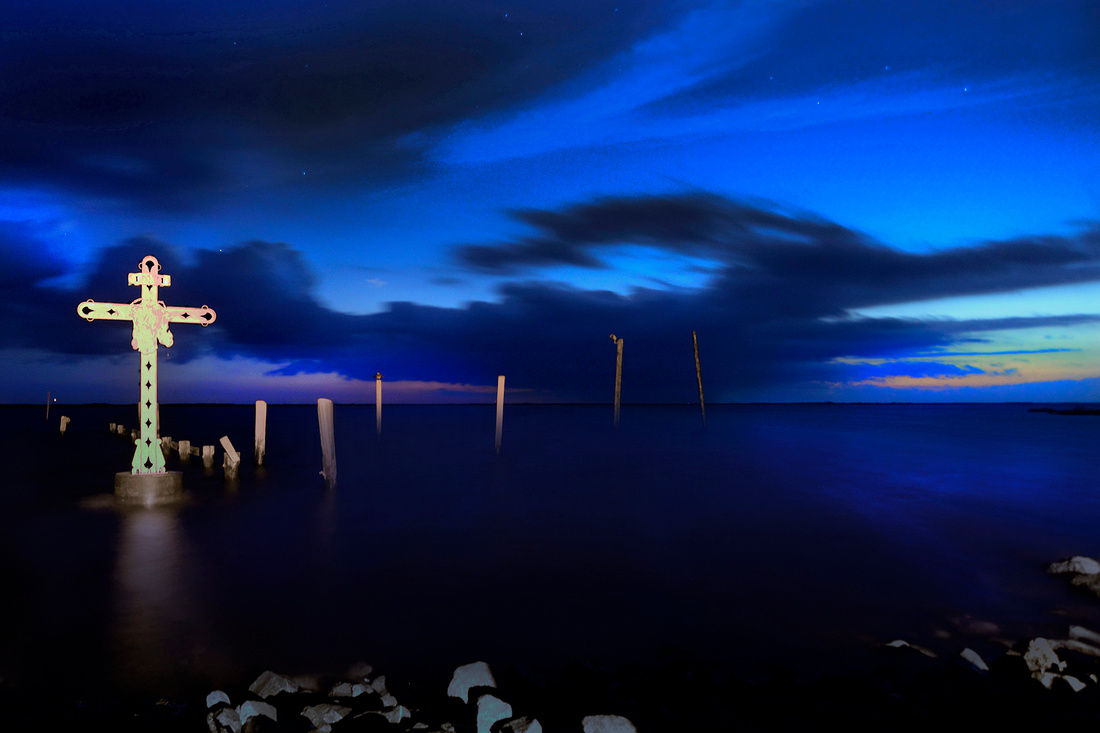
Above, the Hurricane Katrina Memorial at Shell Beach commemorates the 163 St. Bernard Parish residents, many of them Isleños, who perished as a result of the 2005 storm.
[Today, Oct. 31, is the opening of James’ first-ever solo photography exhibit, held in Tenerife, Spain, featuring 60 curated images he has taken over the years of the annual Isleños Fiesta and the storied Isleños of lower St. Bernard Parish in Louisiana. For James the exhibit, sponsored by the Spanish government and made possible by Los Isleños Museum manager Bill Hyland, is a professional milestone. It is also a welcomed opportunity to exhibit a collection of images of a people and culture close to his heart. The following post is his story of his experiences with the Isleños. -- Cathy Jacob Gaffney]
It was nearly 25 years ago. I was sloshing through ankle-deep mud at the ruins of Fort Proctor, the never-completed, 19th-century American fort that rises like a ghost above the marshes of Lake Borgne and which today, due to saltwater erosion, is accessible only by boat. My guides were St. Bernard Parish historian and Los Isleños Museum manager Bill Hyland, and the late Frank “Blackie” Campo, the venerated Isleño marshman, angler and unofficial “mayor” of Shell Beach.
A time capsule of a long-ago yet still working fishing village, Shell Beach is framed by neatly stacked crab traps, modest shrimp and oyster boats, and a hodge-podge of trailers and raised wooden homes, all tucked like a secret along the tree-shaded banks of Bayou Yscloskey. Within spitting distance are the relative newcomers in the form of half million-dollar weekend perches for affluent city dwellers, whose spacious second-floor balconies overlook Shell Beach’s dreamy, Prince of Tides-like marshscapes.
I could not have asked for two better storytellers that afternoon a quarter-century ago at Fort Proctor when I met Bill and Blackie, my first Isleños of lower St. Bernard Parish. It wasn’t long before this L.A. transplant and newspaper reporter, still a bit wobbly in his first-ever pair of white shrimp boots, found himself awash in a tidal surge of tales of life growing up on the water’s edge.
Blackie was well into his 70s, but as he spun his stories from childhood I could look into his still youthful, piercing blue eyes and almost see the drunken Russian artillery soldiers, who had trained at a nearby military range during World War II, marching home and singing at the top of their lungs while trading swills of hootch. As for La Luz de Lago? Blackie claimed to have actually seen the glowing green “light of the lake,” a ghost according to long-time Isleño legends. Others insist La Luz de Lago is more likely the result of naturally ignited swamp gas.
Of this I was certain: the oranges Blackie swiped as a kid from his neighbor’s tree tasted as sweet in his memory as they did in his youth.
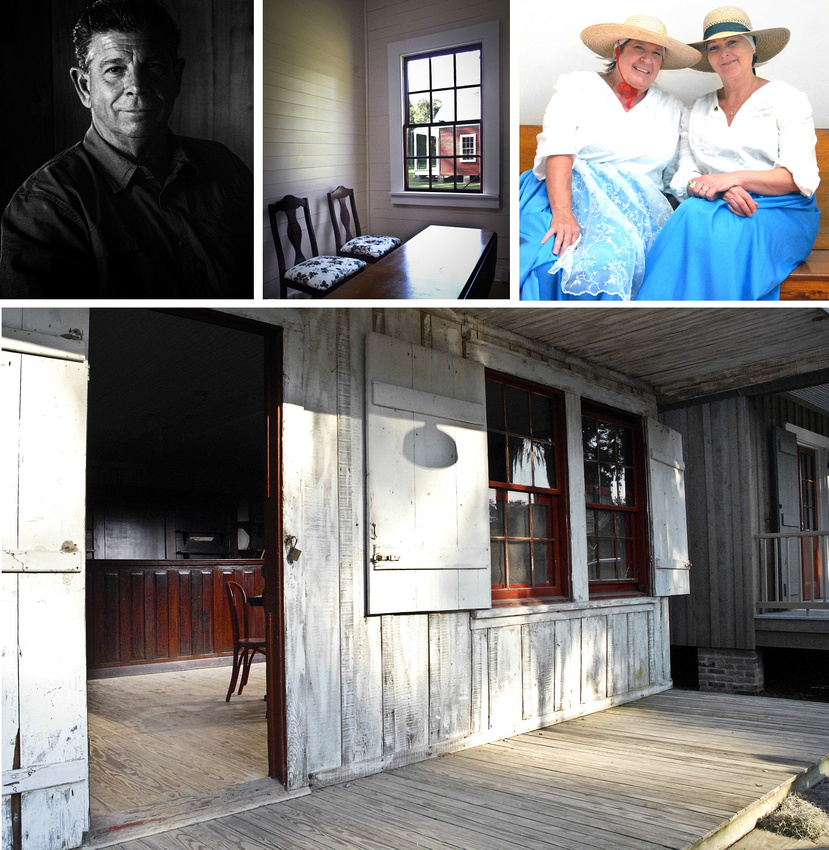
Clockwise from top-left: lifelong St. Bernard Parish resident and Isleño Paul Lagarde; interior view of the Esteves House at Los Isleños Museum; Isleño cultural folk arts coordinator Donna Mumphrey-Martin (left) and volunteer Debbie Serigne at Los Isleños Fiesta; and the museum's Coconut Island Barroom, a 1920s structure dubbed "the bucket of blood" due to the frequency of fistfights that broke out weekend nights back in the day.
MARSH CAMPS AND GROCERY BOATS
In lower St. Bernard Parish, located a half-hour’s drive from New Orleans but worlds away in terms of culture and disposition, time marches to the beat of a different and certainly slower drum. Especially for the Isleños, the modern-day descendants of Louisiana’s first Spanish Colonial settlers, who began arriving here in the late-1700s after France sold the Louisiana Territory to its Iberian neighbor. Even in the 21st century the humble, hardworking people of Shell Beach still live life mostly through the senses: the briny taste of freshly shucked oysters; the sound of chugging shrimp boats plying nearby bayous; the sight of mercilessly beautiful sunrises peering above marshscapes that stretch to the horizon; the balmy caress of a seductive West Indies tradewind in the nearby Gulf of Mexico.
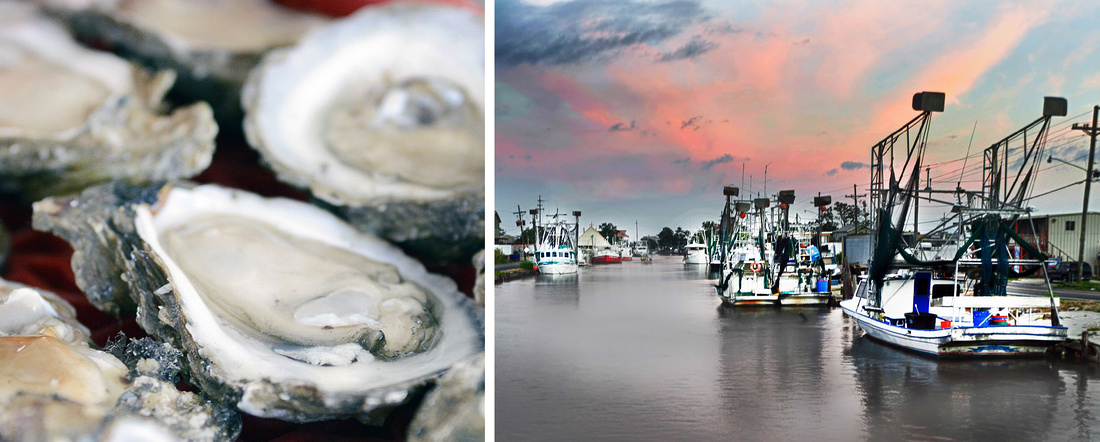
Above: left, freshly shucked Louisiana oysters; right, shrimp and oyster boats line Bayou la Loutre in Shell Beach at dawn.
Newspaper assignments over two decades routinely took me south to what I began affectionately calling “Isleños Country,” to churn out feature stories about this insulated, tight-knit community’s uniquely colorful culture and folkways. Pre-dawn proved the best time to photograph boats from the kissing-cousin villages of Shell Beach and Delacroix Island, en route to the marsh-enveloped waters where local fishers trawl for oysters, shrimp and crab – a triple crown of local seafood favorites, which also helps set the table at New Orleans as well as national and international restaurants.
Elsewhere, generations of Isleño-American boat builders, duck hunters and decoy carvers, charter captains, trappers and tradespersons, as well as school teachers, merchants, politicians and physicians continue to leave an indelible legacy on this culture’s long storyline. So long, in fact, that many Isleños can point with pride to the St. Bernard Catholic Cemetery, established in 1785 and the oldest in the New Orleans area, where above-ground tombs and crypts bear the names of their ancestors who began arriving here nearly 230 years ago from the Canary Islands (hence, “Isleños”).
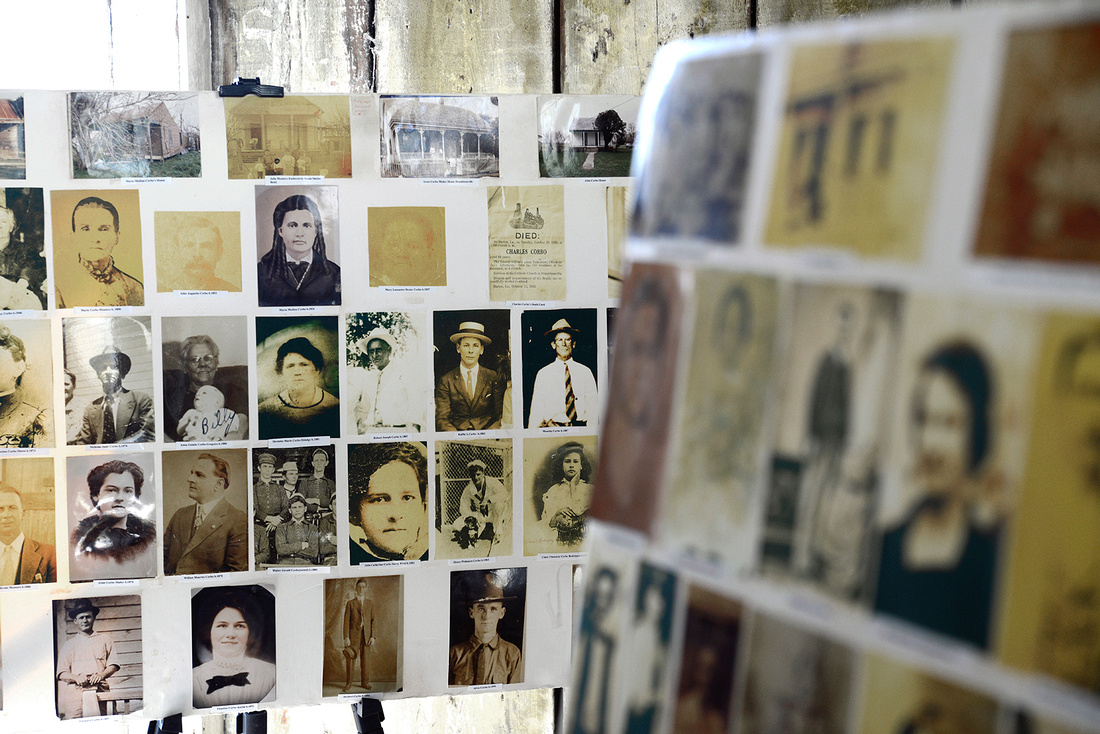
Above, old photographs of generations of Isleños provide ancestral links for many visitors to the annual Los Isleños Festival, held in March at Los Isleños Museum in St. Bernard, La. Below (left), lifelong Delacroix Island resident Lloyd "Wimpy" Serigne, president of Los Isleños Cultural and Heritage Society; (right), Travel Channel celebrity Andrew Zimmern chats with Isleño cultural folk arts coordinator Donna Mumphrey-Martin while taping a segment on Isleños cooking traditions, which aired on Zimmern's popular "Bizarre Foods America" TV series.
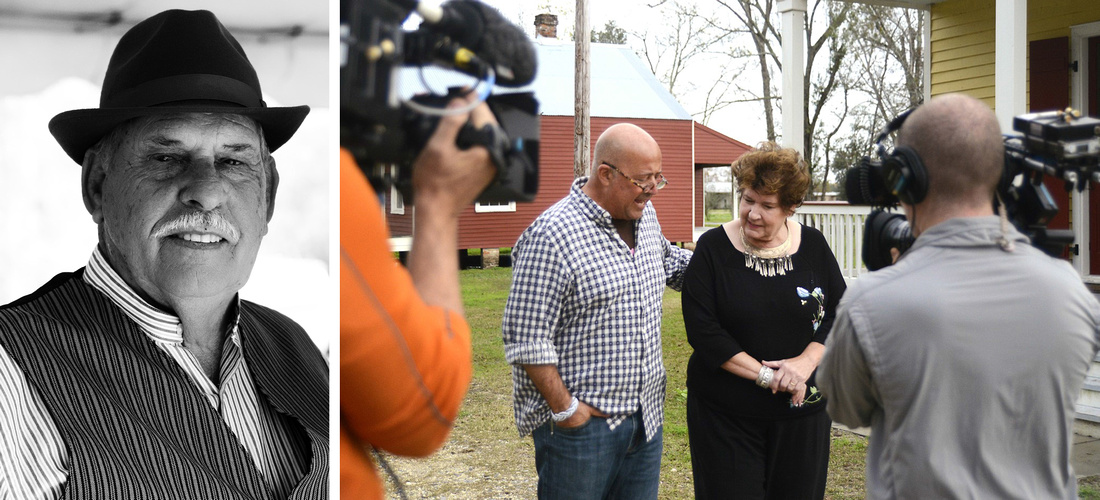
As a boy, Lloyd “Wimpy” Serigne, 74, president of Los Isleños Cultural and Heritage Society, grew up without electricity or indoor plumbing. He recalls how his family would spend several months each year at a ramshackle camp in remote swamps four hours by boat from home. Time there was spent fishing, trapping and hunting to eke out a living and awaiting arrival of the weekly grocery boat that brought food staples to Isleño families hunkered down in the marshes for the season. No matter how austere this life might seem to outsiders, Wimpy, a Delacroix Island native and lifelong resident, is quick to point out how the picturesque bayous and marshes of his childhood provided a playground of natural beauty for a young Isleño boy who knew next to nothing of the outside world.
“It was my backyard,” he said fondly. “Everything I needed was right there.”
That backyard was fated to change.
DISAPPEARING ACT
Older Isleños attest that their rugged individualism and survival instincts, tested and tempered through the centuries by hurricanes and epidemics, are strengths forever woven into the tapestry of their centuries-old history. But they also readily admit their culture, environmentally and demographically, is slowly disappearing. Younger generations of college-educated Isleños are seeking opportunities outside lower St. Bernard Parish in New Orleans and elsewhere. Many families relocated to other cities in the aftermath of Hurricane Katrina, never to return.
Wetlands meantime are disappearing at an alarming rate due to hurricanes and unstoppable erosion from saltwater intrusion. “Right here in Delacroix, when you come down the road, the only land you have (today) is right where the houses are, and the road. That’s it,” Wimpy told dailyyonder.com. “The land’s not there, the woods are not there, and the local people — they only have about five local people after Katrina that came back. In 20, 30 years, I don’t see this land being here. I think it will be all gone.”
“Another hurricane like Katrina,” said another local familiar with the area, “and this place is finished.”
As a journalist the rich, hidden patinas of this multi-layered world would not have been as accessible to me as they have been through the years without the longtime help of St. Bernard Parish historian Bill Hyland. As manager of Los Isleños Cultural and Heritage Museum (www.losislenos.org), his life’s work for three decades has involved in part acquiring and relocating historical and architecturally significant Isleño homes and other buildings to the museum grounds where they have been renovated and preserved for generations to come.
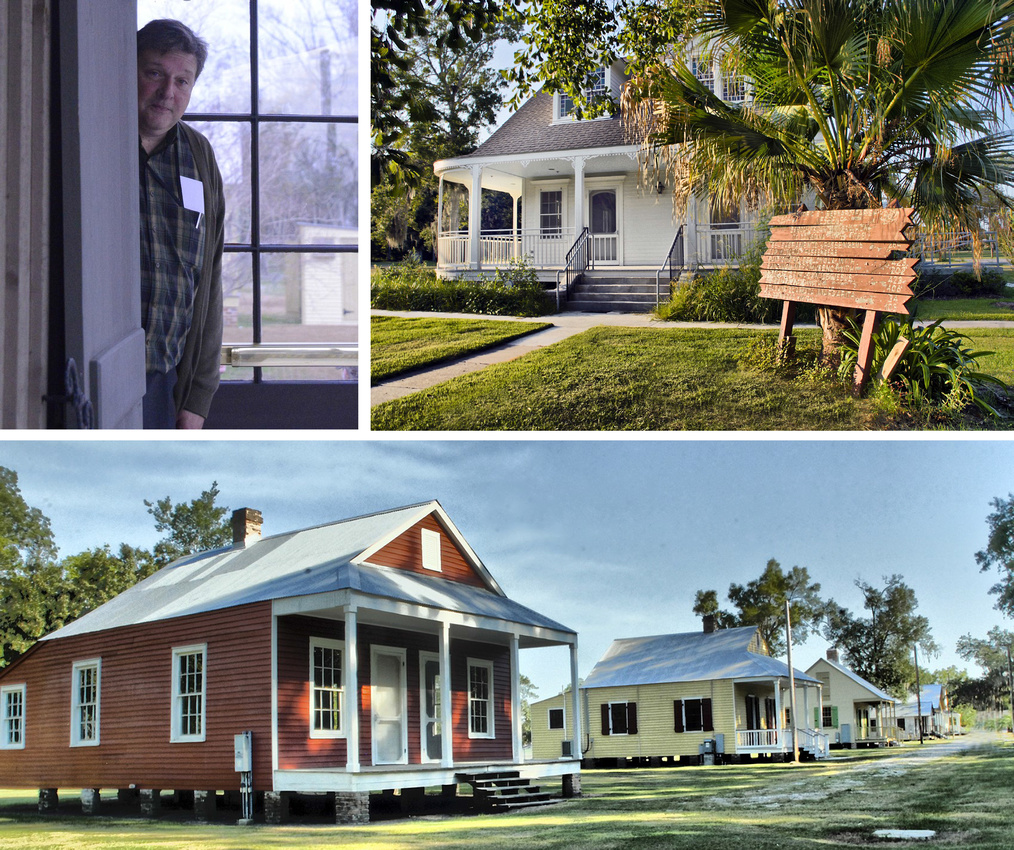
Clockwise from top-left: St. Bernard Parish historian and 11th-generation Louisianian Bill Hyland, manager of Los Isleños Cultural and Heritage Museum; the main museum building, which required complete reconstruction following damage caused by Hurricane Katrina; and the museum's noteworthy collection of historical and architecturally significant Isleño homes and structures which have been acquired and relocated to the museum grounds for renovation and restoration during the past three decades.
Charming and succinctly comported as befits a quintessential Southern gentleman, Bill possesses a statesman’s gift of language and oration. Yet it is Bill’s empathetic, generous manner that perhaps best honors his roots as an 11th-generation Louisianian and descendant of one of the state’s oldest founding families. More to the point, over the decades he has taught me – and no small number of local, national and international journalists who have come to Isleños Country on assignment -- much about the resilient people who continue to call this swath of Southeast Louisiana home.
All of which is why it was truly a great honor last August when Bill reached out and asked me to submit a collection of photos I had taken of the Isleños Festival and the community’s culture -- this for an exhibit to be held in the Canary Island of Tenerife in Spain. Bill approved the images from my archive and also served as liaison and translator for the Spanish government’s representative for the Isleños exhibit. To him I owe my deepest gratitude.
At the dead end of a twisting two-lane blacktop called Yscloskey Highway that wends through Shell Beach is a large bronze plaque that memorializes the 163 names of St. Bernard Parish residents, many of them Isleños, who perished in Hurricane Katrina. From here I look out across the Mississippi River Gulf Outlet to Fort Proctor in the distance, the late-afternoon horizon intersected by the occasional shrimp boat, its port and starboard nets hoisted at the 10- and 2-o’clock positions, heading home from a day of trawling.
I linger at this cultural crossroads to soak in the uncomplicated poetry that awakens the senses, keenly aware this land is slowly disappearing -- and, along with it, a centuries-old way of life.
]]>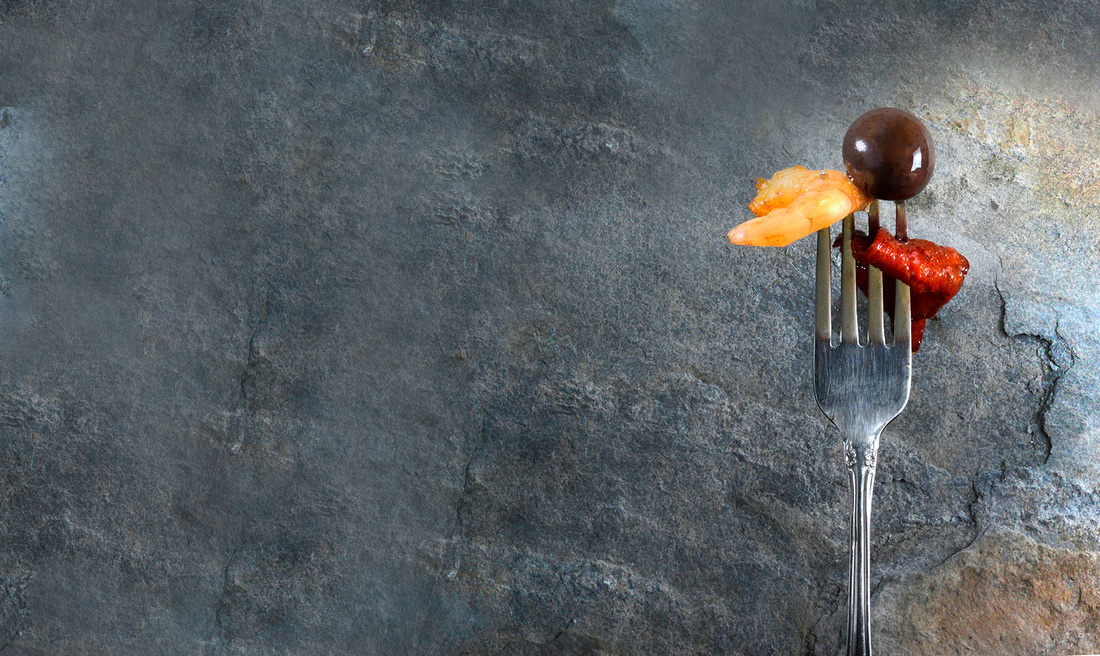
“The garlic shrimp will be done in 10 seconds – are you ready in there!?” Chef Xavier bellowed from the kitchen to me in the next room in the makeshift photography studio I had set up inside his restaurant.
“Ready!” I shouted loud enough for him to hear me above the kitchen din.
He swept into our temporary studio carrying a terra-cotta casserole dish brimming with steaming garlic shrimp. We worked quickly arranging the dish and soon I had set to work capturing this rustic tour de force of classic Iberian gastronomy (see below):
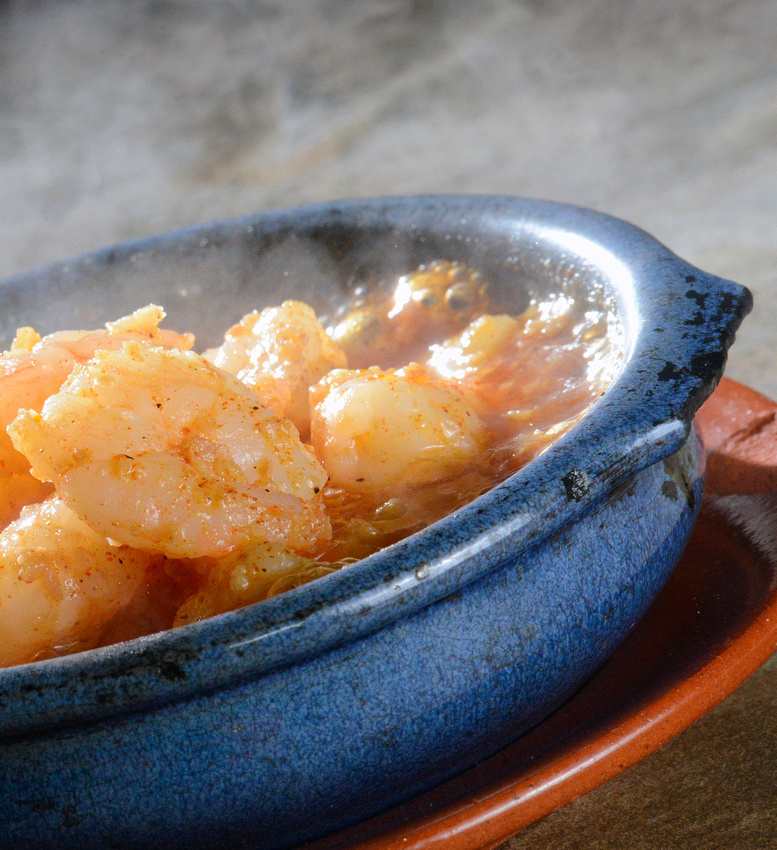
Chef Xavier quickly disappeared back into his kitchen to prepare the next dish.
Good communication between photographer and client is critical for any successful shoot. All the more so when the client is a chef preparing time-sensitive dishes on the spot that must be photographed quickly and efficiently yet with finesse and a high level of creativity.
And that's how I rolled during my recent food shoot for my dear friend Xavier Laurentino, chef-owner of the popular Spanish restaurant Barcelona Tapas in New Orleans (www.barcelonanola.com). Both passionate alpha perfectionists in our respective trades, we worked together seamlessly -- virtually hand-in-glove -- after sitting down to first hammer out Xavier's vision for the shoot: Namely, unfettered tight shots with sufficient detail that allows viewers to “taste the food with their eyes.” No fancy, over-arching styling motifs cluttered with table napkins, silverware and wine glasses, he said. Just simple, organic images lighted in such a way as to enhance the inherent sensuality of the Barcelona native’s earthy, richly flavorful recipes, many of which Chef Xavier learned from his father while growing up in Spain.
We were also in agreement that the century-old slate I employed to infuse the image-making process with a textural and moody Old World feeling was a good call indeed.
Following is the lighting setup I used, powered by my menagerie of off-camera Nikon Speedlights, which were triggered with Yongnuo radio frequency remote receivers/trigger:
-- 24x24-inch softbox (right);
-- 22-inch beauty dish with honeycomb grid and diffusion sock (overhead);
-- snoot with 20-degree grid (at 10 o’clock position).
-- white foam core (far left) for reflector.
Here’s what everything looked like for the series we did of the fideua (a Catalan version of paella using angel-hair pasta in lieu of traditional rice), shot in stages starting with the setup and proceeding through alternative lighting and cropping configurations:
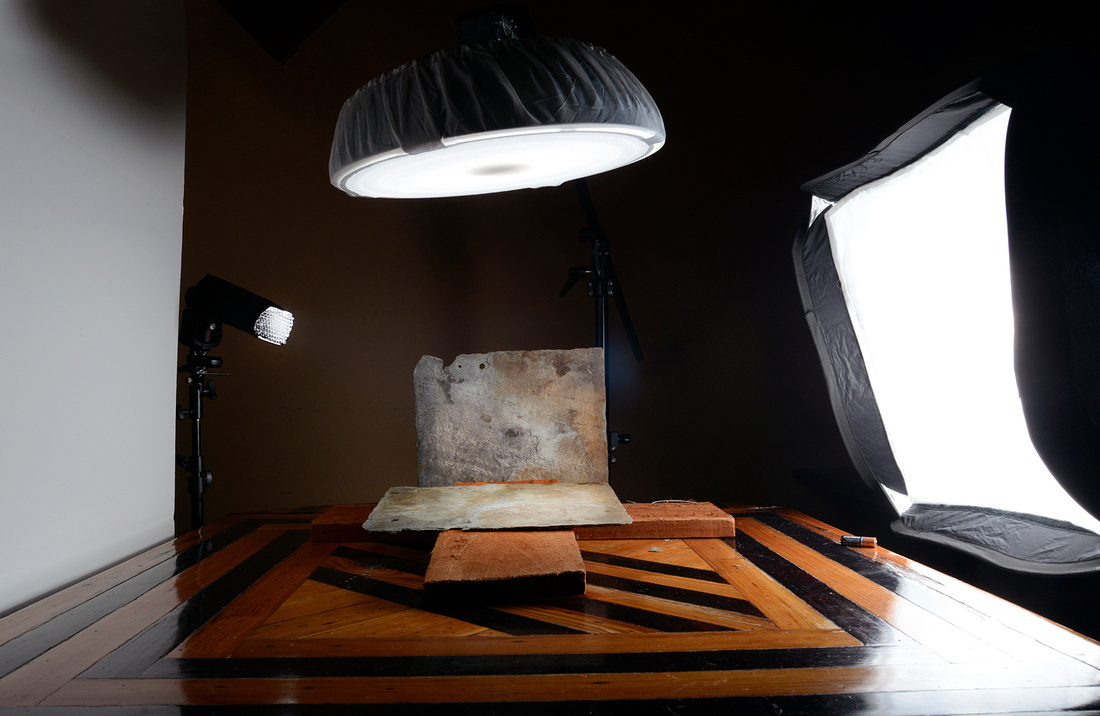

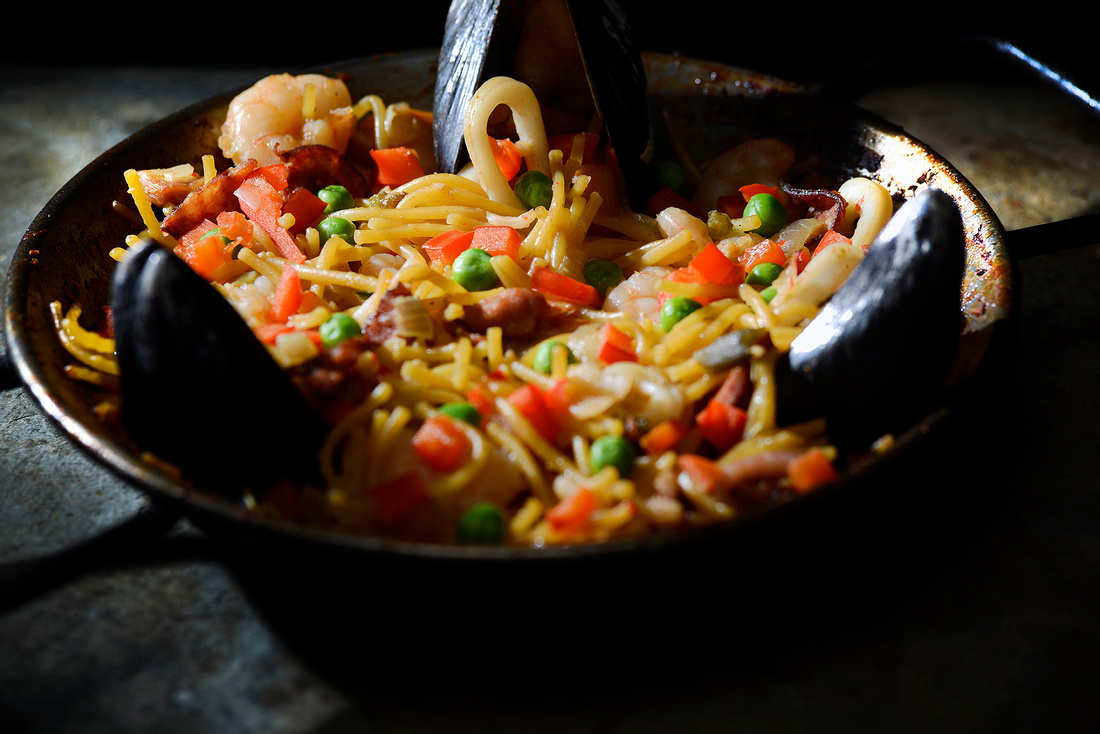
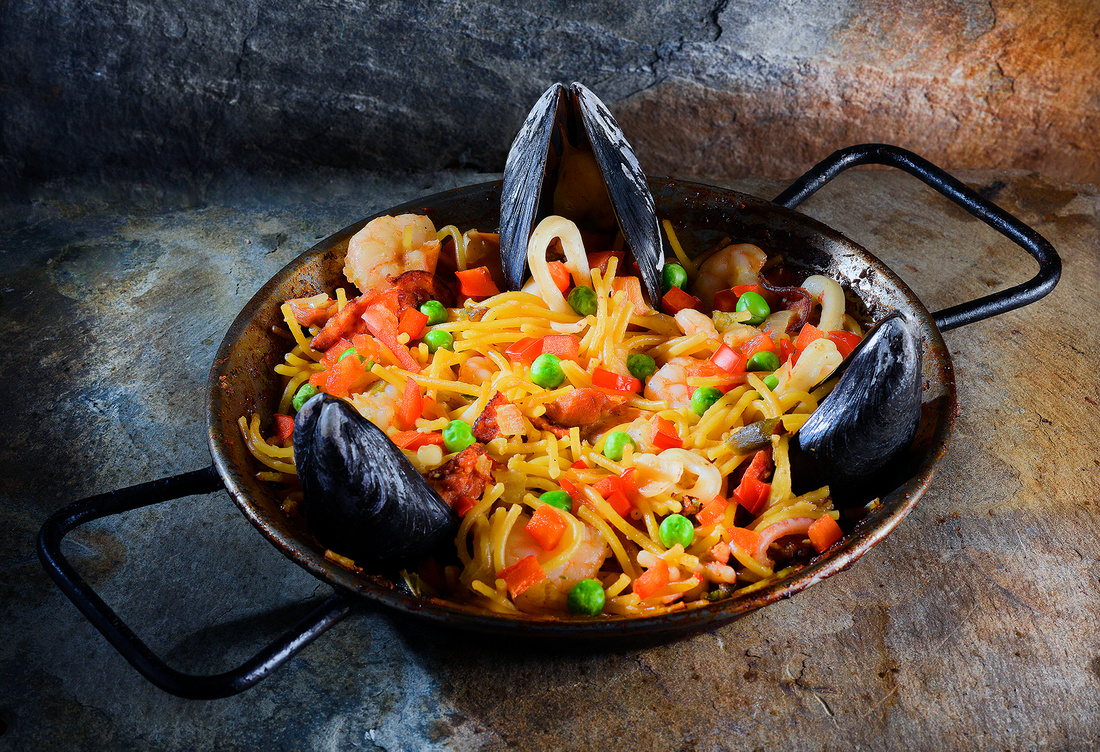
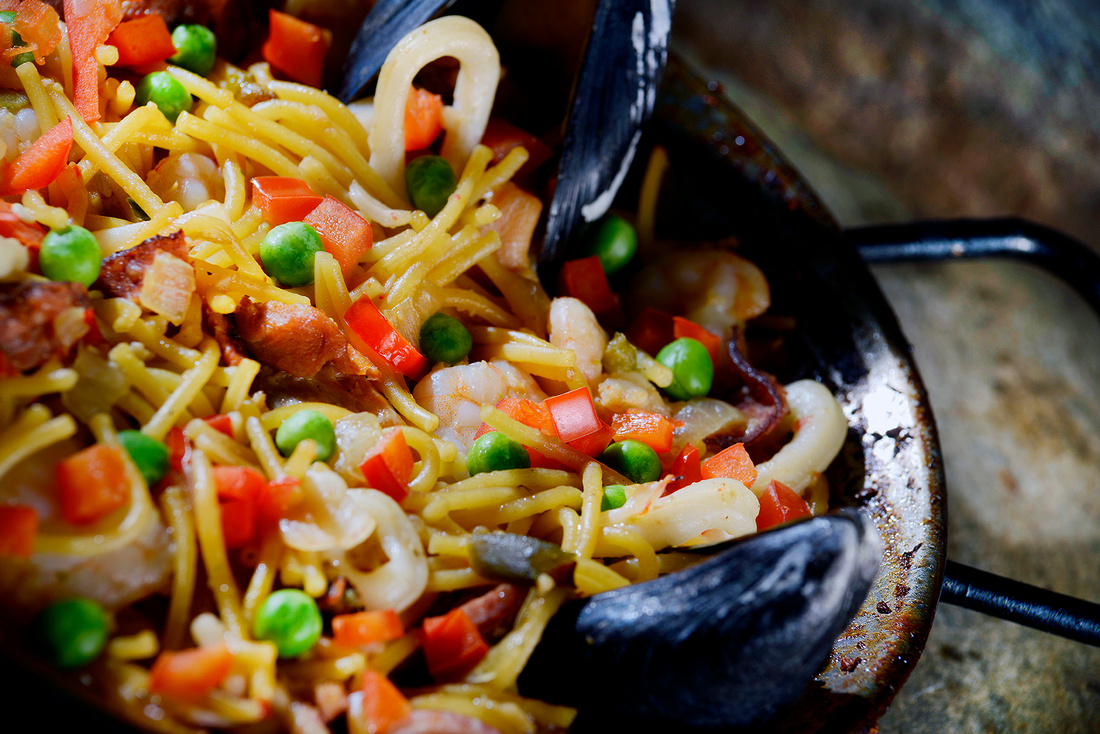
Other dishes Chef Xavier prepared for our session included chorizo (cooked in Spanish sherry), ceviche à la Xavier, and lamb chop served with frittes (see below):
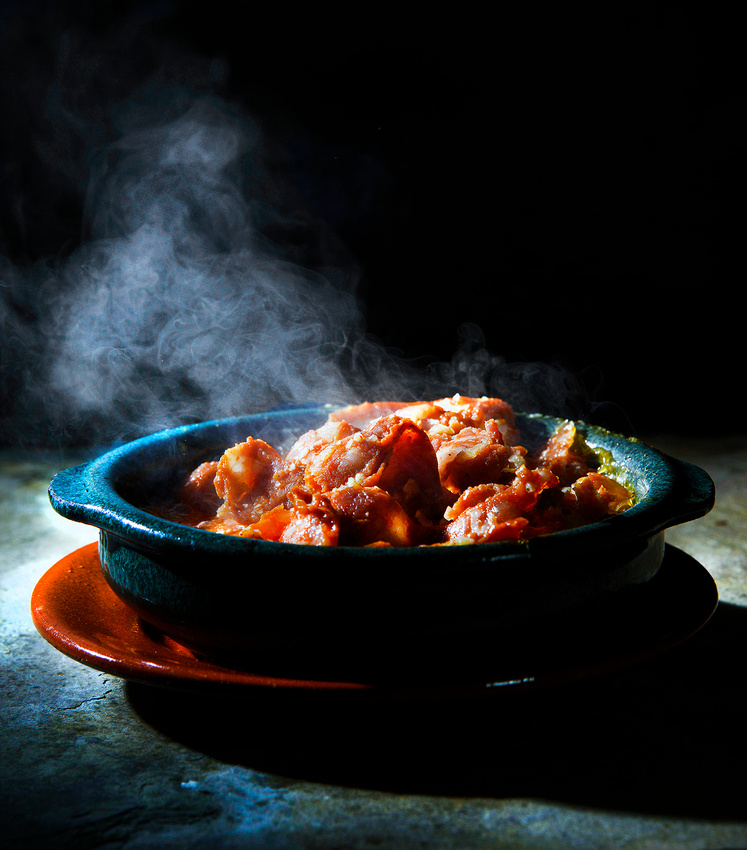
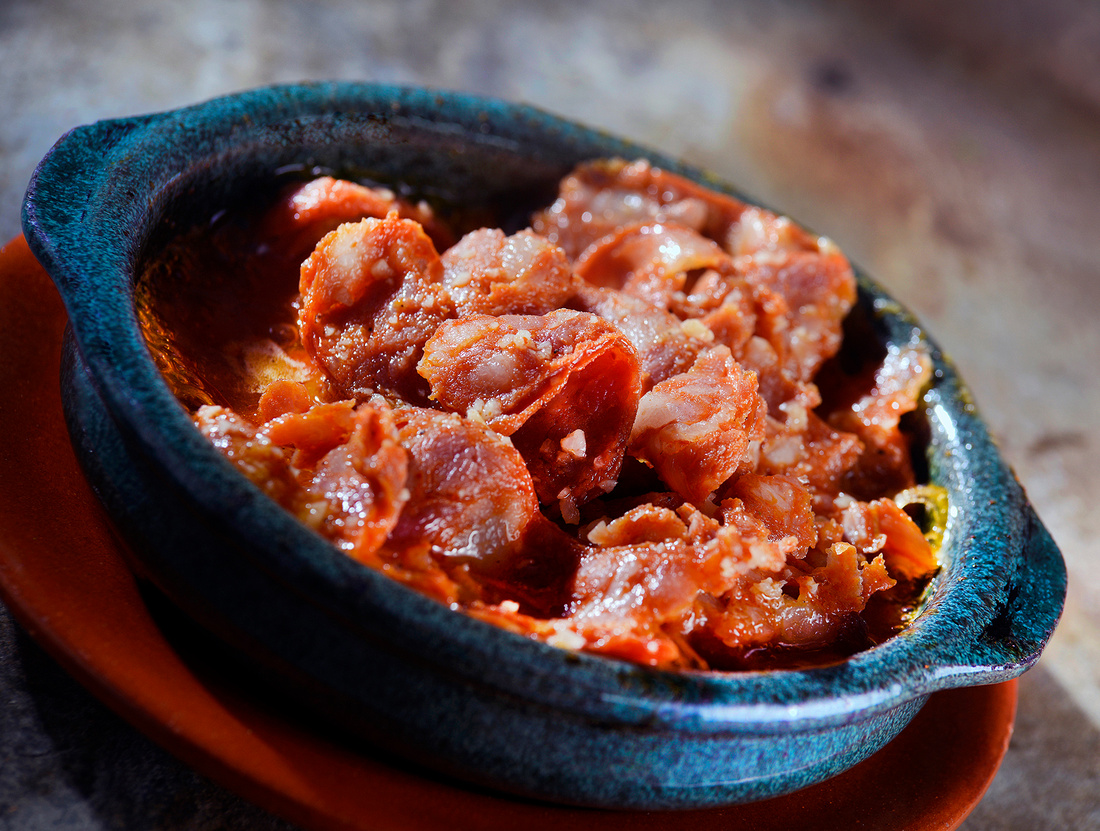
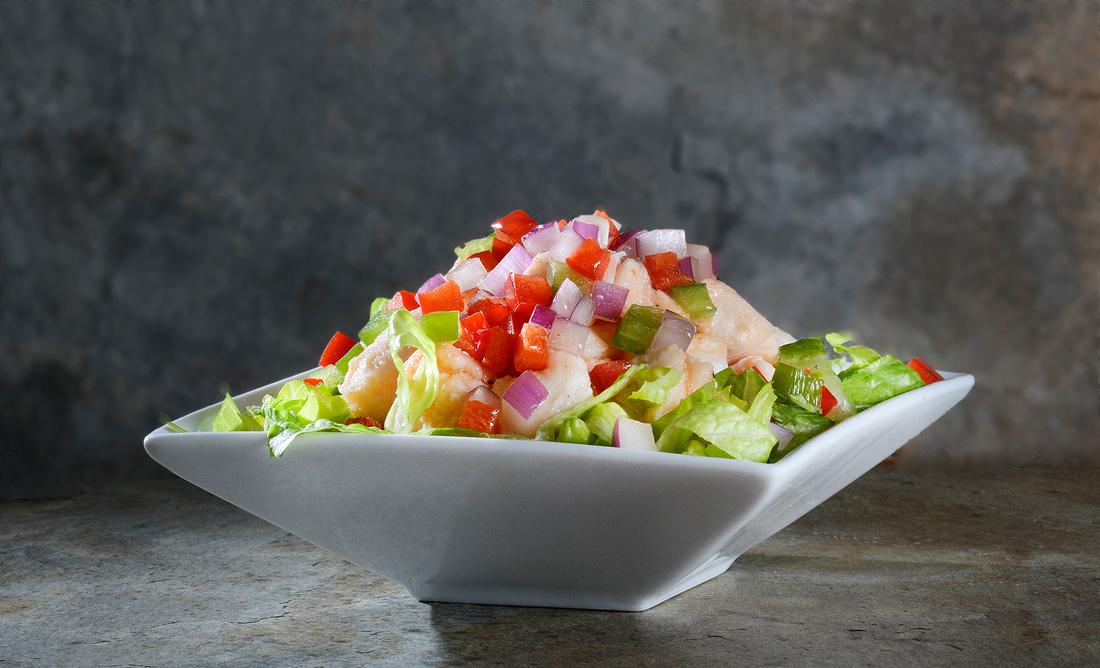


Working with chefs like Xavier Laurentino, especially in a Food Nation like New Orleans, is always a professional pleasure and personal joy. And, no, it didn't make the day any worse that afterwards he and I sat down to a fine lunch of gastronomic pleasures courtesy of Spain. Olé!
]]>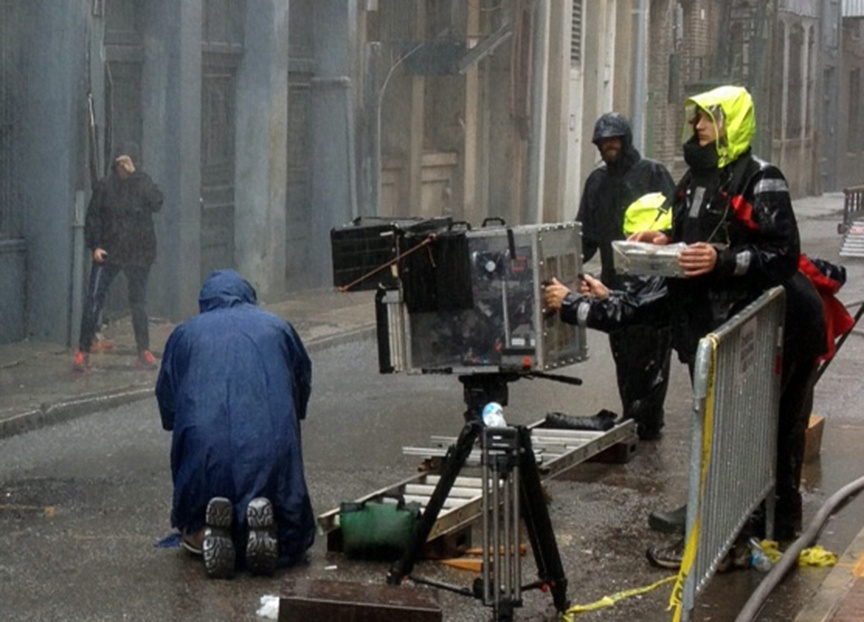
(ABOVE: The bloke on his knees in the blue parka is yours truly, trying to frame his shot in faux-hurricane conditions before the crew shoots the scene. Above photo courtesy Rachel Jacob; all others James Gaffney Photography LLC)
Temperamental movie stars are par for the course in the intensely creative, insanely stressful filmmaking industry. Yet there seems something sooo prima donna-ish when the star steadfastly refuses to crawl inside a tipped-over trash bin. All the more so when it’s a key scene in the script.
But then this was no ordinary leading actor -- it was a trained raccoon. Bandit-mask eyes. Long whiskers. Cute as all get-go. And it wasn't just any ordinary scene. That is, unless you define ordinary as mammoth fan turbines churning out hurricane-force winds and firefighter hoses opened at full blast to simulate torrential, cyclone-like rain. All of this employed by a French film company to create a hurricane documentary.
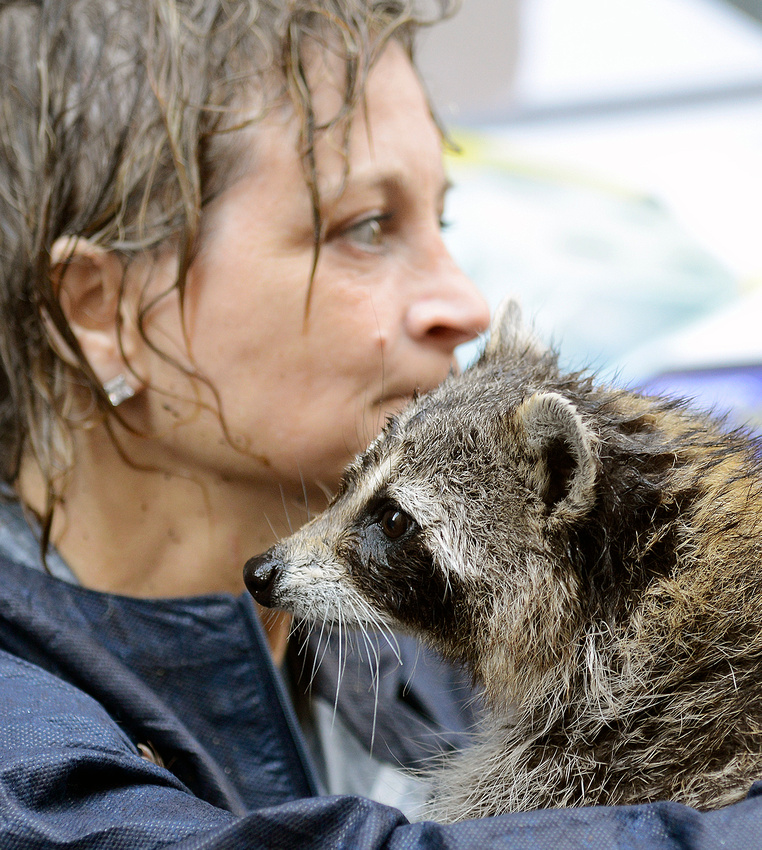
In August 2012, Excelsior Productions beat a path to New Orleans specifically to film and document approaching Hurricane Isaac, a Category 2 storm that hit Louisiana causing 41 fatalities and $2.4 billion in damages. An estimated 4,000 Louisiana National Guard troops were activated for the occasion. Yeah, it was that bad. Needing additional storm footage, the crew returned to the Big Easy in April 2014 and spent two weeks shooting scenes under simulated hurricane conditions in Plaquemines Parish and downtown New Orleans.
When I was hired to shoot unit stills for the day of the hurricane scene in downtown New Orleans, I jumped at the chance. Little did I know what was involved in photographing under these conditions even in a parka and with my camera safely ensconced in a waterproof pouch. The wind turbines alone were nearly deafening (wish I had thought to bring earplugs). But holding one index finger in my good ear while using the other to click the camera shutter must have surely impressed the French and British crew as diabolically clever.
In between shoots it was fascinating to watch the crew and local special-effects team create what was, in every real sense of the term, bona-fide hurricane conditions. The pair of wind-generating fans (see below) were fixed on the block-long street that had been cordoned off for the shoot. A trio of water jets jutting into the sky mixed with street-level, firefighting-force water hoses worked in tandem to create the deluge.

Meantime the crew's uber-advanced video camera was safeguarded in specially designed plastic housing with handles that allowed the cinematographer to maneuver the beast with relative ease on a converted ladder dolly (see below).

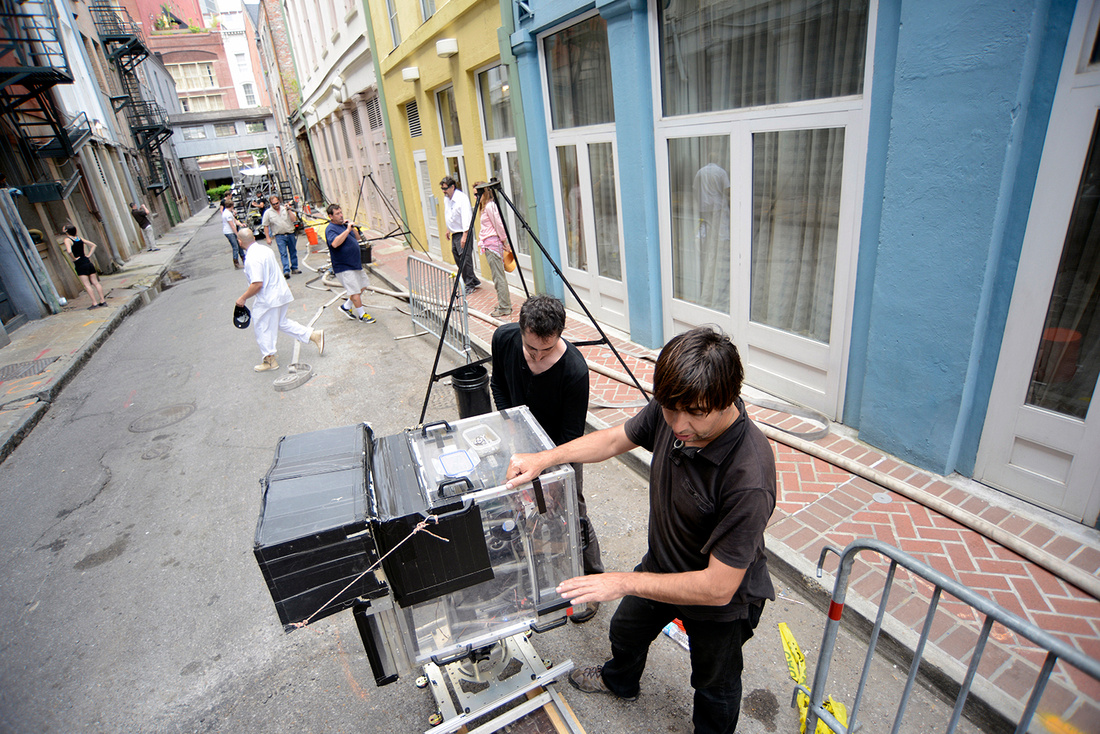
With the wind and water at full throttle, the script called for the raccoon to run from its “mark” and crawl inside a toppled trash bin (which had food and water inside as a lure). But this mammal, best known for its intelligence, was having none of it, wisely opting to stay put. Truth be told I’m not so sure you could have coaxed me into the trash bin even if it had featured a lavish wet bar of aged Caribbean rum.
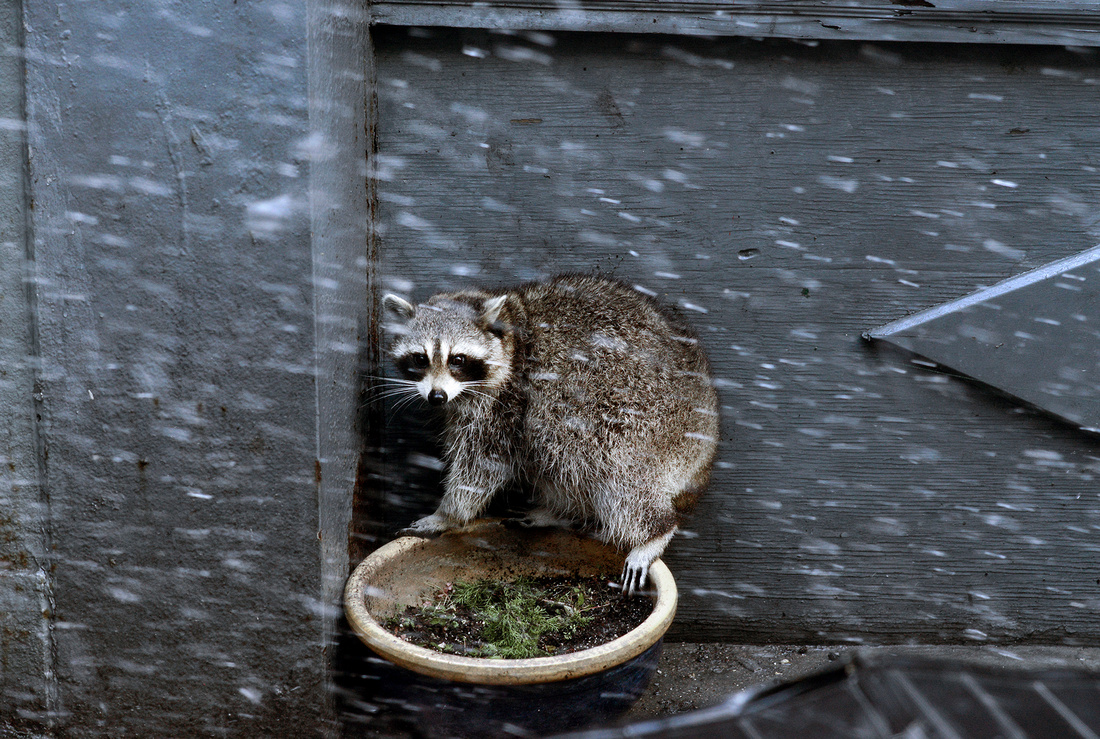
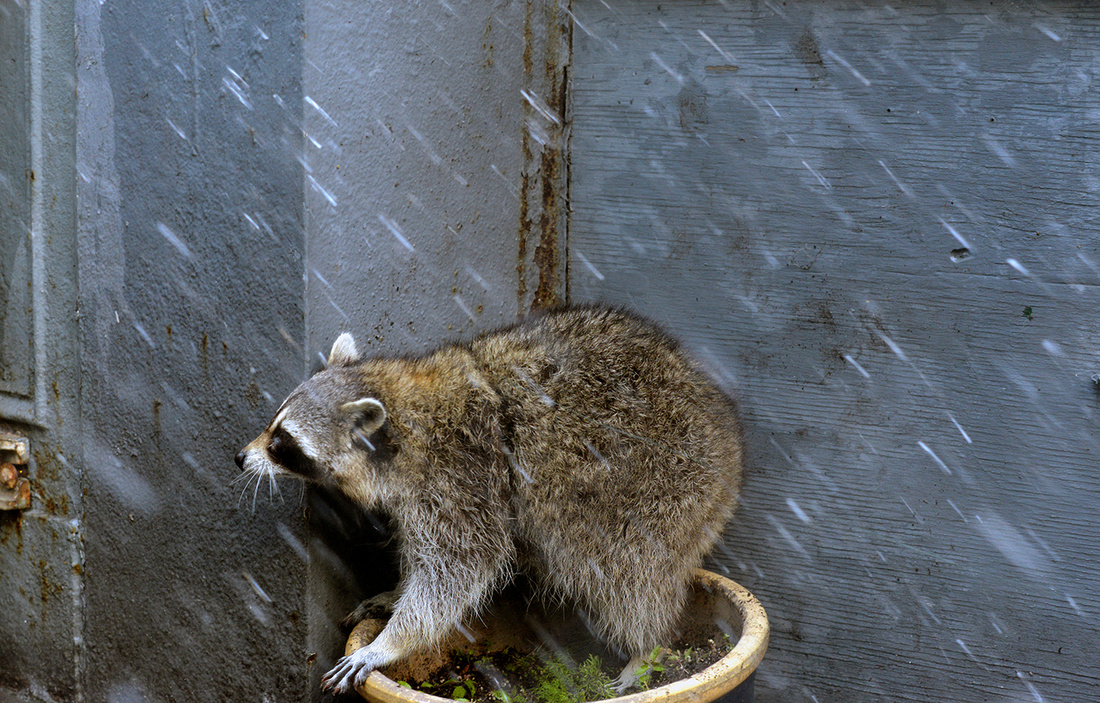
With available daylight clicking down by the hour, it was time for the crew to move on to the next set of shots that involved recreating the havoc Hurricane Isaac caused along a typical downtown New Orleans street. This meant new scene set-ups ...
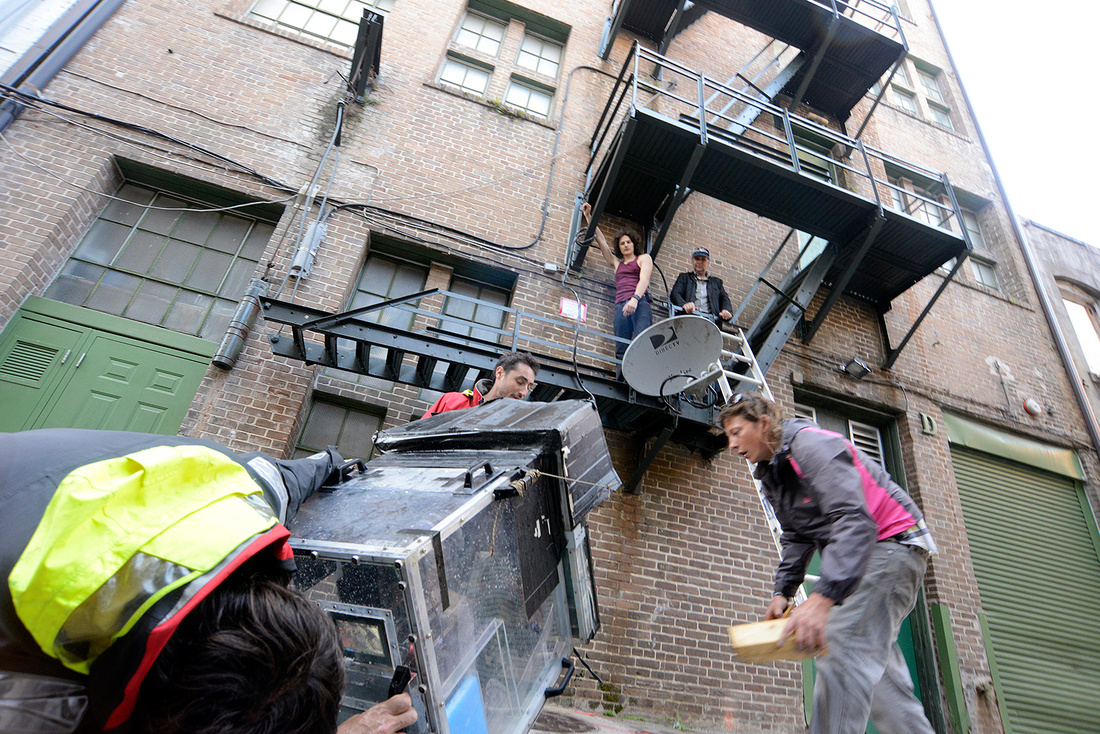
... and, of course, more wind and rain.

In fact, I really can't remember the last time I've been so wet and miserable with a (protected) camera in my hands and yet so happy to be in the thick of things. Naturally, lessons were learned: Once, I stood up directly in front of one of the turbines to get a shot only to have the wind force nearly knocked me over on the street face first. Fortunately one of the executive producers standing behind me had the presence of mind to grab hold of my whipping parka flaps, literally keeping me from falling over while meantime I grabbed my shot. (Sigh, I do love working in a team.) For many of these shots crew members stood off-camera throwing all manner of things into the wind -- trash cans, aluminum downspouts, boxes, what have you. Only thing missing was a family-sized bucket of Popeye's fried chicken (see below).
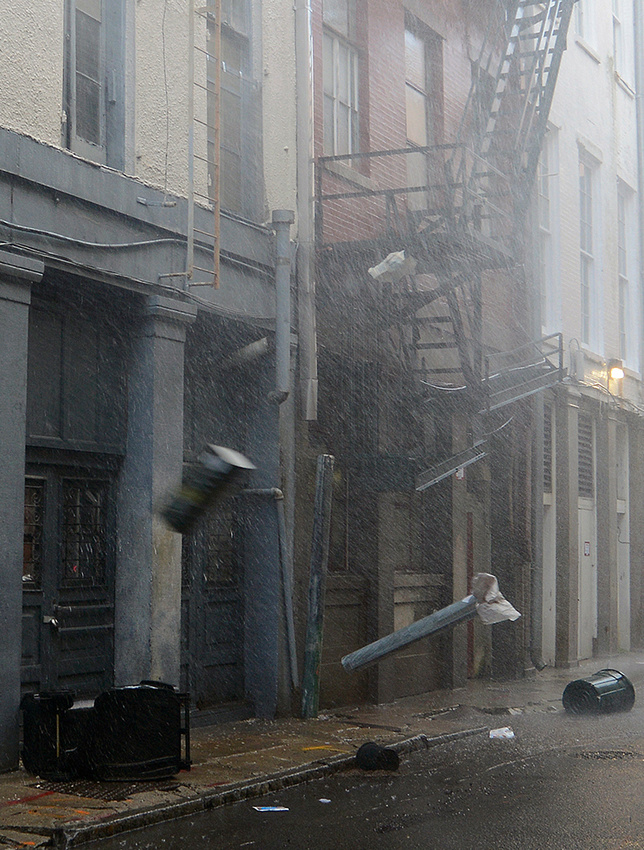
By the end of the shoot the raccoon was none the worse for wear ...
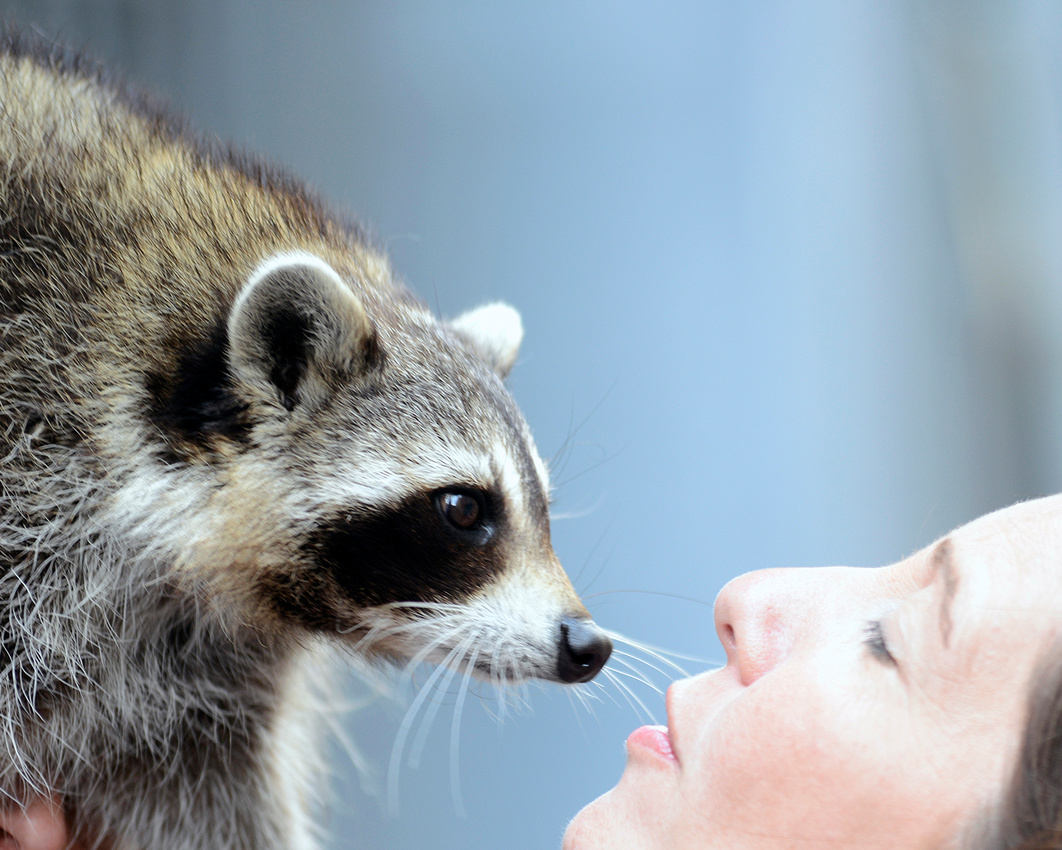
... and, come to think of it, neither was I. My waterproof camera pouch had worked like a charm and provided all the hoped-for flexibility needed for shooting under a variety of conditions and with different sized lenses. Equally important, Excelsior Productions had provided this unit-stills photographer the opportunity to test his game on a challenging, sink-or-swim set (yes, pun intended). Best of all, the executive producers were happy with the images I captured. And that, friends and fellow shooters, is what makes for a good day's work.
]]>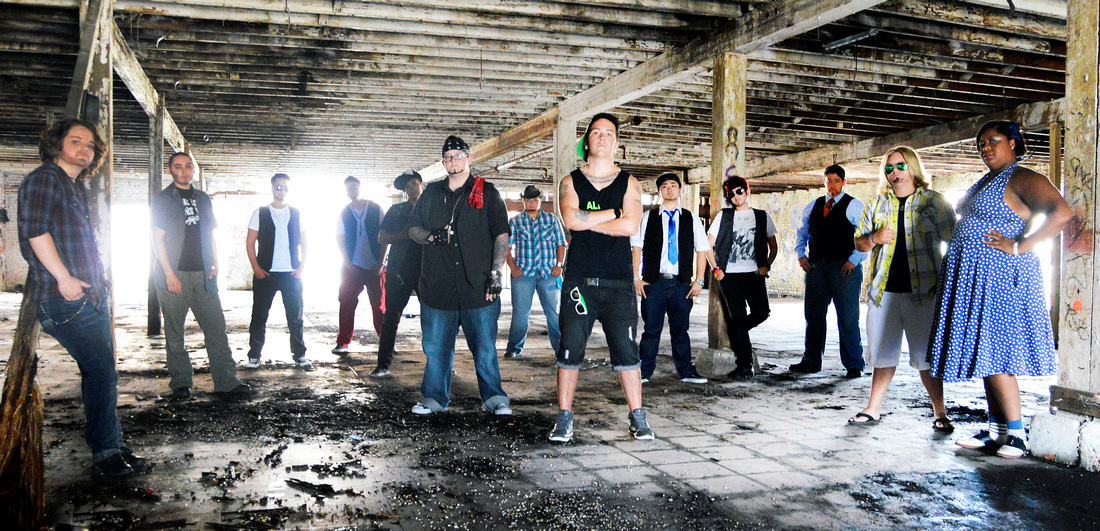
DETAILS FOR THE PHOTO SHOOT were a little sketchy even by this L.A. native's laid-back standards. But maybe that's as it should be for any photographer who's about to enter a heretofore little known world of uber-subterranean cool. Apparently, I was to photograph 10 to 20 members of the New Orleans Carnival Kings (more on this later) for a documentary by New Orleans filmmakers Amy Husband and Rachel Jacob of Good Luck Productions. Fortunately, I had already picked out the location: one of my favorite go-to sweet spots whenever I need to fill my camera's viewfinder with urban decay -- and lots of it. Amy and Rachel had taped pre-production interviews for their documentary at the locale the week before and likewise found its funky aesthetic and architectural disrepair quite to their liking.
 Above, Good Luck Productions' Amy Husband (center) and Rachel Jacob (right) tape a pre-production interview.
Above, Good Luck Productions' Amy Husband (center) and Rachel Jacob (right) tape a pre-production interview.
What I knew for certain was that my assignment would be an early-morning outdoor shoot against the graffiti-covered brick wall I had scouted inside a dilapidated, semi-crumbling structure, tucked like a secret in a deliciously derelict, post-industrial corridor of New Orleans. I do know how to pick 'em, if I may say so myself. And, yes, the buildings were literally in various stages of collapse, as seen in the image below showing part of my lighting set-up.
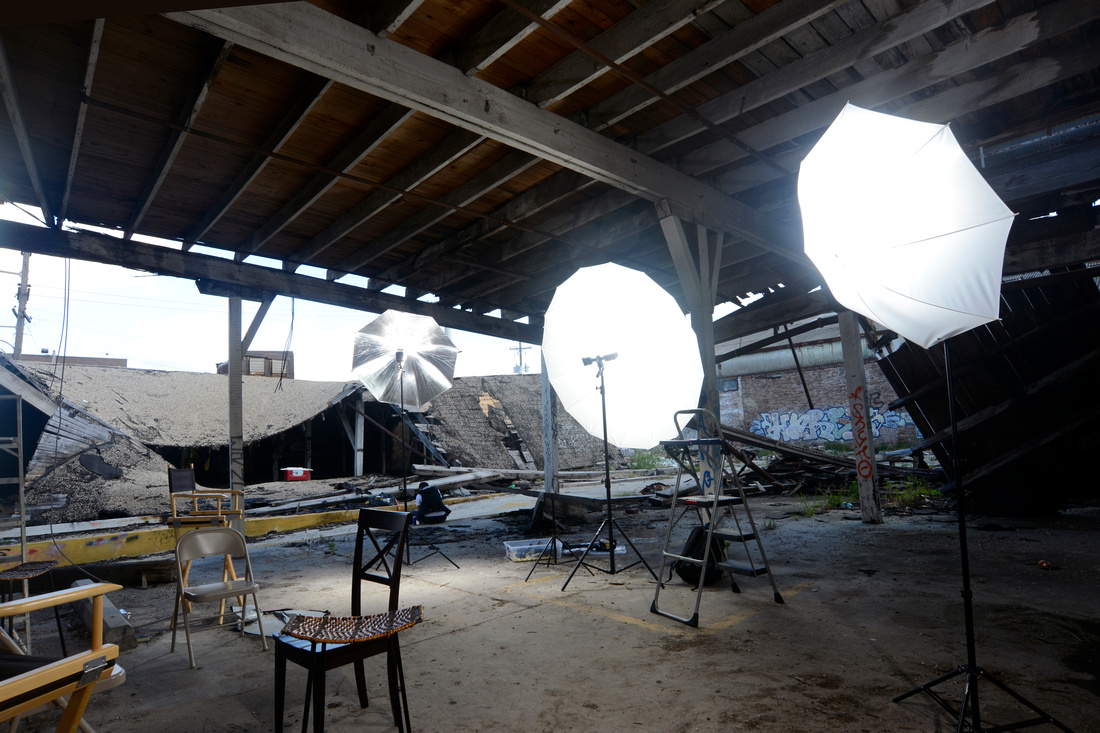
Past experience has taught me to do two important things when shooting large groups:
#1. Pack virtually every piece of gear I own, plus the kitchen sink, into the back of my SUV, just in case.
#2. Configure subjects in such a way that each person “owns” a unique space within the shooting environment. To this end I had my “assistants” schlep all manner of items of varying heights for my photo subjects to sit or stand on -- folding chairs, movie-set apple boxes, directors' chairs, ladders, you name it. This guarantees subjects will be positioned at slightly different heights, angles, etc. This helps break up and create visual tension within the horizontal line. (A shoulder-to-shoulder group shot might work for a wedding or reunion photo, but it leaves a lot to be desired when the demand calls for creating something a bit more artistic.)
I knew something else about my session with the New Orleans Carnival Kings, a group of mostly cisgender women (plus several transpersons and cismen) from the Big Easy’s LGBT and straight communities who perform at local nightclubs in male drag right down to "binding" and the application of facial hair to create a masculine look. And it was this: I wanted to capture the crazy-cool, edgy and rebellious vibe of gender-identity liberation they express with such unabashed passion and fearless joy during their exciting live performances, which are, quite frankly, amazing to watch.
After determining exactly how many performers had shown up for the session, I began setting up my key, spot and fill lights – an 84-inch parabolic reflector umbrella, 36-inch silver reflector umbrella and 30-inch white shoot-thru umbrella, respectively, aided by my usual menagerie of Nikon Speedlights, attached to my trusty Yongnuo radio-frequency, remote-controlled flash triggers. I added another off-camera strobe (the pop of light from behind the ladder, as seen below) -- this one clamped to the top of a half-wall camera-left to compensate for light fall-off and to punch the concrete floor with a needed splash of extra illumination. Shooting large groups over the years has taught me that if you don't flood the foreground with sufficient, off-camera light coming from different angles, you are guaranteed to end up with demon shadows -- and not the good kind -- on your subjects' faces.
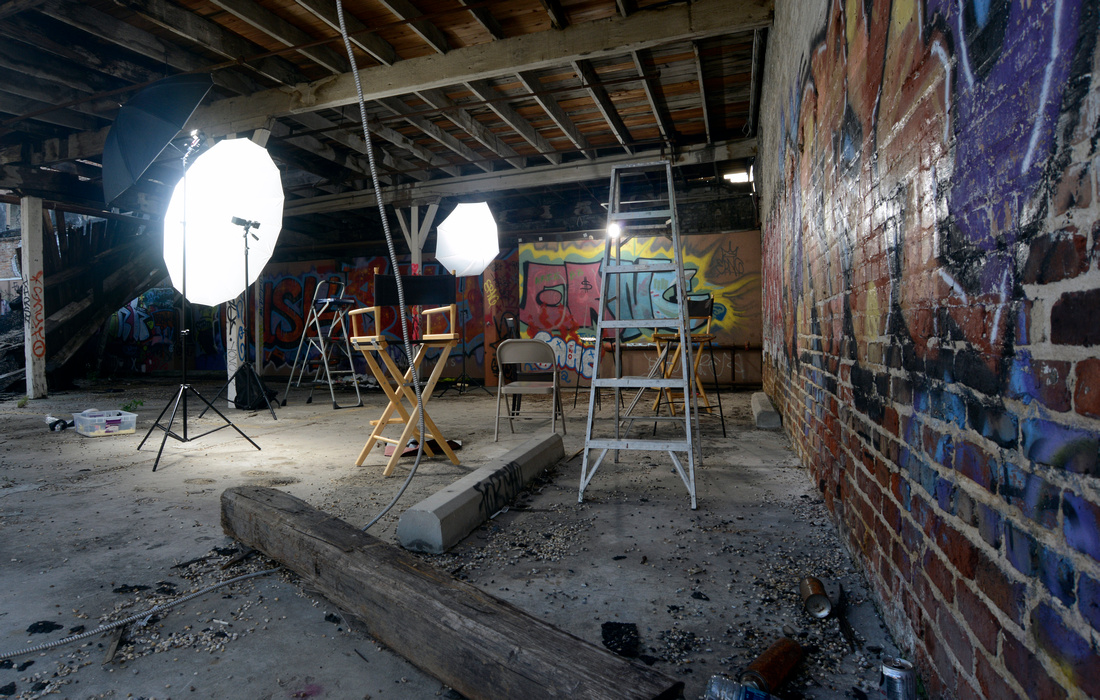
Part of the fun I always have on this kind of shoot is when time comes to position everyone in their respective "image zones." As a rule my photo-shoot directing style runs on the playful side yet is designed to help my photo subjects find a natural body language with which they feel most comfortable.
"Who wants to straddle the wooden chair?"
"We need four people up against the wall -- but each one in a different way!"
"My two ladder peeps -- I need y'all at different heights!"
"You in the middle, tilt the cowboy hat back just a smidge so we can see your eyes!"
And so it went.
By the time I had finished making necessary minor lighting and camera angle adjustments, the shoot took about five minutes. Here's the final result:

Photographing the New Orleans Carnival Kings was a privilege and a helluva lot of fun. They might look badass in the above photo but they were also among the nicest groups of people I've ever had the pleasure of shooting and getting to know. If you're ever in New Orleans, you'll be doing yourself a favor by hitting one of their shows and experiencing first-hand what it's like when the walls come a-tumblin' down -- New Orleans Carnival Kings-style.
(In the future: REBEL, REBELS - PART II: Backstage and On-Stage with the New Orleans Carnival Kings.)
]]>
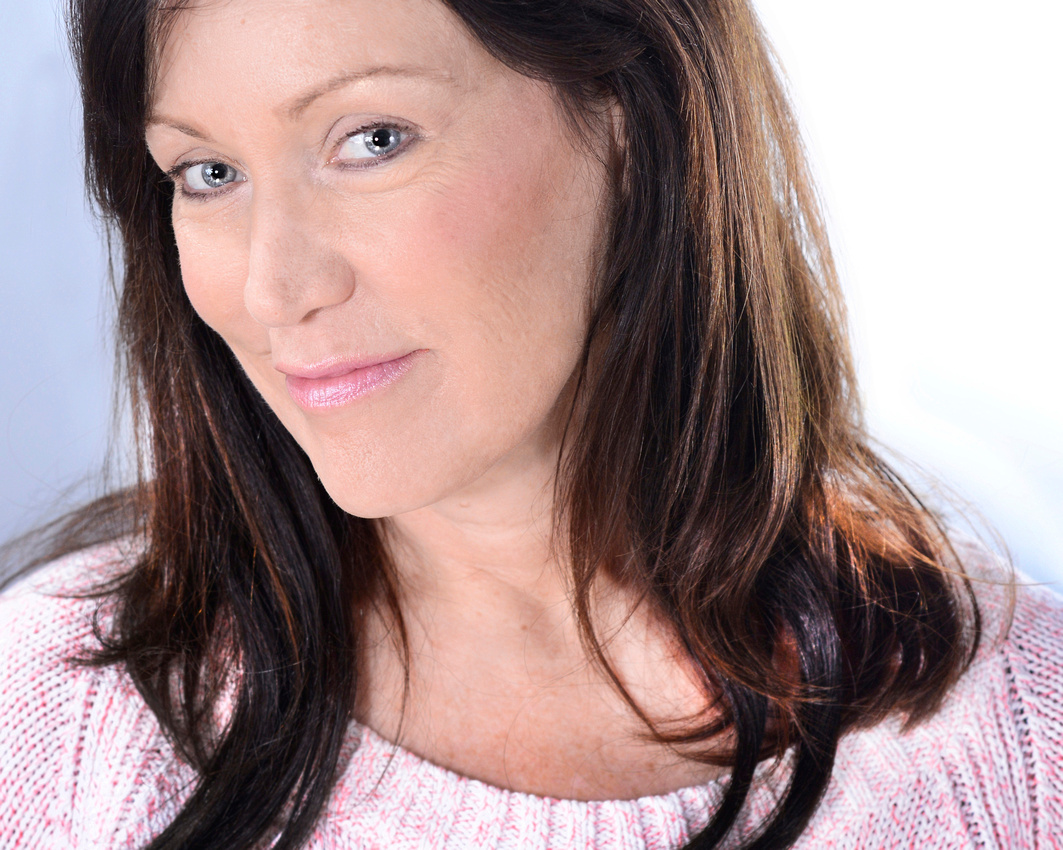 (Above: New Orleans-based photographer, writer and actor Leigh Downey during a recent headshot session.)
(Above: New Orleans-based photographer, writer and actor Leigh Downey during a recent headshot session.)
Unlike headshots for models, corporate execs, senior portraits, etc., those for movie (as opposed to commercial or theatrical) actors have fairly straightforward guidelines: minimal makeup and little to no jewelry (if female); simple, non-distracting attire; natural, even lighting (forget the artsy Rembrandt shadows); and, most of all, a natural, relaxed expression. Glamour-shot looks with pouty expressions, makeup applied with a trowel, and plunging necklines are Bozo no-nos. Photoshop out too many wrinkles, laugh lines, age-related skin folds or naturally occurring blemishes and you will be doing your client a grave disservice because casting professionals insist -- nay, demand -- to see in a headshot how an individual "looks on a typical, good day," not on their way to a nightclub or how they envision themselves looking on the cover of Elle. On the day of the audition the actor must resemble his/her headshot. This is why I routinely tell clients, "I will take off five years in post-processing but not an hour more."
Bypassing the smile-pretty-for-the-camera surface layer to dig deeper to discover something hopefully real -- or, at the very least, interesting -- presents unique challenges because every face (and the personality that drives facial expressions) is different. Days before the session I speak with the client to find out what they expect from the shoot and cover some nuts and bolts such as what to bring (a selection of neutral-colored clothing and accessories so we can put together the right look) and what to do (get plenty of rest the night before). As a rule I almost insist on using a professional makeup and hair stylist who (1) understands how to create flattering yet understated looks that translate well in front of the camera lens, and (2) can modify makeup and hair throughout the session as needed. I tell clients there is little point in spending money on headshots only to have the results compromised by do-it-yourself makeup.
Following are results from a handful of recent sessions (both in-studio and on location), plus an informal session I did with friends (at the end) tossed in because I like the results.
I. Tulane University English professor Alice Kracke has been working in New Orleans’ ever-growing movie industry for a while but she needed professional actor’s headshots. Her easy versatility of looks made the shoot a snap. With the help of makeup/hair stylist Rebecca Jacob we nailed a range of looks designed to catch the eye of movie casting professionals. But I also took the liberty of converting one of the color images to black and white (I now do this for all my clients) to further explore the “otherness” of Alice’s natural beauty I had discovered during our session (plus the image so reminded of the kind of photographs I remember of '60s French actress/singer Claudine Longet).


II. When Carolyn Rubano Krawczyk smiles for the lens, it’s damn near impossible for her -- or the photographer -- to take a bad photo. But when the high-energy, Atherton Pictures film and television producer said she wanted a headshot that was a “little different” with which to update her company’s website, I pulled out all the stops and headed to one of my favorite urban-decay stomping grounds near New Orleans’ long-abandoned Market Street Power Station. Blurred, graffiti-covered crumbling walls as a backdrop? Check. Great natural lighting augmented by a single off-camera strobe? Check. Killer smile? Check. All in a day’s work.

III. Bri McLaughlin is an aspiring actor who possesses what to me is among the most interesting (and beautiful) faces I have had the pleasure of photographing in recent years, thanks to her naturally dilated pupils and upturned angel-wing lips. But even this didn't make for an immediate slam-dunk headshot session. Rebecca had to take time adjusting Bri’s makeup coloring and hairstyle while elsewhere I busily tinkered with alternate lighting configurations. Rebecca peered over my shoulder as each shot appeared on my Nikon's LCD screen until she and I were both satisfied with Bri's look. Then the session took off like gangbusters ...
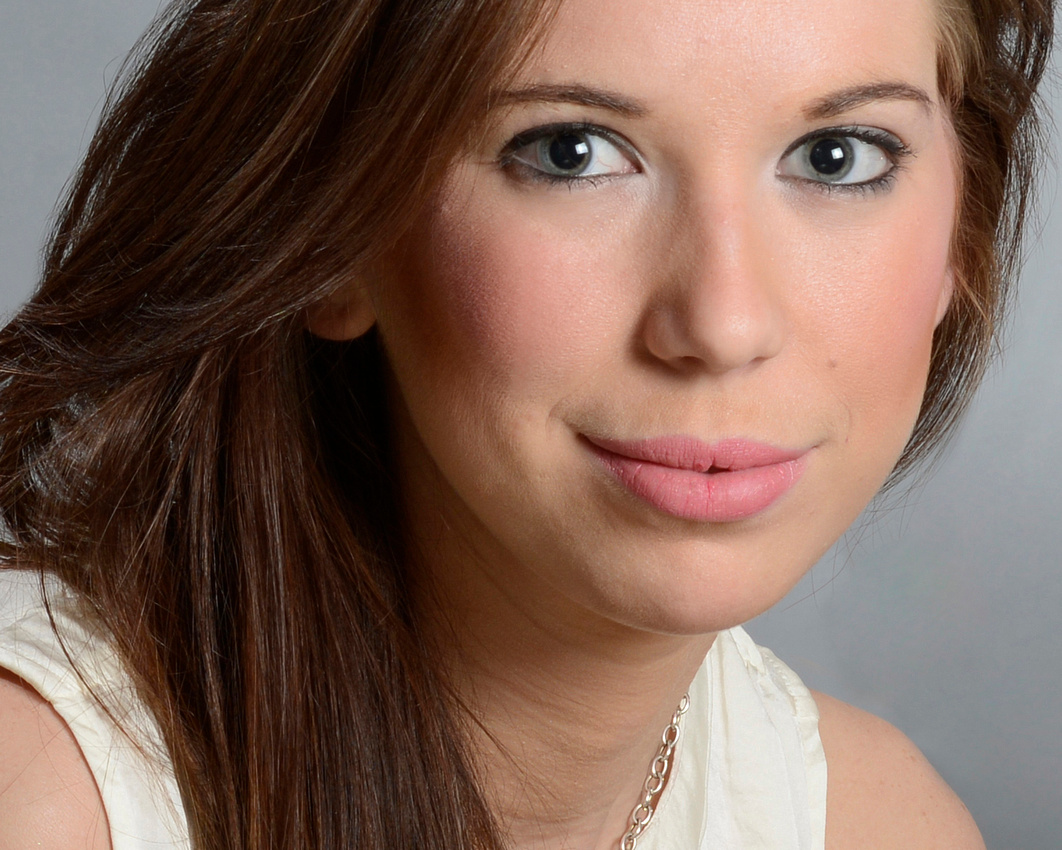
IV. New Orleans-based photographer, writer and actor Leigh Downey has already racked up IMDb movie credits, but she needed new headshot photos before an important meeting with her talent agent. Fortunately the seasoned professional knew exactly what she wanted: an in-studio (as opposed to environmental) photo session, NYC-style tight cropping, and images that really make her eyes stand out. Rebecca and I put our heads together on what Leigh should wear before Rebecca set to work creating her special magic. Before long I had the lovely Leigh in front of my camera and flanked by a phalanx of lighting. Together she and I explored and ultimately discovered that oh-so-subtle, oft-times elusive angle of the face and just-right tilt of the head that tells the photographer that he has found it -- the natural beauty, essence and personality of his subject.

V. Tommy and Tootie Arcement are among my dearest friends. Tommy, the easy-going son of Louisiana’s marshes, and his wife Tootie, the dynamo daughter of Vietnamese refugees who immigrated to the United States in the 1970s, possess a rare synchronicity and effortless chemistry. But I had no idea whether this would translate in front of the camera. At the start of our informal session, all I knew for certain was this: In lieu of the cruise-ship type of grip-and-grin portrait to which most couples are accustomed, I planned to peel back a few layers in an attempt to capture something a bit more real – and, if possible, revealing -- about this amazing pair. We spent a while shooting some traditional poses with natural, relaxed expressions, as you can see below …
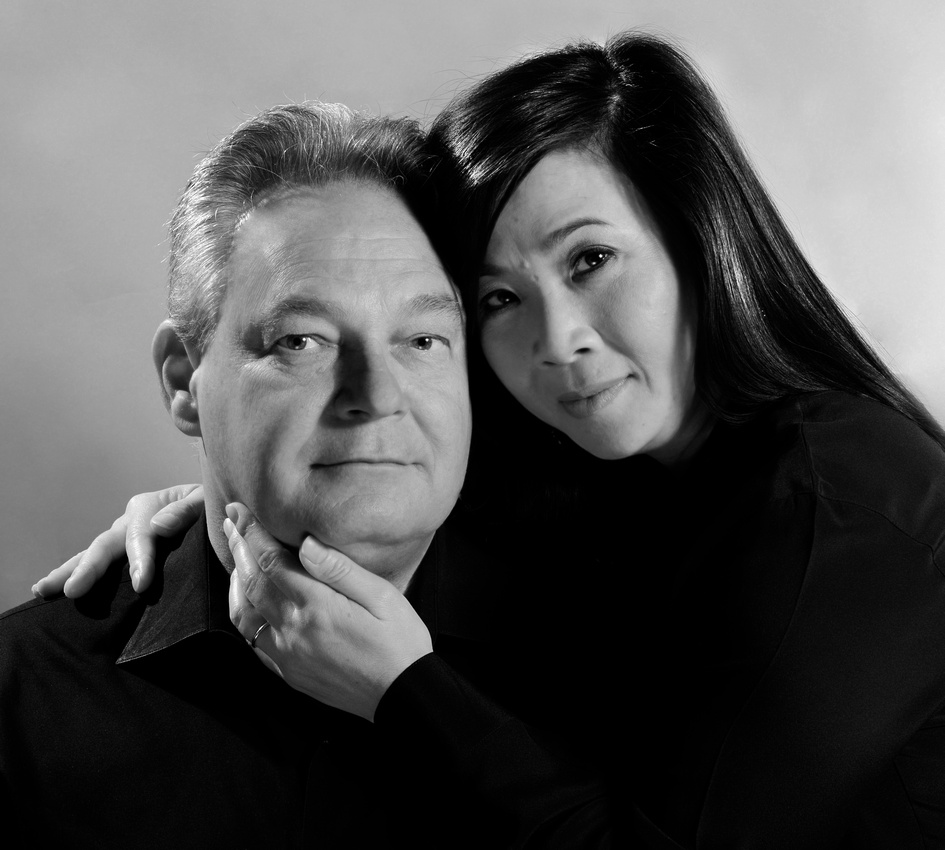
… but when I took away Tommy's chair and asked the couple to explore their body language as a couple while standing, I nearly stopped in my tracks when I clicked the following image of them in an impromptu embrace: Tommy looking slightly down, his arms wrapped around Tootie from behind, holding her with devotion with the couple’s hands lovingly intertwined; Tootie’s profile bathed in light, her right hand affectionately holding Tommy’s arm. For a photographer, capturing such a pure and intimate moment of love and intimacy is a blessing and reminds any shooter that he is lucky each and every day to pick up a camera instead of a hammer or a clipboard. Yet such a revealing image can at first be a little unnerving, as it was for Tootie because she had never before seen herself photographed in such a way that revealed such a private emotion ...
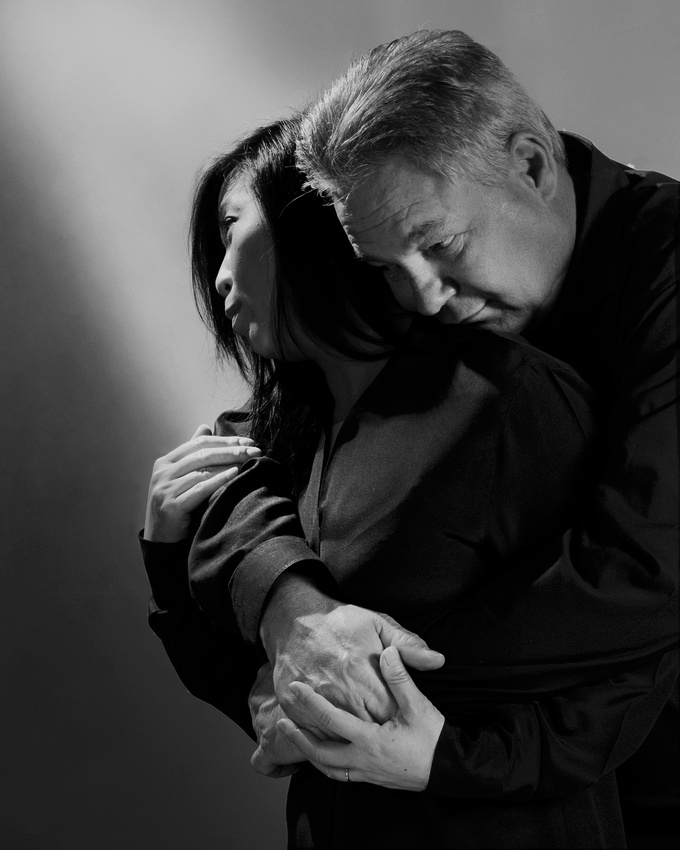
A well-deserved shout-out and special thanks goes to makeup/hair stylist Rebecca Jacob (below, left) for her professionalism and the consistently outstanding work and contributions she always brings to my headshot sessions.
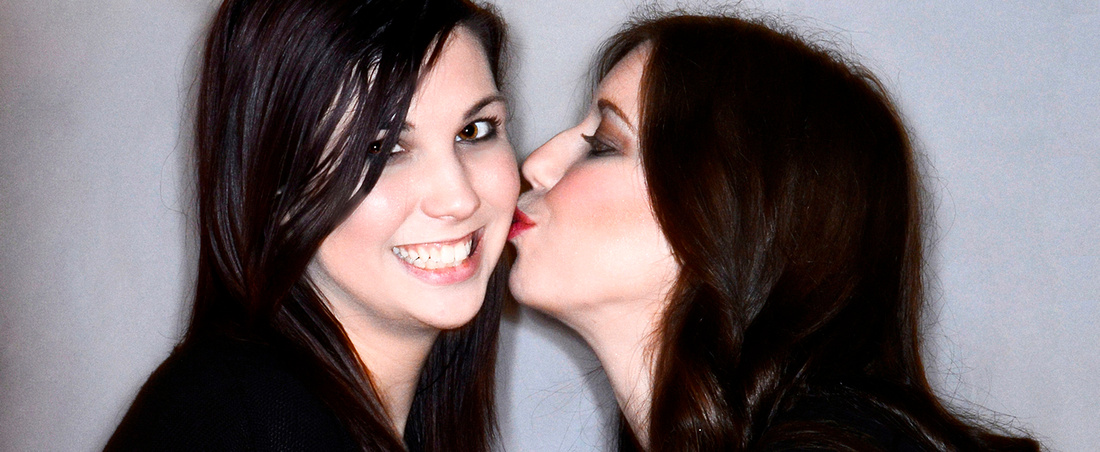
Stay quirky, my friends.
]]>
Shooting a model in a wedding dress inside a Rolls Royce looks easy enough – and, truth is, it can be if you have to do it on the fly and without a lot of time like a lot of wedding photographers routinely do. But this shoot was for the premier issue of Siren, a New Orleans-based women’s fashion magazine and the flip-side kissing cousin of Seven Men’s Magazine, both published by CEO Christina Tears-DiLeo. Equally important, the client was a first-time limousine advertiser and that meant everything had to be as near-perfect as possible.
The limo was the star of the show, to be sure, but the model's $10,000 wedding dress couldn't end up looking like chopped liver. Lighting for both the car and dress would be tricky.
Because I knew I would be starting the session just before sunset and chasing down the diminishing light through twilight, I needed a lighting setup that would deliver flexible and powerful wattage that I could quickly and easily modify under changing conditions of illumination. So I rolled out a mini-Armada of gear: a gaggle of off-camera Speedlights; 82-inch parabolic reflector umbrella; 36”-by-36” softbox; 42” Interfit reflector panel; shoot-thru umbrellas; and assorted snoots and grids. I also used a pair of Polaroid 256-light LED panels inside the Rolls for the interior shot of the model.
Here’s how the scene looked from behind the limousine before the model came on the set. FYI: the Speedlight behind the fountain was to illuminate the water since my camera position was just to the right (see tripod).
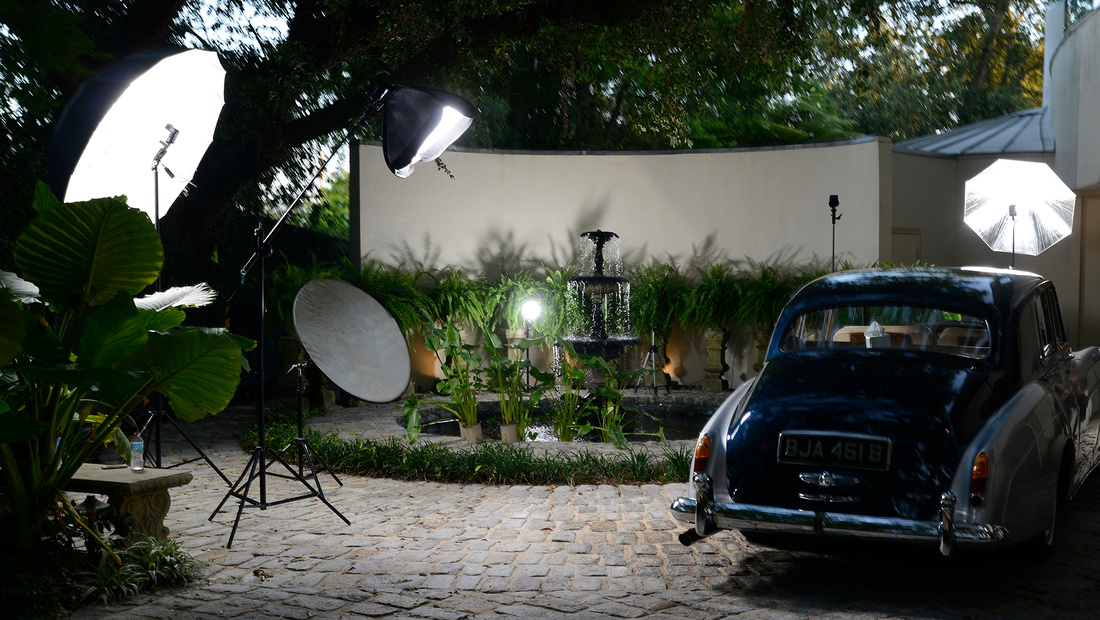
(To view the double-truck advertisement as it appeared in Siren, click here: http://bit.ly/1cXyQ3C. To read the entire premier issue of Siren click here: http://bit.ly/19idj74)
Lens-wise shooting the model in the backseat of the Rolls Royce required my Nikon 18-35mm 2.8 – a versatile wide-angle troubadour that sucks in lots of space without the kind of annoying aspherical distortion I typically deal with when using my Tokina 12-24mm (and correcting later in Photoshop). The Polaroid LED panels I used inside the car helped me bathe the bride in a heavenly light. I used a single strobe positioned behind the limo, aimed through the back window, to provide needed depth beyond the car so that the eye didn’t “crash” into a flat, black back window directly behind the model’s head.
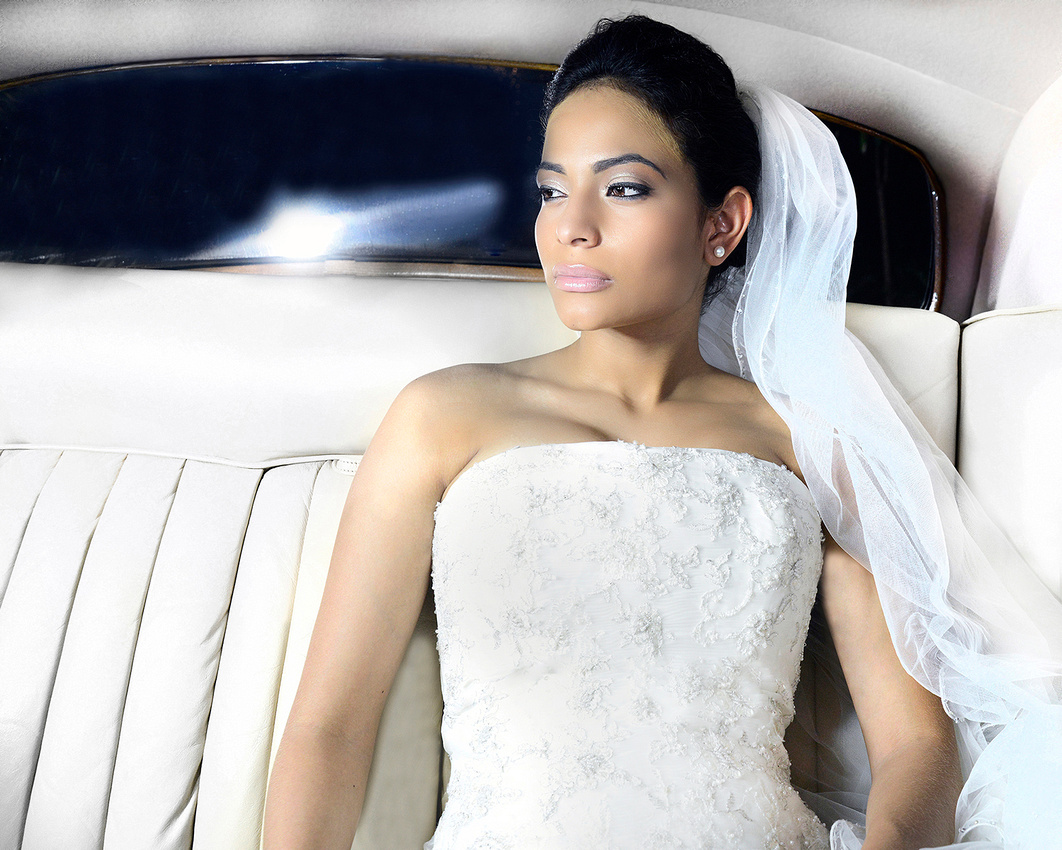
While most wedding photographers rightfully argue that the best bridal shots include as much of the bride's face and her dress possible, I had no such pressure or creative constraints. In fact, since the following image is for my own personal use, I employed the kind of half-face tight cropping I use on occasion. To me it accentuates the half-eclipsed model's beautiful face and bone structure.
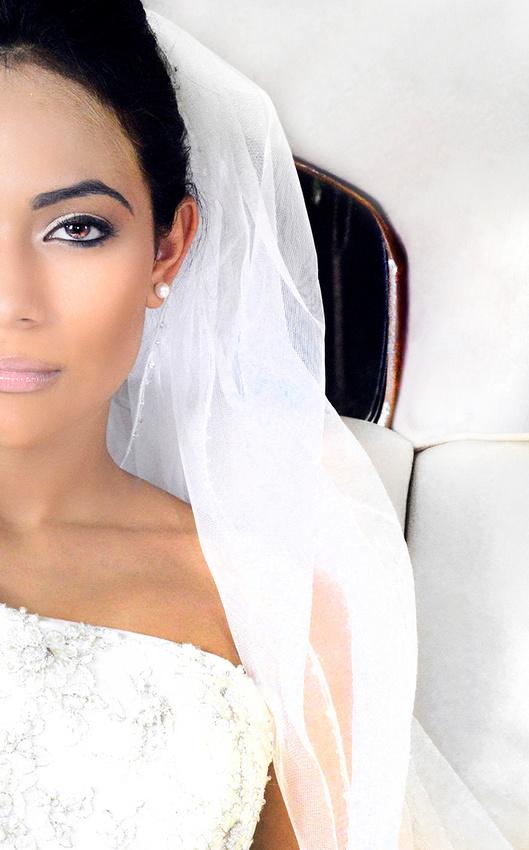
Credits: Dress by Yvonne LeFleur; model, Izabella Urbina; hair stylist, Erica Muhs; makeup, Jessica Masters.
]]>
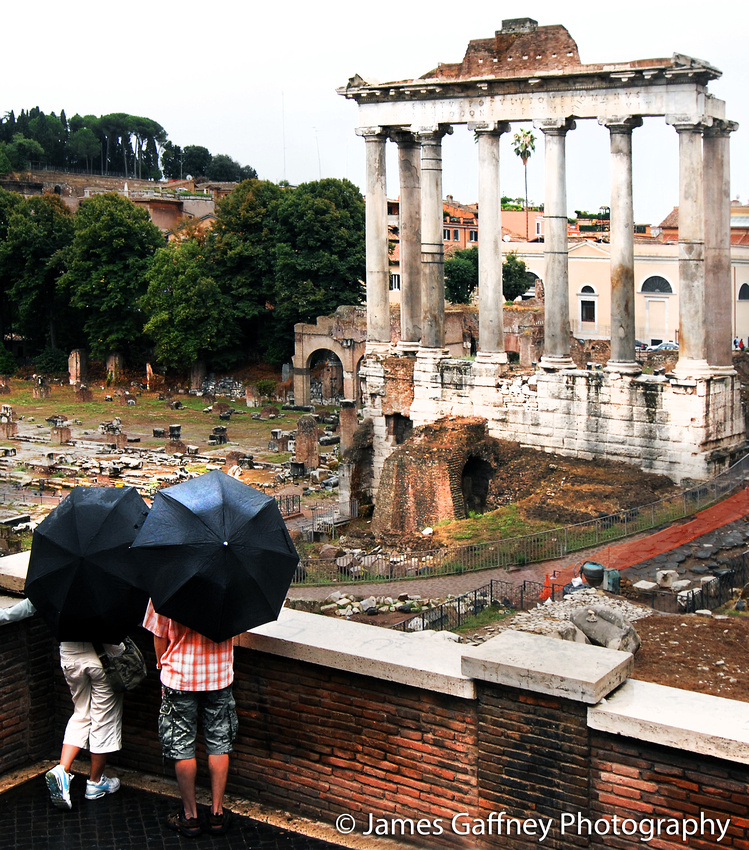
Most of my travel photography – whether for an assignment or personal pleasure – reflects a simple fact: I’m strictly an urban animal. Unlike my good friend Barbara Hayton, a gifted nature/wildlife photographer (www.barbarahaytonphotography.com), I don’t have the inclination or patience to hike hours into the Wyoming backcountry to capture spectacular landscapes much less "hunt" for prancing elk, foraging wolves and, of course, the Bad News Bears. I leave nature to the pros.
Instead, I prowl back alleys. Or something like that.
Yet I do often find myself waiting patiently for my own kind of wildlife to show up -- the human variety, which can turn even otherwise solidly rendered images into something far better: a story. I learned this early on mostly by accident when I would snap photos of a building, cityscape or architectural vignette only to discover later that when someone inadvertently got into frame it occasionally made the photograph more, well, interesting. At least to me.
This is just one guy’s unschooled philosophy, but urban landscapes by necessity seem to need human presence as proof that architectural design at its best imbues man-made spaces with both meaning and purpose.
Case in point: Not long ago I was sitting in the Swiss Air VIP lounge at JFK waiting for my connecting flight to Zurich when I became smitten by the articulation of leaning windows, window panes and columns, as well as the flood of almost heavenly light that poured into the space. Not a great shot but certainly not the worst photo I have ever snapped after a couple of martinis.
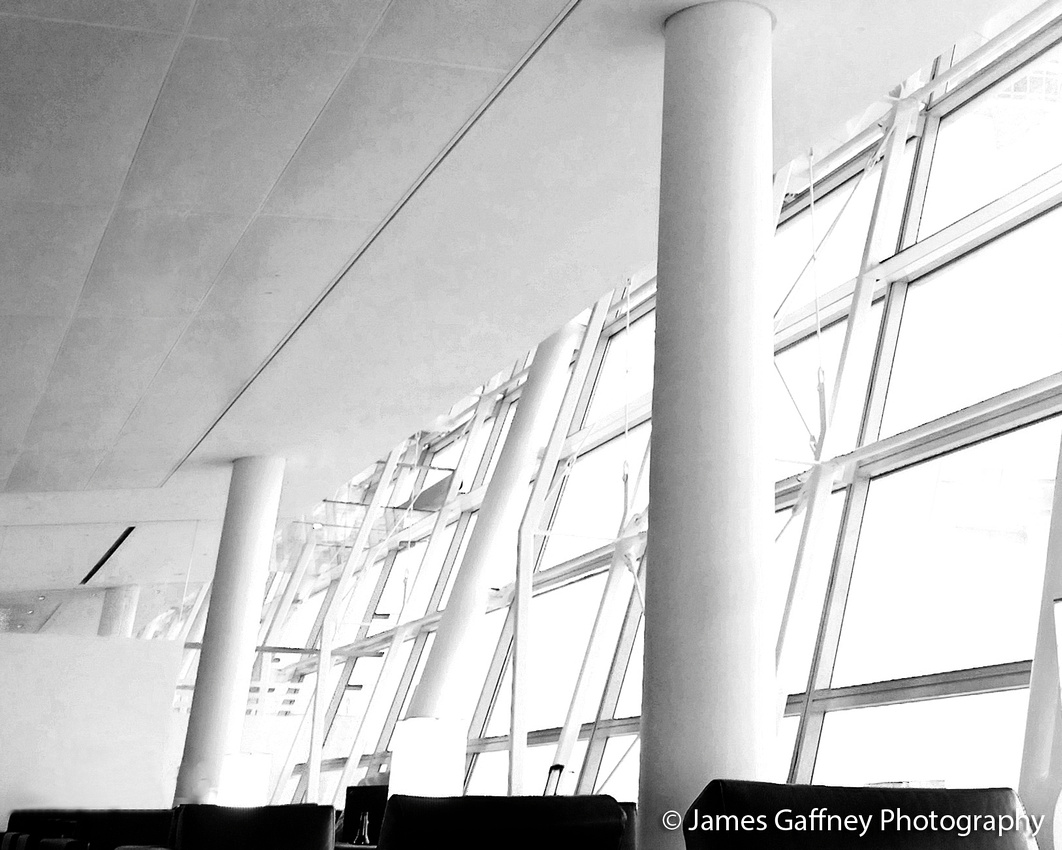
When a gentleman in a suit showed up, I congratulated myself on getting my shot ahead of time. It wasn’t until he sat down and opened a newspaper that I saw the room in a whole new light (no pun intended). I grabbed my camera and took the shot again – from the exact position and angle and with the identical camera settings. When I looked at the image on my viewfinder, I thought, “Holy crap – that’s the shot!”

Another time an unexpected passerby walked into frame during a late-night fashion shoot I was doing in New Orleans’ Warehouse District with a mannequin for a major retail client. Because I was using a long exposure to better capture the available ambient light, the fellow was sufficiently blurred so as to add what I thought was a nice artsy touch. I showed both images to the client – with and without the guy walking by – and the client wisely opted for the "with" photograph. Go figure.
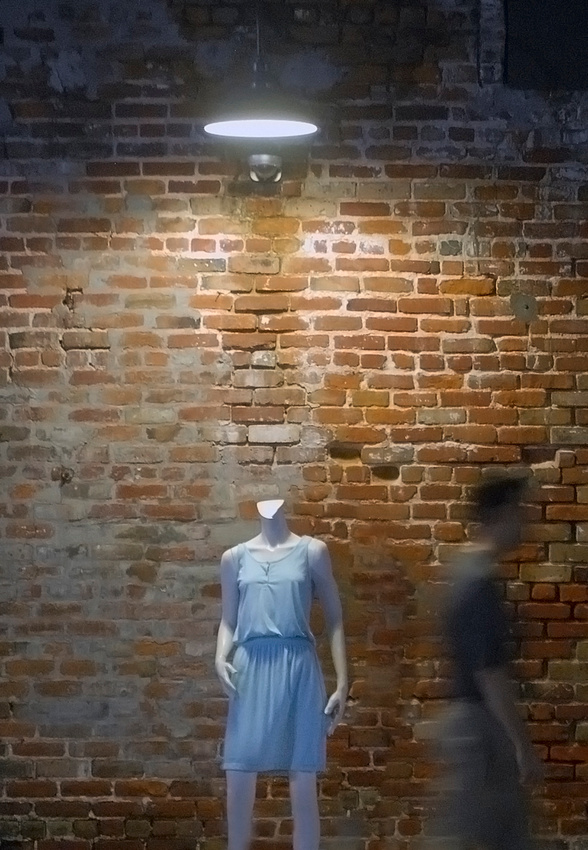
Once while prowling the backstreets of Merida, Mexico, I stumbled upon a large, curving metal artwork in the middle of an alleyway that led to nowhere in particular. Perplexed as much by the location of this objet d’art as its mere existence in this largely impoverished Yucatan Peninsula city, I began taking photos but stopped when I spied the slightly hunched over elderly woman making her way up the street. Best I could calculate, if I positioned myself slightly left of center of the metal sculpture, I might be able to nail a shot of the reflection of the woman as she walked past. And so I did.
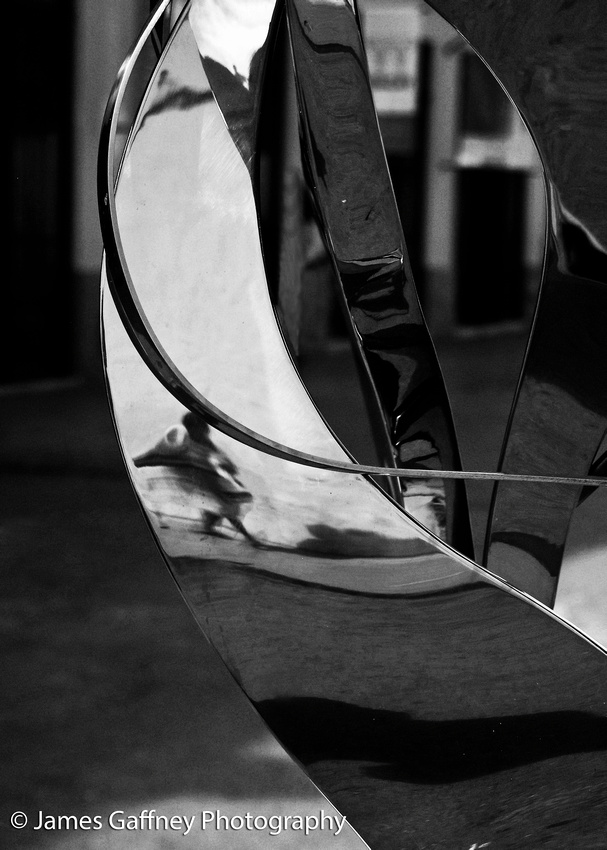
There isn’t a travel photographer drawing breath who wouldn’t be fascinated by Lyon’s legendary underground tunnels, built in the 4th century and known as traboules, originally used by silk merchants to transport their products in secret. But it was the entryways far more than the tunnels that fascinated me most, especially when I waited patiently for just the right pedestrian to descend the stairwell.
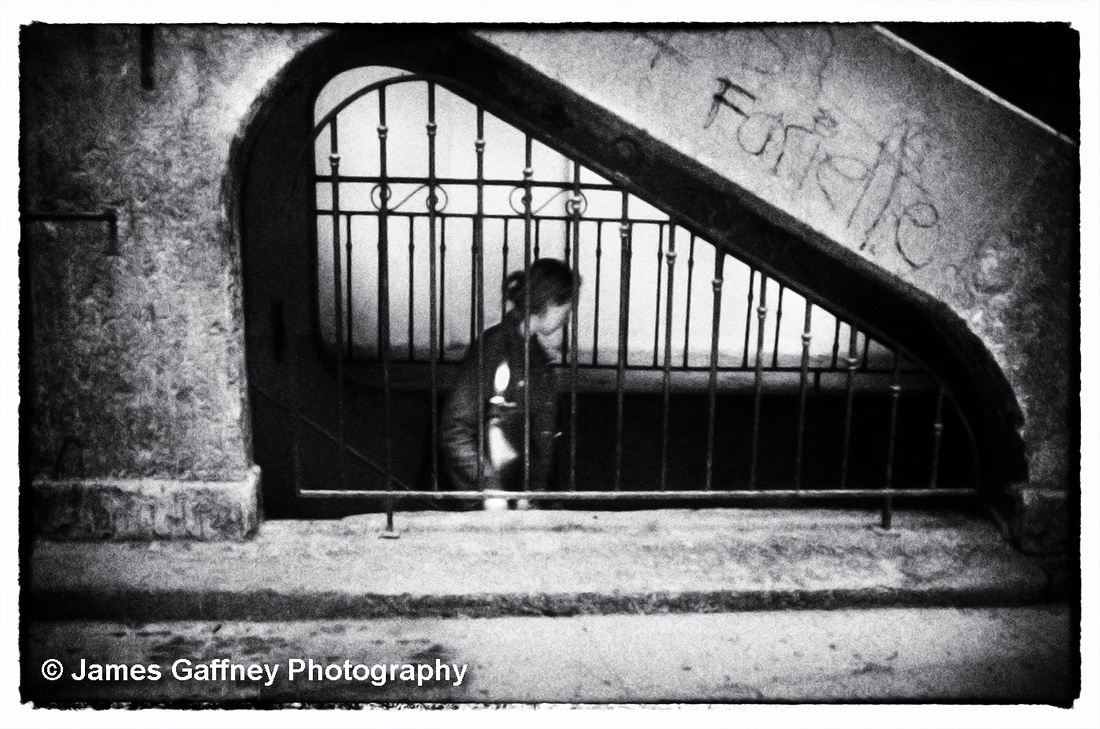
Sometimes you wait only a few minutes. Other times it takes much longer for the right kind of “accidental walk-on” to complete the image in ways you never imagined. Such was the case during a visit to postcard-pretty Lucerne, Switzerland, when I set up my tripod at midnight to shoot the River Reuss and, in the distance, the pedestrian-only, 14th-century Kapellbrücke Bridge. Despite the splendid architecture and nighttime vibe there was something missing – something to stamp this historic and well-touristed destination as the urban oasis as it has often been described. I waited more than an hour before a quartet of late-night pubcrawlers appeared and (as a bonus) a cyclist making his way across my horizontal plane.
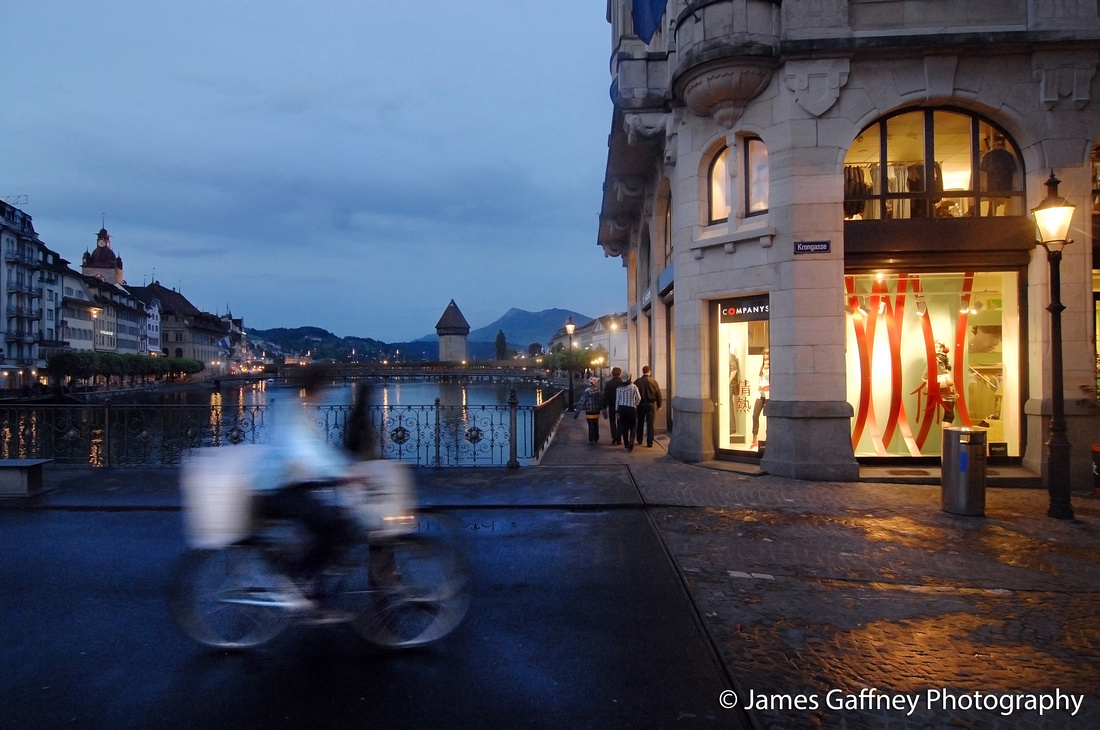
Even a run-of-the-mill Caribbean beach shot can – if time permits – be elevated to the status of something bordering on the absurd when the photographer is patient enough to wait for a lone duck, spied 30 yards camera-left, to amble directly in front of his lens. Hey, turns out this city slicker might have a little nature photography game in him after all. Yeah ... when ducks fly.

]]>
Gearing up for a major bedroom scene with best friends Ruby (Rachel Jacob) and Nicole (Margaret Wild) required tilting a heavy (not to mention expensive) camera that was attached to a dolly.
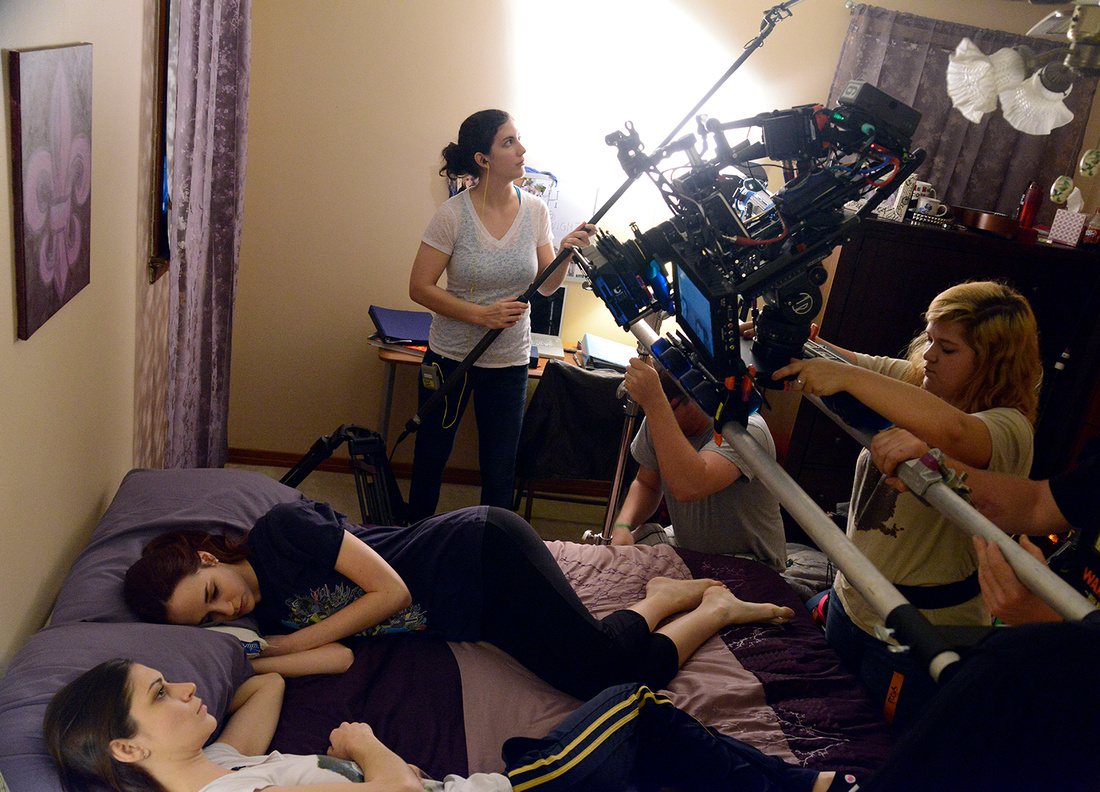
Following is the shot I took after the crew had finished the scene, while standing on the bed and balancing one hand against the ceiling so as not to topple on the talent (never been more grateful for my 12-24mm wide-angle lens and Nikon D800's burst mode!).
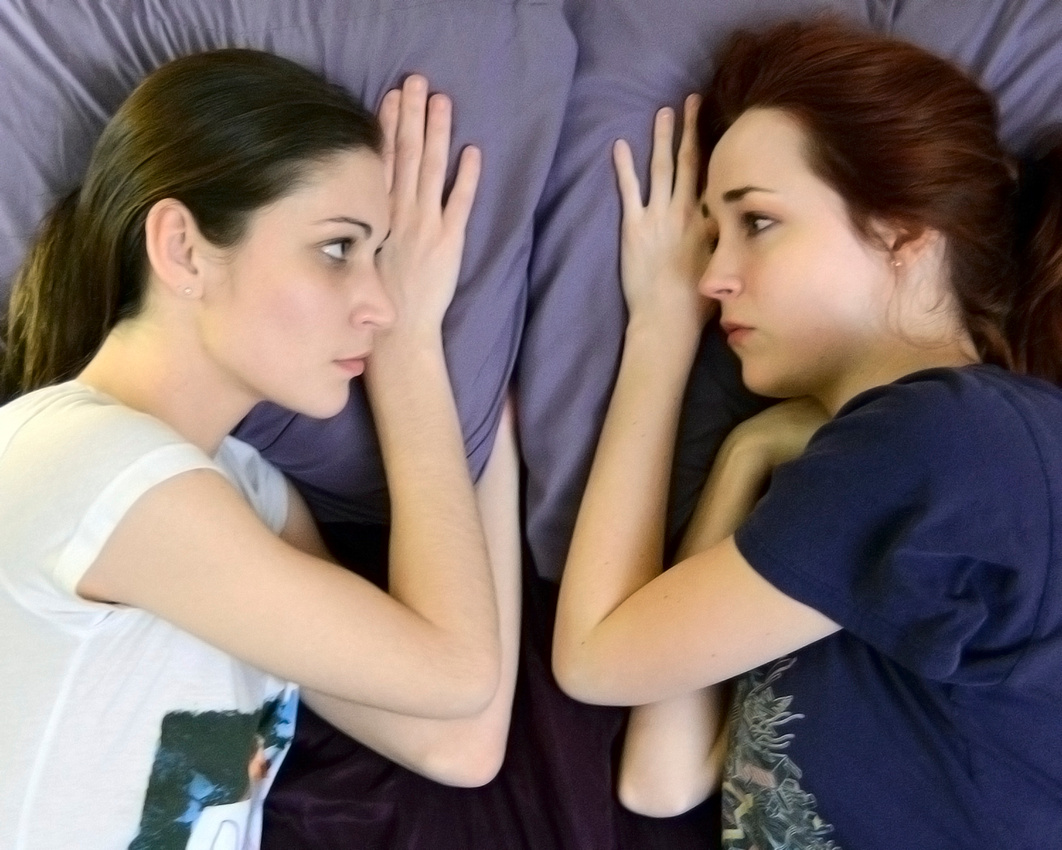
More bedroom scenes ...

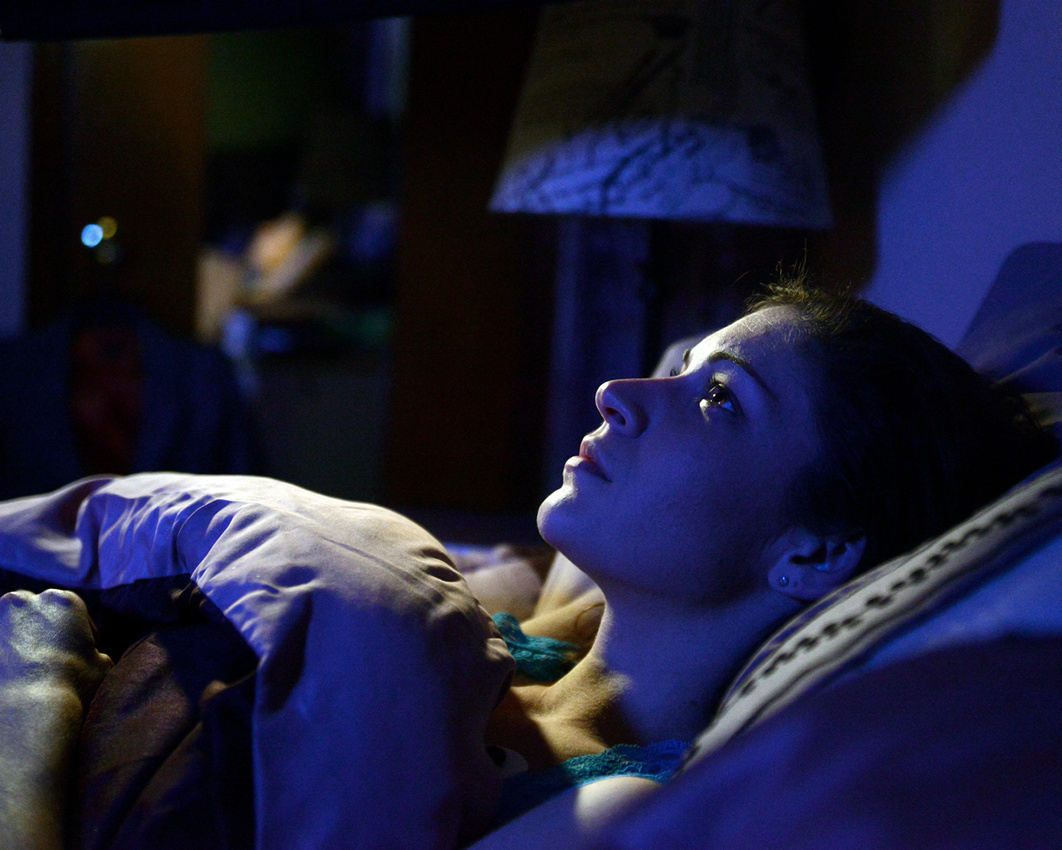
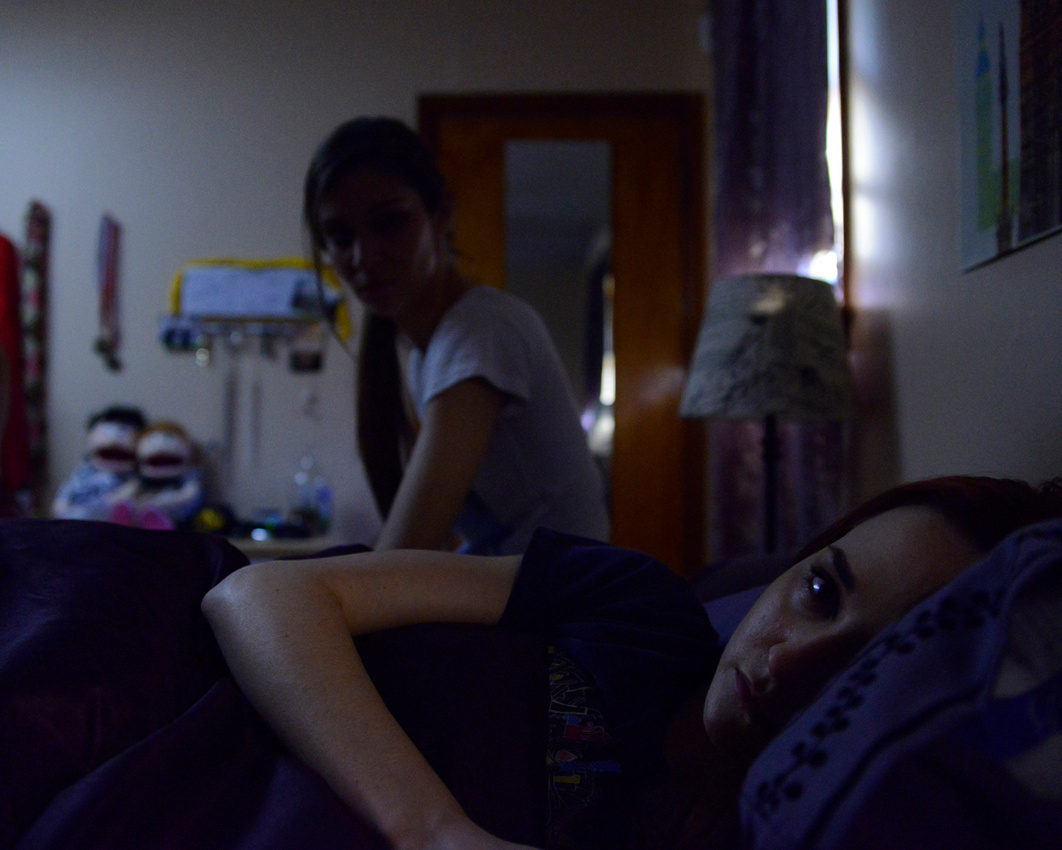
Below, director of photography Jerry Jacob of Atherton Pictures sets the lighting for an office scene before the camera and sound crew gets in position.
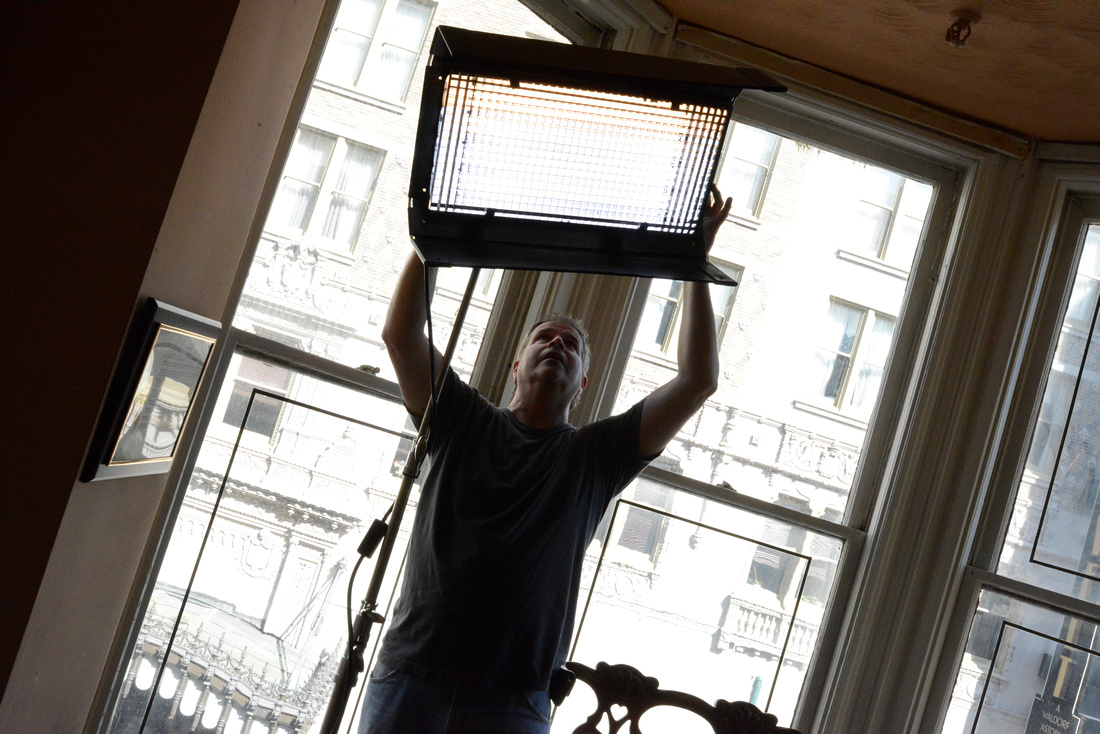

Below, Margaret Wild (Nicole) as my camera captured her during a take ...

... and a post-scene still of Rachel Jacob (Ruby) and Margaret Wild (Nicole).
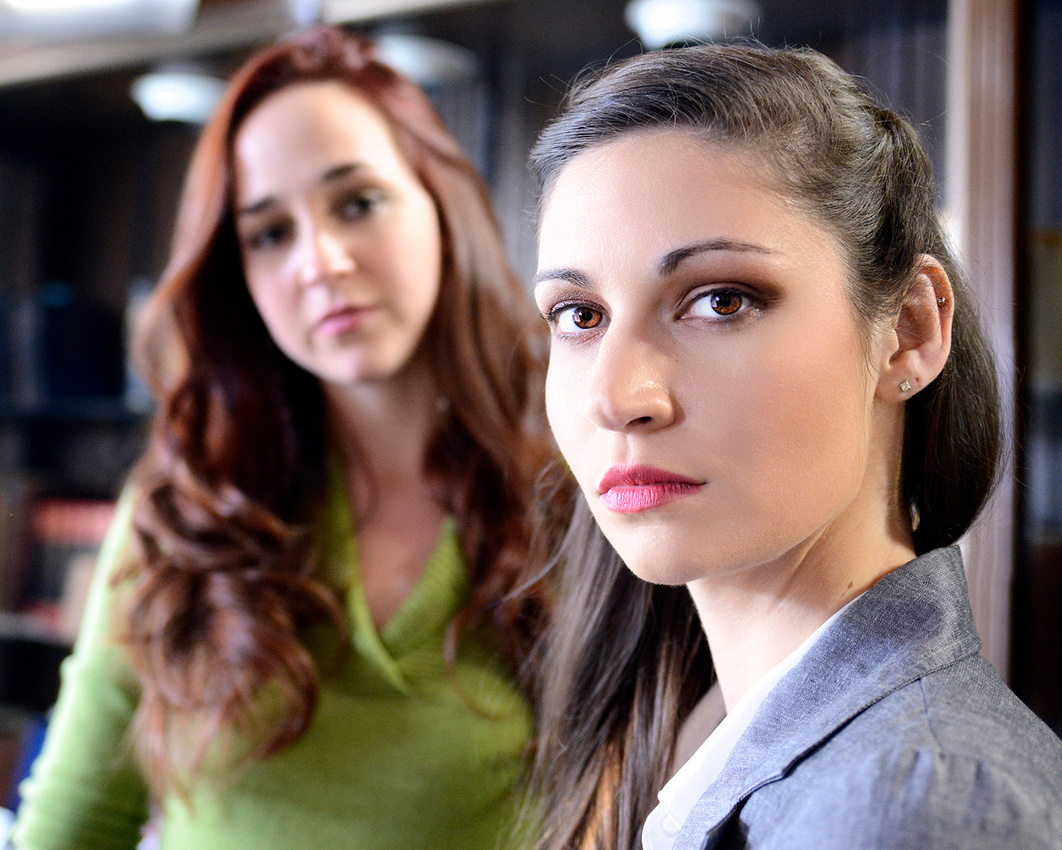
Below, first assistant director Amy Husband checks the office scene take on a monitor as Rachel Jacob and Jerry Jacob (background) make set adjustments.
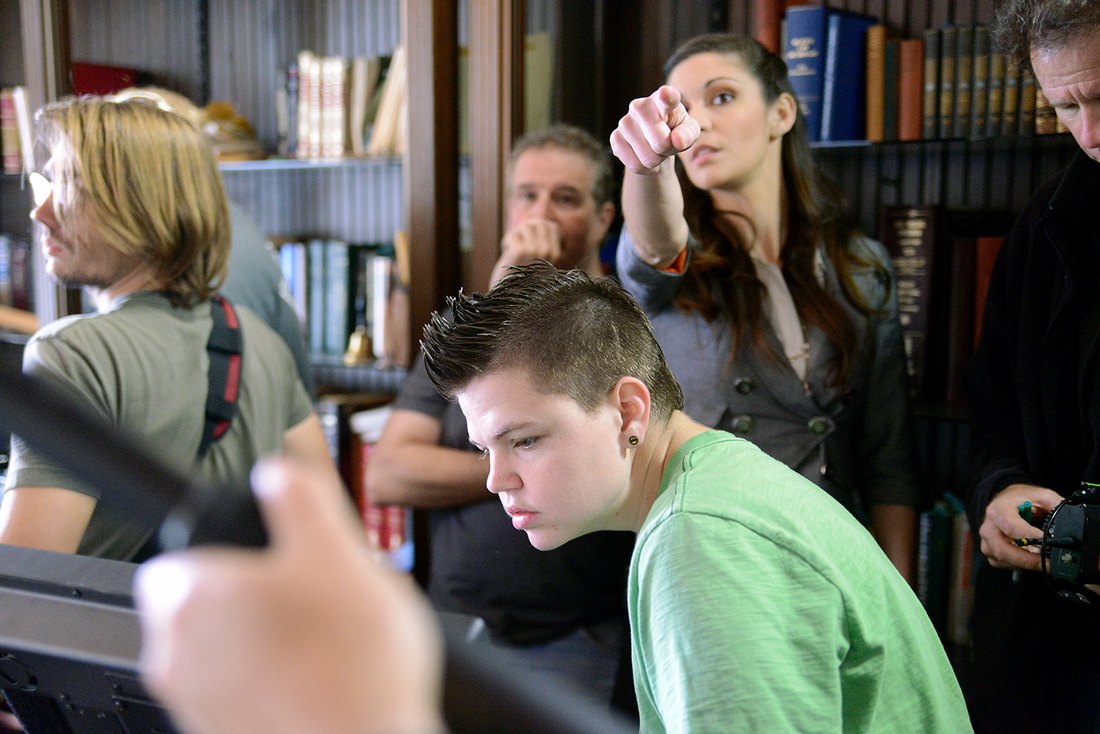
Cameron Brown, who has acted in "Abraham Lincoln: Vampire Hunter" (for which he was nominated for a Young Artist Award), "Looper" and "21 Jump Street," plays Ruby's young brother Charlie.


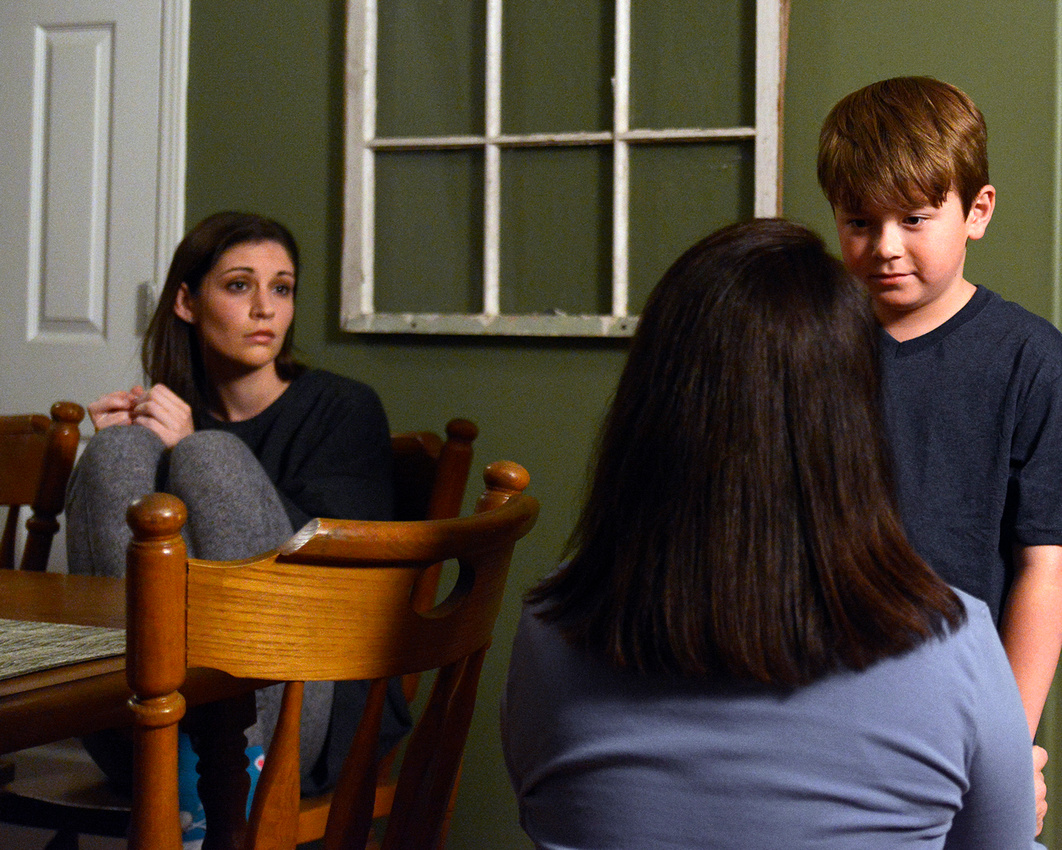

Above, Charlie is comforted by Ruby's best friend Nicole (Margaret Wild) and Ruby's mom (Ronnie Hooks).
Below, a close-up monitor shot of an exterior daytime scene of Ruby (Rachel Jacob) in her car.

Below, preparing for a nighttime scene ...
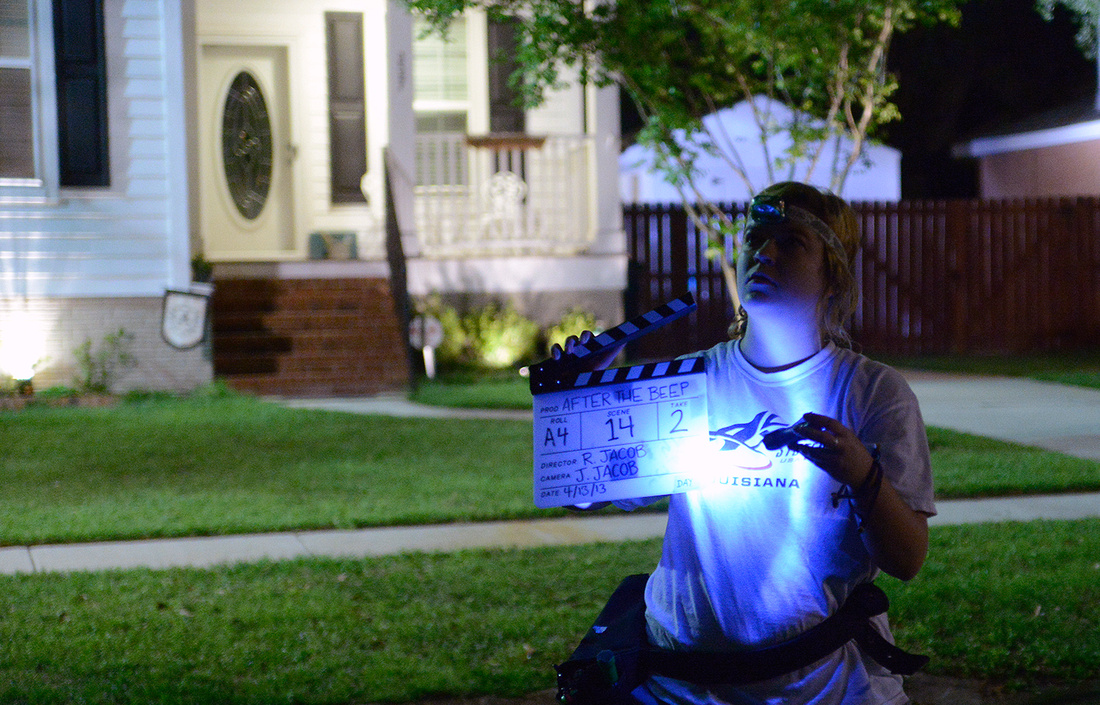
In one of the most emotional scenes in "After the Beep," Nicole (Margaret Wild) repeatedly attempts to contact her best friend Ruby but hears only the recorded sound of Ruby's voice on her answering message.
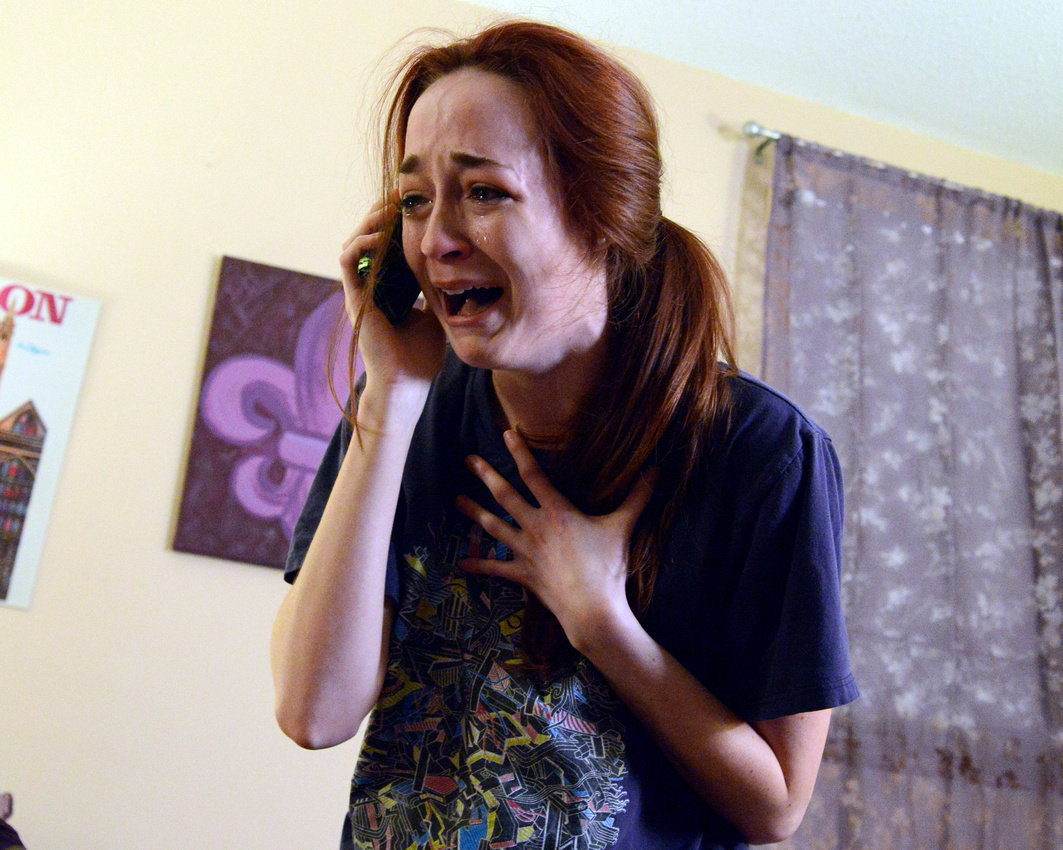
Following five hectic, emotion-filled days of filming, I gathered the principal actors (clockwise from far left: Ronnie Hooks, Rachel Jacob, Margaret Wild and Cameron Brown) for a casual, pre-wrap party photo.
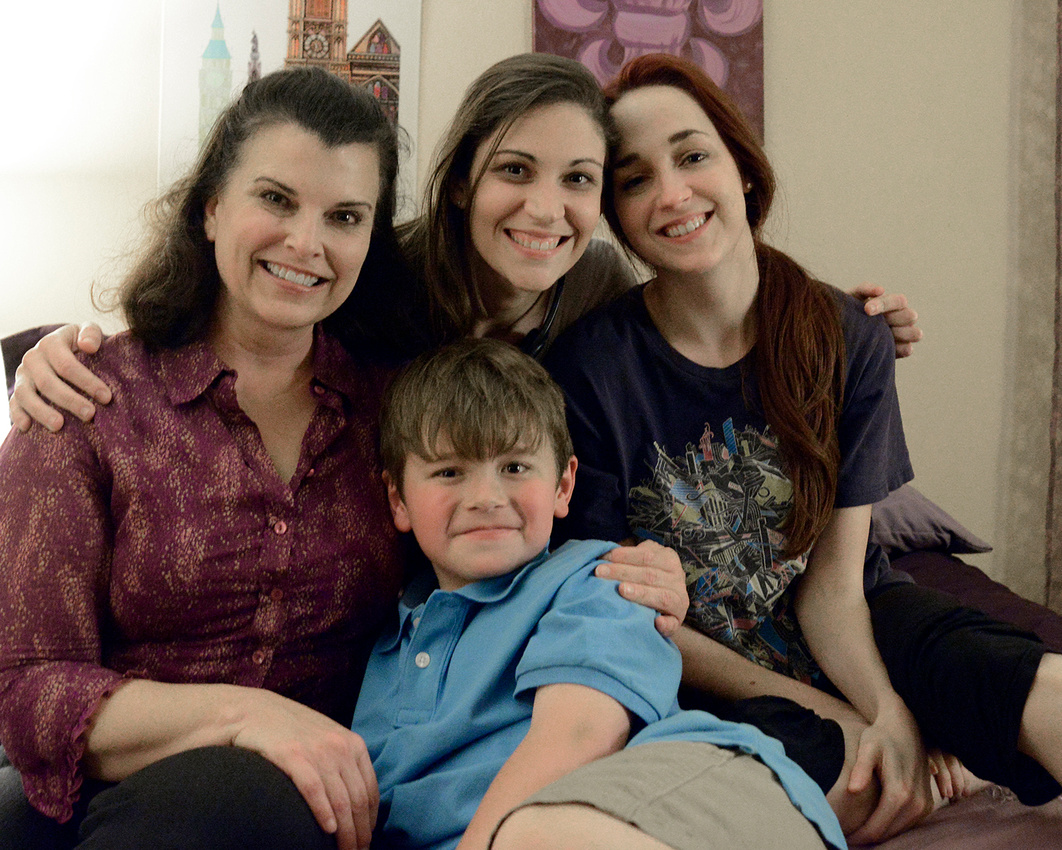
]]>
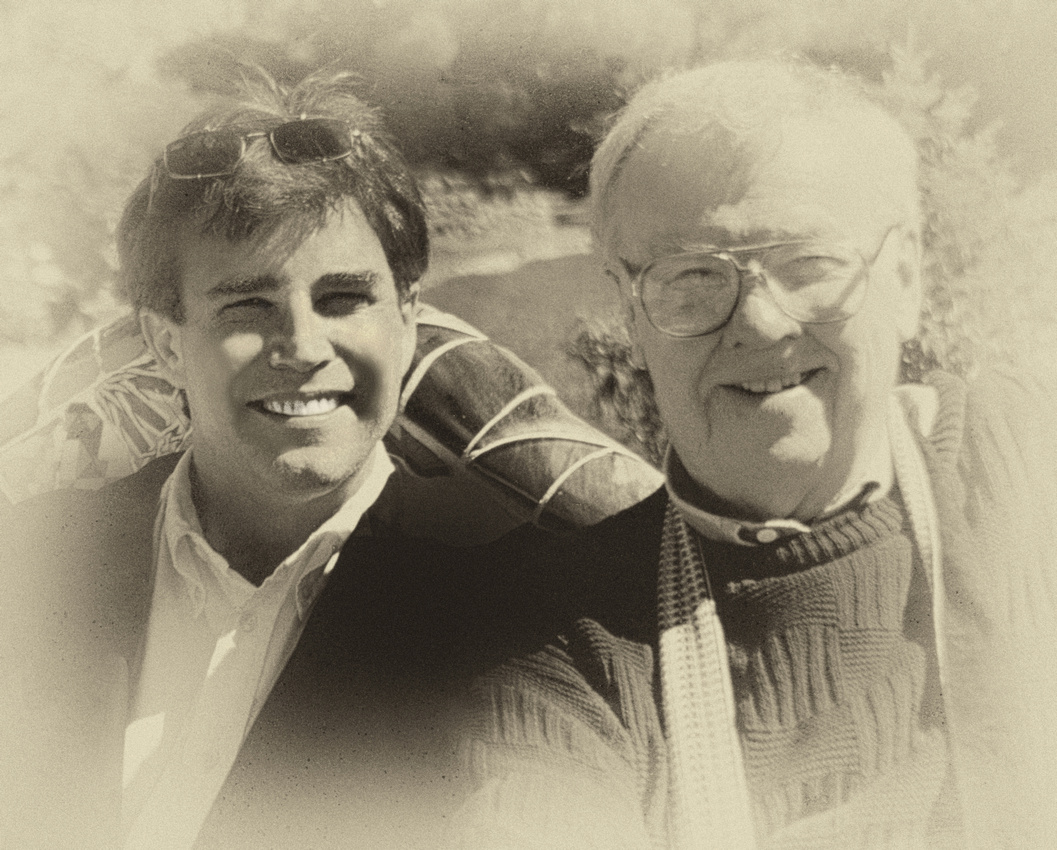
Packing to move to a new home is a splendid time for purging old things you can’t use, don’t need, never really wanted -- not to mention stuff you haven’t set eyes on for decades. As a travel journalist, though, the process is also turning out to be a rediscovery of oddball, outright weird and occasionally sentimental items I’ve accumulated during 25 years (and counting) spent tramping the globe. Here’s my Top 11 list (in no particular order) of items recently unearthed during our move -- and whether I’m keeping it, heaving it or giving it a new home. Read on …
1. FINNISH TAR CANDLES: The term alone is enough to conjure a vision of purgatory's Gift Shop of the Damned. I must have been having a really good time in Oulu, tucked on the western coast of Finland, to think a souvenir of candles that give off the aroma of tar was a cool idea. (Hint: they smell like a mix of molasses and dirty diapers.) Located within spitting distance of the Arctic Circle, Oulu, now a major high-tech center and home to the Air Guitar World Championship, was once a major exporter of tar. Today the city commemorates its stinky history with all manner of related goodies like tar candy (no, seriously), tar soap (for that fresh, death-warmed-over, after-shower scent) and the aforementioned candles. FATE: Yes, dude, they're getting the heave-ho.
2. OTTOMAN EMPIRE REPRODUCTION LANTERNS
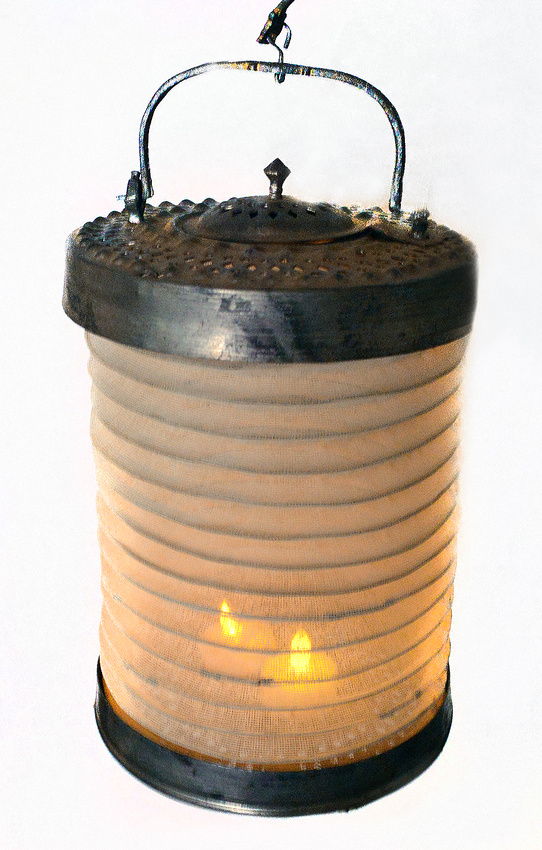
During my third trip to Turkey, I finally found something I could afford to buy that was more aesthetically pleasing than that country’s overrated and overly chewy taffy. The round, accordion-like lanterns, bracketed at the top and bottom with ornate, hand-made metal, are reproductions of those found in better Turkish homes everywhere during the reign of the Ottomans (minus the battery-operated faux flickering lights -- I put those in for the photo). Hipster alert -- I bought the lanterns not in Istanbul's touristy Grand Bazaar but rather at a dusky little shop in the city's très smart Beyoğlu district. FATE: Keeping, natch, for those harem-scarem nights when my inner-Suleiman the Magnificent wants to party like it's 1499.
3. AUSTRALIAN DIDGERIDOO: This was a hand-made gift from the Aboriginal family I lived with during a three-week assignment in Bamaga, located in the Cape York Peninsula at the northernmost tip of Far North Queensland in Australia. I tried for months to play the damn thing – even bought an instructional CD – to no avail. The circular breathing technique required to make even rudimentary sounds proved beyond my scope and a hellish exercise in futility better left to woodwind fetishists. FATE: Why keep the didgeridoo buried in a closet when I can give it a new home, where someone might actually learn to play the instrument and thus honor the ancient musical traditions of the Aboriginals?
4. REPORTER NOTEPADS
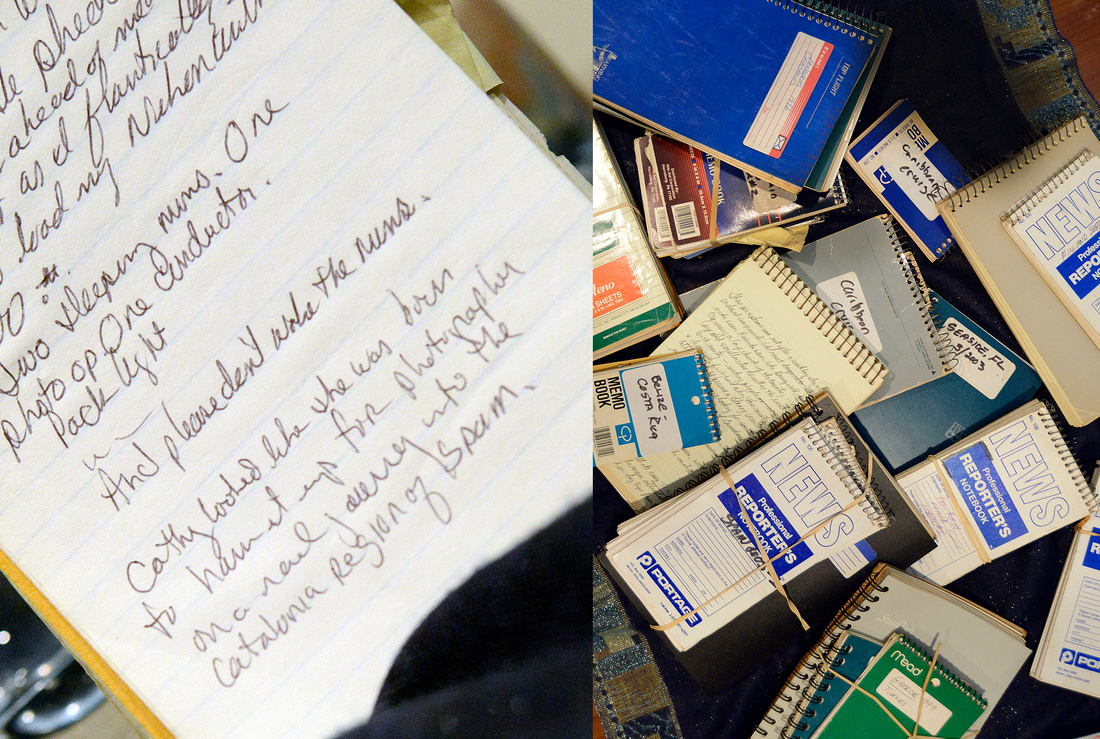
As a rule, I don’t hoard much in life but I do keep reporter notepads from myriad travel assignments just in a case I need to refer to something down the road. My notes, as you can see in the above-left photo, are banal yet instructive (at least to me): “Two sleeping nuns. One photo op. One conductor. Pack light. And please don’t wake the nuns. Cathy [not my wife] looked like she was born to ham it up for [a] photographer on a rail journey into the Catalonia region of Spain.” I was going to throw them out -- thinking why keep notes stretching back 25 years? -- when my friend Amy said, “No way, you’ve got to keep them – trust me.” I trust Amy – she possesses that “otherness” of wisdom. FATE: Keeping (at least a few more years).
5. SALVADORAN 'SURPRISE' EGGS: Discovered in a file cabinet, these traditional, miniature egg-shaped ceramic tschotskes from El Salvador open at the top to reveal little vignettes inside – for example, a woman cooking in the kitchen or a man fishing. But the naughty versions I bought while traversing the Central American country open to expose a diminuitive ceramic couple engaged in big-time explicit boudoir fun. With this variation of a theme, the “surprise,” depending on the egg, is that you’re never certain what you’ll find the couple doing inside. I bought a dozen of 'em -- sort of like Chinese pillow cards for the ceramic enthusiast. Egg porn -- fun while it lasted. FATE: Heaving.
6. POSTER OF DOMINICAN PRESIDENTIAL CANDIDATE PENA GOMEZ
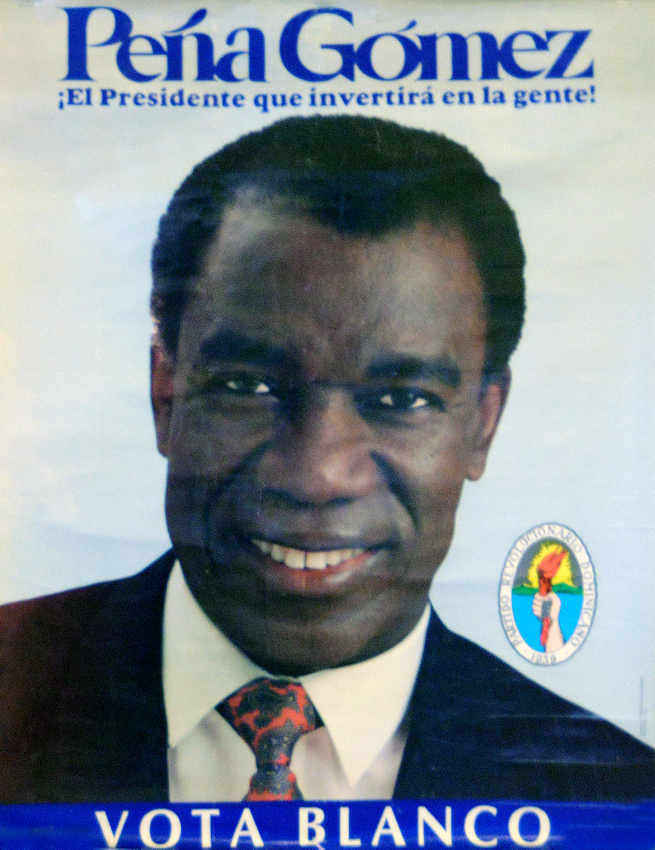
I was covering the presidential campaign in the Dominican Republic, swilling Cuba libres with a few journo buddies from a sidewalk table at an Iranian-owned pizzeria in Santo Domingo on election night, when a working girl approached and offered me the above poster of presidential candidate José Francisco Peña Gómez in exchange for tuning her guitar. How could I refuse? Recently, I pulled the rolled-up poster from the dark, nether reaches of a closet shelf and boy did it bring back memories of a surreal, gonzo night worthy of Hunter S. Thompson (and, no, this had nothing to do with the woman). Gomez, one of the most prominent political figures of 20th-century Dominican Republic, lost the election. FATE: Heaving.
7. TIFFANY ART DECO GREETING CARDS: On a visit to England, luck found me tumbling into London’s acclaimed British Museum on the occasion of a jaw-dropping exhibit of Louis Comfort Tiffany’s best Art Deco designs – jewelry, lamps, fashion accessories, vases, handbags, etc. You would have thought I had died and gone to heaven. Besides scooping up the catalog in the gift shop, I grabbed a set of greeting cards each featuring a different Tiffany Art Deco design. Lost for years in my office, I found them gathering dust behind a dresser but thankfully still in the original box. FATE: Don’t expect to receive any of these greeting cards anytime soon, buckos – I’m framing them.
8. CATALAN NATIONALIST FLAG

My heart belongs to Spain's northernmost province of Catalunya, but that's not why I so love this flag. A proper (and legal) rendering of the true Catalan flag (and coat of arms) bears only the alternating crimson and gold stripes. However, when the blue triangle and white star are added, the flag becomes a subversive, nose-thumbing symbol to the rest of España of Catalunya's muted aspirations for recovered statehood and full independence from Spain. Gotta love the Catalans. Both versions of the flag can be seen hanging from balconies every Sept. 11 when Catalans celebrate La Diada (or "The Day"), which commemorates the defeat of Catalan peasants, in 1714, fighting in the War of the Spanish Succession. FATE: I'll give up this flag when they pry it from my cold, dead hands.
9. HONDURAN ‘PECKING ORDER’
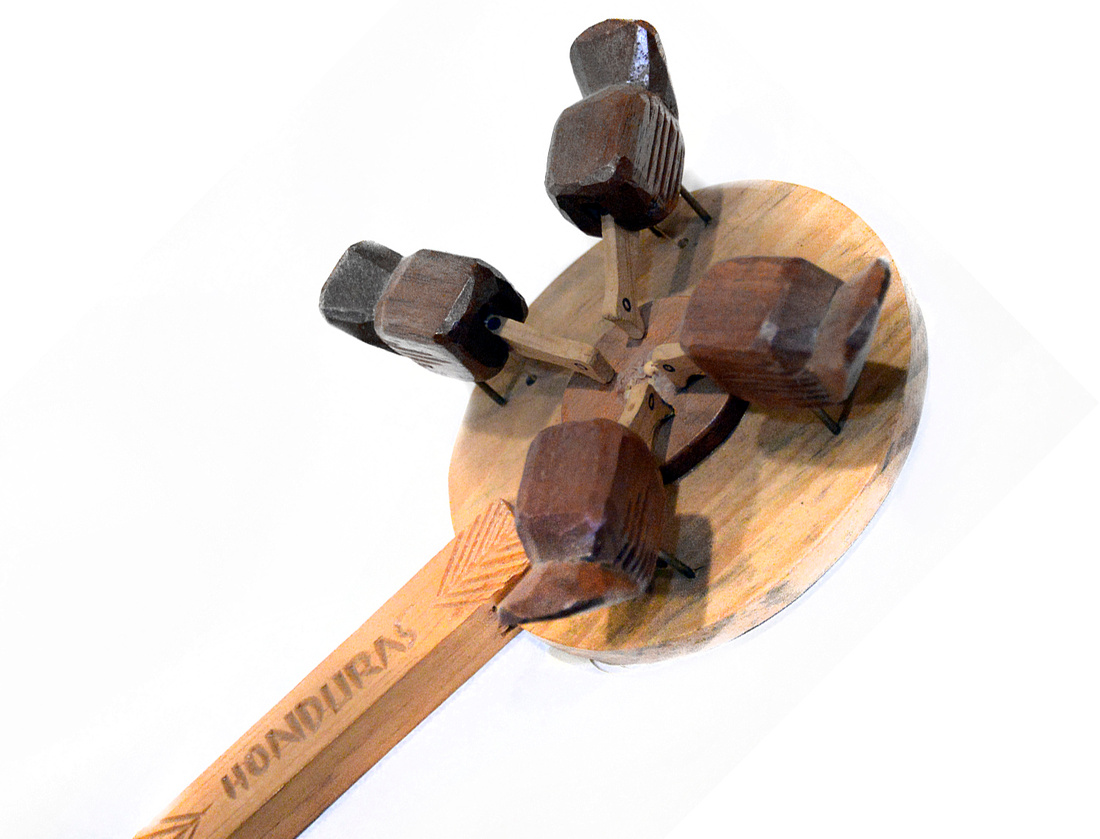
At first blush this ubiquitous roadside souvenir might strike the savvy traveler as, well, "rustic." But that’s before you start rhythmically moving the paddle in a circular motion, which causes the turkey heads to begin bobbing up and down in sequence for the “food” at the center of the paddle. All of this controlled by the small wooden cube that hangs below the paddle, tethered by strings to each of the four wooden turkeys. Tacky? Well, yeah -- just look at it. Yet in all fairness the design and engineering are surprisingly clever. In my college days this primitive gewgaw would have been a stoner's paradise of weekend-long fun. FATE: A gift to my youngest nieces and nephews.
10. WALDORF ASTORIA ROOM KEY: It isn’t often as a travel writer on assignment in New York City that I get put up for a week at swank digs like The Waldorf Astoria. Evenings I would return following a day of “research” (somebody’s gotta do it) to the hotel’s legendary Peacock Alley Bar for martinis, imagining what it must have been like back in the day when then-Waldorf resident Cole Porter performed at the same Steinway Grand Piano that is still a fixture in the bar today. Sigh. No wonder I kept the room key (room 1404, to be precise). But it’s an electronic-swipe key card – not the same magic as an actual key. FATE: 10 years after the fact, I’m going to follow the instructions on the back and “kindly return this keycard to the cashier upon check out.” Better late than never.
11. CHERISHED PHOTO OF ME AND MY MENTOR

This photograph was found at the bottom of a drawer beneath a stack of reporter notepads – a snapshot someone took of me and my dearly departed mentor Len Hansen years ago at Parc Guell in Barcelona during a press trip. A pioneering journalist and newspaper publisher, Len taught me not only about journalism and travel writing, but a whole lot of other things too numerous to list here. Suffice to say, I would not be doing what I am today were it not for Len, among the brightest and most generous and creative individuals I have ever known. He opened the window and dared me to take flight. Over the years we enjoyed the pleasure of playing catch-up while traveling a fair bit of the world together while on various assignments, always comparing notes and observations about wherever it was we happened to land -- Edinburgh, Athens, Barcelona, London, you name it. From Len, I learned what it meant to have an insatiable curiosity about life and the world. Occasionally, when our travels included my wife Cathy, we were -- make no mistake -- the Three Musketeers (I have the bar tabs to prove it). I loved Len dearly and not a day goes by that I don't think of him. FATE: Keeping (and framing to put on my desk in the new abode).
]]>
Not to sound excessive, but as a rule I pack up to 10 Nikon Speedlights (or strobes) in my kit because I never know what any given shooting environment is going to call for until I’m on the set (unless, of course, I have the luxury of scoping it out ahead of time, which typically is not the case). Despite what might sound like an overload of Speedlights, I tend to build the lighting on my sets one flash at a time. Set up one strobe, snap a photo. Set up a second strobe, snap a photo. And so on. I do this because I like to see the additive effect that results from each new strobe introduced to the shooting environment. This way if I overreach with strobes and create too much or unnecessary lighting, it’s easy to spot the culprit and back down on the number of Speedlights.
But there are many times when a single strobe is sufficient to do the trick. In fact, using a lone-wolf Speedlight is often essential for creating a certain atmosphere or aesthetic integral to the photo session. Such was the case during Part II of a photo shoot with my model Rachel Jacob inside the historic, old Islenos buildings that are tucked like secrets on the grounds of the Islenos Museum in St. Bernard, La. (http://bit.ly/YyDDnz). I had decided to shoot Rachel inside the old Toca Grocery & Barroom (nicknamed the “Bucket of Blood” for the notorious booze-fueled fistfights that broke out on Saturday nights back in the day). This because the barroom had an old piano – one that had seen better days before it became severely damaged during the flooding of Hurricane Katrina, which wiped out virtually all of St. Bernard Parish, where the museum is located. Piano keys were badly broken and flooding had added a multitude of new layers of patina to the instrument. But, as the museum’s director and my good friend Bill Hyland has pointed out in the past, I live for patina (or, as Bill would say in an intentionally exaggerated Mediterranean accent, “pah-TEEN-nah!”).
Because the photo shoot took place at mid-day and I wanted to create a nighttime vibe, I would have to use a higher than normal shutter speed to trap out virtually all of the ambient light coming in from a pair of large windows on a wall facing the side of the piano (see top photo) where Rachel would be sitting. To soften the light from the strobe, I affixed a 24”-by-24” softbox – all of which was attached to a light-stand boom behind the bar counter. I would be using my cherished (and wonderfully inexpensive) Yongnuo wireless flash triggers (http://bit.ly/YHl8uV) to remotely trigger the strobe.
While I set up the gear, Rachel, a filmmaker and partner in the newly formed New Orleans-based company Good Luck Productions (http://on.fb.me/16nuHEe) set to work clearing the bric-a-brac, flowers and colorful decorations off the top of the piano. “It’s too happy,” she said matter of factly.
The photo below shows the softbox illumination and the sphere of light I intended to frame my model, Rachel, and the piano. (Notice the "happy" hat and flowers have been removed from the piano top. The "happy" plate on the wall would not appear in frame.)

We experimented with a few different camera angles, all intended to focus on her hands as they moved across the piano (Rachel actually plays piano, so capturing the natural movement of hands across the keyboard was a bonus).
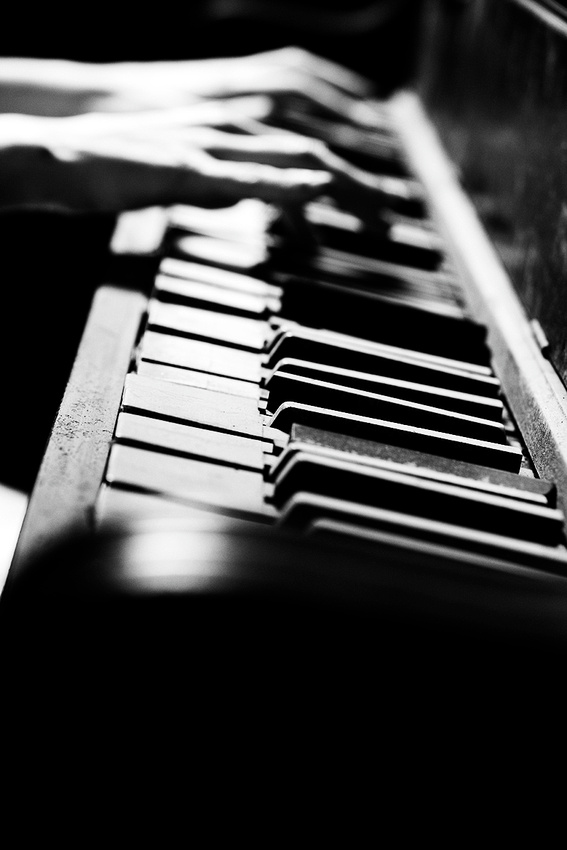
But for the narrative I was seeking (this photo was to be part of a new series called “The Algorithm of Midnight”), the light was still too bright, the subject matter too en pointe. So, I clamped down even more on the shutter to cut out everything but a rim of light falling on her arms and hands and the edges of the piano, as well as parts of her legs. See final photo below:

If I let my imagination roam, this shot is of how I imagine Rachel might have looked playing piano by moonlight shining through a window, inside the empty Toca Barroom, circa 1930s, lost in the solitude of darkness and the haunting melody known only to her.
]]>
1. BORN TO BE WILD: Chevrolet Camaro 2SS Convertible
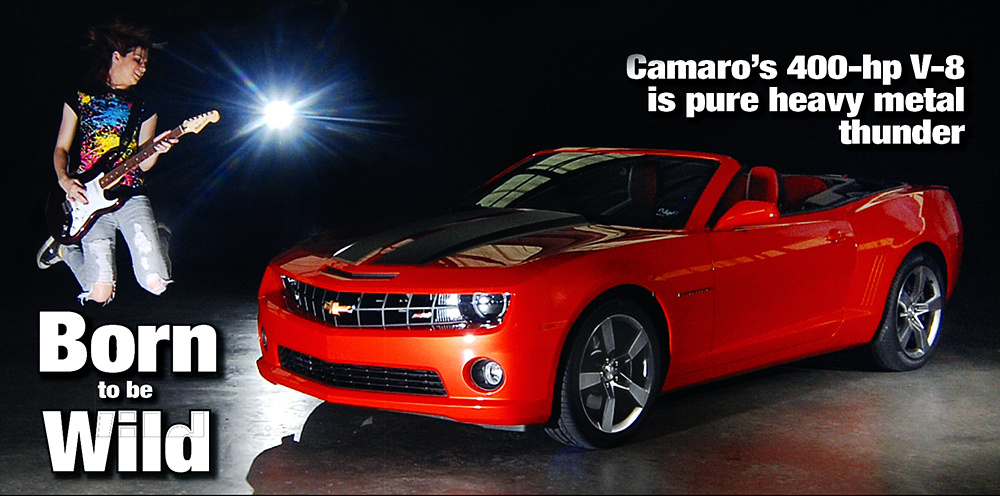
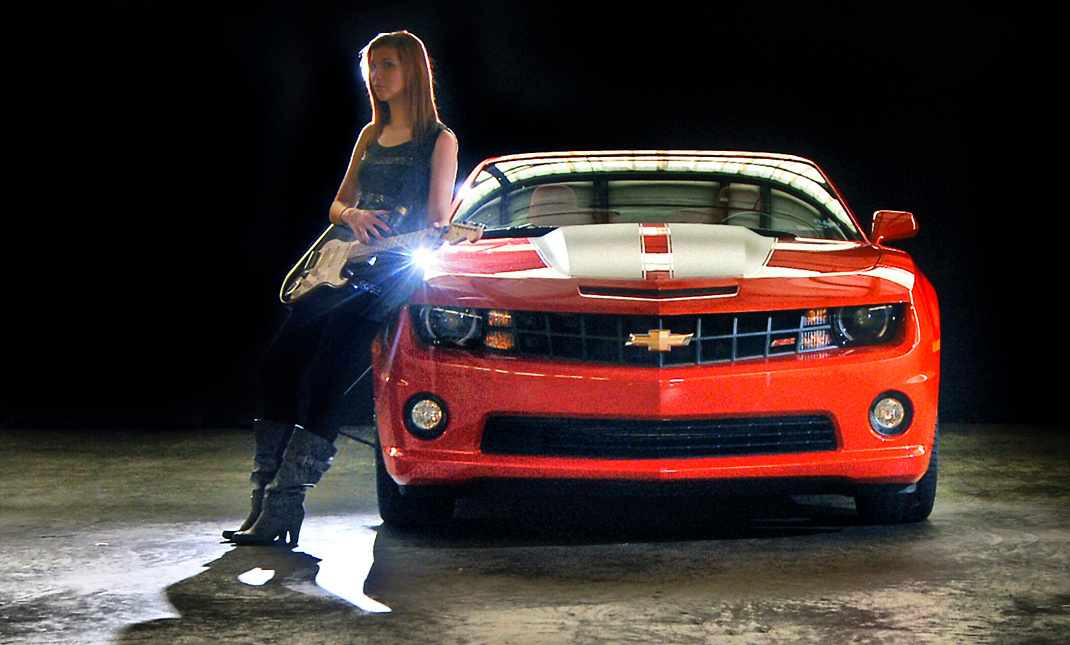
For the second year of the reintroduced Camaro, I wanted to create an image that spoke to the vehicle's rock-and-roll street cred. I remembered a cool girl that played rock guitar when I was growing up and decided to recreate my memory of her garage-band practices – but with the addition of a Camaro convertible. My versatile model Rebecca Jacob proved the perfect neighborhood rocker girl. She not only had the right look and wielded a Stratocaster like she was born with it, but she could also mimic Pete Townsend’s legendary “rabbit” jumps (see top photo, as it appeared with headlines in the newspaper). For lighting I used a quartet of Novatron model lights plus an equal number of off-camera strobes (including one placed directly behind Rebecca to create a stage-like lighting effect). The shoot in the warehouse lasted nearly six hours -- from hair styling and lighting set-up to when we actually finished shooting. A long day, to be sure, but it was among my most photographically satisfying shoots ever. All thanks to a fantastic model who knew how to rise – literally – to the occasion.
2. TALL ORDER: Jeep Grand Cherokee SRT8
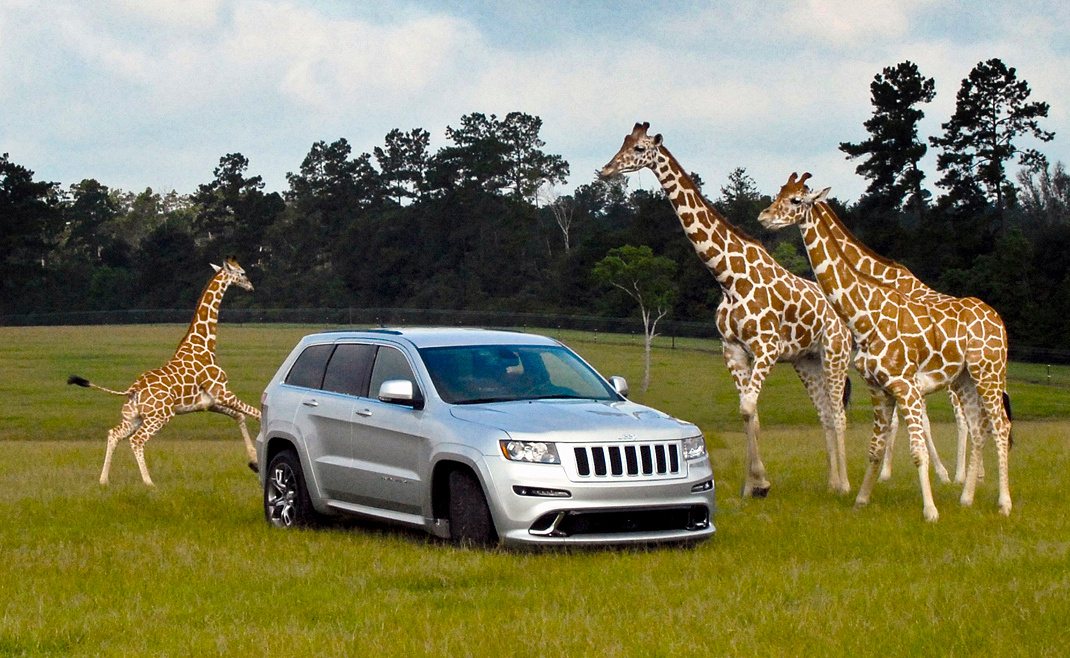
What’s not to like about a car surrounded by a herd of giraffes (including the herd's newest addition)? The good people at the Global Wildlife Center (http://bit.ly/Y4mLVH) in Folsom, La., were kind enough to grant me access (supervised and guided, naturally) to the facility's free-roaming animals to shoot Jeep Grand Cherokee's top-tier SRT8. A staffer behind the wheel of the Grand Cherokee positioned the Jeep near the herd and rolled down the driver’s-side window to hand out food to draw the giraffes closer, as I rode in the back of a flatbed chaser vehicle. To illuminate a quartet of giraffes from this distance (and under fairly flat overhead skies) required affixing four off-camera Speedlights – all set on full 1/1 power -- to a nifty four-square swivel mount (http://bit.ly/ZOKhQV) that was clamped to the side of the chaser truck. As the giraffes began cruising the Grand Cherokee for corn during their impromptu “feeding time,” I began snapping away. We were done within 15 minutes. Even my typically non-plussed editor, when he saw the baby giraffe prancing behind the Grand Cherokee, let out an audible "aw-wwww."
3. STAR-SPANGELED HAMMER: Corvette Grand Coupe GS Convertible
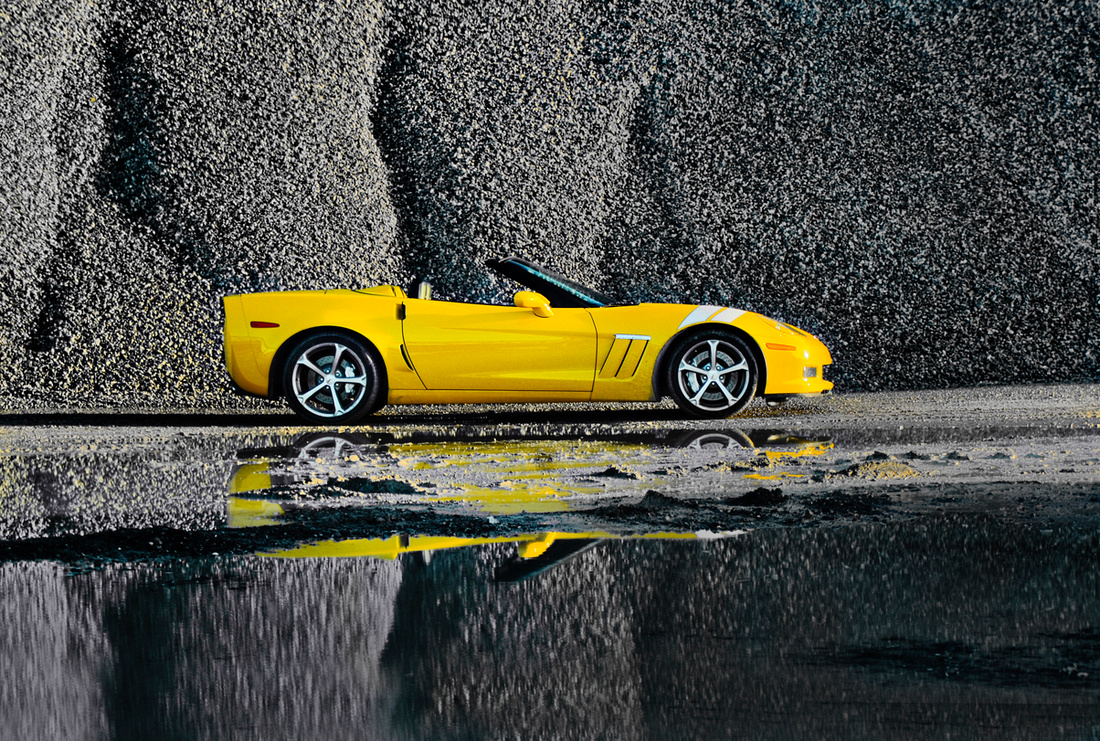
One day while cruising down Almonaster Boulevard in New Orleans, I spied a limestone quarry and for some crazy reason thought this might make a perfect backdrop to shoot the Corvette Grand Coupe convertible, among the last remaining born-in-the-USA, hammer-down muscle cars on the road today. After an informal five-minute telephone conversation with the quarry owner, I got the green light to use the venue. (In any other city but New Orleans, this process would have required four weeks, three lawyers, two meetings and at least one notarized insurance waiver). On the morning of the shoot I sheepishly maneuvered the Corvette in between ginormous, 20-foot-tall, heavy-duty quarry dump trucks. A few concerned drivers, obviously thinking I was either lost or insane, shouted through their rolled-down windows. “Don’t get run over!” When I spied the post-rain puddle in front of a limestone “hill,” I knew I had found the perfect spot. I strapped on my kneepads – limestone is killer on the knees, don’t you know -- and clicked away. The reflection of the Corvette in the puddle was pure lagniappe. Brilliant day.
4. ROLLING SCONE: Mini Cooper S Countryman
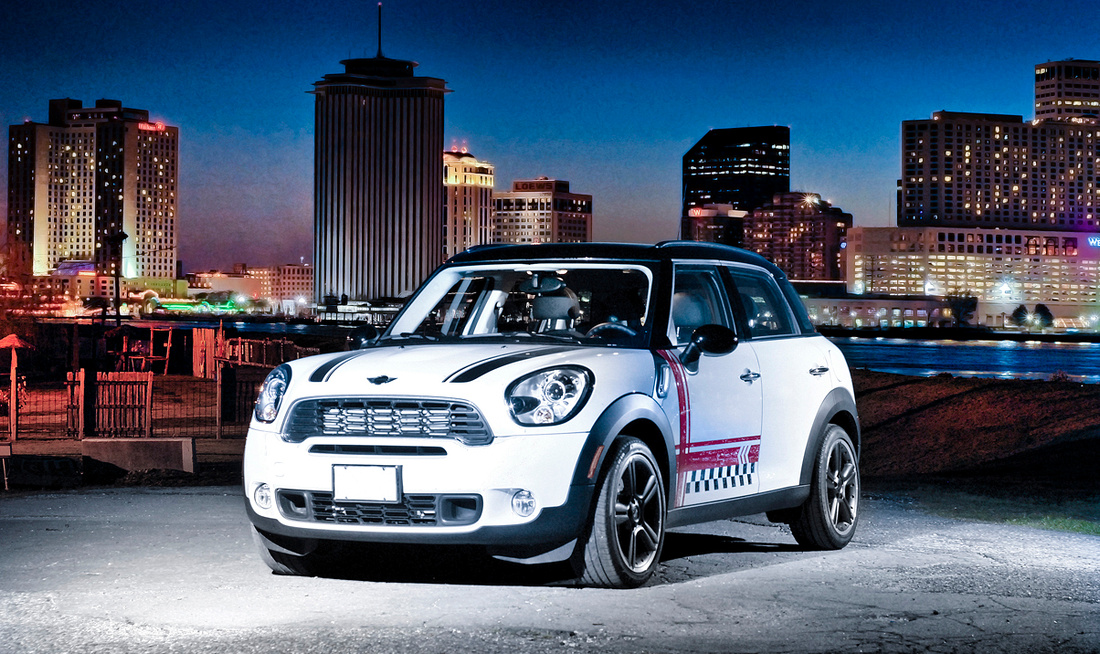
The Mini Cooper’s introduction of its first-ever four-door vehicle left me wondering if the oh-so-British automaker had lost its rock-’n-roll English cool. Could the Countryman sedan really share the same DNA as the two-door Mini that first earned its street cred 45 years ago as the pet car among the young and hip, Swinging ’60s London set? Of this I was certain: I aimed to flood the little sucker with enough off-camera strobes so that it resembled a red-carpet diva at a London movie premiere, utilizing New Orleans’ skyline at “blue-hour” dusk as my backdrop. The four-door Countryman may never worm its way into my A-list of Mini cool, but for one brief shining moment – 15 minutes at Algiers Point during a clear-sky evening, to be precise – it sure looked like a winner.
5. FLIGHT OF FANCY: BMW 650i Twin-Turbo

Despite appearances, this image has nothing to do with the song, “Close to You,” where “birds suddenly appear” every time the BMW 650i is near (but it would make for a great ad!). No, it took a little finagling to get this flock of prima donnas on the set. Lure du jour? A loaf of bread. I instructed my wife to drive the Bimmer slowly along the sand and gravel parking lot at a Bay St. Louis, Miss., pier, with the driver’s-side window down, tossing out pieces of bread until the birds began following her and the car. The first few shots looked like a bone-chilling scene from "The Birds": the seagulls literally dive-bombed the car (and, it turned out, my wife's hand and arm). Not good. It took a few laps around the parking lot (remind me to nominate my wife for sainthood) before my strategy paid off in spades. From a short distance away, where I had fixed my bank of strobes, I snapped the shot (using a 70-200mm 2.8 lens) that we ultimately wound up using for the newpaper’s automotive page. Sometimes a little ingenuity can help a simple idea take flight (sorry, couldn’t resist).
6. BUSH LEAGUE: NIssan Xterra Pro-4X
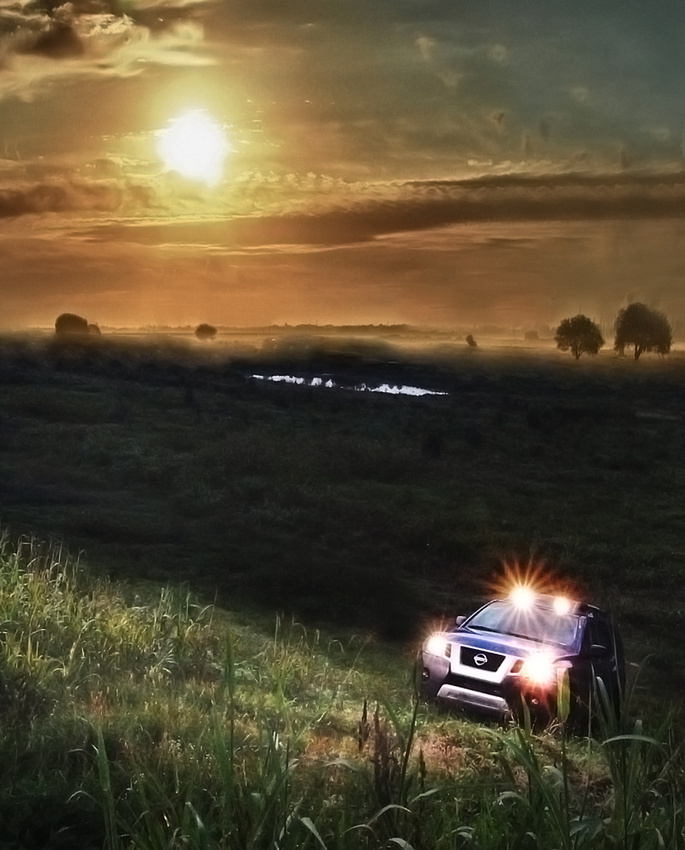
I love shooting cars at the Bonnet Carré Spillway, an engineering marvel of flood gates that can open to take in the rising waters of the Mississippi when river tides reach dangerous levels. When not in use (which is most of the year), the Spillway is a public playground of wide open spaces popular among off-roaders and the like. When I shot the Nissan Xterra at sunrise, I specifically wanted to capture what to me was among the SUV’s coolest features -- its roof rail-mounted trail lights – to imbue the vehicle with the kind of rugged adventurousness for which it is well equipped. After finding the right angle and position, I parked the Xterra on a sloping levee batture and set to work setting up a tripod with three off-camera strobes (camera left, at the top of the levee, aimed down toward the vehicle) to enhance the grass already illuminated by the trail lights. When I set to work shooting, I hadn’t realized just how much the vast expanse just behind the Xterra reminded of the Africa's subtropical savannahs. Talk about luck!
7. TERRAIN-SPOTTING: Range Rover HSE
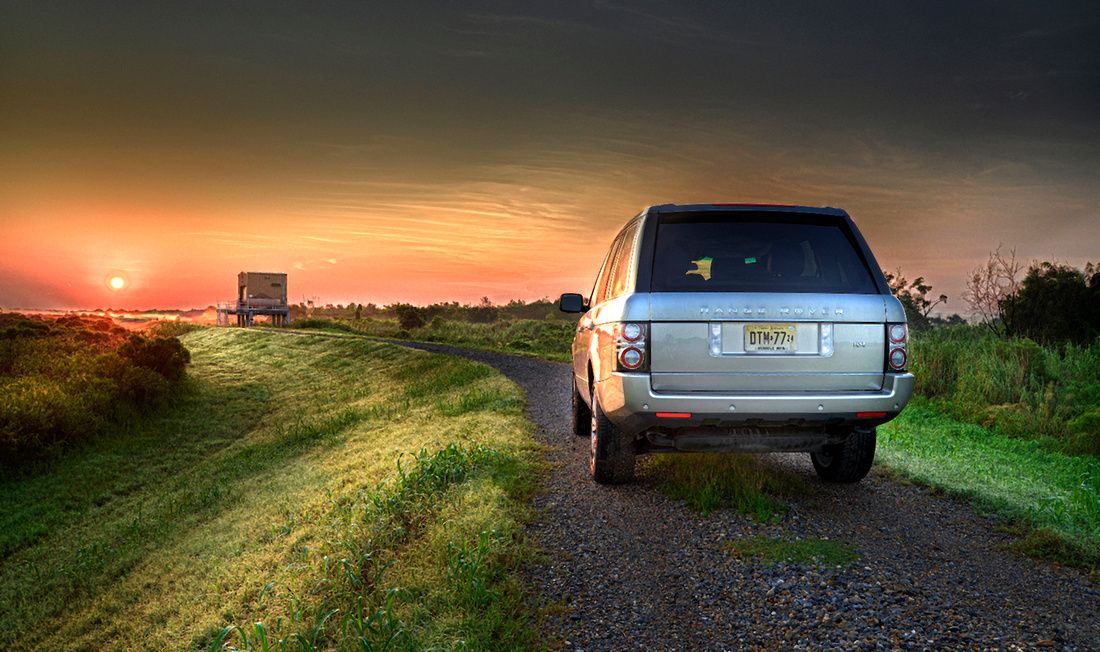
I was heading to the bucolic fishing villages of Yscloskey and Shell Beach in eastern St. Bernard Parish for an early morning photo shoot with my Range Rover HSE test car, when I caught a glimpse of a sunrise red sky down a levee road. I slammed on the brakes and doubled back, not even knowing if the levee road was open to the public since there was a pumping station about 100 yards away. All I knew for certain was the pearl-grey Range Rover would pop like crazy against nature’s color palette of surrounding green grass and, in the distance, a melting-sorbet sunrise sky. But sky colors change rapidly – far faster in the morning than the evening, I learned – so I knew I had to work fast. With time of the essence, I opted to wing the shoot with only one off-camera strobe – positioned on the ground by the front-passenger tire and aimed back towards the car to illuminate the grass to the vehicle’s right, plus to add a little under-chassis contrast. I intentionally composed the shot so the Range Rover would be right of center, this so the gravel road would start in the right hand of the frame and sweep towards the left in the photograph as the eye followed toward the horizon line. I did all of this in under two minutes -- literally. Good thing, too. By the time I stowed my camera gear and began backing up off the levee road, the light had already changed to something far less dramatic. By the time I got to Shell Beach, I looked up at the now comparatively dullish sky and didn’t even bother taking out my camera. I had my shot. Lesson: strike while the sky is hot.
8. TOTALLY, DUNE!: Jeep Grand Cherokee Laredo
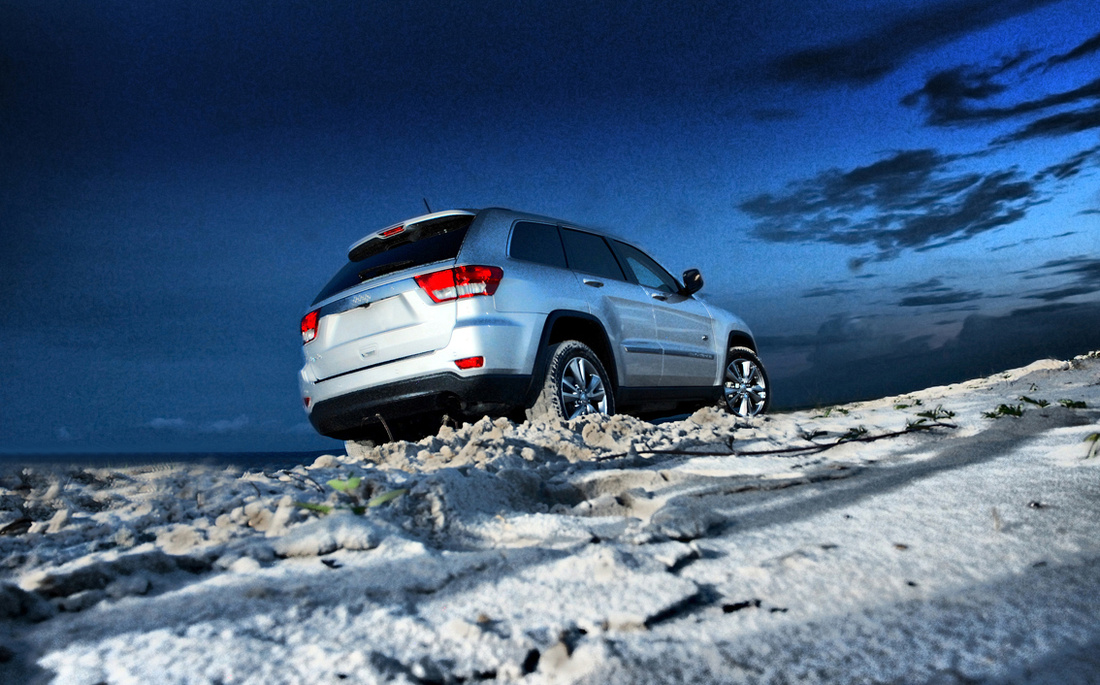
Shooting a car on a beach at sunset is rich with opportunities to screw it up royally. You’re fighting against one of the most highly reflective and thus photographically difficult and unforgiving surfaces known to shooters -- sand. This while trying to adjust your camera’s light meter to balance otherwise bright sand and a setting-sun blue sky in such a way that the sky doesn’t fall into black. You mutter, “Why do I torture myself this way?” Here’s why: if you wait patiently for the ambient sunlight to wane sufficiently, the sand becomes your friend -- textured and surprisingly subtle, not merely a monolithic block of white-hot reflective light. Adding to the challenge of this shoot was figuring out how best to utilize off-camera strobes to enhance – not compete with – the setting sun’s gorgeous natural light on a beach. Solution? Three strobes – each on a tripod and diffused with a light shaper – placed at the six-, nine- and three-o-clock positions. Since I wanted this famous off-roader to look as though it were traversing a rugged sandy hill, I took the Grand Cherokee out of 4x4 mode and gunned the engine so the tires would sink ever so slightly into the sand, as I turned the front wheels to create the expectation of movement. Then I hunkered behind a sandy knoll on my belly and composed the upward-angled image as though from the POV of a sand crab. Sand and sky are balanced. What a beach!
9. CAT SCRATCH FEVER: Jaguar XFR
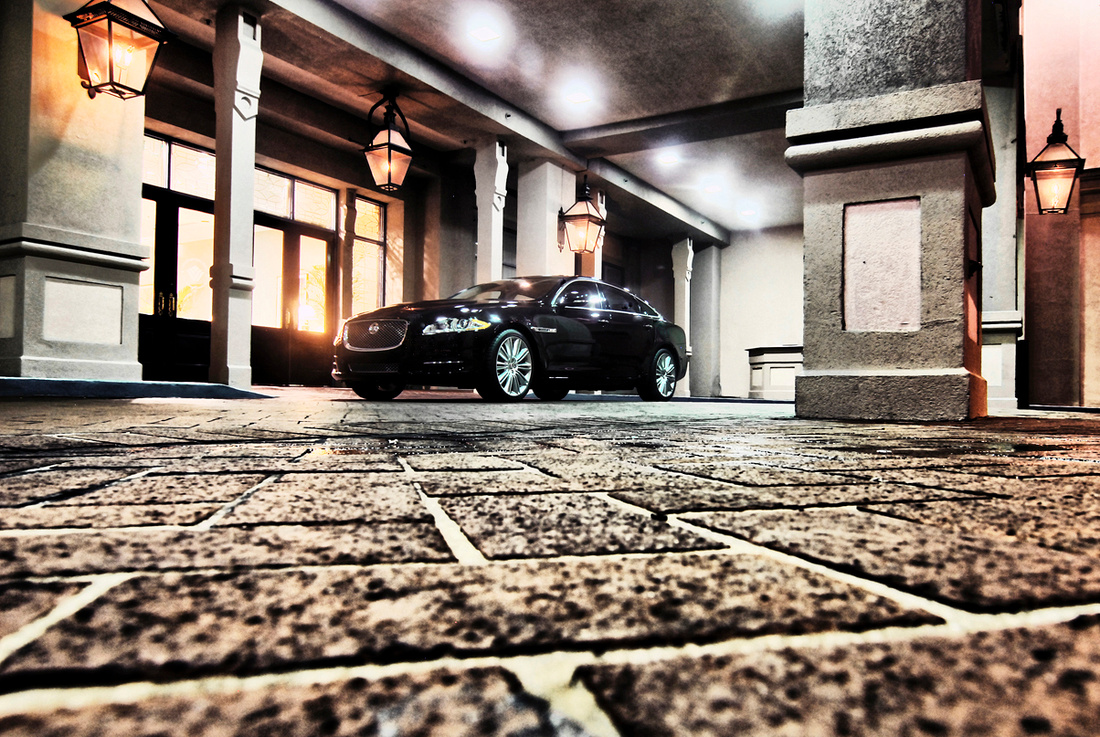
Challenge: Shoot a Jaguar at a deluxe New Orleans hotel at 2 a.m. – the pre-arranged time hotel management told you to show up because there would be no guests arriving for at least five hours. You show up at 2 a.m. only to be informed by night staff that a transport van of good-old-boy conventioneers en route from Mississippi will be arriving in – hello!? – 30 minutes. Crap! Time to shift into DEFCON 1. With an elegant, New Orleans-style mix of background gaslamps and foreground flagstones, I was determined to make this hotel’s sophisticated entryway fit hand in glove with my equally luxurious, black-clad Jaguar XFR test car. Stress doesn’t even begin to describe my emotions during the 25 minutes I scrambled to set up my lighting (a quartet of strategically situated off-camera strobes, banked to illuminate the hotel’s beautiful exterior plaster walls and textured flagstones) and compose my shot to maximize the “river” of diagonal lines leading to the Jaguar. With only five minutes remaining to shoot the scene, I worked like a Tasmanian Devil in overdrive. By the time I was stowing my gear in the trunk, the van pulled up. Just in the nick of time. All in a night’s work.
10. BRIDGE OVER TROUBLED WATER: Nissan Pathfinder
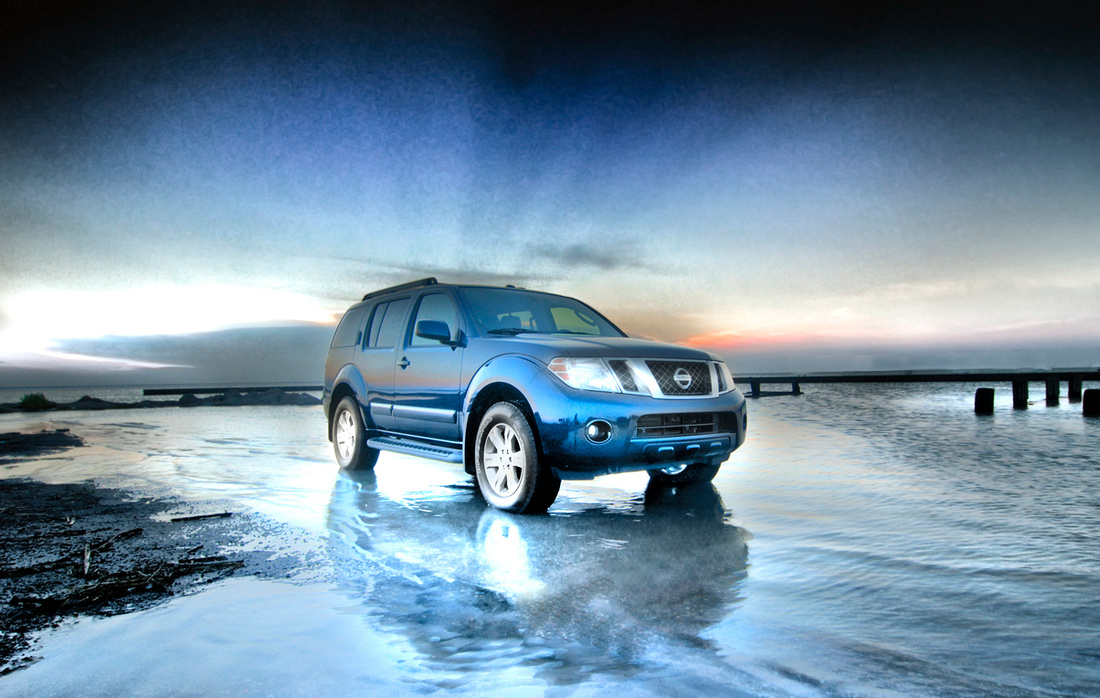
In my review of Nissan's stalwart Pathfinder, I confessed how the vehicle was this sports-car lover’s first-ever SUV, purchased in the aftermath of Hurricane Katrina as an “evacuation car” should we ever face a smiliar catastrophe in the future. And we New Orleanians were dead certain we would. Good thing we weren’t all a little crazy back then. On the day I took my Pathfinder test vehicle to the West End boat launch after several days of heavy rains to scout for a photo shoot location, I was surprised to see how much of the ramp was underwater. I drove the Pathfinder out on the ramp as far as I dared and got out to take a look. Damn, I thought, it looks as though it's floating on water -- or on top of a sheet of ice. I set up a tripod with a pair of off-camera strobes in the water (but still on the ramp) directly behind the driver's-side rear wheel to pop a little reflection in the water to add more contrast to the undercarriage. (Caution: Don't try this at home unless you're willing to lose a couple of Speedlights in the drink if the tripod falls.) I waited about half an hour until the background sunset sky began to bloom before I actually began shooting. Ten minutes later I had my shot and the sunset was gone. Timing is everything.
]]>
1. LAUNCH ENGAGEMENT: Porsche 911 Twin-Turbo Cabriolet

Two words: Launch control. This is the name of a feature in the 911 twin-turbo that propels you like an ICBM from 0-to-60 in -- ready for this? -- 2.7 seconds. (Only the $1.7 million Bugatti Veyron is faster – 2.4 seconds). No squealing or spinning tires in this all-wheel-drive road demon. Only sudden, powerful, magnificent thrust, as though you’re being taken by Athena herself. The feeling is so beautiful you'll be the one crying afterwards. To make Launch Control work, I simply depressed the clutch and revved the engine to 5,000 rpms. When I released the clutch, I felt the full fury of 500 blistering horses and 480 pound-feet of torque, delivered evenly to all four wheels, grip the road like eagle talons. With a top speed of 194 mph, the scenery (and your face) inside this convertible quickly begins to melt like a watch in a Dali painting. Bliss thy name is Porsche 911 twin-turbo. Is it worth the $164,000 sticker shock? As if you need to ask.
2. TURF'S UP!: Range Rover
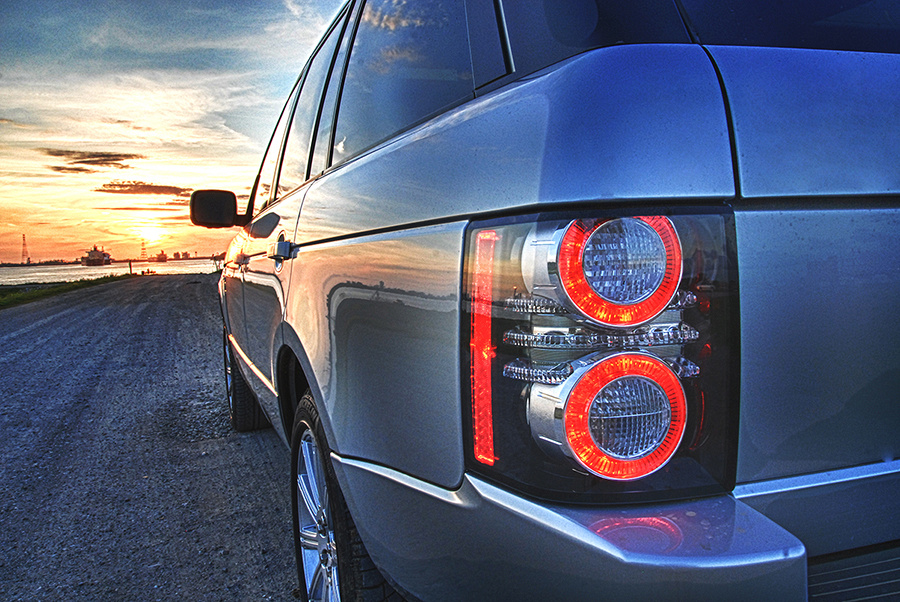
Unfortunately, most people drive Britain’s pre-eminent luxury SUV like wusses, gingerly crossing railroad tracks or sheepishly pulling into gravel parking lots at soccer games. Granted there is no mistaking the smooth-as-silk, luxury sedan-like ride or Range Rover’s smoking jacket-like interior refinements. But the allure for me has always been the fact that Land Rover/Range Rover's ironclad claim to off-road throwdown supremacy has been etched in stone for decades following numerous test-drive safaris through some of the world’s most unforgiving terrains. While I don’t have the North African desert or Panama’s infamous Darrien Gap at my disposal, I pride myself on finding creative ways to beat up Range Rovers (the Sport, Supercharged and Evoque, for instance) because quite simply they are the toughest SOB of an SUV ever manufactured. Favorite locales? The Bonnet Carré Spillway and southeast Louisiana's swamps, all of which routinely give my test Rovers a run for the money. No, I've never "lost" one, but I keep trying. Meantime the experience is always a helluva lot of fun.
3. JEEP TRICK: Jeep Wrangler Unlimited Sahara
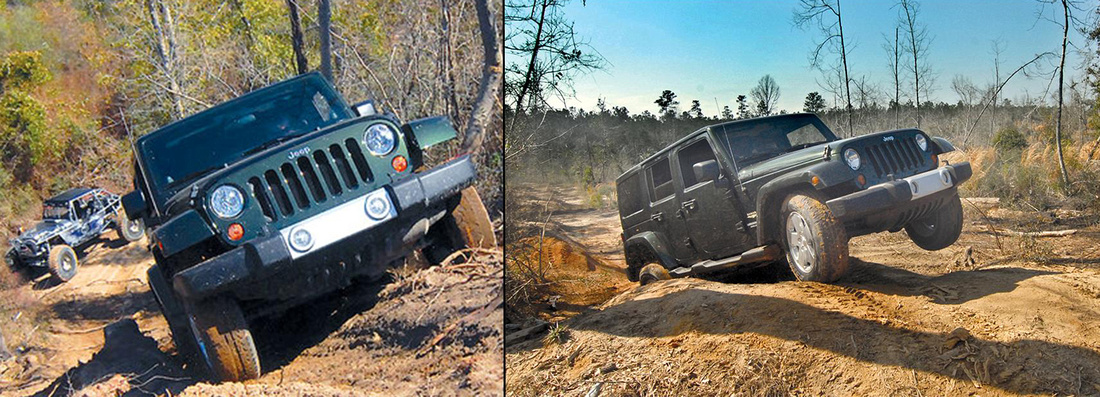
[NOTE: Yep that's me behind the steering wheel in the above pictures. Photo credit: Cathy Jacob Gaffney]
Boy did this city slicker and off-road virgin get lucky when a pair of living-large Mississippi guys agreed to take me under their wings for an afternoon of trail-blazing 4x4 fun in 250 acres of backwoods on a specially designed, six-mile trail with more steep hills and plunging doomsday pits than you can shake a barbecue pit at. My traveling companion screamed more than once as I bolted up inclines so steep the only thing we could see through the windshield was blue Mississippi sky. All of which is why this dirt-eating bushwhacker’s legendary (and hardcore) 4x4 prowess – due in no small part to its extra-low gear ratio that digs deep into the very mechanical soul of this vehicle -- is so well deserved. Every time I'm behind the wheel of a rugged Wrangler I feel like there isn't any obstacle I can't tackle. And isn't this why we like them?
4. SNAKE BITE!: Dodge Viper SRT-10
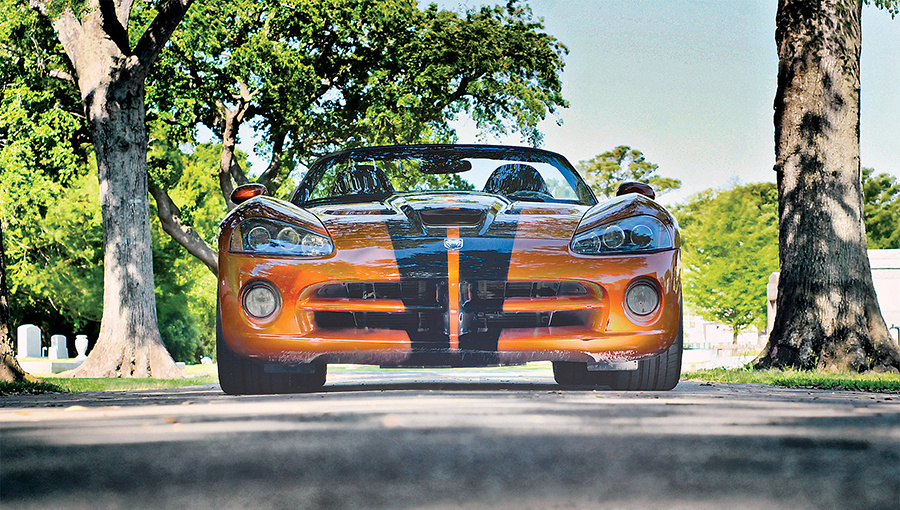 I quickly discovered that this American supercar requires the driver’s full attention -- one false move, Mr. Zippy, and you’re spinning into the Twilight Zone. When I pushed the two-seat convertible Viper SRT-10 with the top down and in third gear past 5,000 rpms, I experienced what it must sound like to have your head only inches away from a Pratt & Whitney 737 jet engine. It’s just insane metal machine music. Thanks to an 8.4-liter V-10 boasting 600 horsepower and 560 pound-feet of torque that can rip stars out of black holes, the Dodge Viper soon became the most primal, raw and (truth be told) scary-ass driving machine I had ever experienced. Consider: Without modern-day StabiliTrak and other traction control features, this rear-wheel-drive Godzilla of G-forces is a barely controllable hell-monster. Even though I had no intention of hitting the top-tested track speed of 202 mph, I felt as though I should have been wearing a helmet. (“I’m getting brain damage from the wind,” my traveling companion said in a long straightaway.) Perhaps it’s best to think of the $97,000 Viper, pure overkill in every great sense of the word, as a race car that happens to come with air conditioning and a cigar lighter.
I quickly discovered that this American supercar requires the driver’s full attention -- one false move, Mr. Zippy, and you’re spinning into the Twilight Zone. When I pushed the two-seat convertible Viper SRT-10 with the top down and in third gear past 5,000 rpms, I experienced what it must sound like to have your head only inches away from a Pratt & Whitney 737 jet engine. It’s just insane metal machine music. Thanks to an 8.4-liter V-10 boasting 600 horsepower and 560 pound-feet of torque that can rip stars out of black holes, the Dodge Viper soon became the most primal, raw and (truth be told) scary-ass driving machine I had ever experienced. Consider: Without modern-day StabiliTrak and other traction control features, this rear-wheel-drive Godzilla of G-forces is a barely controllable hell-monster. Even though I had no intention of hitting the top-tested track speed of 202 mph, I felt as though I should have been wearing a helmet. (“I’m getting brain damage from the wind,” my traveling companion said in a long straightaway.) Perhaps it’s best to think of the $97,000 Viper, pure overkill in every great sense of the word, as a race car that happens to come with air conditioning and a cigar lighter.
5. KIDS IN THE HAUL: Dodge Grand Caravan
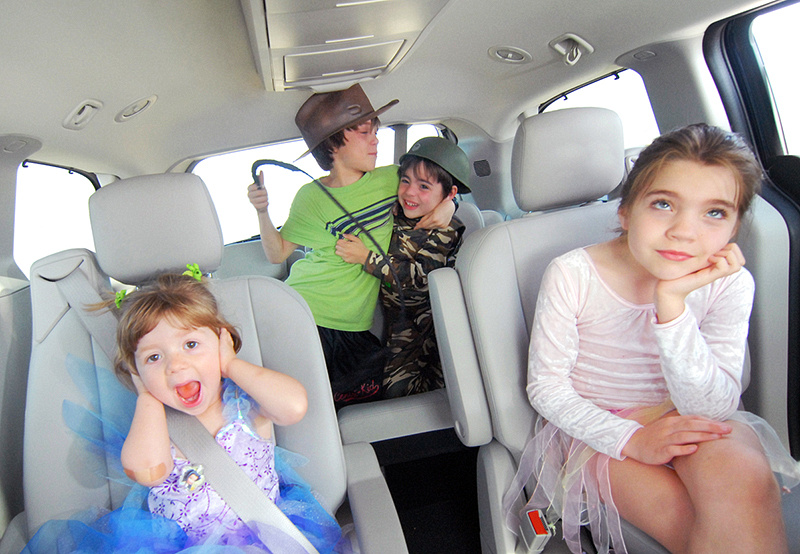
As a rule, I hate minivans as much as the next guy. But my attitude changed the day this non-parent spent with his young nieces and nephews in tow during a lengthy test drive in and around New Orleans that included the French Quarter (and, naturally, the occasional request to “cover your eyes, kids!”). Far from being a symbol of suburban inside-the-box thinking, I discovered that the Dodge Caravan offered a teachable moment. This is what I learned: In some ways a minivan can be like a rolling version of an early 20th-century Parisian salon: Kids’ Edition. Sure there is bound to be the occasional wrestling match whenever the pint-sized Ernest Hemingways and Pablo Picassos of the group get too tweaked on chocolate milk. But if you’re really lucky the gang’s equally diminutive Gertrude Stein will be on hand to enlighten you on everything worth knowing about herself. “I don’t swallow gum — ever,” the oldest niece said gazing out the window. “It’s just not me.”
6. SCREAM MACHINE: Porsche Carrera S
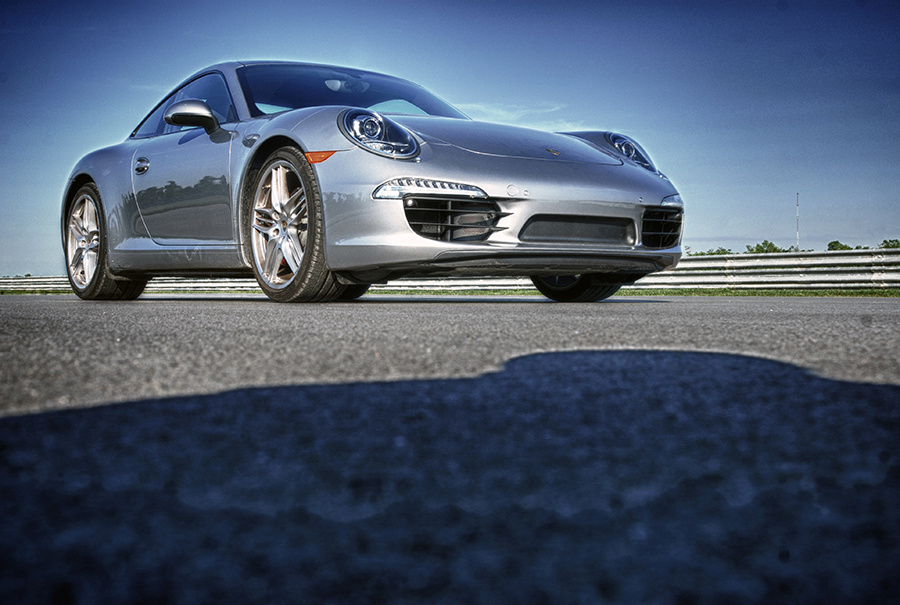
It was a dream come true when I got the chance to take the 400-horsepower, 3.8-liter Carrera S out to NOLA Motorsports Park (http://bit.ly/12x2JVv) for some Formula 1-like laps, especially when I hit the 2.75-mile straightaway and watched the tach needle fly to the 7,500-rpm redline during quick shifts into seventh gear -- all of which left even yours truly muttering a little prayer. Because sometimes enough simply ain't enough, I pushed the "more noise" button, which activated a much louder engine exhaust note, seemingly designed for those who have ever wondered what it would sound like to "drive" an F-18 Super Hornet. (Did I forget to pack a parachute?) After this kind of experience, the first words out of my mouth about this chariot of fire were not about the split-folding rear seats or the USB port.
7. HAY, TOUGH GUY: Ram 3500 Crew Cab
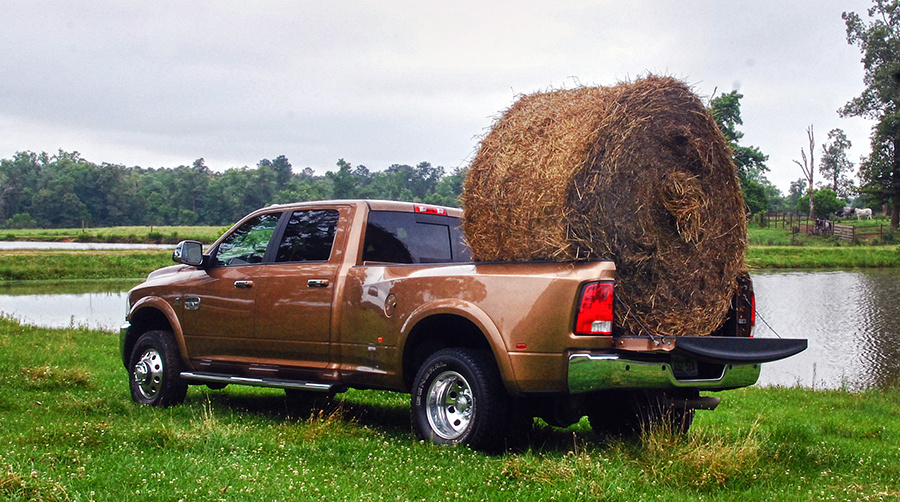
A loafer-wearing clown vivant like myself was virtually guaranteed to find a bit daunting the prospect of spending the week test driving a heavy-duty pickup truck the size of an adolescent woolly mammoth. All the more so after I factored in the Texas-themed leather upholstery with faux barbed-wire details and Laramie Longhorn badging on seatbacks and floor mats designed to look like oversized Western belt buckles. No, I’m not kidding. But my luck changed when a rancher who raises Brahmans at her farm agreed to let me come out and test the Ram 3500 top-trim Laramie Longhorn in its natural habitat – you know, like, doing tough stuff. The best part of the day was when I got the itch to test out its legendary payload capacity (2,790 pounds). With glee I watched as the jolly rancher used a tractor to drop a 1,700-pound bale of hay into the cargo bay before I tooled around the property testing the Ram’s whopping 800 pound-feet of torque, powered by a 6.7-liter, inline six-cylinder Cummins diesel engine. This Ram didn't even flinch.
8. BAVARIAN BEAUTIES – BMW 750Li and Audi A8

So, shoot me -- I couldn’t make up my mind about these two uber-luxury, European super tourers. But it’s for good reason. Both of these top-tier German sedans seem to literally float down the road with superbly tuned, adaptive air suspensions accompanied by orchestral engine notes so smooth and sweet that I swore I was hearing what I had tasted the first-ever time I tried cognac. Yet I also learned that the $99,000 BMW’s 4.4-liter turbocharged V-8 and the $89,000 Audi Quattro’s 4.2-liter V-8, can churn out road-hammering bravado at the drop of the pedal -- quickly (and effortlessly) surpassing 130 mph without the driving even knowing it. I loved the jaw-dropping luxury that abounds in both. The A8 boasts front-seat massagers and a 22-way climate-controlled leather driver’s seat. In the 750Li the horn doesn’t merely honk -- how déclassé — but rather sounds like a French trumpet blowing a crisp C-sharp note, while the Gentleman’s Function allows the driver to control the front-passenger seat ("More lumbar support, Frau Blücher? Please, allow me").
9. BOY MEETS GRILLE: Chrysler 300C
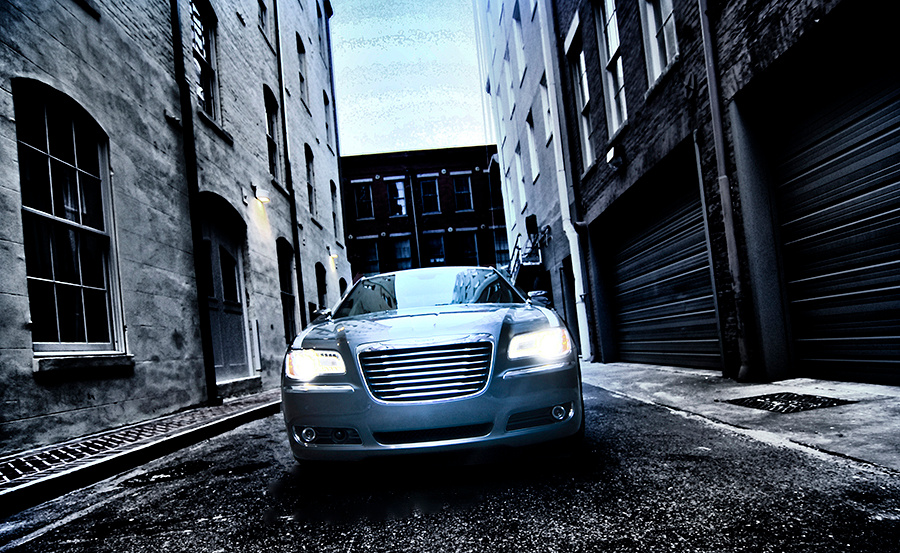
When did Uncle Chrysler Golf Pants become so freakin’ cool? This luxury urban road machine just oozes after-midnight sex appeal. From the 300C’s classically styled, seven-tier waterfall grille to its masculine road presence and muscular bravado in all the right places, this $43,000 entry-level luxury sedan is one smooth jewel of a highway cruiser and back-a-town trawler thanks to its brawny 5.7-liter Hemi V-8. For me the 300C is a succinct pleasure to drive in part because it’s an unabashed muscle-meets-luxury footprint of street-wise cool in an American landscape seemingly dominated by cute little sedans and curvy crossovers, most of which haven’t boasted that new-car testosterone scent in years. Truth be told, this week I realized just how much my own everyday car by comparison now seems like a little pink tricycle (briiing, briiing!).
10. PURR-FECT STORM: Jaguar XKR-S Convertible
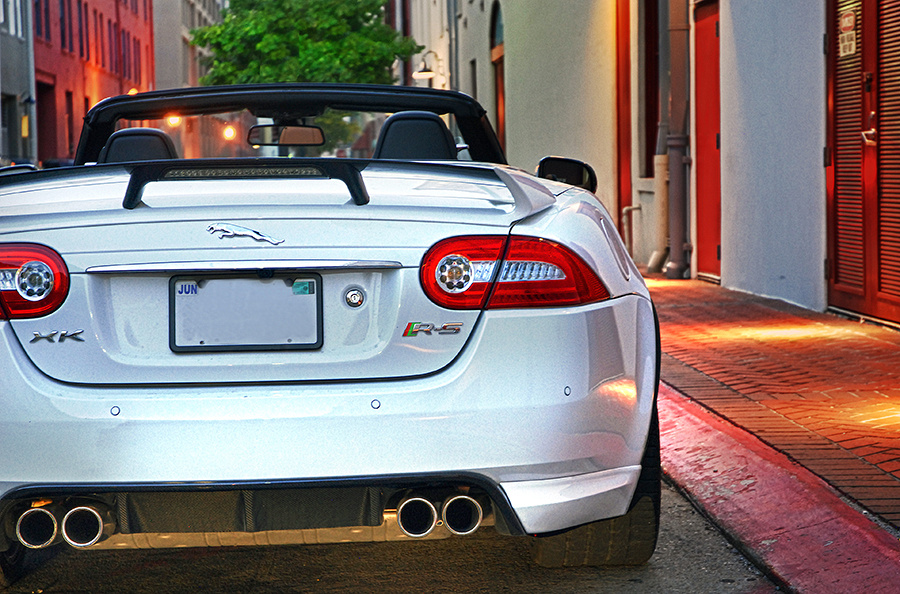
Jaguar in so many ways isn’t merely a luxury performance car but an extension of British culture itself. Especially if you’re driving the sleek and sexy XKR-S, with its oh-so-English Bowers & Wilkens 14-speaker audio system while listening to a BBC World Service program on the history of pigeon racing.
Interviewer: “Do you think the Queen needs to get involved in this?”
Guest: “I think the Queen is already very, very keen on pigeons.”
With its feline-sleek, Aston Martin-ish bodylines, this eye-catching $150,000 kitty plays for keeps. From its handsome, double-stitched leather dash, accented with burnished and textured alloy trim, to its “piano black” polished wood accents and elegantly traditional black-and-tan palette, the interior of the XKR-S is a fitting tribute to understated British sensibilities. Ironically, the powerplant in full throttle more resembles a take-no-prisoners American muscle car with its growly, in-your-face boisterousness, thanks to a 5.0-liter supercharged V-8 that spits out 550 horses and is capable of a 0-to-60 sprint in 4.3 seconds. Top speed: 186 mph. Blimey! All I can tell you is that I loved every nanosecond behind the wheel.
Next week: Part II – my favorite automotive photo shoots!
]]>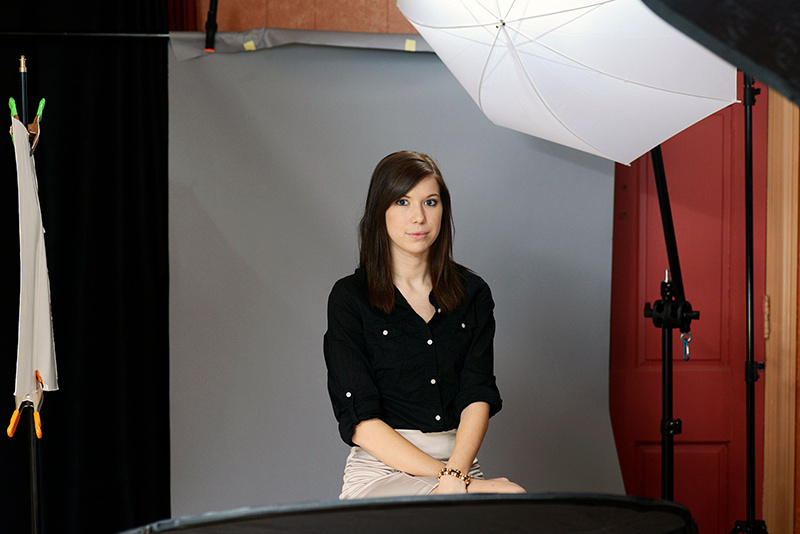
What do you think happens when a restless photographer makes a few calls asking friends and family if anyone needs a good portrait of themselves? In my case, it turned into a headshotpalooza.
First, the backstory: Last week a friend and fellow shooter asked about my lighting set-up for the headshot session I did for my good friend and restaurateur Xavier Laurentino (a mix of shots for which many of you voted on my Facebook page -- gracias!). This so happened to coincide when Patti, the wife of a colleague of Cathy (my wife), was looking to get an actor’s headshot of herself (and I was all too happy to oblige). So, I decided the best way was to show (not tell) my photog-friend how I do it, even if it meant turning my smallish, galley-shaped living room into a makeshift studio for the day. Since I was going to have everything already set up, I called everyone I knew to see who needed a headshot. Before long I was booked for the afternoon. Then I spent the morning moving furniture out of the way to make room for equipment I customarily use for such occasions:
-- 12-foot-by-10-foot backdrop system with crossbar from Steve Kaeser Lighting Systems (http://bit.ly/16l9UhW) and neutral-gray backdrop paper.
-- A trio of off-camera strobes (each triggered by infrared wireless remotes from Yongnuo http://bit.ly/YHl8uV); a 24"-by-24" softbox (with Nikon Speedlight SB-800) for my key light; a parabolic reflector umbrella with Speedlight for fill light; and a shoot-through white umbrella with Speedlight for hair light.
-- A 32-inch diameter 5-in-1 Interfit reflector panel (http://bit.ly/WZWyoq), positioned directly in front of my subjects, to bounce light back up to the subject’s face to minimize under-nose and under-chin shadows. I also clamped a simple white form-core panel on a light stand to the right of the subject’s face to reflect additional light.
Of course, a major problem always presents itself whenever attempting to turn my living room into a studio: Light pouring through the windows. Solution? I used a black backdrop to drape the window behind the main gray backdrop to block out any direct-into-the-lens glare. As for the light coming in from the trio of large windows on the left-hand side of the living room, I decided to simply ramp up my shutter speed (so the camera wouldn’t *see* the light at all) and then adjust my off-camera strobes so that they were doing all of the work of actually lighting the room. This you can see in the following three pictures. The first picture shows the living room with ambient light only (no strobes on):

The next image shows how my *studio* looked after I clamped down on the shutter to eliminate the outside ambient light while metering on my trio of trusty strobes. But, as you can see, the room is now a bit too dark.
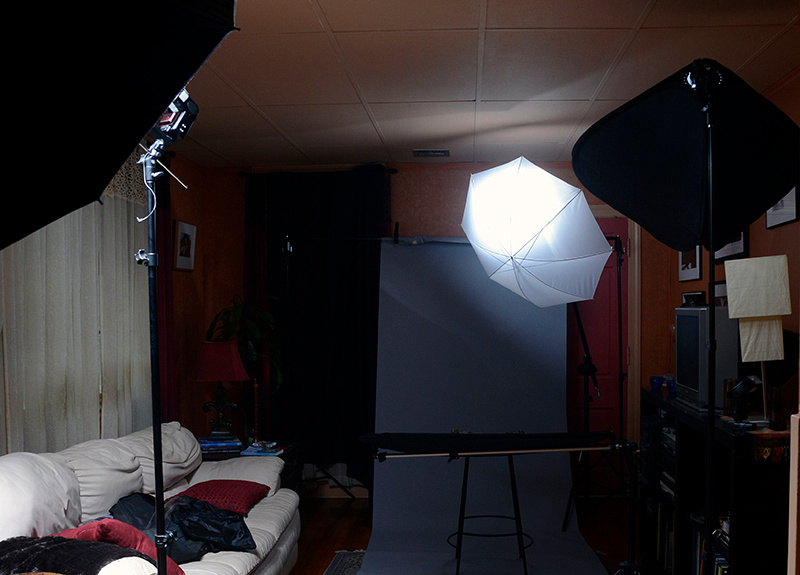
In the next image, I added a fourth strobe on the far right-hand corner of the bookshelf -- aimed at the ceiling away from where the subject will be sitting -- just to create a little extra bounce of light. It did the trick.
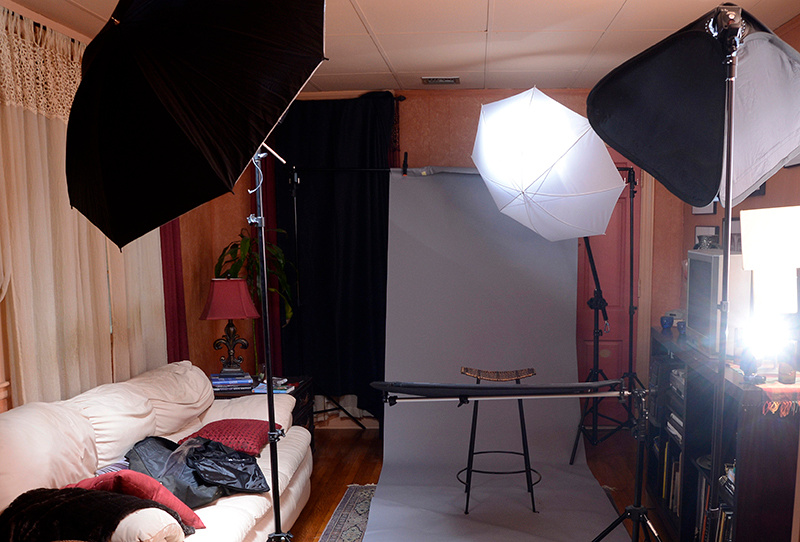
Now we were good to go.
HEADSHOTS 101
Whether you're a shooter or aspiring actor, it’s important to keep in mind that an actor's headshot is a completely different animal than a modeling headshot. For actor headshots, Bozo no-nos include:
1. Using specialized equipment like beauty dishes or applying too much make-up to create a glamour-shot look. Talent/casting agents and directors want to see how the actor really looks in everyday life, not while nightclubbing or attending a performance at the Lincoln Center.
2. Going for the gusto couture-wise. Again the point is for the actor to appear as natural as possible (plus with a headshot you’re not going to see much of the clothing anyway).
3. Re-touching the image to the point that it looks fake.
4. Too much smiling (again many talent agents and directors prefer a natural, relaxed look, not a smile-on-command appearance).
5. Artistic/atmospheric lighting. An actor's headshot is not the time for a photographer to show off his best Rembrandt or chiaroscuro lighting techniques (best saved for modeling headshots). Agents and directors want it simple -- not boring, mind you, but unfettered. Lighting is the perogative of the director, lighting crew, et. al on a movie set.
6. Full body shots? Puh-leeze. Show up to an acting audition with one of these as your "headshot" only if you wish to experience how quickly movie professionals do not suffer fools easily.
As for the equipment I *did* use, my 90mm 2.8 lens is a workhorse of beauty when it comes to headshots -- the glass is razor sharp and the bokeh (depth of field) is excellent. It’s not the fastest glass in the world, but when you’re doing headshots, time is a luxury both the subject and photographer should grant themselves in abundance. Generally my camera was set on ISO100 with a shutter speed of 1/250.
The next image shows how one of the afternoon's numerous headshot subjects, Bri, looked in full frame before cropping, with the hair-light umbrella, white foam-core panel (to subject’s right) and Interfit reflector panel (directly in front, angled toward subject) all visible. The lighting is even, the skin tones spot on and the expression natural and relaxed. Looks fairly good.

When Bri changed outfits and added pigtails (she wanted an alternate headshot for roles that might call for an actor with a youngish look), I stepped up on a ladder for the shot and had her lean forward slightly, shoulders turned, so I could best accentuate her great eyes. Shazam! Following is how the image looks when cropped.
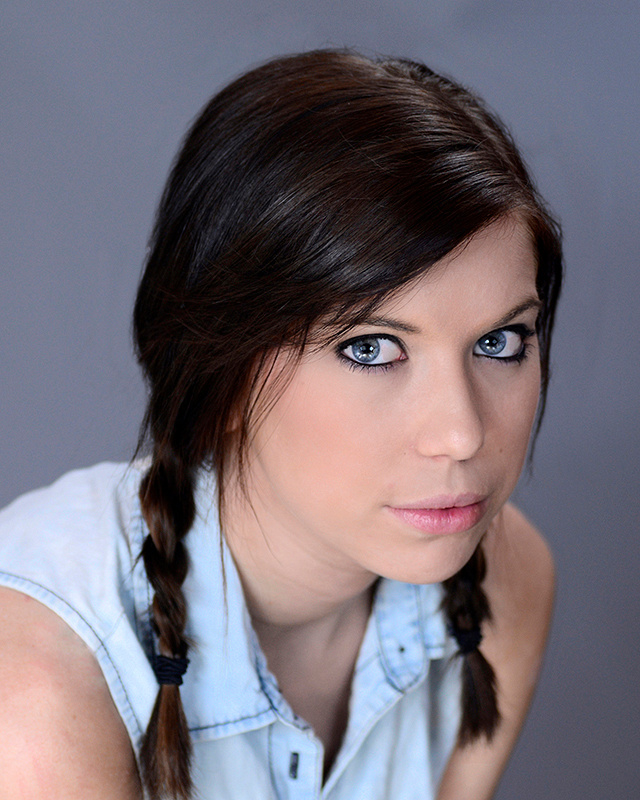
See the difference a slight change in camera angle and body position can make?
As for Patti, another inspiring actor and reason behind my afternoon headshotpalooza, we managed to get two completely different looks from her. The first I half-jokingly referred to as her “broadcast news, investigative reporter look.” I had her lean slightly forward to create a look that draws the viewer into the image. The second is to me, well, amazing -- head slightly tilted back, creating a softer, carefree, more accessible look. But these two images reveal in part the hallmark of any good actor -- namely, the ability to conjure different looks at the drop of a hat (and a photographer's suggestion) and make them look convincing.
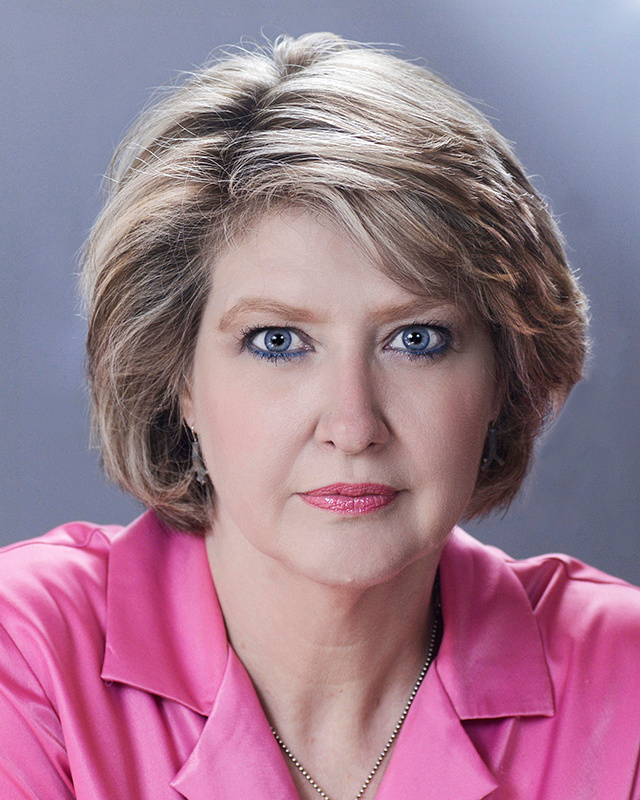
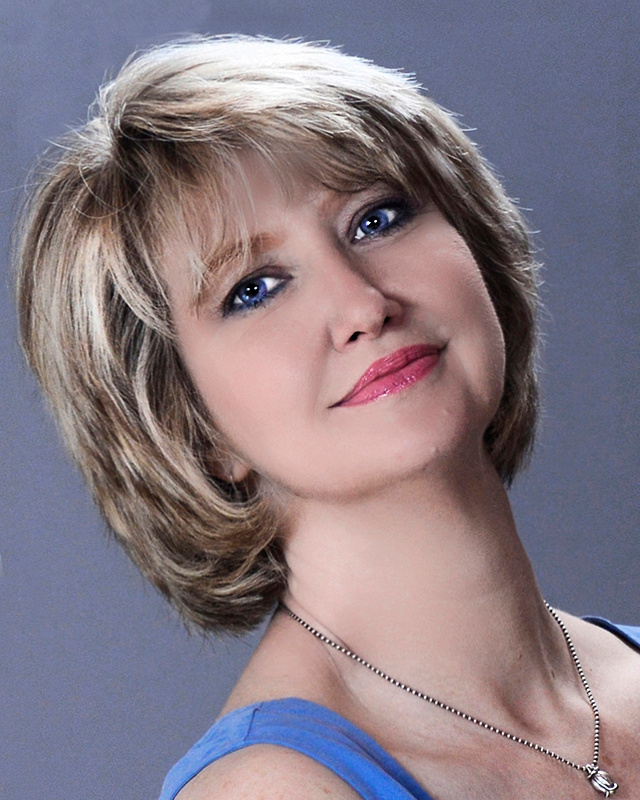
To all of my headshot subjects, thank you for the privilege of photographing you on your journey to the Big Screen. See you on the red carpet ...
]]>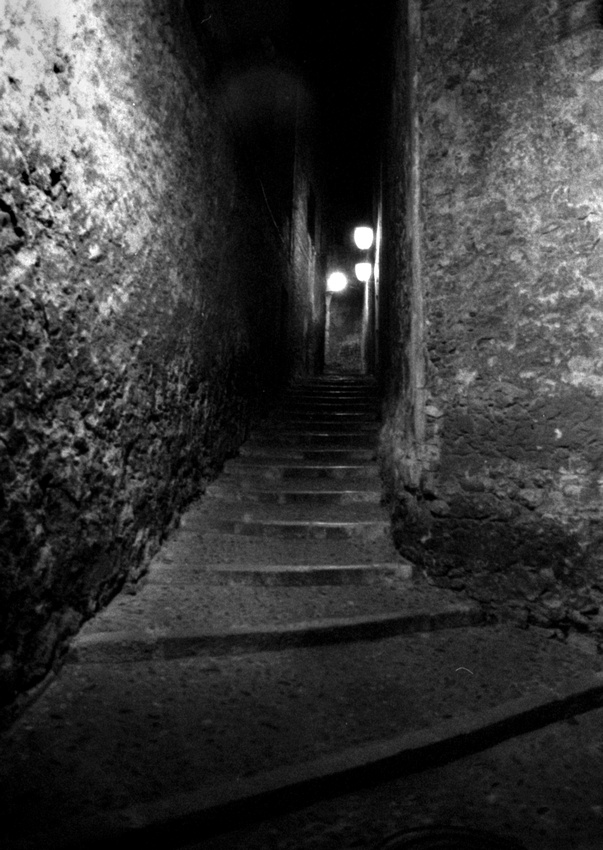
GERONA, Spain -- It was shameful fun watching as my traveling companion, a self-styled connoisseur of foreign tongues, hit a communication impasse with the white-haired woman at Les Voltes, a tidy shop specializing exclusively in Catalan-language books. My friend was attempting to use her best Spanish to try and ship back to New York a set of learn-at-home Catalan-language cassette tapes. But the bookseller didn’t speak Spanish -– or, more accurately, refused to. She spoke only Catalan.
Gerona native Assun Alsina Sureda came to the rescue. “I can help translate for you,’’ she said in English.
Meantime, I busied myself browsing a drawer of neatly folded Catalan flags bearing the traditional signature coat of arms of Barcelona’s medieval counts: four vertical red bars against a yellow background. In another drawer, though, I found identical flags but with one significant addition -- a single yellow star. This I soon learned was a nose-thumbing symbol to the rest of Spain of autonomous Catalunya's muted aspirations for recovered nationhood.
“Catalunya has always seen itself as a country within a country,’’ Sureda said glancing over my shoulder. “Most American visitors would never dream that a beautiful vacation paradise like Costa Brava had such a politically subversive side.”
Nowhere is this more evident than in Gerona, population 96,000 and the capital of the Costa Brava region of the Catalunya province of Spain's northeasternmost coast, a city renowned for its medieval quarter and ancient history that nearly rivals that of big-brother Barcelona. In Gerona, many if not most residents are bilingual, fluid in both Catalan and Spanish. But the language -- and culture -- of choice clearly is Catalan. This was apparent the evening we ducked into the city's upscale Boire restaurant, where the multilingual menu (highlighted by zarzuela, a simmering fish stew and Spain’s answer to French bouillabaisse) was in Catalan, English and French, but not Spanish. This idiosyncrasy has perplexed more than a few first-time American visitors to Gerona after spending time in Spanish-speaking Barcelona, Catalunya's hip, cosmopolitan seaport capital on the Mediterranean 1-1/2 hours away.
“Not unlike the American South,” said Sureda, “we Catalans are fully acculturated into a larger national identity, yet we are also proud of our distinct culture not the least of which is our centuries-old language.”
All of which makes better sense in light of the fact Catalunya, founded in the 10th century, was once one of the largest and most powerful kingdoms in the Mediterranean, stretching north into southern France and as far south as Sicily (where many people still speak Catalan). Five centuries later Catalunya became one of many nation-states kingdoms absorbed by unified Spain following the marriage of Europe’s then-newest power couple: King Ferdinand and Queen Isabella.
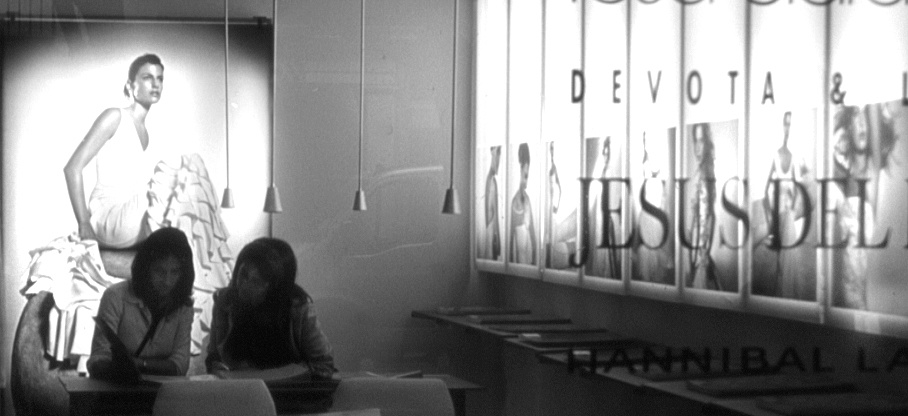
During the 1930s Spanish Civil War, perhaps best known to Americans through Ernest Hemingway's acclaimed novel, "For Whom the Bell Tolls," most Catalans including Sureda’s father sided against the ultimately victorious Spanish general-turned-dictator Francisco Franco. After taking control of Spain, Franco set to work settling scores in Barcelona and throughout Catalunya, Sureda explained over espressos on a sunny afternoon at a tapas bar on Placa Independencia, a short walk from Gerona’s medieval Jewish quarter across the pedestrian bridge that spans the River Onyar. Franco banned the Catalan language, stole the best artwork from the province's museums to be shipped to Madrid, and imprisoned countless political enemies, including Sureda’s father.
“Franco destroyed his life -- following his imprisonment, my father came back home to find most of his family had perished,’’ Sureda, 59, who manages a traveling theater troupe, said softly. “When Franco died in 1975, my friends and I bought cases of champagne and had a party that lasted three days.’’
Unlike their similarly independence-minded Basque counterparts, Catalans as a rule do not resort to violence but instead prefer the kind of minor civil disobedience seen in graffiti bearing phrases like “Insubmissivo, Independencia!” and “Catalunya is not Spain!” And each year on Sept. 11, the national holiday of Catalunya known simply as “La Diada” (The Day), it’s not uncommon to see Catalan flags bearing the illegal yellow star of independence hanging from wrought iron balconies.
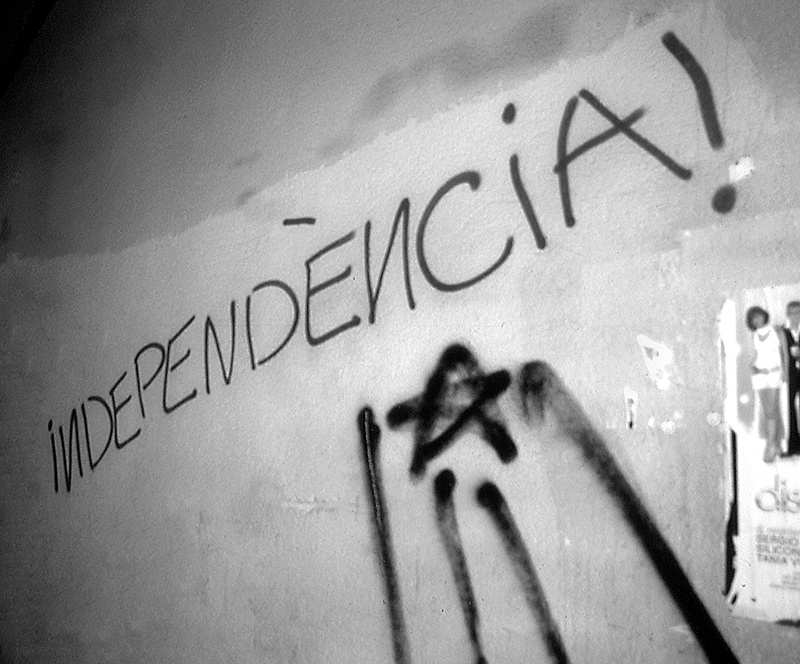
THE ‘CALL’ OF HISTORY
Compared to bustling Barcelona’s heavily touristed medieval Barrio Gothic, Gerona’s ancient past quietly reveals itself during a morning stroll along Carrer de la Forca in the Jewish quarter, or Call. A notebook-sized plaque on one stone wall commemorates Rabbi Moses Ben Nahman, the 13th-century Talmudic scholar and Gerona resident better known to Jews worldwide as Nachmanides, father of the faith’s mystical Cabbalist movement.
Like most Sephardic barrios throughout Spain, the Jewish people and culture of Gerona literally disappeared after Ferdinand and Isabella issued their Edict of Expulsion in 1492, forcing non-Christians to convert or leave the country. Ironically, the Call today is among the most important Jewish quarters in Europe, this in no small part due to the discovery years ago of ancient Hebrew manuscripts found hidden in the frayed binder of a 500-year-old municipal records book. The tattered documents, dubbed “the Gerona Papers,” shed new light on once-erased daily Jewish life in this medieval city. But this wasn’t the only explanation for the early birds waiting in line one morning for the doors to open at Gerona’s newest museum, Bonastruc ca Porta Centre (the Catalan name for the Call). Visitors were eager to view the museum's rarest artifacts, culled from local synagogues and Jewish homes as a result of recent excavations of this 1,000-year-old city. Construction crews often uncover historically important relics during routine home renovations. This proved a mixed blessing for one family that saw work on a new basement playroom screech to a halt for nearly three years -- and counting -- while a task force of archaeologists, Hebrew scholars and university historians painstakingly studied and removed fresh links to medieval Gerona’s formerly hidden Jewish past.
“Exactly how long does it take to excavate a few old synagogue pews?’’ the apparently exasperated homeowners asked in a letter to the editor of Gerona's daily newspaper.
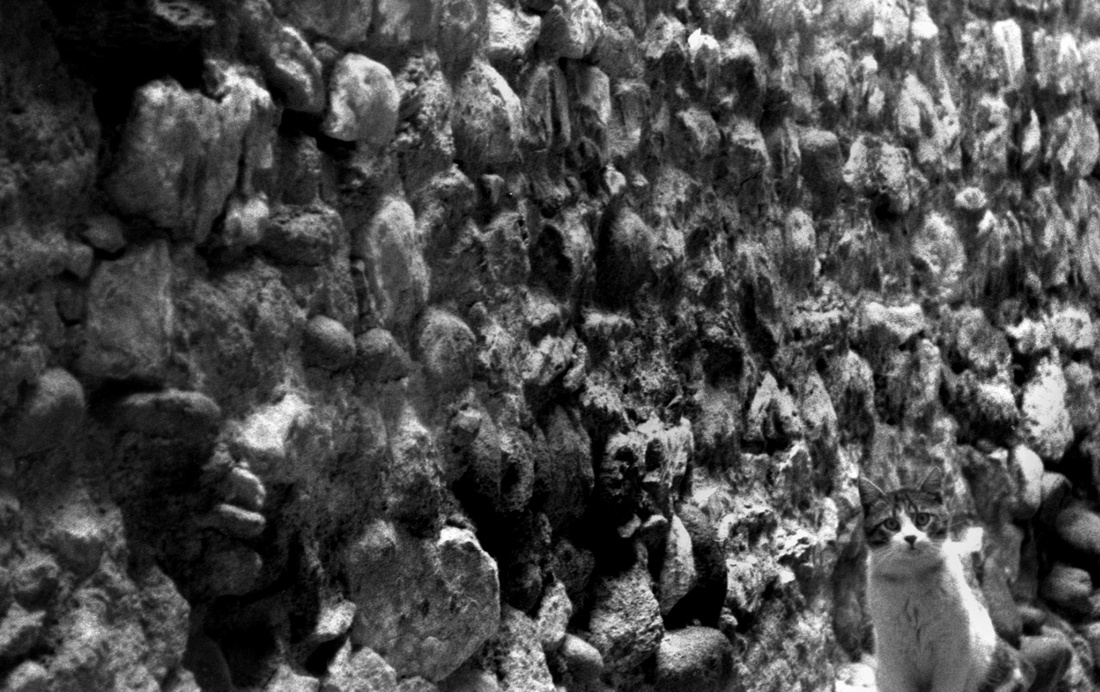
PATHWAYS TO THE PAST – AND CATALAN CUISINE
Half-eclipsed by shadows, the Call is a rabbit warren of meandering cobblestone streets. Some lead past the old Arab baths and shopkeepers seen washing storefront windows in the early morning as sleepy-eyed school kids in uniforms amble past. Others converge at the bottom of the 99 steps tourists and the faithful climb to enter the Cathedral de Santa Maria, a Romanesque shrine dating to 1038. Yet another dog-legs near the entrance to the grounds of the 900-year-old Sant Pere de Galligants, a former Benedictine monastery whose fairytale-like labyrinth of old stone stairways and hidden gardens seem heaven sent for a secret romantic rendezvous -- or, perhaps, a moment of solo meditation.
Sooner than later everyone winds up at Rambla de la Libertat, Gerona’s people-watching promenade of fashion-forward boutiques, gelato vendors and alfresco cafés. Peckish from our strolls, we opted to dine on a familiar quartet of signature Catalan dishes: fideua (paella with angel-hair pasta instead of rice); escalevada (roasted eggplant and red peppers served wading ankle-deep in olive oil); pescaditos fritos (crispy fried fish, eaten whole); and patatas alioli (bite-size cubes of potatoes delicately fried in olive oil and served drizzled with garlicky mayonnaise). All of which was washed down with glasses of Segura Viudas, our favorite brand of Catalan cava, or sparkling wine, for which this region is justifiably famous.
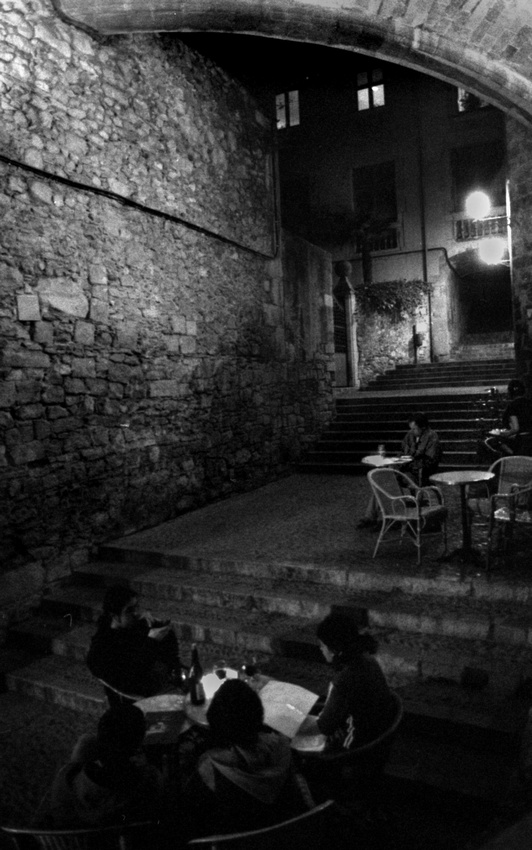
Hands-down the most visually sumptuous stage for after-dark alfresco dining is Le Bistrot, tucked midway up Carrer de Sant Domenec at the intersection of two ancient stone stairways, worn smooth over the centuries and bathed by gaslamps in the shadow of the Old Palace and the Church of St. Sacosta. Several nights the midnight hour was framed by twinkling stars and flickering table candles, punctuated by wine from Catalunya's L’Emporda region and crepes plump with Manchego cheese, black olives and (thankfully un-salty) Spanish anchovies.
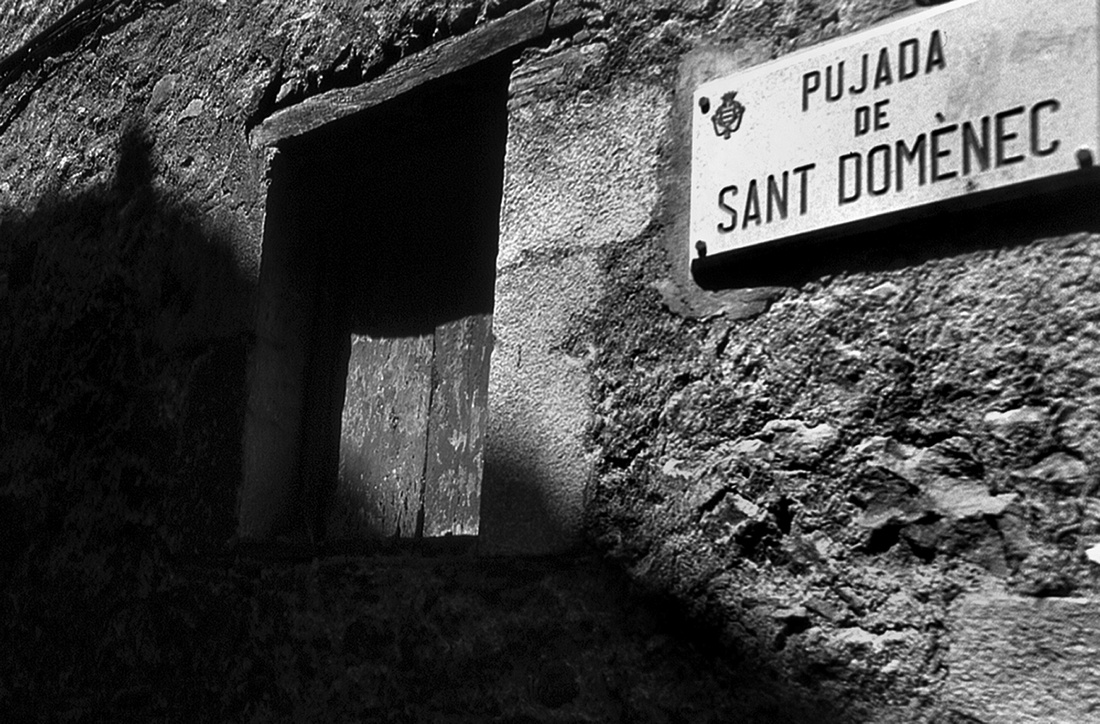
But it was during our last day in Gerona that found us savoring the kind of groundbreaking cuisine for which Catalunya has become famous. This in no small part is due to Ferran Adrià, the world-renowned chef and gastronomic mastermind of El Bulli, which until its recent closing received up to 3 million reservation requests each year and sat a mere 50,000 guests. This afternoon our dining den of choice was El Celler de Can Roca, a Michelin three-star establishment overseen by Joan Roca, who had studied under Adrià at El Bulli for several years before opening his own restaurant in Gerona, and brothers Jordi and Josep.
Wave after wave of unimaginably inspired creations poured forth from the kitchen to our table. But none as memorable as the mango and goat cheese ravioli with black olives and truffles, and the veal-steak tartar, served with a quartet of turmeric, cumin, paprika and pepper dipping spices. Capping this culinary oeuvre was -- if you can believe it -- foie gras of pigeon.
“Ocell salvatge,” our waiter said, explaining the dish in a language that was still foreign to my ears.
Sureda sensed my confusion. "He means 'wild bird,'" she said grinning, "but in Catalan, of course."
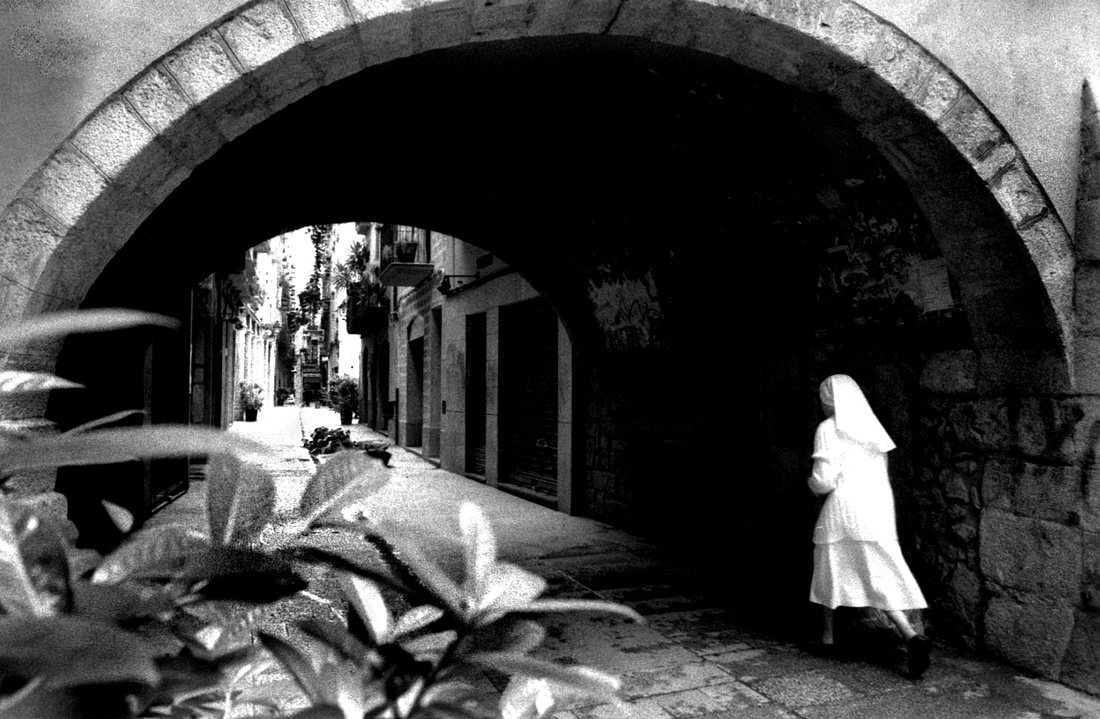
]]>
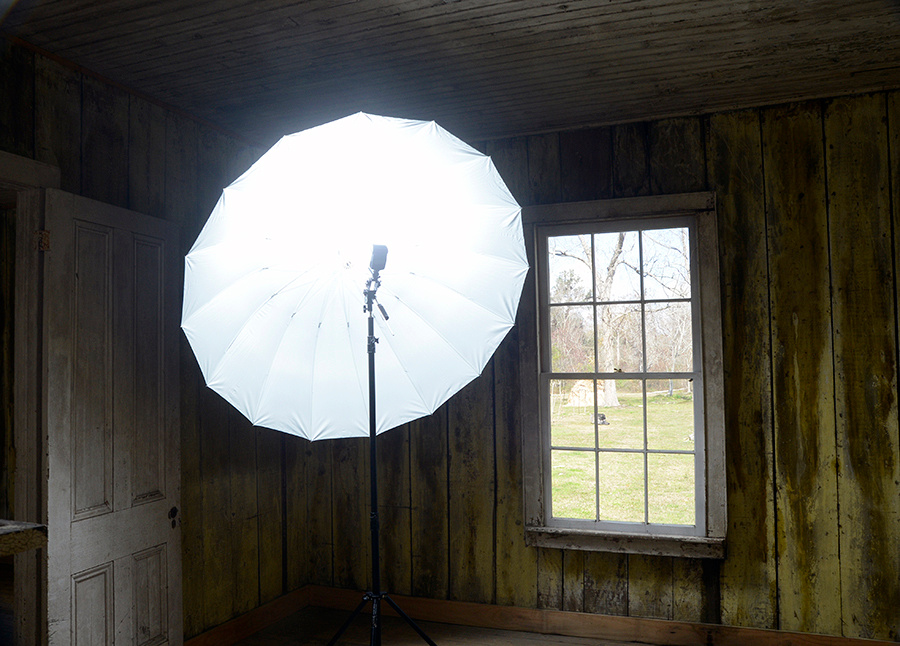
It isn’t often I get the chance to turn midday into midnight. All the more so while shooting inside a historic, century-old, former Isleño home, while working alongside a natural model like Rachel Jacob and a movie set-savvy professional like Rachel Rickoll. In many ways it was a photographer’s dream come true. Rachel J. has pulled duty as a production assistant in numerous local films and recently worked as an associate producer in Atlanta, while Rachel R. can be found working as a second assistant director on feature-length movies filmed in Louisiana. Both were on hand to also videotape the shoot for a special project (actually, a video for me to use as a promotional tool -- how fantastic is that?).
Turning daylight into midnight was the challenge the day of the shoot inside the Cresap-Caserta House, built in 1910 and found on the bucolic tree-lined grounds of Los Isleños Museum (www.losislenos.org), a living-heritage site of local Spanish-Louisiana culture, located on Old Bayou Road in lower St. Bernard Parish about 30 miles from New Orleans. Like most Creole architecture of the day, the Cresap-Caserta House is basically a box-shaped dwelling absent of hallways and with all four rooms connected by doorways. As a result, during the day it’s as bright as hell inside -- ideal for early-1900s families living without electricity but problematic for a photographer aiming for a nighttime vibe.
But if the Cresap-Caserta House is among my favorite shooting environments, chalk it up to its rich architectural aesthetic and the drop-dead gorgeous patina of its antique walls and floors. Unlike several of its brethren Isleño structures that have relocated to the museum grounds and painstakingly (and historically) restored during the past three decades, the Cresap-Caserta House has thankfully been left untouched. Its original wooden walls and plank floors envelop visitors with a warm, ghostly memory of the past. Hollywood movie production companies typically pay mega-bucks for the privilege of shooting inside such an authentic and atmospheric architectural gem. Fortunately for me, I had the blessing of Bill Hyland, executive director of Los Isleños Museum, to conduct a day-long photo shoot inside this historic structure.
To compete against the close proximity of so many vertical lines in the form of numerous doorways, I had Rachel dress in a flowing white dress. Nothing fancy, mind you, as we weren’t after a glamour or high-fashion look. Instead I wanted the dress to create fluid and smooth organic lines of suggested movement. We kept Rachel’s hair natural and free-flowing; her makeup to a minimum.
Since we started shooting shortly after noon, I needed to shut down the ambient light pouring through the building's six windows in order to create my “midnight” atmosphere. To accomplish this I positioned an off-camera Nikon Speedlight in each of the four rooms and modified each strobe with a shoot-thru umbrella, an 82-inch reflective parabolic umbrella, a 24”-by-24” softbox and a snoot (with 20-degree grid). Speedlights were triggered with my cheapy, Yongnou wireless flash triggers (http://bit.ly/133bdR4). A little fiddling was required to blend the lighting in each room -- I wanted strong highlights in the room in which Rachel was standing; a subtle blend of midtones and shadows in the adjacent rooms through which I would be shooting. Then I adjusted my camera settings until I achieved the effect of nearly zeroing out all of the ambient light while letting the off-camera strobes do virtually all the work of producing the magic midnight hour. I rigged my Nikon D800 with a 28-75mm lens and shot mostly with the following settings: ISO 320 and 1/80 shutter speed at f/10.0 aperture.
Next image is a diagram I created to show the respective placement of lighting used for the photo shoot and the direction/angle of the camera:
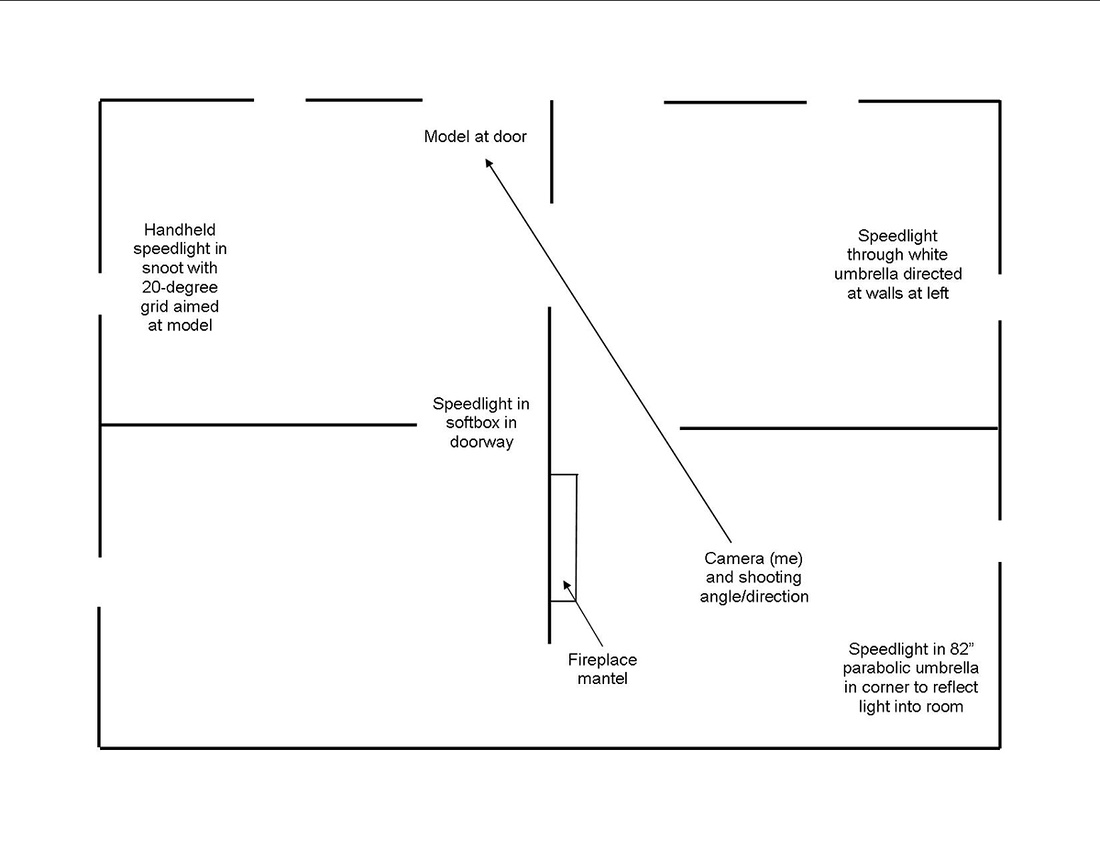
The next image shows the photographer’s POV of the composition of the shot I wanted -- this from the previous week when I swung by the Cresap-Caserta House for some pre-shoot reconnaissance. My goal was to capture as much of the old Isleño house as possible, with Rachel standing at the door at the furthest possible point in the distance, her dress slightly illuminated. I wanted the scarred and barren, patina-rich walls and floors to lead the viewer's eye directly to the woman in the flowing white dress.
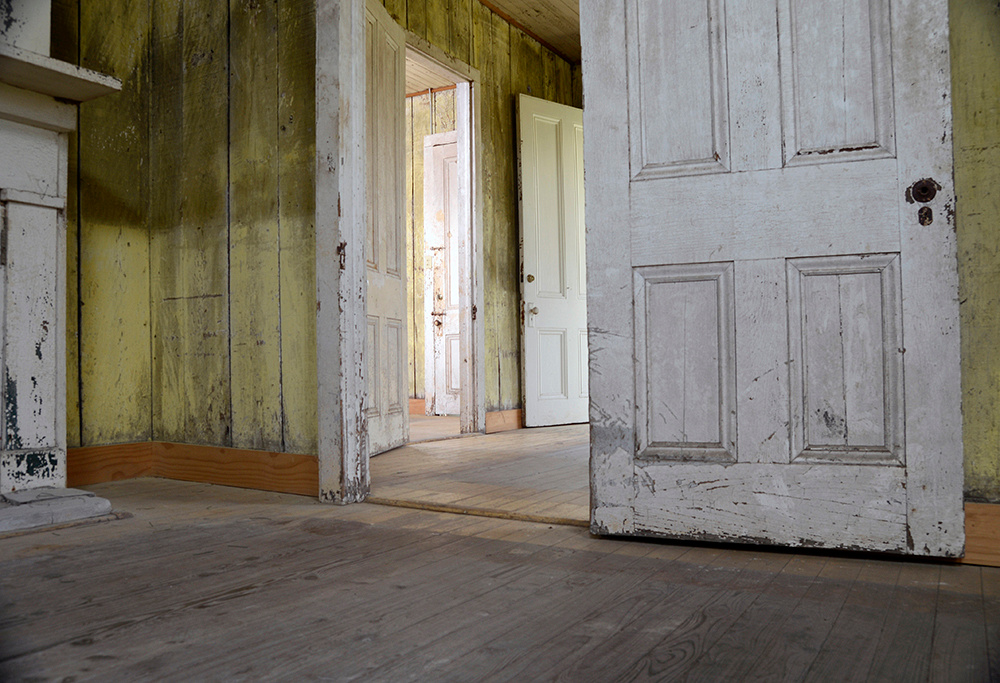
In the final image below, the ambient and off-camera lighting is balanced to achieve my midnight-blue atmosphere -- and, equally important, our model Rachel is posed at the front door in her flowing white dress, adding essential narrative and mystique, suggested movement and lyricism to the beautiful old house. By comparing the image above with the photograph below, it's easy to see why my model was worth her weight in gold.
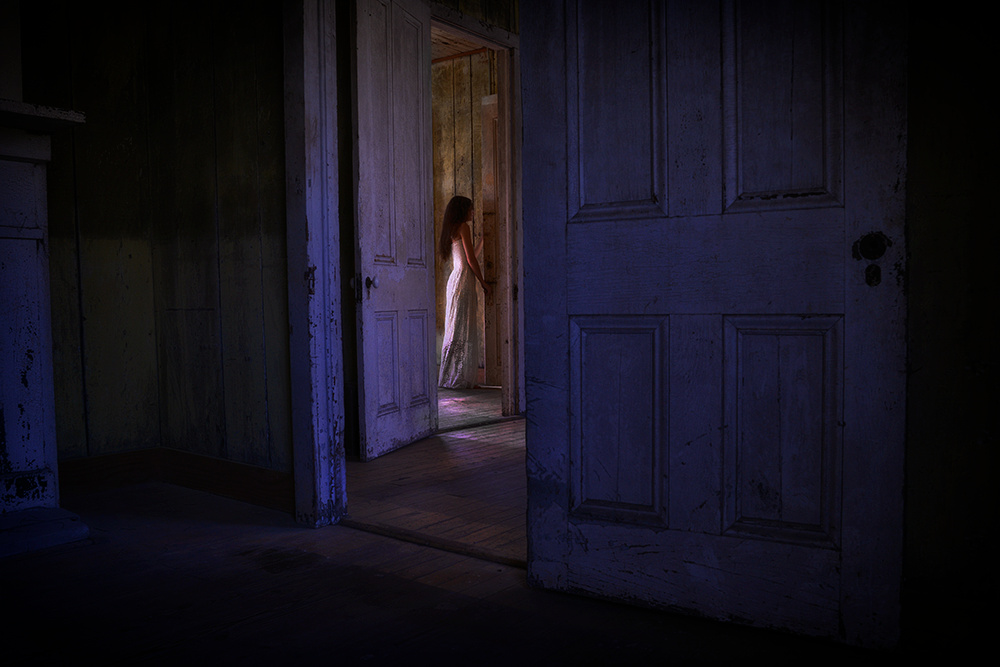
Once we had the lighting down (thanks in no small part to Rachel Rickoll, who offered great suggestions on how to tweak and refine the illumination), only minor modifications were needed as Rachel Jacob moved throughout the rooms experimenting with various poses. In the photo below, we used only two lights: a hand-held Speedlight with snoot (left, off-camera) angled from high down toward Rachel to add a noir-like look to her pensive expression, and a softbox-modified strobe in the far-back room (near the door) to backlight the set. We turned off the strobe in the parabolic umbrella that was in the same room in which Rachel is posing to avoid competing with the snoot.
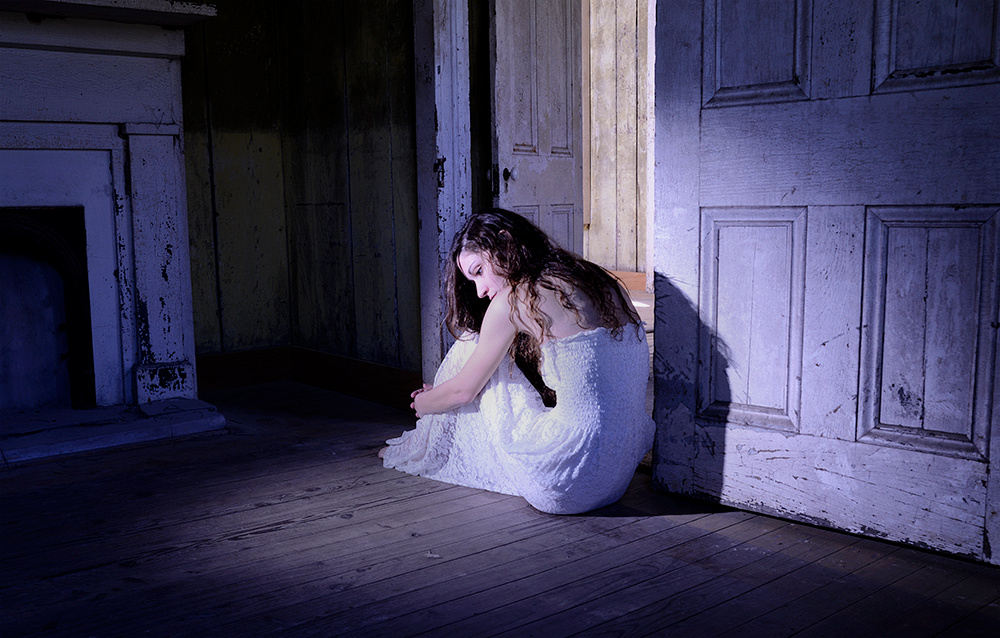
Later Rachel wanted to experiment with what she jokingly dubbed her “Clockwork Orange” get-up (black pants, white blouse, mask and hat) for what turned out to be another creative highlight of the day’s shoot. Of all the images from this wonderfully imaginative and playful series, the one that appealed to me the most was the photo I snapped of Rachel standing motionless, her eyes closed -- her wall shadow looking as though it was moving before she did.
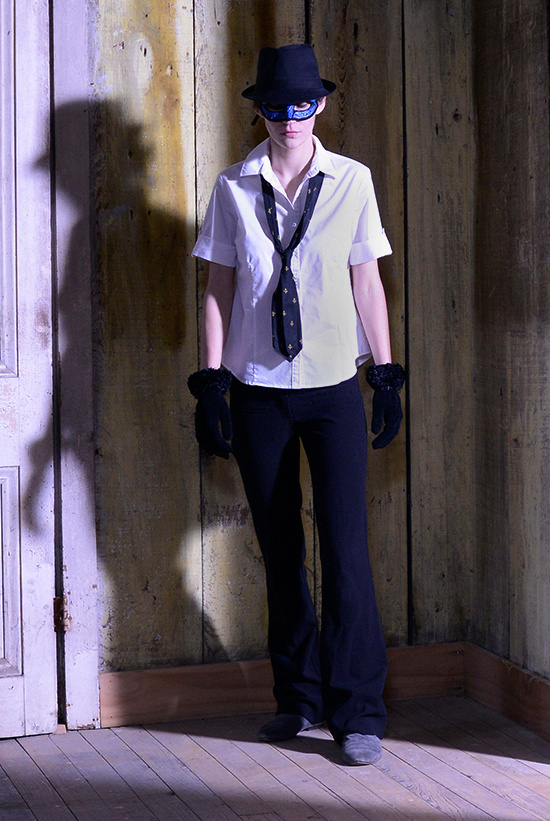
Unfortunately I can’t release the rest of the images because I’m holding them for a special project. But this is what I learned from the shoot: the joy of any true collaboration is the creative ebb and flow of ideas that help push the envelope and often result in stunning and unexpected results. To this end, working with Rachel Jacob and Rachel Rickoll proved a blessing in disguise (and not just the "Clockwork Orange" variety). C’mon, how many photographers get to work with a pair of young and dedicated, talented movie and film-production pros – one of whom happens to also be his model -- who bring their A-game to the set? Color me grateful.
]]>
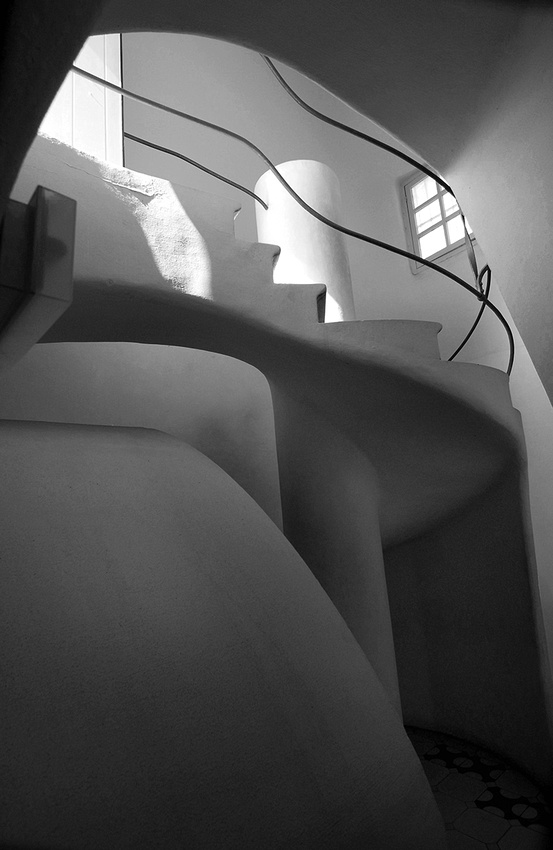
(A detail shot of the curvilinear interior stairwell of Casa Batlló in Barcelona, photographed during my third trip
to the Mediterranean seaport and capital of Spain's Catalunya, provides a near-endless photographic study
of contrasting light and shadow thanks to two main sources of natural illumination -- the top-right window
and top-left door, not seen, leading to the rooftop.)
I fell in love with architecture the moment I laid eyes on Antoni Gaudi’s Casa Batlló during my first-ever travel assignment to Barcelona many years ago. Gloriously improbable and irretrievably whimsical, Casa Batlló (pronounced BUYH-yo) was built in 1877 at the height of the Art Nouveau movement (called Modernista in Spain) that was sweeping Europe at the time. With Art Nouveau's goal of avoiding straight lines whenever possible, the entire façade of Casa Batlló is made of broken ceramic-tile mosaics and features balconies resembling Carnival masks and a curvilinear rooftop fashioned after the back of a dragon -- all of which is surprisingly (and harmoniously) integrated. Initially, however, my attempts at photographing this architectural confection proved slightly less harmonious. I fell prey to the common misconception that the sole aim of architectural photography is to squeeze as much "building" into frame as possible. In fact, it wasn't until my third trip to Barcelona, capital of Spain's Catalunya province and a treasure trove of Modernista architecture, that I finally learned the language of Casa Batlló. Pardon the cliché but in architectural photography, the devil -- or, at the very least, the aesthetic -- is often in the details, as seen below.

(A tight shot of Casa Batlló's curvaceous and "scaly" rooftop, designed by Antoni Gaudi to resemble the back of a dragon, reveals patterns of broken-tile mosaics, or trencadis, the Modernista architect used in many of his buildings seen throughout Barcelona, Spain.)
This lesson served me well years later when I photographed world-renowned architect Frank Gehry’s Disney Concert Hall in downtown Los Angeles. Naturally, I took some wide-angle photographs of the entire structure from across the street to capture the totality of the building's wildly curvilinear design. But it wasn't until I walked the exterior's inside pedestrian passageways that wind throughout the titanium-clad structure that the concert hall articulated the deeper vocabulary of its design (see below).
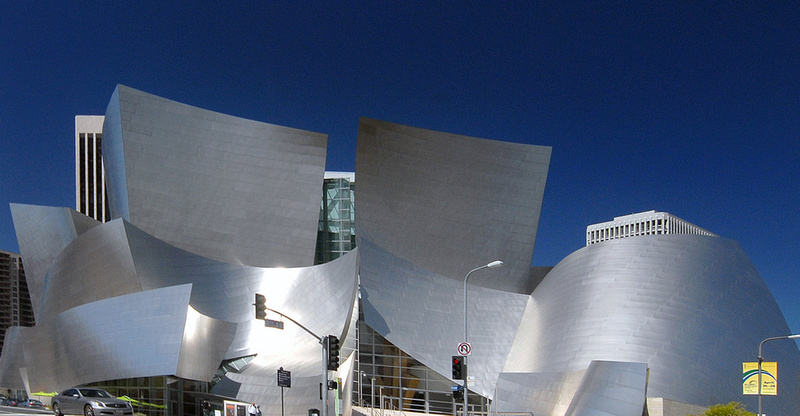
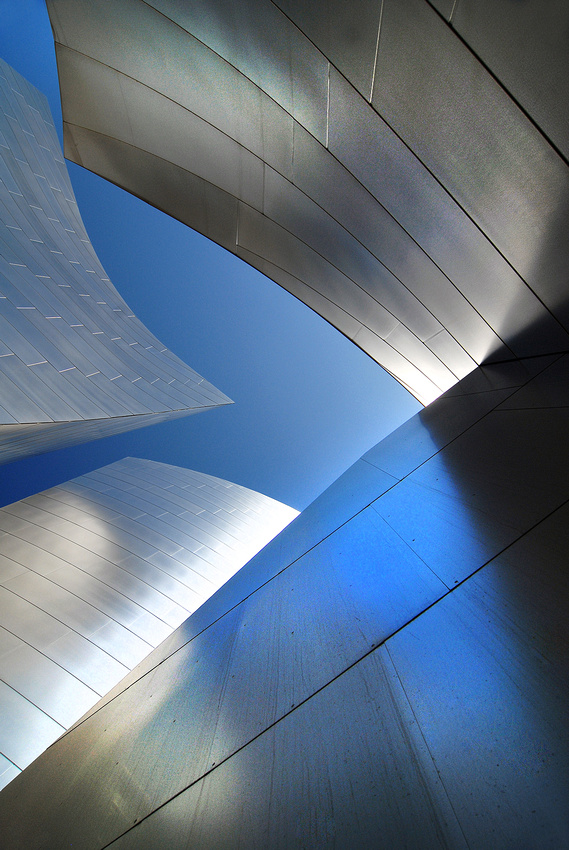
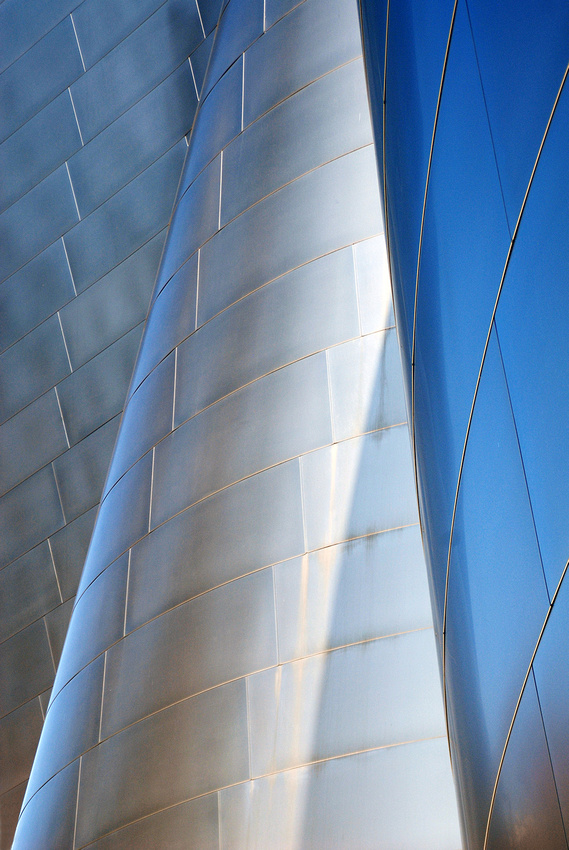
(World-renowned architect Frank Gehry's Disney Concert Hall in downtown Los Angeles is a titanium-clad
masterwork of curvilinear design best photographed up close and personal.)
Elsewhere, shooting interiors of touristed buildings presents a different kind of challenge because (1) typically the rooms are filled with people, and (2) you can't control the lighting. Typically the results are, in a word, dreadful. Unless you've pre-arranged a private photo session when the building is closed to visitors, chances are you're simply going to have to work around these problems. Here's how:
1. Instead of shooting rooms filled with tourists milling about, direct your lens to interesting details that help tell the story of why this interior space is important and/or worth photographing in the first place. Take, for instance, Jefferson's Library in the Library of Congress. A wide shot of what at the time was the largest private library in America certainly reveals the impressive scope of Jefferson's reading material. But I'll argue till the cows come home that a tight, detail shot of, say, the slightly worn tome penned by British Empiricist John Locke tells a far more interesting story. Namely how this 17th-century philosopher, who wrote of the separation of powers and every individual's right to "life, health and liberty," would a hundred years later influence the author of the Declaration of Independence and American revolutionaries. A good telephoto lens (my favorite is a 70-200mm 2.8) works brilliantly and all the more so if a room is roped off and you have to elbow your way in between a crowd of tourists to get a clean shot of an interior detail.
2. To achieve the kind of fill light needed to pop areas in shadow, take the flash off of your hot shoe and instead use a hand-held off-camera strobe (preferably with a diffuser) that can be triggered with either a synch cord or infrared transmitter. (The Hong Kong-based company Yongnuo manufactures my favorite infrared transmitter http://bit.ly/133bdR4. Compared to Pocket Wizards, they're far cheaper and much smaller.)
Below are examples -- both taken inside the main living area of Casa Batlló -- of the wrong and right way to capture an interior. In the first image we see an interesting room chockablock with Art Nouveau (Modernista) design elements, but unfortunately the room is filled with people. For the second image I took time to compose a shot that captured several architectural details that tell the story of Gaudi's visionary design for Casa Batlló, but this time without tourists in frame. By slightly canting the detail image while composing the shot, I was able to add another photographic dimension: the enhanced sense of architectural "movement" within the design flow.
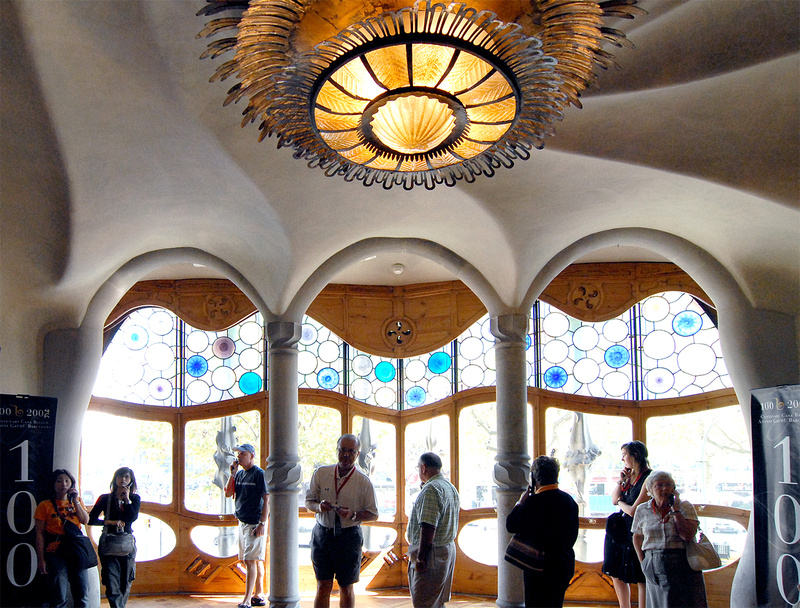
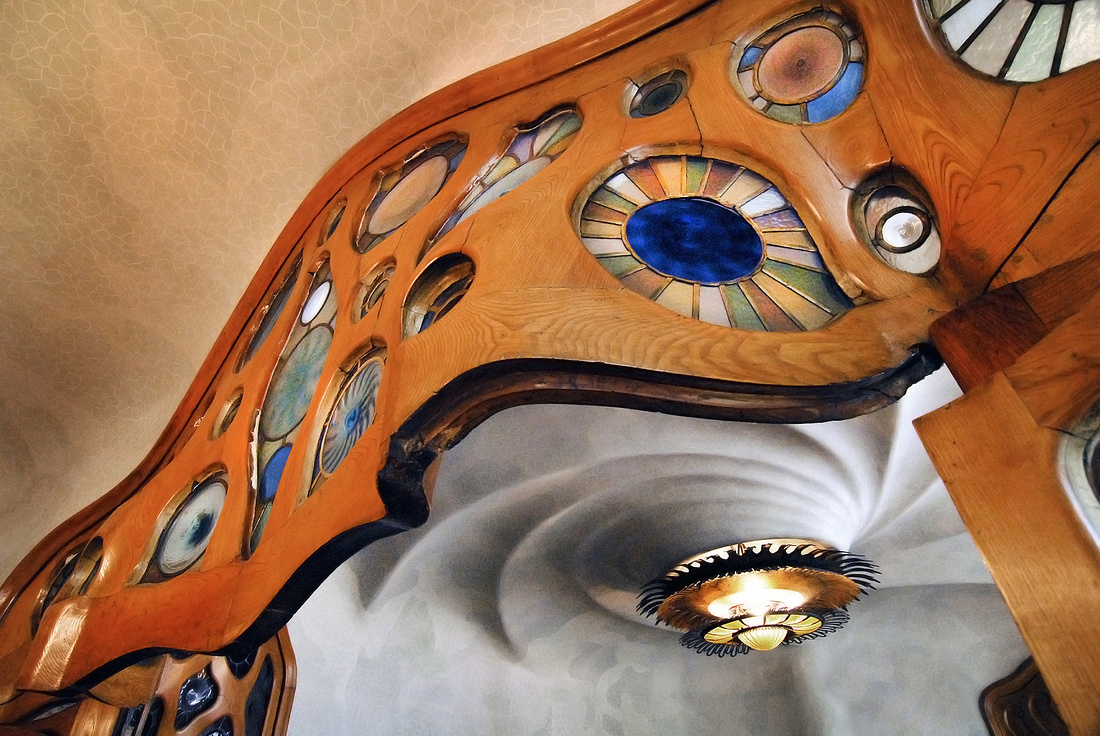
(Top, the main living area inside Casa Batlló; above, a detail shot of the ceiling and ornate doorway.)
Naturally everything I've said thus far is to be thrown out the window ASAP if a person appearing in your composition seems to enhance the overall image. What I’ve learned along the way is that images of vacant structures no matter how spectacular often fail to covey a chief goal of good architecture -- namely, to imbue public spaces with a sense of meaning and purposefulness. To me “meaning and purposefulness” can at times include a human being captured spontaneously within the context of the architecture. But this requires time and patience because typically you wait -- and wait -- for just the right person to be positioned in just the right place in the environmental space.
Examples include the following photographs I took of two architectural structures: the Eiffel Bridge in Girona, Spain (built by Gustav Eiffel in 1876 prior to construction of the Eiffel Tower in Paris); and the far more modern Swiss Air VIP lounge at JFK Airport. While the photos sans people could certainly stand alone on their own respective merits, in both instances I intentionally waited until I was able to capture a person in frame. For the photograph of the Eiffel Bridge, it was an elderly woman walking across carryng a bag of groceries, while in the Swiss Air VIP Lounge, I was lucky to have a gentleman sit down to read a newspaper in the otherwise vacant space. Later when I compared with-versus-without versions of the images there was no question that a human presence imbued both architectural images with a greater overall richness -- a humanity that helped define the meaning and purposefulness I was seeking.
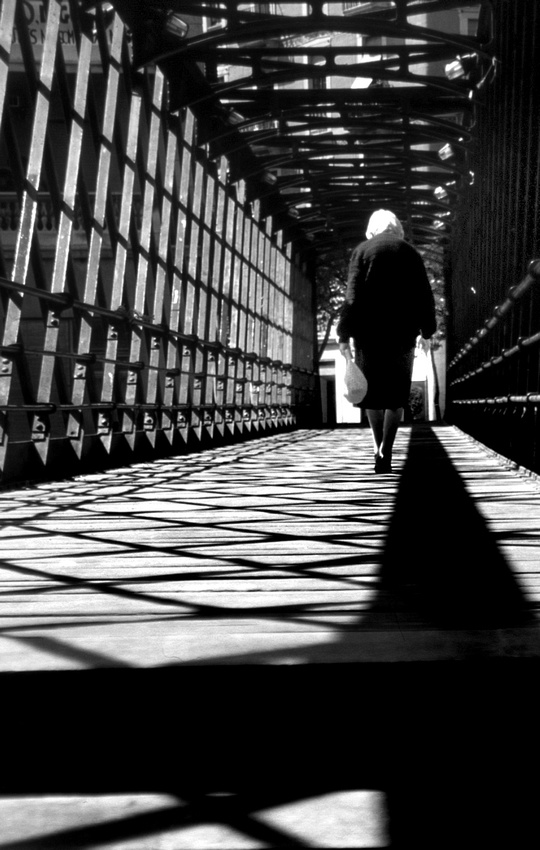
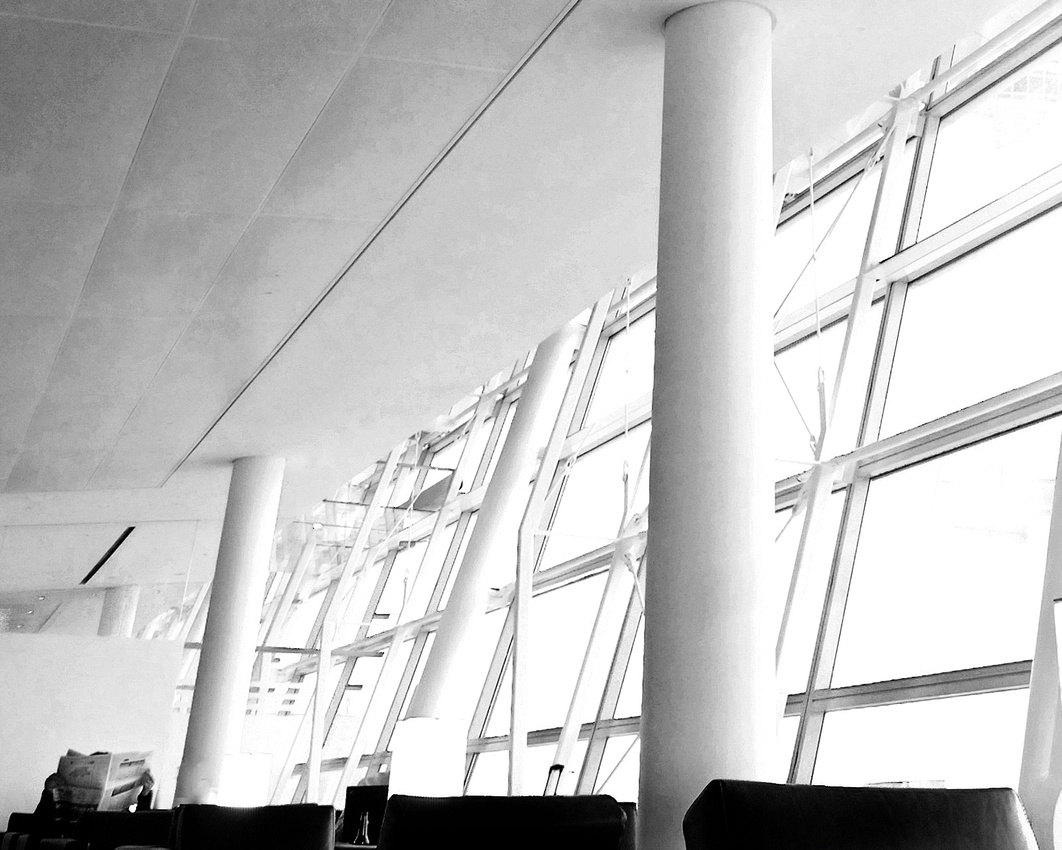
(Top, the Eiffel Bridge in Griona, Spain; above, the Swiss Air VIP Lounge at JFK Airport.)
Whether your passion for architectural photography during travels involves a state-of-the-art DSLR, point-and-shoot camera or merely your smartphone, deconstructing a building's exterior or interior space will help you discover what in fancy terms is called the articulation of design. In simpler terms, this process will steer your eye -- and lens -- to smaller details that help tell big stories. Happy shooting!
]]>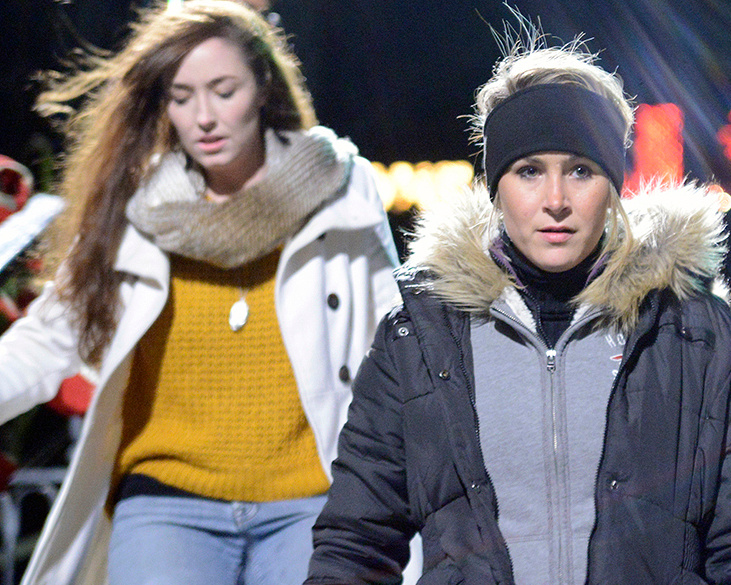
(Writer-director Dawn Spatz, right, bounds down the steps of Artillery Park in New Orleans' Jackson Square, followed by
actress Chelsea Hebert, to rehearse a nighttime scene during the filming of "The Horse and the Castle," her University of
New Orleans MFA graduate thesis film.)
It isn’t often that an old dog gets to learn new tricks -- not just the technical variety but also the emotional kind that opens the eyes to the immense creativity in others. But then I’ve never before been surrounded by amazingly talented graduate and undergraduate film students with a gift and passion for cinematic storytelling. But I’m getting ahead of myself.
As part of my baby steps toward gaining a foothold in the competitive world of unit stills photography, Scene Magazine editor-in-chief Micah Haley (www.scenelouisiana.com) wisely suggested I get my feet wet by volunteering to shoot a couple of independent thesis films being produced by third-year MFA graduate students in the University of New Orleans’ Department of Film, Theater and Communication Arts. He put me in touch with Dr. Hamp Overton, associate professor of film, who in turn forwarded my email volunteering my skills to third-year graduate students.
Initially, I thought this was going to be a pretty straightforward quid pro quo arrangement: I volunteer to shoot unit stills for a day for a student's film, providing him/her with the resulting images, and in return I pad my portfolio with movie-scene content and parlay the images into paying gigs in multimillion-dollar feature-length films. Instead, I came away with something of even greater value. Namely, an immense respect for the caliber of highly trained, disciplined and creative filmmakers I met. While many people in New Orleans are no doubt familiar with UNO’s film program, I have a hunch few are acquainted with the sheer level of professionalism I witnessed while shooting unit stills for “Galatea,” written and directed by Jared Stanton (www.facebook.com/Galateafilm/info; http://www.imdb.com/name/nm4691763/), and “The Horse and the Castle,” written and directed by Dawn Spatz (www.facebook.com/TheHorseAndTheCastle; http://www.imdb.com/name/nm3487232/).
With camera blimp and lens tubes in hand (read more about this here: http://jamesgaffneyphotography.zenfolio.com/blog/2012/11/quiet-on-the-set), I ventured tepidly into what for me was the new realm of movie sets, this after decades spent as a travel photojournalist and 21 years as a staff writer and photographer at The Times-Picayune, the-then daily newspaper of New Orleans. While the term “student film” didn’t necessarily conjure images of people running about with hand-held camcorders, I’ll be the first to admit that what I didn’t expect to find was this ...

("Galatea" writer-director Jared Stanton, far left, looks on as a camera dolly crew rehearses for a scene to be shot in the Warehouse District of New Orleans.)
… or this ...
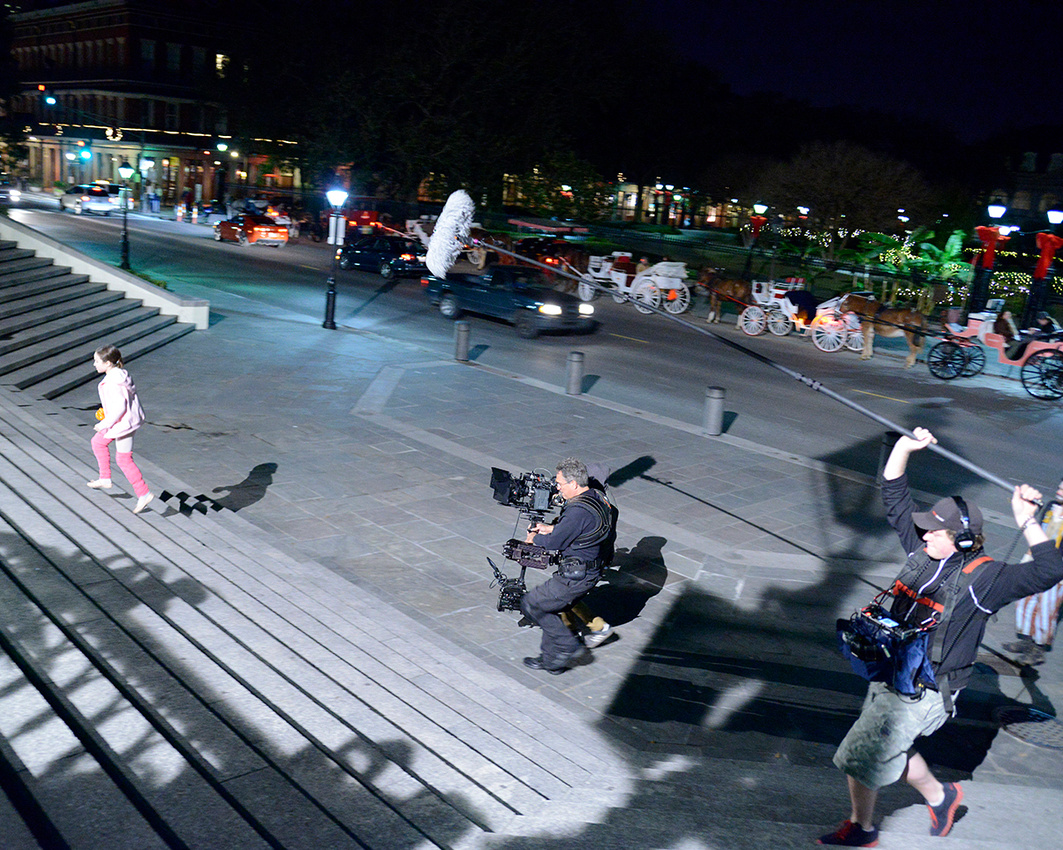
(From right to left: Sound mixer Jack Bigelow and steadicam operator Ralph Madison trail actress Juliette Enright up the steps of Artillery Park in New Orleans' Jackson Square while filming a scene for "The Horse and the Castle," written and directed by Dawn Spatz.)
NO-MAN ON THE TOTEM POLE
As a unit stills photographer -- the person who shoots photographs used for publicity, press kits, movie posters, or to merely document the filmmaking process -- you have to know how to keep out of the way and, most importantly, out of frame. In terms of film-crew hierarchy you’re essentially the no-man on the totem pole, if you will, because you’re not involved in creating anything actually related to the movie -- not the lighting, sets, costumes, makeup, directing, etc. Nada. Zip. Your goal is to sweep in after the fact, as stealth-like as possible, and, if you do your job right, nail perfect cinematic moments (probably while shooting directly beside the camera operator) that dozens of talented people working in concert have spent hundreds of hours to create. As a unit stills photographer, you stand on the shoulders of the brilliant work of others.
It doesn't hurt to nail a few candids of the cast and crew along the way (always mindful not to get the way or disrupt anyone's focus), which is fun because behind-the-scenes stuff offers a glimpse into the non-stop hard work -- we're talking 10- to 18-hour days here -- that goes into creating the magic of the final creative product. As “The Horse and the Castle” writer-director Dawn Spatz told me the first night I worked on her set at the UNO sound stage, “You’re like a ninja.” I took this as a compliment. (Note: I've since purchased a pair of black military cargo pants like those worn by steadicam operator Ralph Madison because they are ridiculously ninja and ideal for the set. For shooters, dark clothing is a must -- preferably black until someone comes up with a darker color.)
On rare occasions when time permits, you have the pleasure of assembling cast and crew for a group shot, as I did below on the set of "Galatea." But you have to work fast -- from the time it took to arrange the crew using my best slap-dash version of an Annie Leibovitz group set-up, grab a ladder to stand on and actually snap the photograph was less than five minutes.
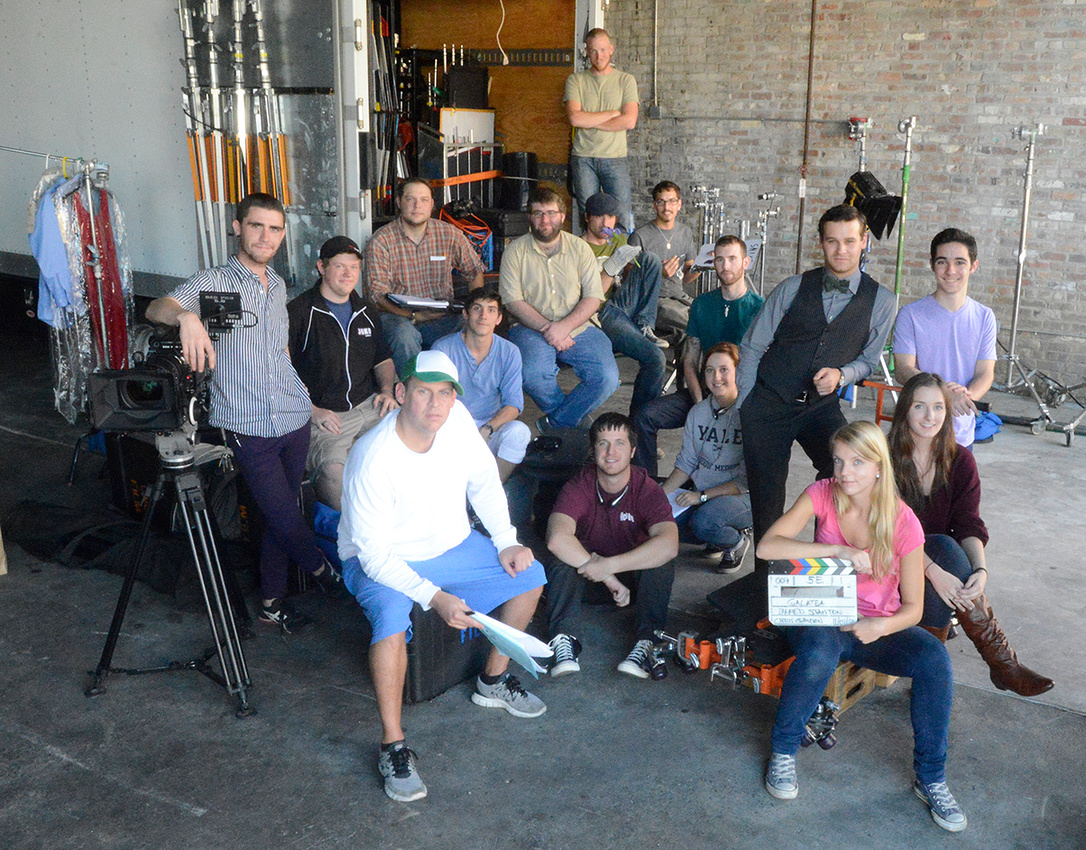
(Above, the cast and crew of "Galatea.")
Among the best aspects of working as a lone wolf alongside a talented crew is training your lens on what at times can be breathtakingly beautiful and stirring moments of filmmaking. Such was the case during a scene in “The Horse and the Castle” (below) when a father (played by Hunter Burke) attempts to comfort his young daughter (Juliette Enright) when she is confronted by her parents’ pending divorce.
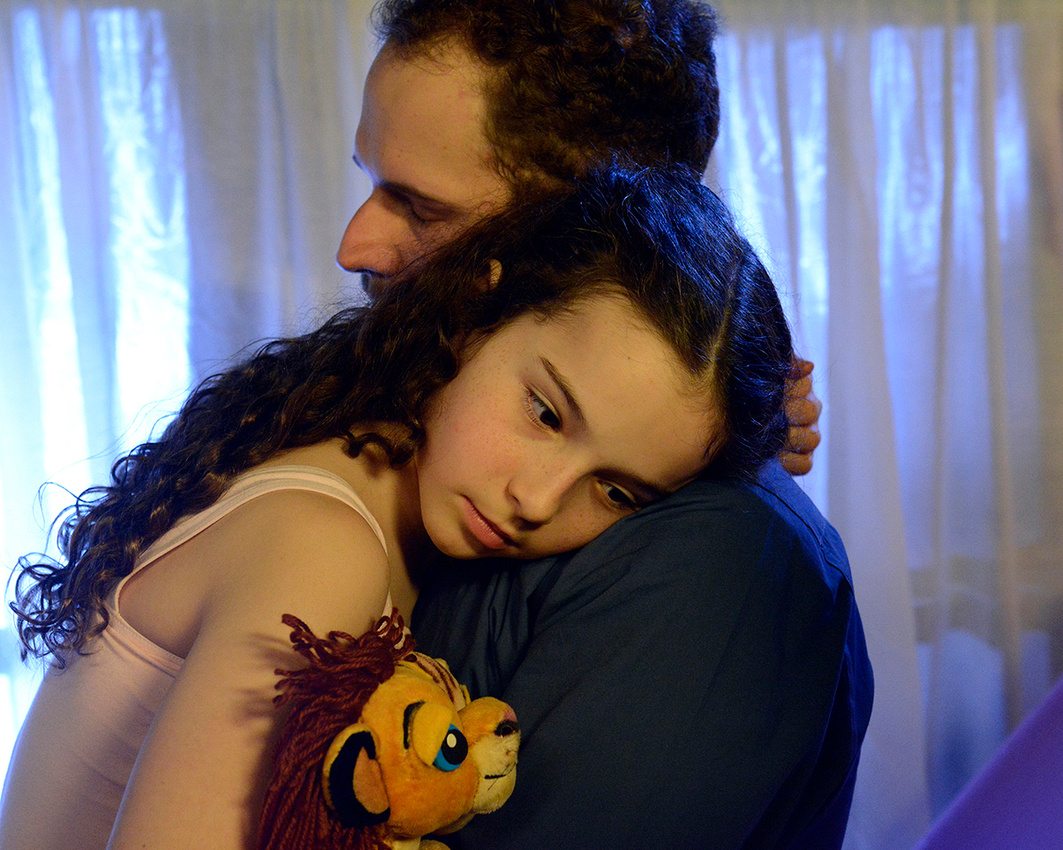
And, below, the reaction of the mother (played by Chelsea Hebert) when she enters her daughter's bedroom.
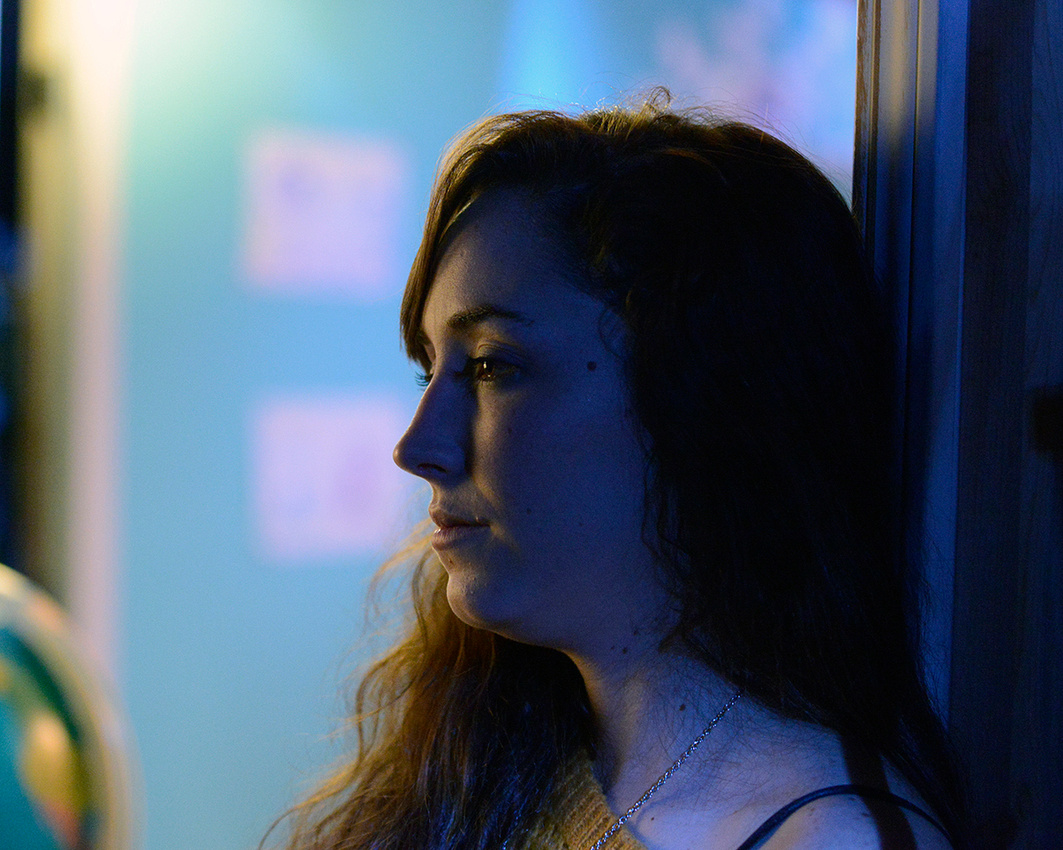
On the set of "Galatea," photographing actor Michael Krikorian proved a revelation. He reminded me of a young Jack Lemmon -- spontaneous, expressive and intense -- during his scenes in which he plays a photographer so obsessed with artistic perfection that he has lost his ability to connect with humanity.
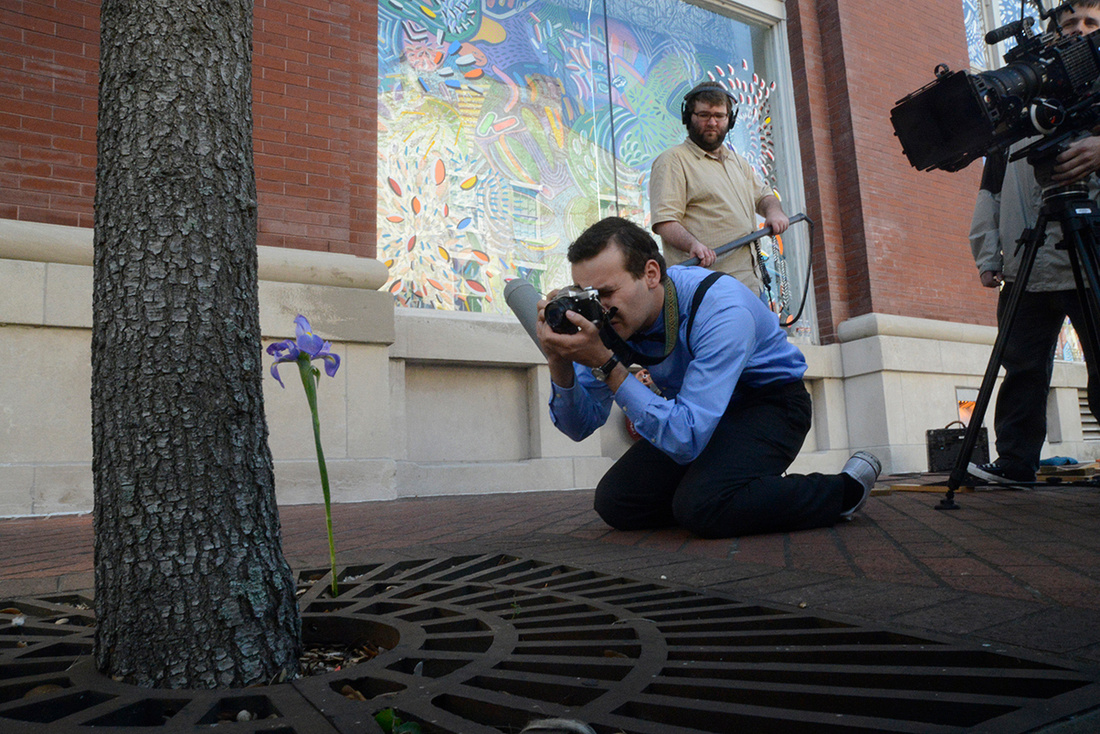
(Actor Michael Krikorian, as "Eric," kneels to photograph a flower during the filming of "Galatea" in the Warehouse District of New Orleans. In the background is boom operator Alex Aaron and, far right, Jared Stanton.)
FIRED ON THE SPOT?
If you're an aspiring unit stills photographer, don't even bother stepping off the bus unless you possess the kind of personality that enables you to work well with a broad spectrum of intensely creative types -- and, especially, the first assistant director (or 1st AD), who runs the "floor" (or set). As a well-known, long-time Hollywood unit stills photographer warned on his blog: “P*ss off the 1st AD and you’re toast.” Fortunately this newbie had the good fortune to work with two generous and extremely patient 1st ADs -- Lee Garcia (“The Horse and the Castle”) and Lizzie Guitreau (“Galatea”). I'll confess that on a couple of occasions I did in fact accidentally wind up in frame during a shoot. And they gently told me so and instructed me where to stand for the next take. I was lucky. Had this been a multimillion-dollar feature-length film, I could have been fired on the spot. No questions asked -- no explanations given. But I also got the chance to learn about the critical role the 1st AD plays as the glue that holds everything together while also watching out for the welfare and safety of cast and crew. Don’t ask me how, but these multi-taskers extraordinaire are omnipresent – they can literally seem to be everywhere on the set simultaneously. To Lee and Lizzie, I owe a debt of gratitude.

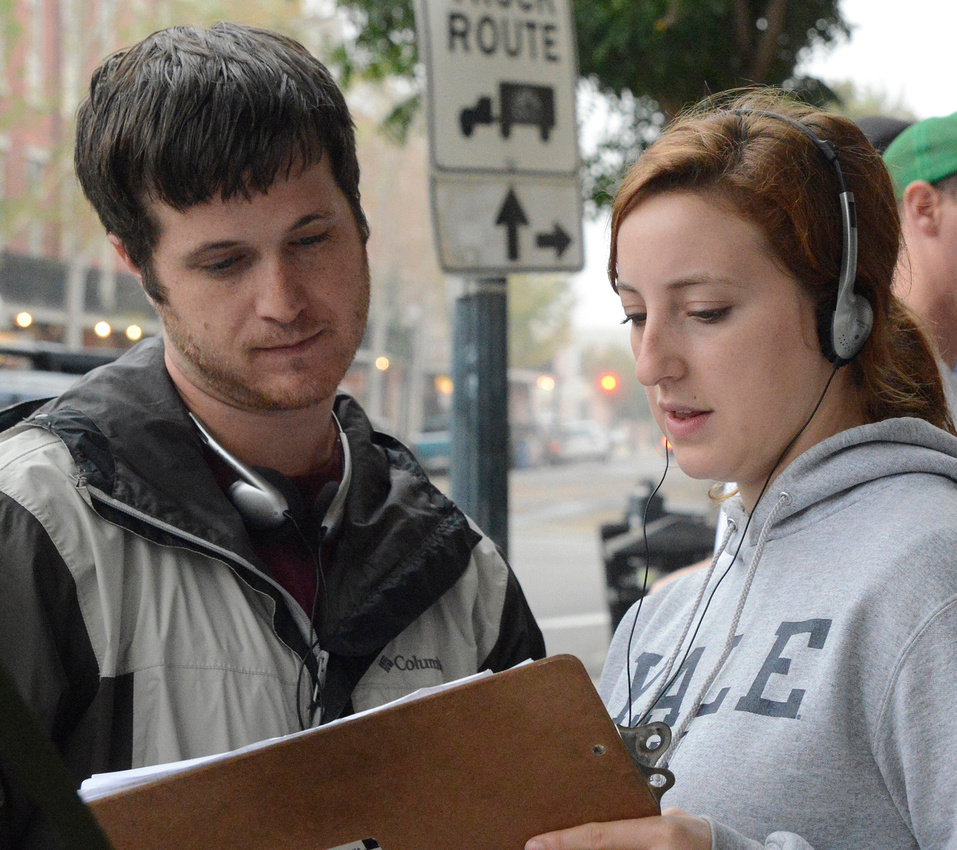
(Top, Lee Garcia, 1st AD for "The Horse and the Castle"; above, Lizzie Guitreau, right, 1st AD for "Galatea," confers with writer-director Jared Stanton.)
Call me biased for believing the University of New Orleans’ Department of Film, Theater and Communication Arts is producing what certainly must be among the brightest new filmmakers in the country today. No, I haven’t visited similar graduate film productions at NYU, Columbia, USC, UCLA, etc., so I have nothing on which to base my belief other than my limited first-hand experience and newfound pride in the New Orleans students that allowed me the honor of working alongside them if only for a few brief shining moments -- the students that became my teachers.
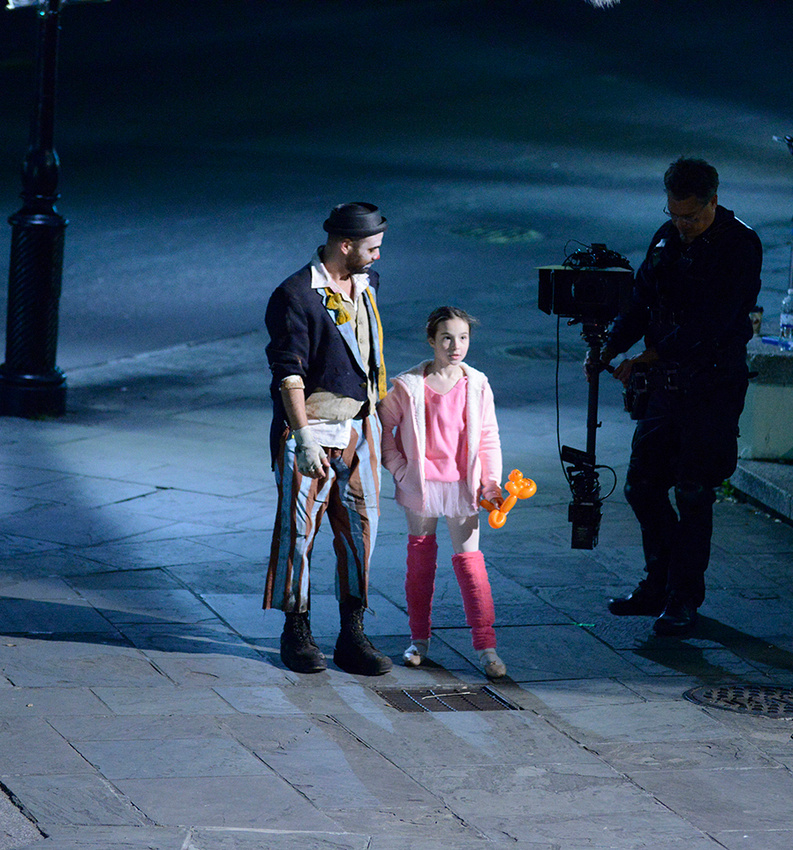
(From right to left: Steadicam operator Ralph Madison shoots a nighttime scene with Juliette Enright and Jackson Beals
during filming of "The Horse and the Castle.")
]]>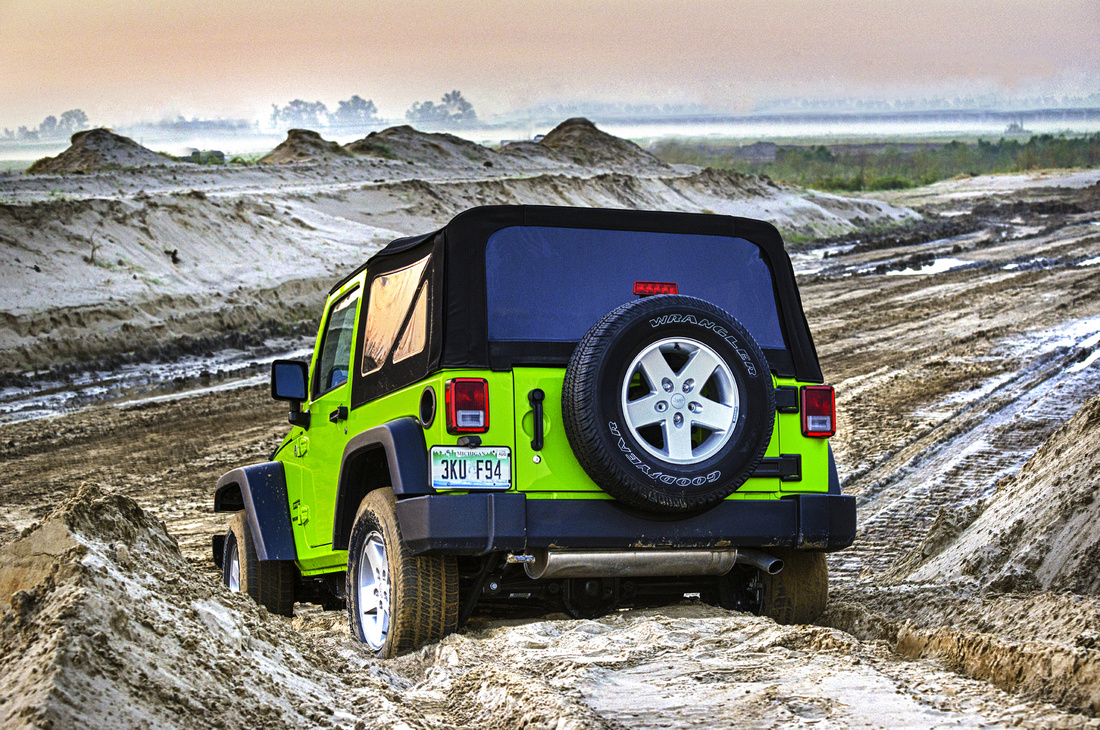
Recently I discovered that all of the hifalutin camera gear in the world can be of little value when working fast against creeping sunrise light and without an assistant while in the steep, sandy dunes of the Bonnet Carré Spillway. Typically, I keep on hand eight Nikon Speedlights (strobes I use for off-camera lighting) and half as many tripods, plus assorted umbrellas and light modifiers for all types of shoots ranging from architecture and real estate to portraits and cars. But in the case of the 2013 Jeep Wrangler I recently shot for the fall issue of Seven, the New Orleans-based men’s style magazine, I had little choice but to forgo my trusty Armada of lighting gear.
Here’s why: attempting to keep a quartet of tripods upright in hilly, mushy-wet sand is nearly futile. Ditto for the umbrellas and strobe lights that affix to the tripods. I know what you're thinking but, no, a simple camera-mounted flash wouldn't work because light coming from atop the camera in this instance would be too harsh and direct (even with a ringflash, which I've used on occasion during auto shoots). Sure, I thought about merely shoving a few off-camera strobes strategically in the sand or atop a few dunes, but the prospect of running back and forth to adjust the illumination output of each Speedlight would have eaten up precious time since I was racing to capture early morning light. And the sun waits for no one, least of all me.
So I turned to my other trusted friend: the HDR (or high-dynamic range) image. Back in the day HDR photography was considered the vanguard of a brave new world. In a nutshell, it enables the shooter to combine several identical images, each taken at different exposure settings, into a single photograph that can be manipulated to optimize the highlights, midtones and shadows. This so that the resulting photograph looks more or less how the human eye it. (For an excellent tutorial visit www.cambridgeincolour.com/tutorials/high-dynamic-range.htm.)
Today, however, the phrase “HDR” rolls easily off the tongue of virtually every professional shooter, as well as many amateur photographers -- the latter due in no small part to the fact many point-and-shoot cameras now come with built-in optional HDR technology. Simply find the HDR setting on your $100 pocket hero and – viola! -- the dark and shadowy nightclub you’re attempting to photograph on vacation as a memento of late nights ill spent is now an eye-catching image worthy of hanging on the wall.
Following is a quick example using Cava, my Cocker Spaniel, and two exposures -- one too bright; the other too dark -- I took when Her Highness was relaxing atop my Natuzzi leather sofa she has claimed as her own, as seen below:


The top photograph is intentionally overexposed and "blown out" due to too-strong highlights coming mainly from the background lamp. In the intentionally underexposed image above, where I used a faster shutter speed to dampen the effect of the lamp light, Cava's face is obscured by shadows. While the human eye doesn't see Cava this way in real life, the camera does. Digital cameras have incredible technology but they still can't compete with the human eye. The beauty of HDR technology is that it allows you to blend together the two images (or three, or four, etc.) to create a better overall balance of highlights, midtones and shadows -- basically to generate an image that is more like what the human eye sees in the real world, as you see in the image below:
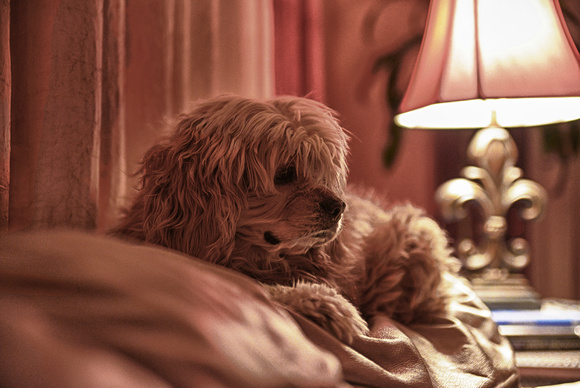
(Disclaimer: If Cava looks a little mangy it's because we can't get her groomed until her inner-ear infection clears up.)
For the Jeep shoot I scoured the Bonnet Carré Spillway for just the right setting. Concept-wise I wanted to shoot the Wrangler from behind and preferably while descending a hill in order to best capture the boxy ruggedness of the rear bodylines, full-sized knobby spare tire and removable canvas top – signature elements that imbue this off-road roustabout with the air of a take-no-prisoners 4x4 gladiator. (Plus, you’ve simply got to love the high-perched fenders on this baby not to mention the dayglo-green bodypaint reminiscent of Lennon’s Sgt. Pepper’s uniform.)
A slight haze settled over the Spillway, which convinced me all the more that HDR was the way to go. I parked the Wrangler, set the emergency brake (hoping my Jeep wouldn't slide down the hill), and scooted behind the vehicle to compose my shot while finding just the right height (I wanted to also capture the exhaust muffler) and rattled off my multiple-exposure shots.
Following is what the three different lighting exposures looked like raw (nothing Photoshop’ed here):



Simple enough, right? Back home, it was time to combine the images using my long-time personal HDR software of choice -- HDR Efex Pro -- and set to work tone-mapping the photo to not only draw out the highlights. midtones and shadows, but also to pop the color of both the Wrangler and the surrounding sand. Plus, I Photoshop'ed out some power lines and the red pickup truck in the upper right. As simple as the process may sound, it took about two hours to make the finished image ready for a glossy magazine feature page.
Following is the final HDR image:

See the difference HDR can make?
To view the final image as it appears in Seven (with overlaid headline and kicker), plus to read the story, visit the online flip version of the fall issue at www.sevenmensmag.com; pages 22-23. Meantime keep a sharp eye peeled for my future car reviews and automotive photography in Seven. To paraphrase Betty Davis, fasten your seatbelts, with some vehicles it's going to be a bumpy ride.
]]>
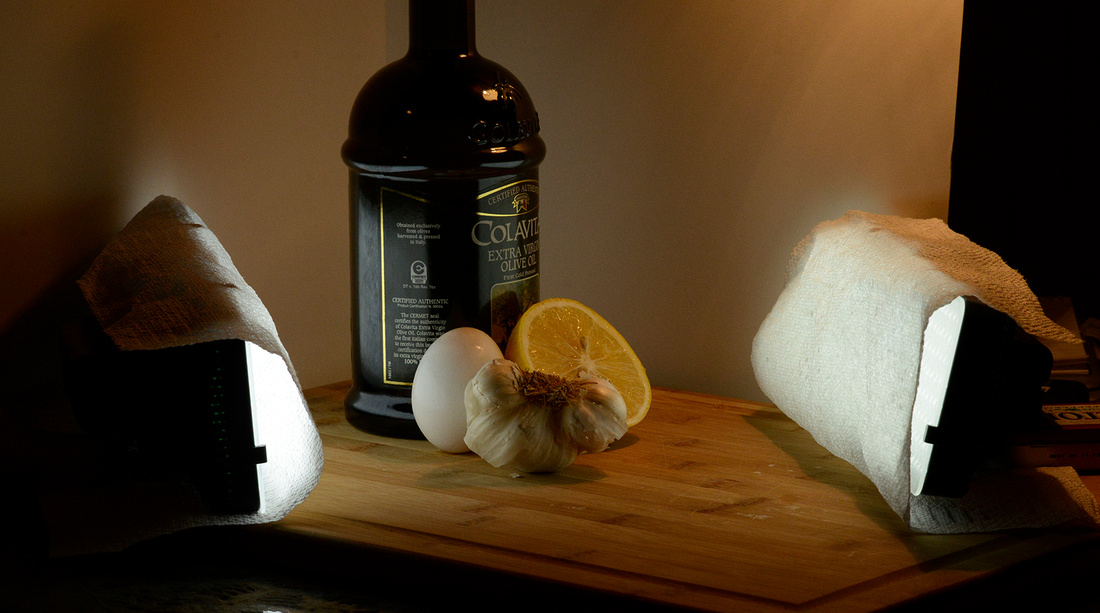
(ABOVE: A pair of Polaroid 256-LED light panels -- wrapped in paper towels to soften and diffuse the light -- illuminate the "fearsome foursome" of aioli on my kitchen table: garlic, egg, lemon and olive oil).
Everyone – from amateur to professional photographer -- likes to shoot holiday food. It’s no longer enough to merely prepare our favorite dishes, we must digitally capture and thus memorialize for friends and family today and generations to come the recipes of our Thanksgiving dreams.
Does anyone remember the precise moment we became so geeky?
For me that moment came when I discovered aioli (the French spelling and pronunciation) or allioli (the three-syllable Spanish spelling and pronunciation). As might be expected, the French and Spanish have long battled over which country first invented the garlic-mayonnaise condiment so prevalent in the cuisines of both modern-day cultures. While both nations present legitimate arguments, the Spanish claim the word allioli is Arabic and/or Moorish in origin -- nearly all words beginning with the prefix “al” (as in algebra) have their roots in Arabic languages. Thus if the 740-year Moorish rule of Spain from 711 to 1492 gives us any clue, chances are “allioli” was invented sometime during this period, long before it first surfaced in France as the “sauce of Provence.”
But, please, my French friends and Francophiles, no hate mail, s'il vous plaît.
What I know for certain is this: aioli is made using a fearsome foursome of Mediterranean ingredients – olive oil, egg yolks, lemon juice and garlic. I wanted to photograph the ingredients before setting to work making my annual batch of the garlicky good stuff that I offer guests at Thanksgiving alongside the half of the turkey my wife allows me to cook using herbs de Provence. The combination -- turkey à la herbs de Provence and aioli -- is killer.
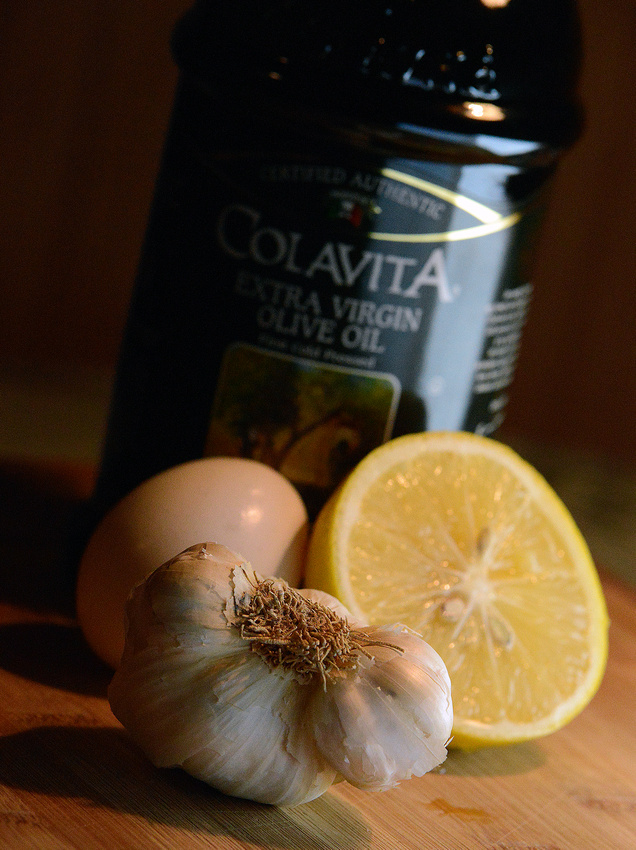
(ABOVE: The first table-top shot of the "fearsome foursome.")
Setting up a quick tabletop "studio" on my kitchen table wasn’t a big deal. Over the years I’ve learned to work fast in the field (even when the “field” is my home) and with a minimal of resources at my disposal. For illumination I employed a pair of Polaroid 256-LED light panels to serve as a constant (and easily adjustable) light source. Problem is the light panels when used at close range (in this instance, on the kitchen table within inches from my “subjects”) were pushing out too much harsh light. Too lazy to affix the panels to tripods to put a greater distance between the off-camera lighting and the ingredients (remember, I needed to get to work -- and soon -- actually “making” the aioli for Thanksgiving Day), I opted for the next best thing: paper towels. Don’t laugh. Folding two sheets of Brawny each over the Polaroid panels sufficiently softened and diffused the light so that I was ready to go.
Of course, our kitchen’s bead-board wall wasn’t necessarily the best backdrop in the world, so I grabbed a big square of foam core from the trunk of my car with which to use in alternate shots.
As for camera settings, my Nikon D800 was running at ISO 1600 at 1/125 and f/2.8, using my 70-200mm 2.8 lens.
With a little trial and error, I think I was able to capture the dignity of Messrs. Egg, Lemon, Garlic & Olive Oil.
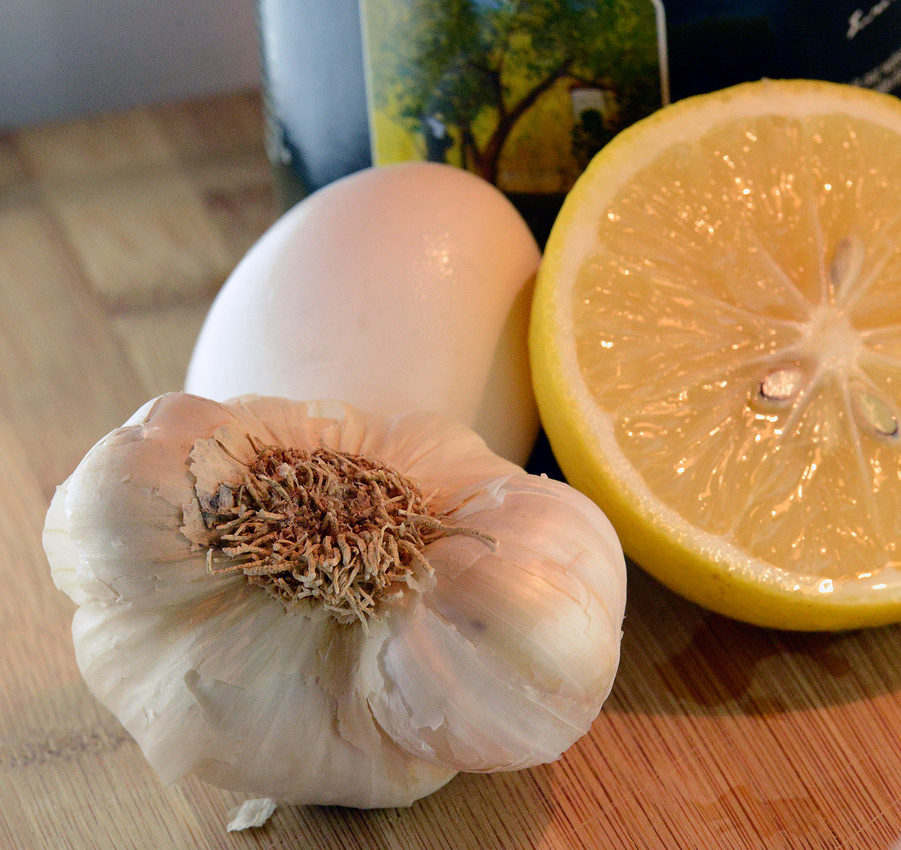
No, I won’t be submitting these images to Bon Appetit or Gourmet any time soon in the hopes of securing their next cover shot. This was more or less an academic exercise in by-the-seat-of-the-pants holiday food photography that took a total of 15 minutes from conception to shoot.
Equally important, I have a lot to be thankful for. Not the least of which is the fact my entire kitchen smells of garlic -- I think I might have created my best and creamiest aioli, or allioli, ever.
Happy Thanksgiving to all of you (everywhere) and thank you for joining me during this ride as I transition from a workaday newspaper camera grunt to an independent commercial photographer – or, at the very least, a guy who knows how to make a fairly butt-kickin’ version of garlic-mayonnaise.
I couldn't ask for better company.
]]>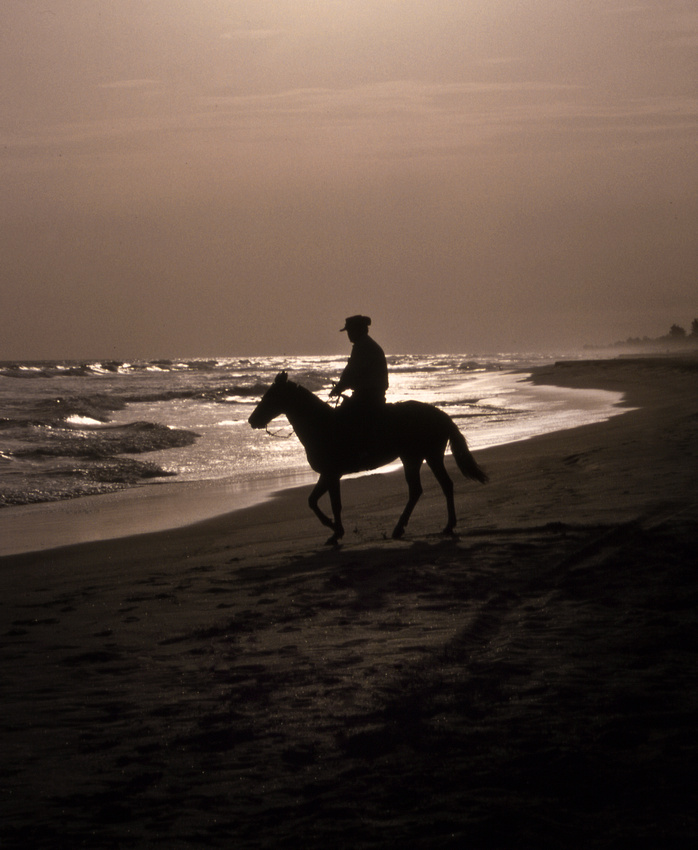
(CONQUISTADOR: Larry August riding a horse on the beaches of El Salvador.)
“Man, you’re going to love Catacamas,” Larry August said over the telephone one afternoon in his familiar gravelly voice.
The New Orleans public relations man was pitching the Honduran town as a potential destination to this long-time travel journalist.
“It’s just like Dodge City in the 1880s,” he said matter of factly, “except instead of guns, everyone here carries a machete.”
(At the time all I knew for certain was that the highway from the Honduran capital of Tegucigalpa to Catacamas, a rambunctious cattle town tucked in the Central American country's remote eastern backcountry, had been dubbed “the corridor of death” because of frequent attacks on travelers by robbers.)
Count me in, I said.
Although Larry was in Catacamas to produce a Discovery Channel documentary called “The Cave of the Glowing Skulls,” about an ancient Mayan burial cave near the Talgua River, he thought I might get a good travel story out of the trip. And I knew better than to doubt him. Over the years my travels with Mr. August had included some fairly wild adventures in Central America and the Latin Caribbean that produced stories my editors loved even if they questioned my sanity.
But that’s getting ahead of the story.
‘DO YOU HEAR ANY GUNFIRE – WELL, DO YOU?’
In my nearly 30 years as a journalist, I have never met anyone quite like Larry August. No travel writer has. A former Hollywood public relations legend who had relocated to New Orleans, Larry, in his 60s, was brash and outspoken and fond of the craziness of the road less traveled. As people savvy as the day was long, he smoked More cigarettes and enjoyed fine aged rum, possessed a writer's gift for storytelling and could smell bullsh*t five miles before it appeared on the horizon.
Smart players like him never get caught with their pants down in the back of the oxcart. I can't say the same for myself.
While living in the Big Easy he began cultivating tourism-related clients, including hotels and small airlines, in far-flung spots in Central America – the kind of places few travel journalists visit and even fewer Americans ever read about. As testament to his unconventional PR genius, Larry would lasso together small groups of writers, mostly from major newspapers and syndicated news services, and whisk them away to these eccentric locales. Dyed-in-the-passport travel journalists with a lust for offbeat destinations respected Larry's talent for bringing Mohammed to the mountain, if you will. Likewise, the resulting travel articles that appeared in newspapers nationwide were literally gold to Larry’s clients because editors almost always gave the stories big spreads. Everyone has read about Branson, Missouri; not so much the volcano-rimmed backcountry of El Salvador, or wild Garifuna dancehalls in Honduras within spitting distance of the Mosquito Coast.
No matter the destination, though, I could always count on moments of sheer gonzo weirdness.
One afternoon in El Salvador, for instance, Larry led our small entourage like blind ducklings through the rush-hour downtown streets of capital San Salvador, arms waving at his sides while shouting above the din of traffic in a voice loud enough to be heard by nearby pedestrians: “Do you hear any gunfire – well, do you!? I don’t hear any gunfire. I told you guys the civil war here is over. I would never lie to you.”
In the Dominican Republic, I had the pleasure of demolishing a bottle of Barceló Añejo rum with Larry at a sidewalk table at an Iranian-owned pizzeria on the main beach drag in Santo Domingo on presidential election night, as we watched the entire city morph into a riotous party of celebration punctuated by bullhorns blaring from every overcrowded moped and flatbed truck that passed before our increasingly bleary eyes. During this trip we fended off a boisterous trio of guitar-wielding prostitutes in the Jarabacoa Mountains and, at Larry’s insistence, brought food to impoverished, Haitian immigrant children living amid the unspeakable squalor of one of the Dominican Republic's desolate sugarcane-cutter villages. Another night we danced at an amphitheater-like merengue disco in San Pedro de Macoris with some of the most mercilessly beautiful women I had ever seen this side of my dreams.
Next morning Larry asked if I had enjoyed the freshly pit-roasted pig we ate at the open-air roadside stall in San Juan de la Maguana. Our driver apparently had taken us clear halfway across the opposite side of the island at 2 a.m. into a bad neighborhood just so we could enjoy his favorite local delicacy. Apparently, too, the evening's worth of Cuba libres had left me with little recollection of our late-night repast.
"We're we ever in any danger?" I asked.
"The entire time," he said.
‘BACKS UP AGAINST THE WALL’
It was during a visit to the Caribbean coastal town of Trujillo, Honduras, that a noisy citywide protest by local Garifunas, held during one of the country’s notorious rolling blackouts, forced us to sneak out of an afterhours bar with the help a local bodyguard for American ex-pats, who was brandishing a 9mm Glock. As the cacaphony of shattering shop windows continued to add fear to the fire, I offered our little entourage what I believed to be a reasonable alternative.
“Why don’t we hide under the tables and drink ourselves into a stupor?” I asked.
The bodyguard shook his head. "Stay behind me and do as I tell you," he said, poised at the bar's exit gate with his pistol barrel pointed at the 12 o'clock position.
Per his instructions, we inched our way down the street, “backs up against the wall" in order to disappear into the shadows, until we reached our cars and ultimately sped away into the darkness of the black night back to our hotel. Hell, yeah, it was cocktail time.
Larry was a Mother Hen when it came to safeguarding his charges (in Honduras he always sent his omnipresent bodyguard-translator Luis with us whenever we went out at night), and he knew to keep strictly hands-off when it came to what we journalists wrote. But boy did he ever know how to grease the wheels to help make a good story even better. No more so than the next night when we arrived at the rustic, corrugated tin-roof dancehall in Trujillo to experience first-hand the West African-influenced dances local Garifunas have kept alive for centuries. The band consisted of six men, each strapped to a conga hand-carved from a local avocado tree, plus the melody guy, who blew his notes through a conch shell. Pounding, rhythmic jams ran as long as 45 minutes at a stretch, requiring the utmost stamina on the part of musicians, as singles and couples took turns strutting their best dance steps before the band.
If my eyes and ears hadn’t known better, I might have sworn I had been flung back in time to the early 1700s.
After a few hours and even more beers I found myself strapped to a conga and jamming with what seemed to me at the time both the hottest and coolest band in the world. Imagine the spine-tingling syncopation that filled the dancehall that night with six percussionists each playing a different rhythm. And I was in the thick of things thanks to Larry.
"I bought the band a round of beers -- $7 total," he said later. "You were in like Flynn."
In the ensuing years, Larry and I fell out of touch as our respective lives and careers took different paths. It was while at the airport preparing to board a plane to Spain that I heard the voice-mail his son Scott had left on my cell phone informing me of Larry's untimely passing. Looking back, my favorite – and wildest -- travel stories were always those written in part as a result of his mad-hatter genius. Unfortunately, I never got the chance to tell him why I owed him so much.
Unable to sleep, I thought about Larry during the entire flight to Barcelona.
]]>

(ABOVE: Fireworks, with "tail," shot from across the Mississippi River with New Orleans in the background.)
At some point every photographer winds up shooting fireworks. You, well, almost have to. This because earning your fireworks merit badge nudges you a step closer toward becoming the equivalent of an Eagle Scout of the lens.
Unlike most of my fellow shooters, however, I never sought out fireworks. It’s not that I’m lazy by nature so much as I’m indolent by strategic design.
So, months ago when my boss at my former employer, The Times-Picayune, gave me an assignment to shoot fireworks for the former daily newspaper’s Sunday Real Estate page, I confess that I gulped hard and feigned a happy-camper smile. Although I had never before shot fireworks, there were two things of which I was certain: (1) it’s not as easy as it looks, and (2) firework shows typically are short – 15 minutes tops – so you have a narrow window of opportunity to get it right.
Yeah, the prospect of shooting fireworks is scary when your job can depend on the outcome.
I went to school on the best of the best in the industry – namely, Joe McNally, the internationally acclaimed photographer “whose career has spanned 30 years and included assignments in over 50 countries,” according to his website. (Read his post on shooting fireworks here: http://www.joemcnally.com/blog/2011/06/13/shooting-fireworks).
Workaday shooters like myself can only dream of the kind of career Joe McNally has enjoyed, which has included shooting covers for Time, Newsweek, Fortune, National Geographic, Life and Sports Illustrated. Plus, he's the Yoda of off-camera lighting as best exemplified in this image he shot of a Navy Pegusas unmanned aerial vehicle http://www.flickr.com/photos/22850932@N06/4688539026. (Yes, the lighting beneath the vehicle is the result of off-camera strobes he placed strategically around the aircraft. It’s beyond brilliant.)
But what of fireworks? Because of differing lighting conditions and shooting environments unique to each fireworks display, it’s not possible to simply copy cookie-cutter style another shooter’s recipe for success – too bad. On the other hand, shooting by the bootstraps and relying upon your own ingenuity while still delivering the goods is what separates the pros from the hopefuls.
(ABOVE: Fireworks, without "tail," shot against nighttime New Orleans.)
Here’s the skinny on my gear and how I tooled my settings:
-- Camera body: Nikon D200.
-- Lens: Tokina 12-24mm super wide-angle zoom.
-- Manual focus: Essential – no lens can autofocus fast enough to capture fireworks at night. Plus, it’s precisely because my middle-aged eyes are so bad that I set the aperture to a distance-forgiving f/8-11.
-- Tripod: ’Natch -- don’t leave home without it.
-- Manual white balance: 2500k (to help blue-shift the nasty yellows and greens emanating from nearby fluorescent bulbs and mercury-vapor streetlights, respectively).
-- ISO: 100-400 (I leaned more toward a light-generous 400 to capture the background cityscape of nighttime New Orleans).
-- Shutter speed: set to *bulb* (manually using three- to five-second exposures).
-- Other essential equipment: infra-red frequency remote-shutter release.
During my first-ever fireworks shoot I had a difficult time deciding whether I preferred images with or without a streaming “tail.” So, I shot it both ways for my editor. (If you prefer your fireworks without a tail, wait a full second after the initial “boom” before opening your shutter; if you prefer yours with a tail, click the shutter the moment you hear the boom.)
I’m not trumpeting these images as the best known to humankind – these are merely a rather modest exposé of how a reasonably experienced shooter tackled his first-ever fireworks assignment with a little prior research coupled with a bit of in-the-field know-how.
But after all is said and done and we’ve washed away the academic “eggheadism” (coined term, I think; trademark pending anyway), fireworks snapshots are just plain fun to look at.
And isn’t this the real reason we bother to pick up a camera in the first place?
]]>
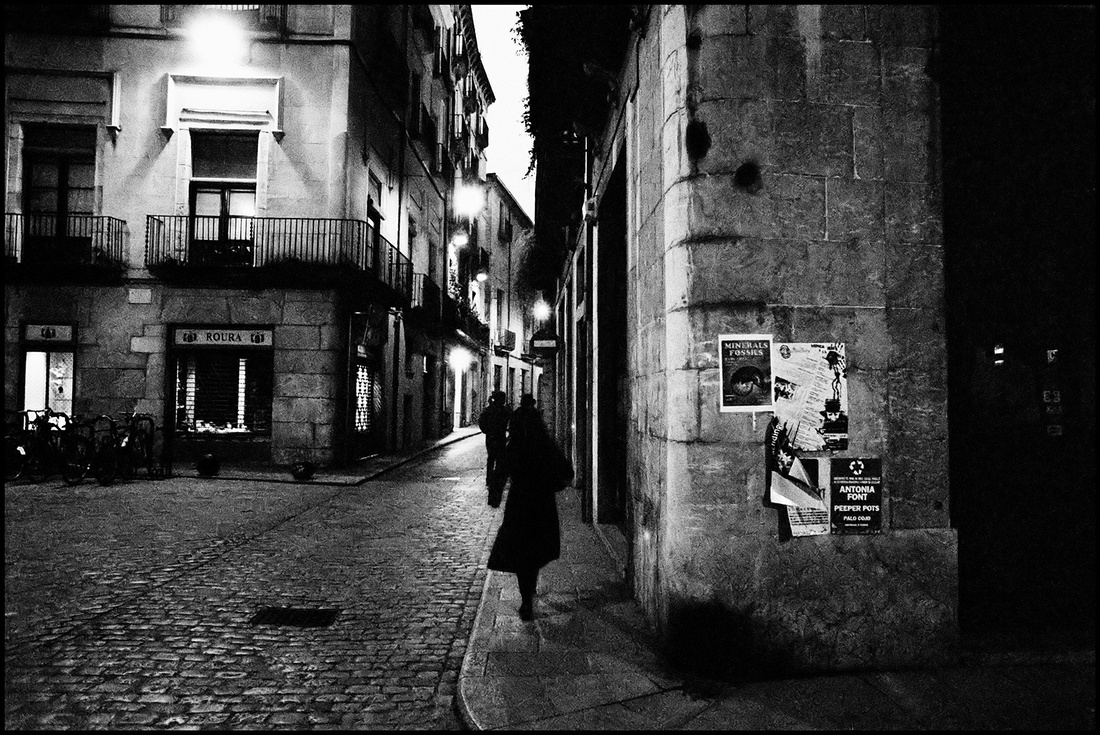
(ABOVE: The medieval quarter of Gerona, Spain, 2 A.M., using Ilford 3200 ISO black-and-white film.)
They say never look back. But there are times when I do with great fondness, especially the days – or, rather, the nights – when I would prowl the streets of European cities after dark with whatever camera I happened to be packing for that particular travel assignment along with rolls of Ilford Delta Pro 3200 ISO black-and-white film.
Not to sound like a dinosaur, but for those too young to have ever had the pleasure of working with a film camera, 3200 ISO is extremely light-sensitive film. So sensitive, in fact, that you could walk around a city at night without a flash (or a tripod, for that matter), shooting images using only available light (in Europe that typically means gaslamps and flickering candles on sidewalk café tables), and wind up with wonderfully evocative, moody and sensual, damn-near ethereal images. Because of the light-sensitive nature of 3200 ISO film, the images typically possessed a mild to moderate grainy quality that photographers like myself absolutely love.
Sure with today’s professional-grade DSLR cameras you can set the ISO to 3200 (or 6400) and shoot to your heart’s content under identically low-light conditions. But cameras such as these manufactured by companies like Nikon and Canon boast of how little digital or electronic “noise” is visible in images taken at high ISO settings. Yet there’s a difference between grain and noise – at least aesthetically. Digital noise is something to be avoided because it makes an image look “dirty.” On the other hand, natural film grain can actually give an image a more artistic look.
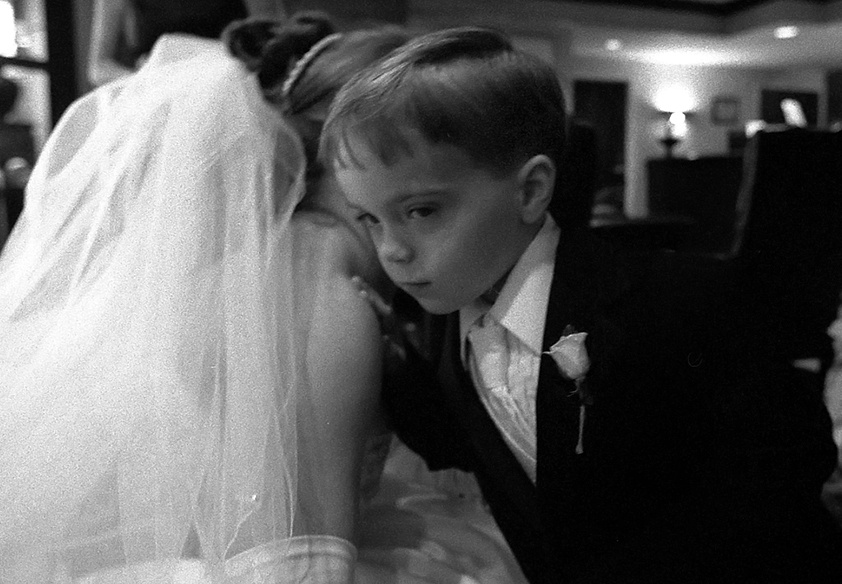
(ABOVE: Bride Sasha Jacob offers her ring-bearer nephew Jacob Dejean a few last-minute, pre-ceremony words of support. Shot with Ilford 3200 ISO film.)
I have yet to use or read about a digital camera that can achieve the same artistic aesthetic as a roll of 3200 ISO film. And I’ve yet to find a filter in Photoshop that can approximate the same tonality during post-processing. (But I would be interested to hear if anyone has.)
So far my two favorite shooting sessions using 3200 ISO film was the occasion of the wedding of my wife’s niece Sasha and the streets of Gerona, Spain. Both couldn’t have been more different in terms of subject matter.
Sasha wanted me to capture the kind of spontaneous, joy-of-the-moment images that always make the pre-wedding hours a pleasure to photograph (especially when you’re a proud uncle). My editor, meantime, wanted after-dark, black-and-white photographs of Gerona’s medieval quarter because he knows when in Spain I like to spin my stories around that country's romantic midnight hour.
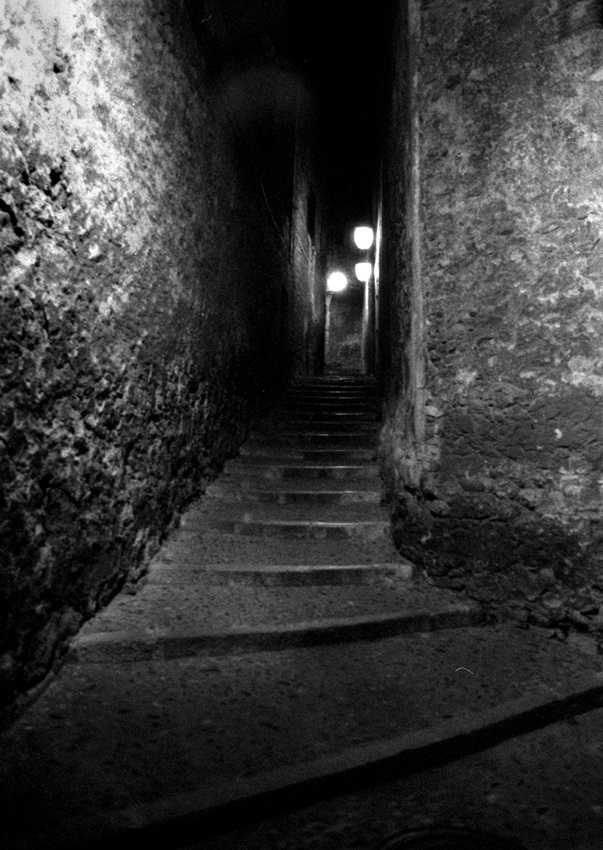
(ABOVE: In Gerona, Spain, the shadowy, gaslamp-lighted Carrer Sant Llorenc, shot with Ilford 3200 ISO film).
While both shoots had as much in common as a bathrobe and a wrench, I enjoyed both immensely because the 3200 ISO film allowed me to shoot totally guerilla. By that I mean unencumbered by strobes and tripods while relying purely on instincts to make best use of available light (even in the case of Sasha’s pre-nuptial hotel room and, later, the lobby, where lighting was anything but friendly).
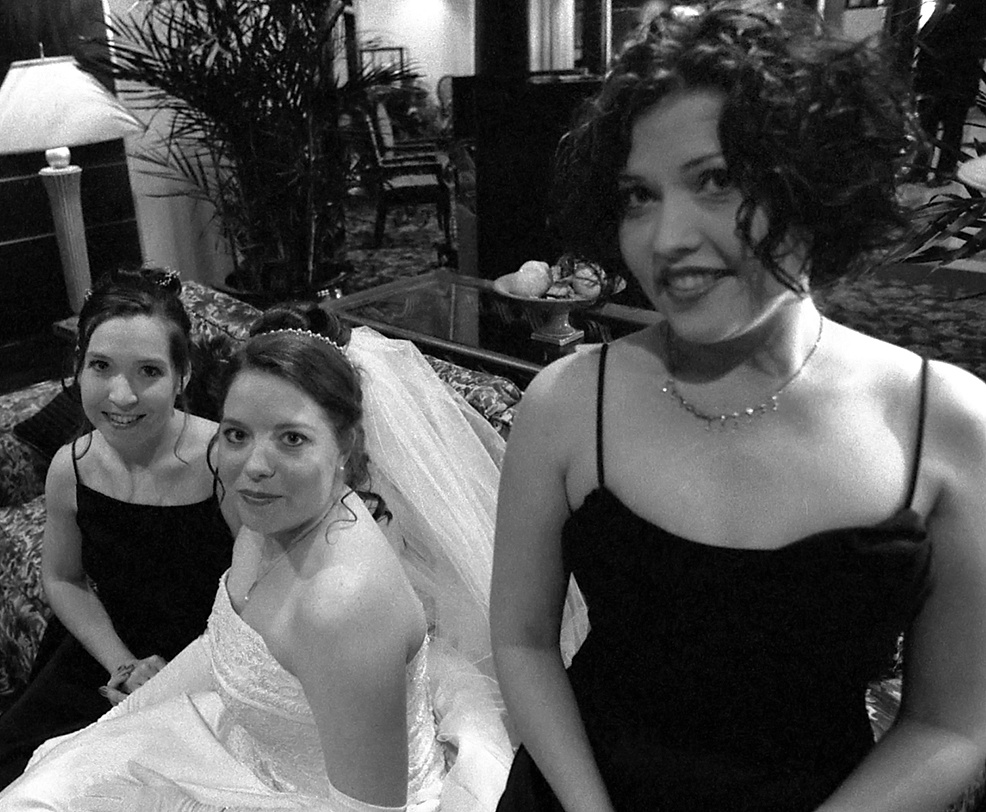
(ABOVE: The Jacob sisters, from left, Claire, Sasha and Marie, shot with Ilford 3200 ISO film.)
Gerona at night, conversely, proved a gaslamp-illuminated dreamscape of painterly canvases just awaiting the photographer’s shutter click. (If I remember correctly I think my shutter never varied from 1/125.)
I still have an old Nikon film camera I keep for those times when I think about popping in a roll of Ilford 3200 and hitting the streets at night to capture the world as I often see it in my dreams. But, truth be told, those times haven’t happened in years since I became a workaday slave to the modern-day digital era. Today the camera lives in the top drawer of my dresser alongside another relic from my past: a replica of the compass once used by Thomas Jefferson that a good friend gave me as a birthday present long ago just in case I ever lost my way.
But not a day goes by …
]]>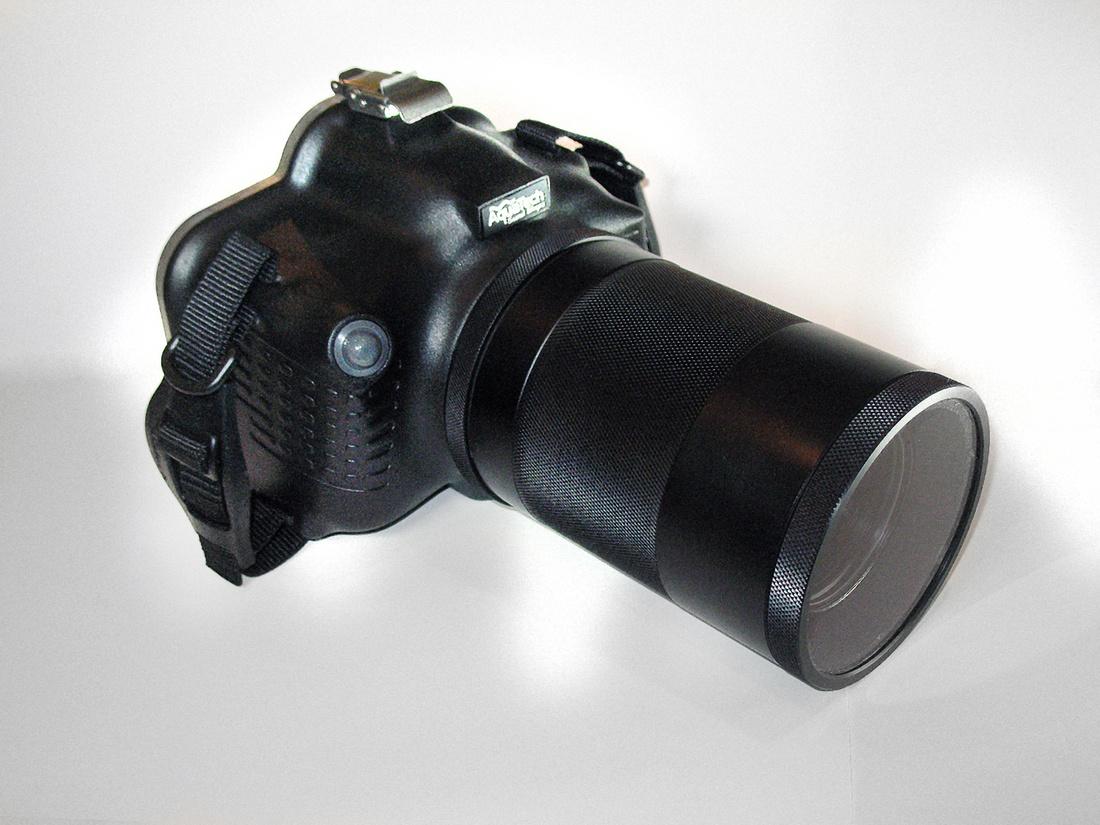 (Sanity advisory: if you’re not a photographer, it’s virtually guaranteed you’ll find the following post on camera blimps mind-numbingly dull. But please read on if you have even the slightest interest in how photographers keep their cameras silent on movie sets and during theater performances. Hey you, yeah YOU, stop snoring!)
(Sanity advisory: if you’re not a photographer, it’s virtually guaranteed you’ll find the following post on camera blimps mind-numbingly dull. But please read on if you have even the slightest interest in how photographers keep their cameras silent on movie sets and during theater performances. Hey you, yeah YOU, stop snoring!)
Ramping up my game plan as a freelance commercial and editorial photographer, following 21 years at The Times-Picayune daily newspaper in New Orleans, recently took an interesting turn when it was suggested I explore movie-stills photography. Providing support was my brother-in-law Jerry Jacob, a hot-shot steadycam and camera operator, who has worked in the television and movie industry for a gazillion years (check out his IMDb portfolio at www.imdb.com/name/nm1545115 if you wish to see his impressive credentials), and his daughter Rachel, a former production assistant who works as an associate producer in Atlanta.
In many ways this was a family affair.
Yet still photography is a highly competitive genre because – guess what? – everybody under the sun apparently wants to be the shooter that works on "glamorous" movie sets snapping images agents and production companies use for publicity, press kits, movie posters, or to document the filmmaking process. I was warned that breaking in would be as easy as baking a soufflé on the streets of midtown Manhattan in rush-hour traffic.
This I was also told by people in the know:
Step 1: Plan on shooting a couple of low- to no-budget indies or MFA graduate-student thesis films, as a volunteer, just to generate content. Doesn’t matter how many years you’ve worked as a photographer or how beautifully you nailed the otherworldly rooftop of Gaudi’s Casa Mila in Barcelona at sunset. No one is going to hire you without experience. And why should they when the number of seasoned still shooters resembles the line of cars at the end of “Field of Dreams”?
Step 2: Make friends and learn to get along with everyone. As a long-time still photographer posted in a blog, “If you p*ss off the assistant director, you’re toast.”
Step 3: Learn how to be “invisible” on the set (wear dark clothes so as to not inadvertantly reflect light) and, most importantly, silent.
To be silent, I learned, required demanded the purchase of a handsomely priced camera blimp, a special foam-insulated housing unit for the camera that deadens the sound each time the shutter clicks, as well as lens tubes, which perform the same job as a blimp but, as the name implies, for your lenses. Without a camera blimp and lens tube, the camera’s shutter clicks and internal autofocus gears of lenses would be audible on the sound track.
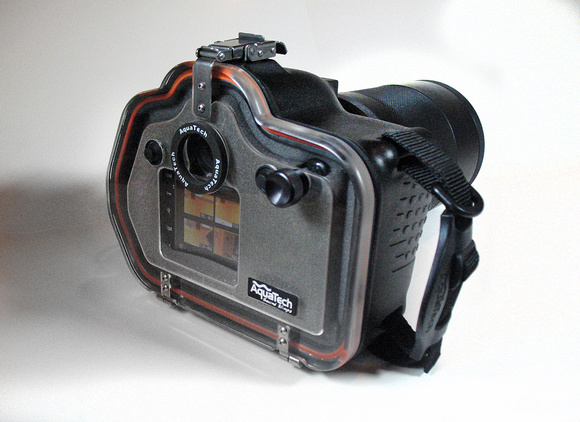
Of the handful of companies worldwide that manufacture camera blimps, I bought mine from the Southern California-based Aquatech (www.aquatech.net). Beforehand I had also researched the handful of other camera blimp manufacturers that exist in the world, including the long-time and well-respected industry leader Jacobson Photographic Instruments (www.soundblimp.com), located in North Hollywood, Calif., newcomers Shutterbubble (http://shutterbubble.com/ShutterBubble/Home.html) and Advanced SoundBlimp (http://www.soundblimp.com.au), both based in Australia, and FatBoy (www.fatboysoundblimp.com/home.html), developed by unit stills photographer Tamas Mack.
Here's how I pared down my choices. Pelican-case camera blimps such as those made by Jacobson and Advanced SoundBlimp were out. If I’m going to be on a set working 10- to 12-hour days, I didn't want to be lugging around a "box." If I did, I would get a job at FedEx. Elsewhere, as much as I liked the price point and relatively ergonomic shape of ShutterBubble, the company's product is (for me, at least) too new and thus still untested by the mainstream photographic community -- plus, I didn't want to send my blimp halfway around the world for repairs or modifications. FatBoy looks well designed, to be sure, but best I can tell from the company's website images there isn't a feature that enables photographers to review images (write me if I'm in error and I'll make appropriate changes).
If Aquatech streaked into the winner's circle, it's primarily because the company's sound blimps are ergonomically designed to resemble a camera, plus they feature exterior controls that enable photographers to view images and control shutter/aperture settings once the camera is secured inside the housing. The design, quite simply, is brilliant.
(For the record, I paid full freight for my camera blimp and lens tube -- $1,000 and $450, respectively -- so this is by no means a quid pro quo endorsement.)
Also, Aquatech’s customer support was nothing short of impressive. Consider: Aquatech has a standard lens tube to fit a Nikon 70-200mm 2.8. But I own a Tamron 70-200mm 2.8 lens – would it fit the Nikon housing? At the request of Aquatech’s Brian Wright, I shipped my Tamron lens to the company and was told if the Tamron lens didn’t fit the Nikon tube, the company would custom-make a tube for the Tamron for -- ready for this? -- the same price as the Nikon tube. Fortunately, myTamron fit the Nikon lens tube with only a minor amount of modifications needed in the interior foam insulation. No extra cost. We like this.
Downsides (for me) include the fact Aquatech's sound blimp (as well as those made by most companies) still rely on a cable shutter release instead of a wireless infrared trigger. Also, I've yet to figure out how to use the thin metal tongue-depressor thingy that can be inserted through the front to depress the button that releases the lens. So far I still have to open the back of the housing and slide the camera halfway out in order to swap lenses.
That said, when the lens tube arrived a week following the camera blimp and I finally had the chance to pair the two for a test drive, I was amazed by both the design ingenuity and, most importantly, the overall quiet of my camera. As a photographer and consumer, I was far beyond satisfied.
So how did a company, founded in 1997, which earned its street cred creating a globally respected line of sport and underwater camera housings, come to challenge the status quo of camera blimp designs? All I can tell you is Aquatech, to paraphrase Ralph Waldo Emerson, built a better mousetrap and hopefully the world will beat a path to its door.
It's a wrap.
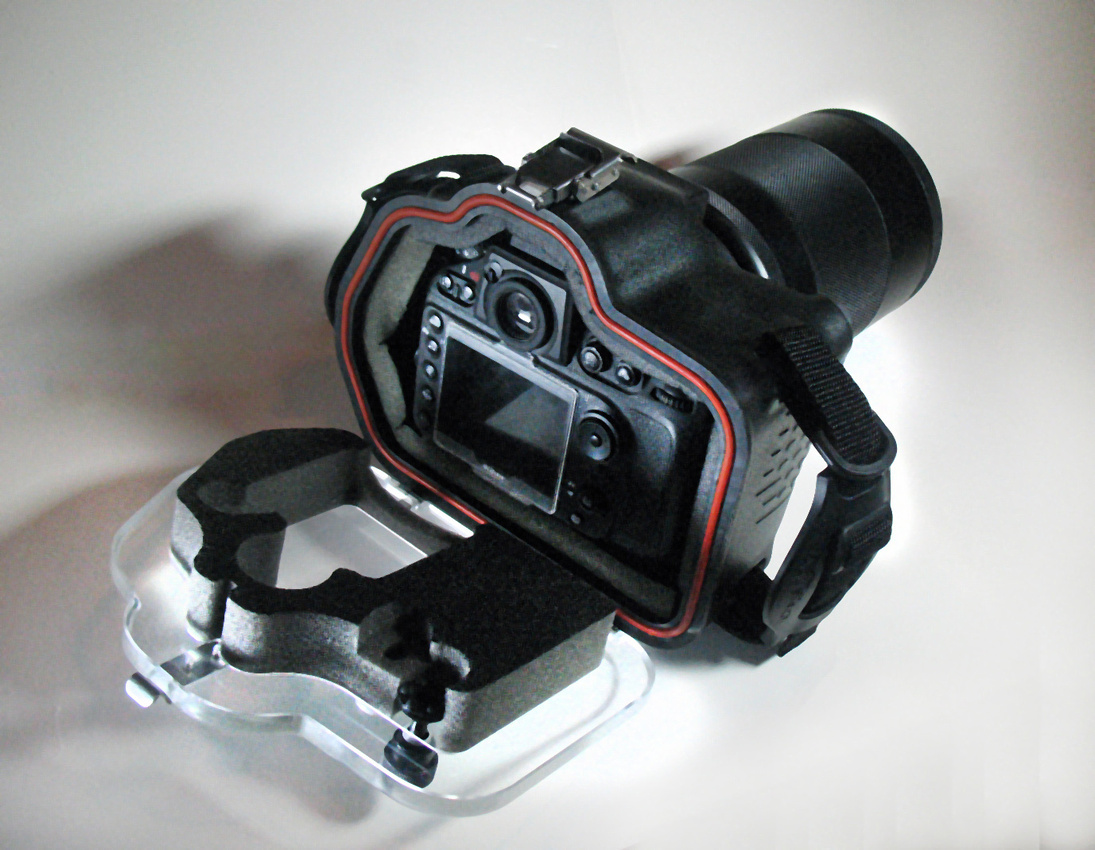
]]>
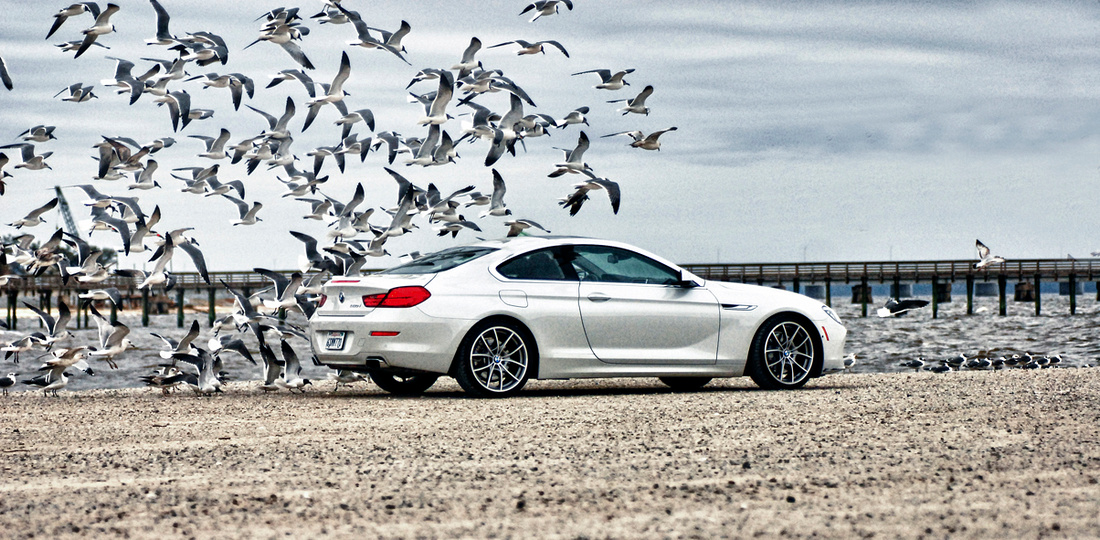
My pre-flight checklists for automotive photo shoots are insanely predictble: Bodies and lenses, check. Strobes, wireless triggers, tripods, umbrellas and light modifiers, check. Ringflash, check. Extra batteries, etc., check. But on one occasion it dawned on me later that I should have packed a loaf of bread.
First, some backstory. Nearly three years ago my bosses at The Times-Picayune (which I left in September) asked me to write car reviews for the-then daily newspaper's Friday Automotive section. Each week I got to drive brand-new vehicles, including some of the world’s most expensive luxury and sports cars from Jaguar, Range Rover, Audi, BMW, Porsche, Mercedes-Benz, et.al, plus heavy-metal-thunder muscle cars in the form of Corvettes, Vipers and Camaros.
The gig could have been worse.
As a journalist I had little problem lending my wiseguy and slightly gonzo, first-person experiential style of writing to my new beat. I simply put the reader in the passenger seat and took them along with me on sometimes wild, occasionally offbeat but largely interesting adventures. Whether careening across treacherous swamps or cruising through sexy urban nightscapes, screeching around race tracks or dishing out celebrity gossip during a tongue-in-cheek road trip to the Kentwood, La., hometown of Britney Spears, my readers always rode shotgun. And they never once asked to make a pit stop.
However, as a photographer, I decided from the get-go not to rely on generic and typically bland stock car images from automakers' websites for my Friday car page. My reason was simple: Keep it local. I knew readers would better connect with an image of, say, a Jeep Wrangler traversing downtown New Orleans or an instantly identifiable bayou of southeast Louisiana as opposed to the Rocky Mountains or a Nevada desert.
But with this also came a new set of demands. Automotive photography is a unique beast. Capturing the essence, personality and bodylines of a car may look easy, but truth be told it requires the eye of a movie location scout (without the right environment/background, you might as well pack it up and go home), keen off-camera lighting instincts, model-photography composition savvy, plus the overall photojournalist skills to turn a hunk of metal into an eye-catching, storytelling narrative in a single bound. And you do this not once but 52 times a year.
The pressure is always on, bucko.
No more so than the afternoon I took a BMW 650i coupe to the Mississippi Gulf Coast without so much as a clue as to where I would ultimately do the shoot. When I pulled into the gravel parking lot of a newly constructed pier in Bay St. Louis, Miss., and saw swarms of seagulls hovering overhead, I immediately knew that (1) this was the spot, and (2) I wanted the birds in the shot (the good news was I wouldn't need model releases). In most cases the cloudy gray-cast skies and warm tones of the foreground sand might have posed a problem considering the car was eggshell white -- the image ran the risk of winding up too monochromatic and too midtone-ish. But I had a hunch the seagulls might save the day if I could catch them in flight while hitting them with a quartet of speedlights at raw power with no diffusion.
But how would I draw the avians closer -- as in really close -- to the car? I doubled back to a local convenience store to purchase a simple remedy: a loaf of bread. Back at the pier, I instructed my wife to drive the Bimmer slowly along the gravel parking lot with the driver’s-side window down, tossing out pieces of bread until the birds began following her and the car. In the first shots it looked like a bone-chilling scene from "The Birds": the seagulls looked menancing if not downright frightful as they literally dive-bombed the car (and, it turned out, my wife's hand and arm). Not good.
It took a few laps around the parking lot before my strategy appeared to pay off in spades. From a short distance away, where I had fixed my bank of strobes, I finally snapped the shot (using a 70-200mm 2.8 lens) that we eventually wound up using on the automotive page. (Story headline: FLIGHT OF FANCY: BMW's twin-turbo 650i coupe swoops into our hearts)

On another occasion when I was test driving a Jeep Grand Cherokee, I got the crazy idea of shooting this luxuriously outfitted, safari-capable off-roader amid wild animals.
“How about Bourbon Street on a Saturday night,” a New Orleans friend suggested.
Instead, I called my friends at the Global Wildlife Center (www.globalwildlife.com) in Folsom, La., and asked them what I thought might be something out of the question: to shoot the Grand Cherokee in an open field surrounded by a herd of giraffes. To my surprise and delight the good people at the non-profit Global Wildlife Center said come on down.
I rode in an open-air, safari-like chaser truck behind a staffer who was driving the Grand Cherokee, as she positioned the vehicle in a wide swatch of field. Since we had coordinated the shoot to occur during feeding time, the driver held a bucket of dried corn outside the window (not visible to the camera) to lure the quartet of giraffes (that included a baby giraffe and the Global Wildlife Center's newest "arrival"). Shooting the giraffes in mid-day light under flat skies might have seemed a recipe for failure had I not packed an Interfit triple flash bracket (http://www.adorama.com/PAINT337.html) with an equal number of strobes that I had affixed with a Manfrotto Justin clamp to the side of my chaser vehicle. Since I was working without an assistant and there would be little time to futz with light settings once we started shooting, I simply set my bank of strobes for 1/1 manual mode (checking my captures every so often to make certain the illumination wasn't too hot).
Over the weekend when my 8-year-old nephew and godchild Tyler was looking over my shoulder when I was writing this post, he asked, "Are those real giraffes?"
Funny but that's precisely the same question my editor asked me.

Story headline: TALL ORDER: Grand Cherokee's new STR8 goes up against the big boys. (Click here to read the full story: http://blog.nola.com/auto_reviews/2011/09/tall_order_grand_cherokees_new.html).
]]>
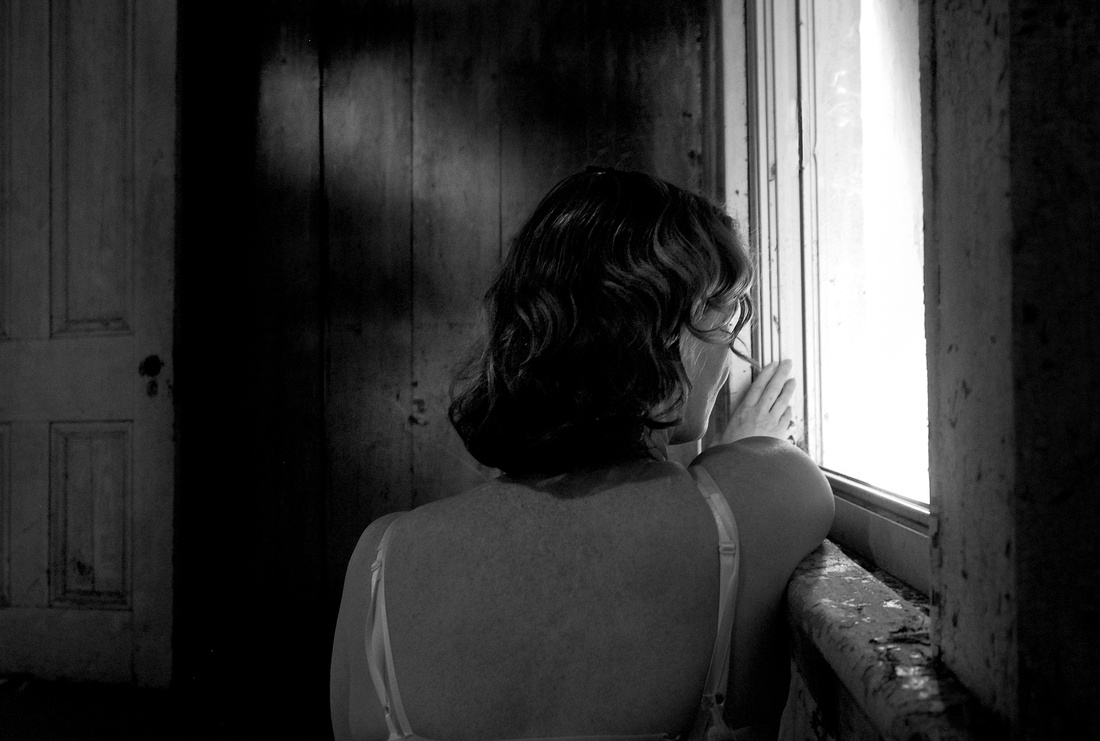 A few years ago the since-shuttered New Orleans Darkroom held a call for entries for a professionally juried, themed exhibit titled “Peek – The Lingerie Show.” I was interested, to be sure, not the least of which was because the juror was internationally renowned photographer Debbie Fleming Caffery, whose breathtakingly evocative, ethereal images of Acadiana sugarcane fields in Louisiana have been exhibited across the world from the Smithsonian Institute in Washington, D.C., to the Photo Gallery International in Tokyo, Japan.
A few years ago the since-shuttered New Orleans Darkroom held a call for entries for a professionally juried, themed exhibit titled “Peek – The Lingerie Show.” I was interested, to be sure, not the least of which was because the juror was internationally renowned photographer Debbie Fleming Caffery, whose breathtakingly evocative, ethereal images of Acadiana sugarcane fields in Louisiana have been exhibited across the world from the Smithsonian Institute in Washington, D.C., to the Photo Gallery International in Tokyo, Japan.
The prospect of having one’s work judged by a photographer of this calibre is a double-edge sword. A rejection kicks your ego to the curb and affirms the little tape that plays in your head (well, at least mine) that says you're not good enough, not smart enough – simply not enough. But if the flip-side of the coin wins the day, you get to have your work appear in a professionally curated exhibit alongside hifalutin national and international photographers. You fist-bump everyone within arm's reach till the suns comes up.
But the deadline for submissions (each entrant was allowed to submit five images) was looming, plus I had no model and no venue for the photo shoot much less a concept.
It was while driving through a patch of rural Louisiana one Saturday afternoon that I began noticing the wonderfully dilapidated, abandoned homes by the roadside – the stuff shooters searching for “atmosphere” dream about on their day off. On several occasions I stopped the car to peek inside a few of the buildings even though they were tucked on private property.
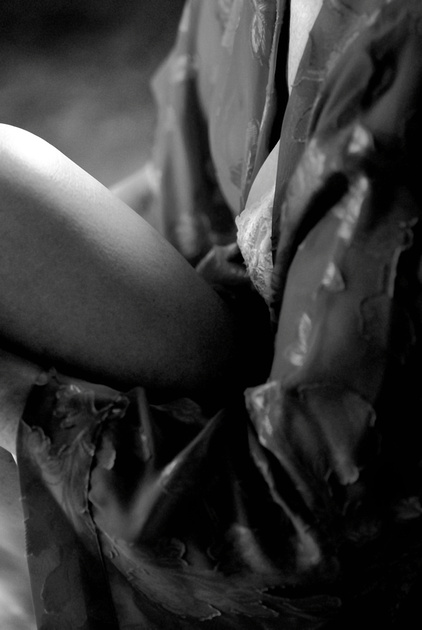
That's when the idea hit me (and it’s not an entirely novel one, I’ll grant you): a woman attired in distressed, second-hand lingerie set amid the shadowy decay and patina-rich environs of an abandoned wooden house. Sort of “Cat on a Hot Tin Roof” meets rural Southern poverty. Fine, but where do I find my model much less such a suitable structure at this 11th hour?
When I mentioned the concept to my long-time dear friend Judy Appel, she immediately volunteered to model for the shoot and to hit the local Goodwill store with me to search for just the right kind of “distressed” lingerie I had in mind.
But what of the venue? I couldn’t simply set up a shoot in someone’s abandoned house much less run the risk of rats and poisonous spiders (not to mention the local sheriff) potentially setting upon both model and photographer.
That is when I remembered my good friend Bill Hyland, an 11th-generation Louisianian and historian who is also executive director of Los Isleños Museum Complex (www.losislenos.org), located in lower St. Bernard Parish about 45 minutes from New Orleans. The museum preserves and promotes the culture of the original Spanish settlers in Louisiana (who began arriving from the Canary Islands, hence the term “Isleños,” in the mid-1700s), as well as their modern-day descendants.
Equally important, this not-to-be-missed museum is home to historic and architecturally significant Isleños homes and structures relocated to the grounds during the past quarter century. While most have been painstakingly restored to reflect how they might have looked back in the day, there is one building (my personal favorite) that remains thus far thankfully unrefurbished. And, yes, it is “patina rich and full of shadowy decay.”
I rang up Bill to ask his permission to use the house for the photo shoot, explaining the "lingerie" theme of the exhibit.
"Just so long as you won’t be shooting anything pornographic,” Bill said matter of factly.
Besides being a brilliant attorney and adroit storyteller, my "Isleño godfather" (more on this and Bill in a future blog) has devoted his life to being both a steward and guardian of southeast Louisiana's rich Spanish heritage.
I assured him the photo shoot would be strictly G-rated.

As much as I was inclined to rig a phalanx of off-camera strobes for the shoot, I discovered after a little experimentation and a lot of trial and error that there was simply no improving upon the atmospheric natural light the old house offered (although I know this smacks of blasphemy to strobists everywhere). As addicted as I have become to off-camera lighting, this was one instance in which illumination au naturel worked best. The simplicity and naturalness of the poses are testament to how well Judy and I worked together (our first time).
Of the images I submitted to be juried for the exhibit, the following is the one accepted for “Peek – The Lingerie Show." What I like best about this photograph is how the backlit lingerie creates an alluring silhouette of Judy's leg while light pushing through a crack in the wall planks helps illuminate the far-right corner of the floor. The natural patina of the wood is a photographer's dream.
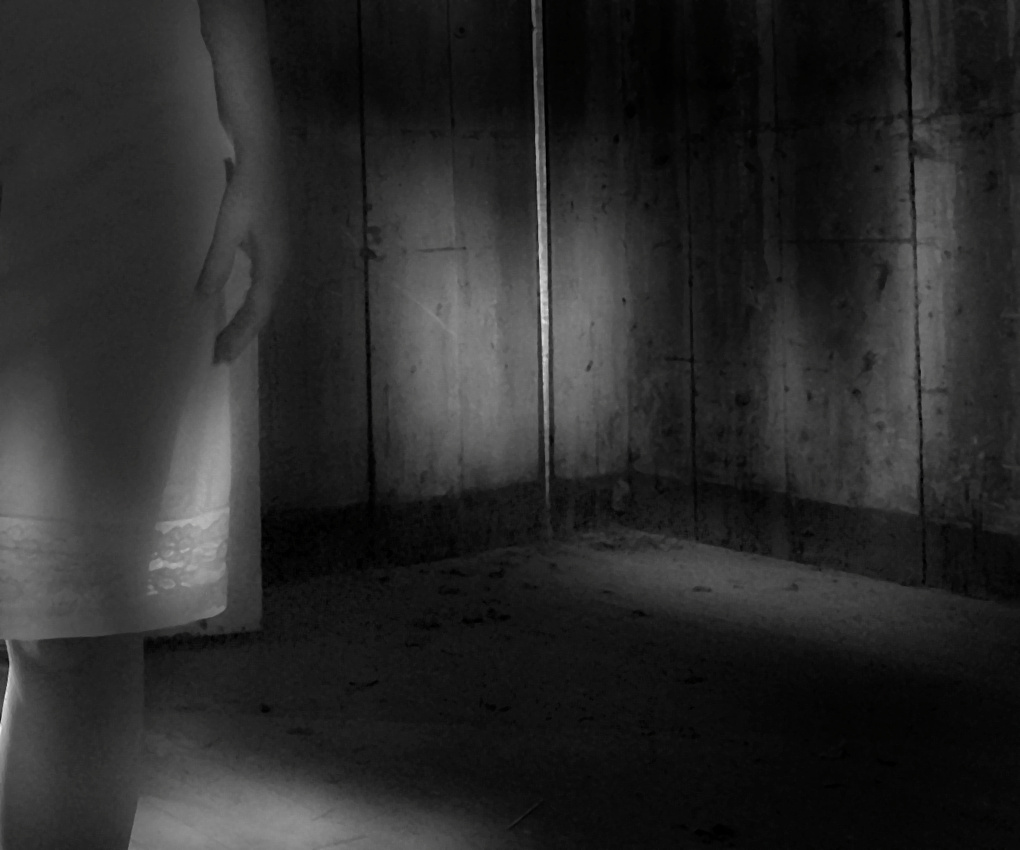
Yes, I told her.
“I think you can quit your day job,” she said softly.
I think I felt my feet levitate in a David Blaine sort of way.
Yet without a little help from my friends, Judy Appel and Bill Hyland (and, of course, Los Isleños Museum Complex), the shoot and success I enjoyed from having one of my photographs selected for this exhibit never would have been possible. To both of them I owe a debt of gratitude.
And, of course, a fist-bump. Or something like that.
]]>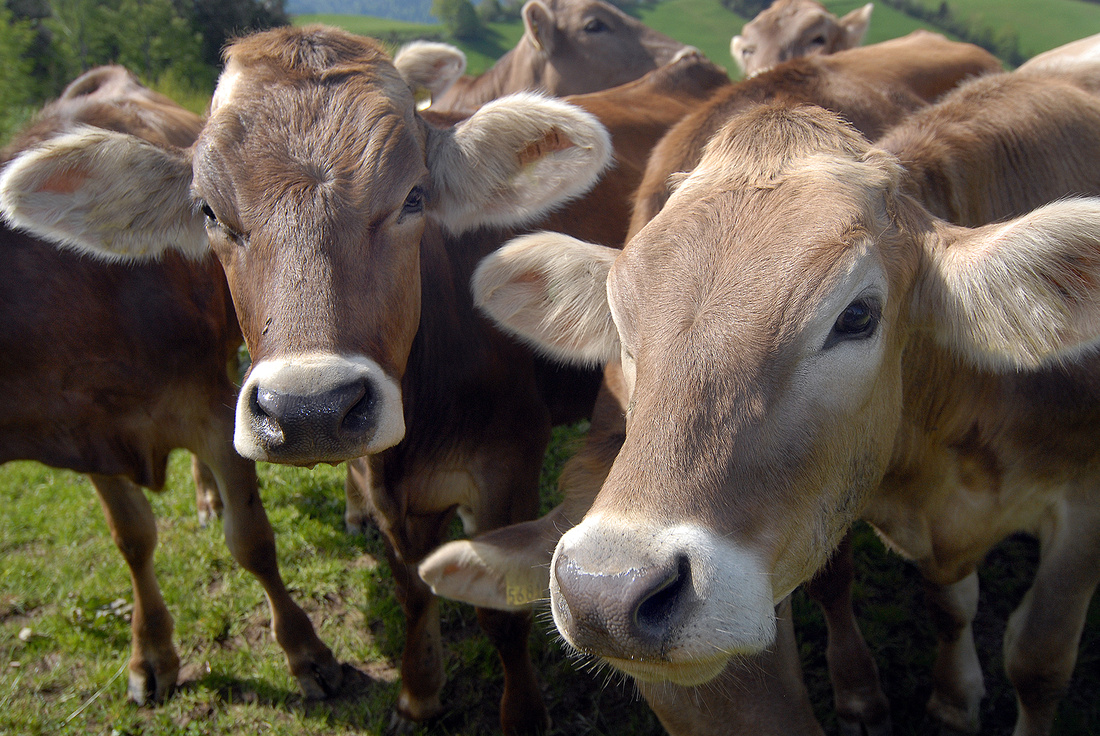
Whatever you do, please don't go "Aw-wwww" in response to the above photograph. Read on and you'll understand.
Despite a quarter-century spent traveling around the world on various freelance assignments, I have never learned to pack properly for the occasion. Most seasoned travelers – even tourists -- understand that a good pair of sneakers or running shoes is the all-purpose footwear of choice and is acceptable in most venues even after-six (save, of course, for the symphony and Michelin-star restaurants). But not me. I insist on wearing loafers partly out of habit but also because, quite frankly, I find them more comfortable during long days spent in the field when press itineraries can seem intent on running journalists ragged.
But I never knew my miscalculated couture might serve me well as it did a few years back when I was in Switzerland on a press trip with a group of travel writers soaking up the culture of cities like Fribourg and Lucerne. Our literary coterie was led on a walkabout through the Swiss Alps biosphere preserve of Entlebuch not far from Lucerne. The spectacularly beautiful scenery wasn’t merely out of a postcard as it was straight from a movie – the 1937 Shirley Temple film, “Heidi,” to be precise. (This despite the fact the Alpine scenes for “Heidi” were shot in Lake Arrowhead, Calif. – sigh, that’s Hollywood for you )
Yet for most first-time American visitors to this country, setting foot in the Swiss Alps awakens the memories stored in our consciousness from all of the depictions (both real and Tinseltown-made) collected over the years of this gloriously idyllic and mercilessly photogenic landscape. During my trek, for instance, I walked among vast, rolling fields of knee-high green grass dotted by yellow Alpine daisies, occasionally framed by a red wooden farmhouse, the soaring majestic peaks in the distance pushing against a cloudless blue sky. Switzerland, to be sure, offers its own sort of heaven.
And, of course, there were the ubiquitous Swiss cows that comprise one of this country’s famous four Cs (the others being chocolate, clocks and cheese). In some ways photographing cows with a wide-angle lens in a no-brainer – yes, they’re going to look cute (especially when wearing their famous Swiss cowbells) and, yes, you’re going to get a bunch on them squeezed into frame. Truth be told, you could accidentally drop your camera on the ground and still get a shot that would make people go “Aw-wwww.” But when people do that in response to one of my animal photographs, I begin to feel like a pet photographer at the mall. (Disclaimer: Pet photography is in my estimation a wonderful genre of the craft that elevates the artistry of capturing poodles in oversized sunglasses and flowery hats set against faux Cape Cod backgrounds.)

After knocking off a few ordinary tourista shots, I wondered if there was a way to make the cows look slightly less damn cute. But nothing seemed to work. Suddenly my loafers hit a patch of wet grass and – whoosh! – my legs went up from under me and I landed flat on my back, virtually underneath my photo subjects. I tried unsuccessfully to dig my heels into the slippery grass and inchworm my way to safety.
But that was also the precise moment I saw my subjects from a (literally) new angle and in an entirely new light. No longer adorable, they now looked like menacing beasts, looming and hovering only inches away from me, regarding me as the geeky suburbanite who had dared to venture too far inside their Alpine turf. I grabbed my camera and began shooting like mad. At last I had found the perfect angle from which to reveal the dark and sinister truth about this country's loveable bovines: Switzerland's cows are pure gangsta (see below).
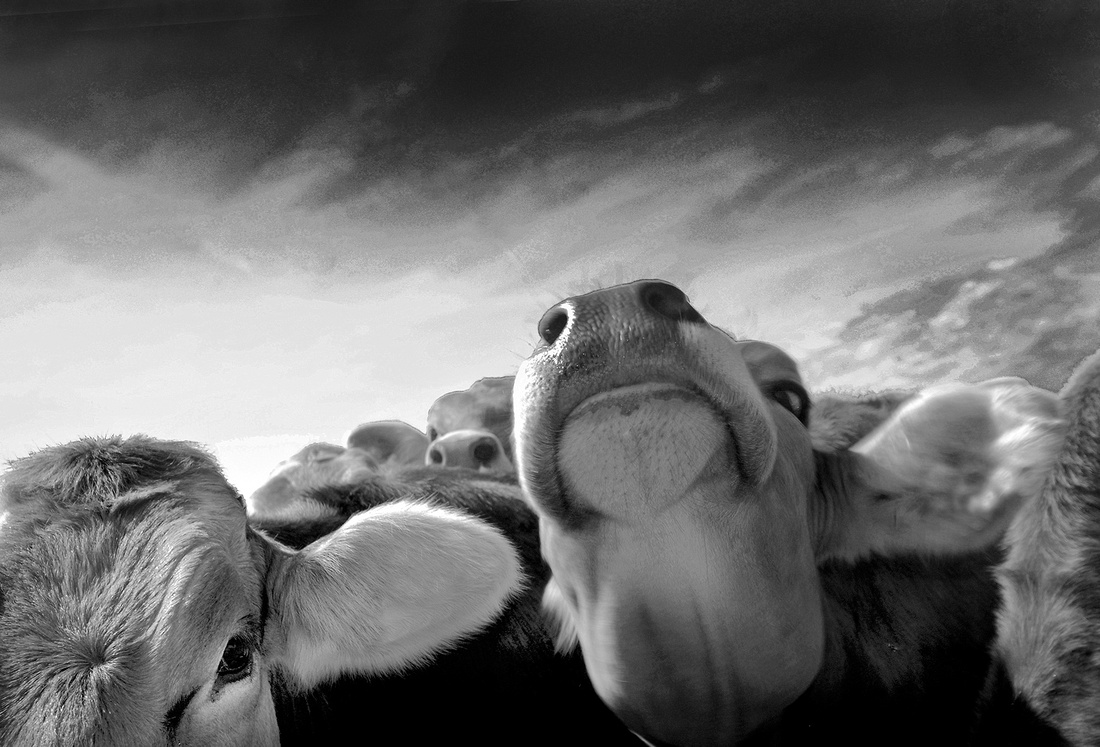
Say what you will but I’ll never stop wearing loafers when I travel. As I've learned during my haphazard journeys, occasionally the worst fashion missteps can yield the most unexpected (and rewarding) photographs.
]]>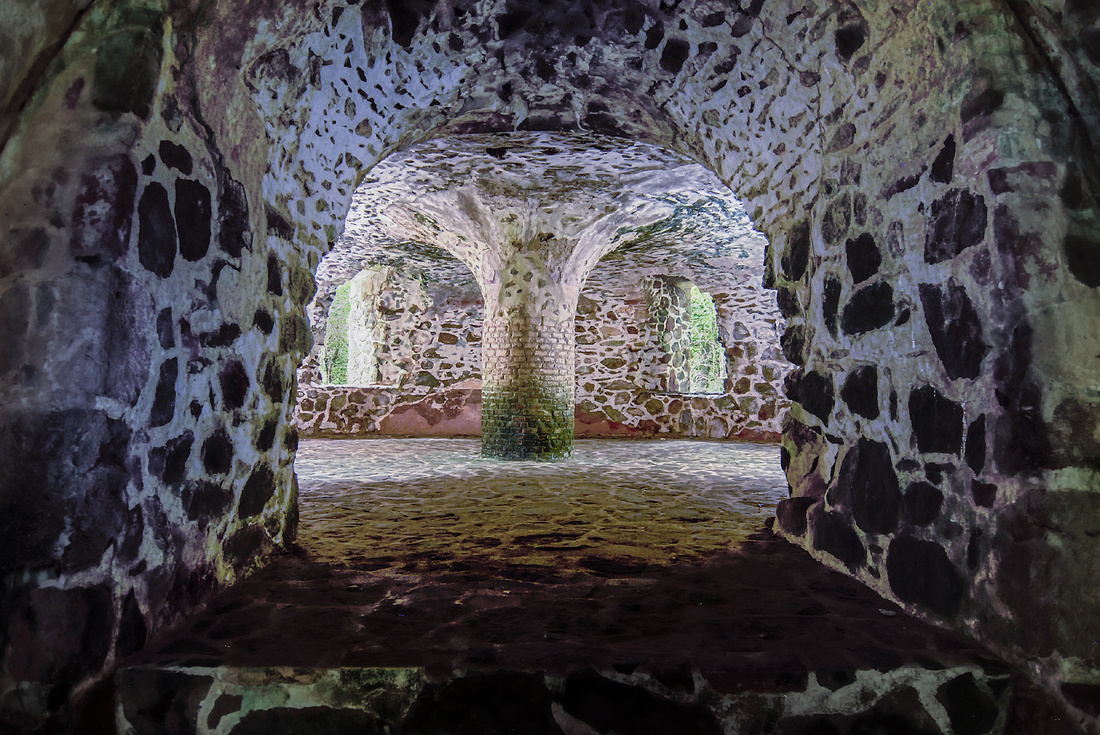
We pulled our Jeep Wrangler up to the ruins of the 18th-century Danish sugar mill and the first thing that caught my eye wasn’t the towering remains of the windmill but rather the total absence of other tourists. As a long-time travel photojournalist whose assignments have flung me to some far corners, I probably appreciate better than some the value of a historic site like Catherineberg, located on the Caribbean island of St. John, when there are no visitors walking in frame and blocking my shot. Much of this no doubt has to do with the fact that to reach Catherineberg, protected as part of the U.S. Virgin Islands National Park, requires off-roading in a vehicle with 4x4 capabilities.
What next caught my eye was the underground storage vault. Although the space boasted a pair of ground-level windows, overcast skies that morning were letting little light into the darkened, cavernous vault. It made me glad I had packed prepared for such a photo op. Tramping around the globe for 25 years has taught me a thing or two about how to cram a maximum amount of camera gear into a modest-sized knapsack -- this because I never know if the assignment is going to spring on me, say, an unanticipated food shoot or a rambunctious presidential election night on the rum-drenched streets of Santo Domingo.
Or, in this case, the storage vault of an old sugar mill.
But packing as light as possible is also imperative when you’re out in the field for 12 to 16 hours at a stretch or schleping your bag up a daunting Alpine footpath just to get a shot of the Swiss valley below.
Besides my camera bodies and lenses, a couple of diffusers plus polarizing and neutral-density filters, I always carry at least three Speedlights with me at all times for off-camera strobe set-ups. Most of the time they’re old Nikon Speedlight SB-24s, -26s and -28s. Why? They’re relatively cheap, so if I break one during my travels (as I’ve been known to do), I’m not out the cost of a far more expensive SB-800 or -900. I also pack a Justin clamp or two plus a couple of cold-shoe stands just for good measure.
Since I’m traveling with older Speedlights, many of which won’t slave off each other, I trigger them with equally inexpensive poverty wizards. My pov-wizs of choice are Yongnuo 2.4GHz wireless flash triggers – a set of four receivers and one transmitter will set you back about $90. They’re much smaller and lighter than Pocket Wizards (not to mention far less expensive) and can be easily tucked into my bag's leftover nooks and crannies. (No, you can’t shoot TTL with them, but I don’t mind dealing with the extra manual futzing/adjustments.)
To light the interior of the storage vault, I set two Speedlights on plastic stands on the floor of either side of the interior, angled at 45 degrees so the light would wrap up and around the stone ceiling and create a generally diffuse light pattern. Here’s a close-up raw image of what the vault looked like with the two firing flashes visible:
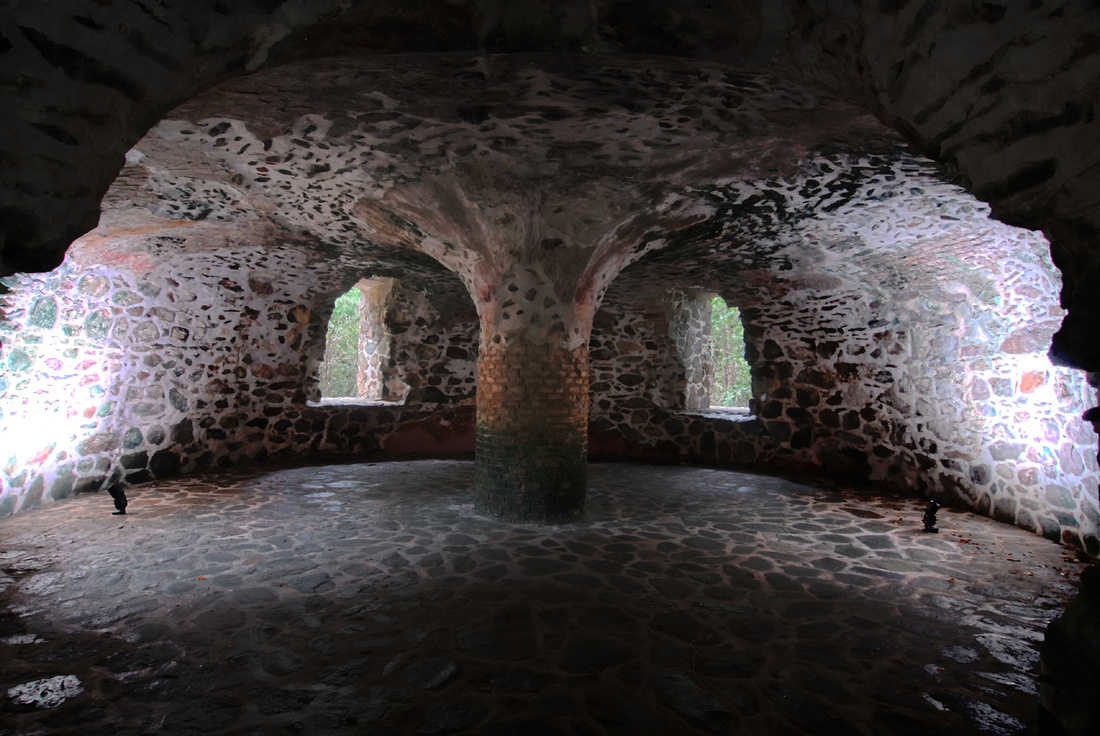
Since the back wall was still too dark, I added a third strobe (with diffuser) on the ground (also angled at 45 degrees) behind the main column. Then I cranked up the other two Speedlights to manual ½ power to create more of a musculature light flow over the stone ceiling and support column, which in turn reflected back onto the floor (talk about great reflected-reflected light!). With illumination pretty much as I wanted, I ducked into the stepped, stone tunnel leading to the vault to compose my shot. I wasn’t interested in capturing the entire vault but rather the windows and main support column, plus a portion of the tunnel. Here’s what the finished shot looked like:

But for most travel photojournalists, there isn’t a next time. We have to nail it best we can while we're there and let the Monday-morning armchair nitpickers and GOHs (grumpy old hobbyists) have their say after the fact. Just so long as one of them isn’t my editor, it’s been a good day.
]]>
Wish I could say people have told me I'm crazy and wonder why I don't settle for, say, a cush desk job as a public information officer at some well-financed public institution, or perhaps a semi-regular gig as a pet photographer (who doesn't adore poodles in sunglasses and goofy hats set against faux Cape Cod backgrounds?).
But they haven't. Instead, friends, family and colleagues have greeted this unexpected transition as an opportunity to unshackle myself from my wage-slave golden handcuffs and finally set my sights on more creative and brighter horizons.
Oh, ye of great tremendous faith (and, by the way, thank you, one and all).
Best I can tell at this juncture I'm going to shape my blog with a mix of regular assignments (deconstructing the shoot as is common in the photoblogosphere) and images accompanied by storytelling from nearly three decades (and still counting) spent tramping around the globe as a freelance travel photojournalist.
People seem to like the stories behind these images. Time will tell.
After a little hand wringing I decided my first blog should tell the story of one of my favorite images, in black and white, titled "Eye of the Storm" (for the record I don't as a rule title photographs), snapped a week or so after my wife Cathy and I evacuated our New Orleans home the day before Hurricane Katrina hit our beloved city. For six weeks we lived in a 30-foot trailer parked in the driveway of the house where my wife's niece Claire and her family reside in the small, heart-of-Cajun-Country town of Opelousas, La. (FYI: Opelousas is home to the best cracklins and spicy deep-fried boudin balls in the world, if you ask me, thanks to Billy-Ray's Boudin on Short Vine Street.) Claire's wonderful family includes husband Larry and their three children Jacob, Laurel and Tyler James (our godchild). Cathy's oldest brother Francis and his wife Sandie lived right across the street.
Chances are you’ve never met my Louisiana family but perhaps you’ve met people like them – loving and kind, generous and selfless to a fault, hysterically funny and great cooks to boot.
We were lucky and counted our blessings nearly on the hour. Most Hurricane Katrina evacuees did not enjoy the luxury of living in a travel trailer, home-cooked meals and family members to hold them when they wept.
Not knowing whether we had a home, jobs or even a city to return to in those early post-hurricane days, I took to carrying my camera with me nearly everywhere I went, “clinging to what you know and comforts you,” my therapist of yore once told me.
He was right.
One morning when stepping outside our Cherokee trailer, I spied our young niece Laurel a few feet away watching television in the family living room. When she heard me rustling around outside, she turned around on the couch, leaned forward and pressed her finger through a torn hole in the window screen. Without thinking, I grabbed my trusty Nikon and snapped the shot.
It wasn't until later when I was post-processing the image that the haunting nature of the photograph when viewed in the context of our circumstances revealed itself to me. Young Laurel's diminuitive finger widening a hole in the screen, her innocent and expressive eye gazing at me, seemed a fitting metaphor for a child-like Mother Nature and her unpredictable disposition and equally unpredictable, don't-take-it-personally fury that can visit us at any moment.
Eye of the storm, if you will.
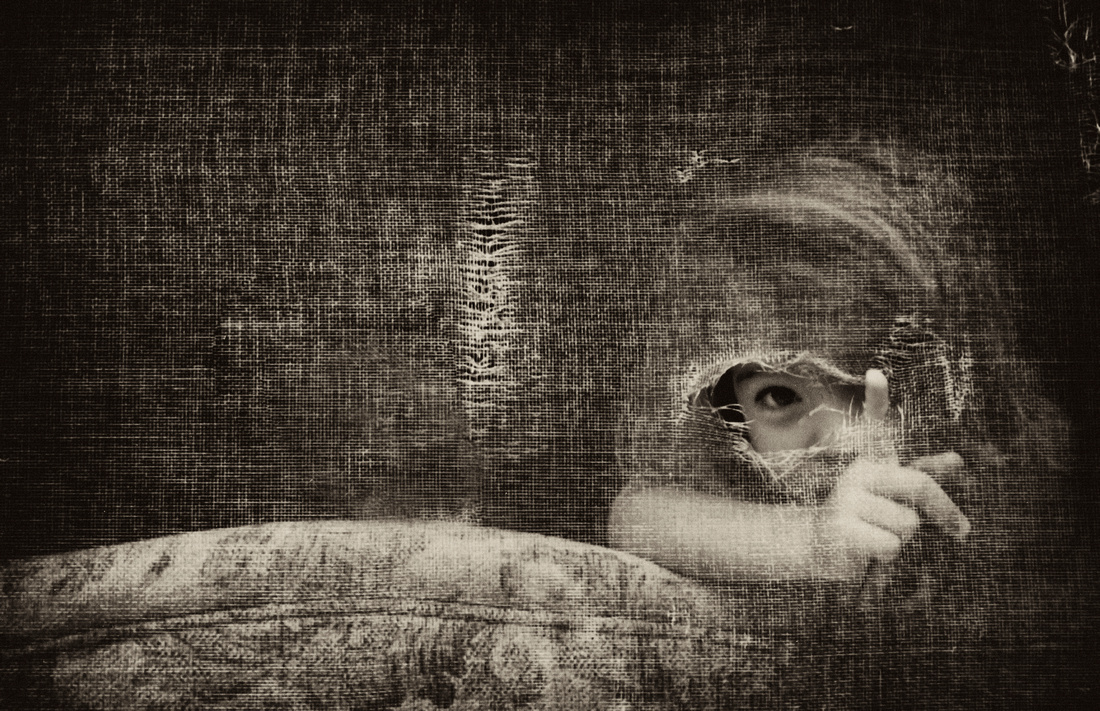
]]>